Alphabet
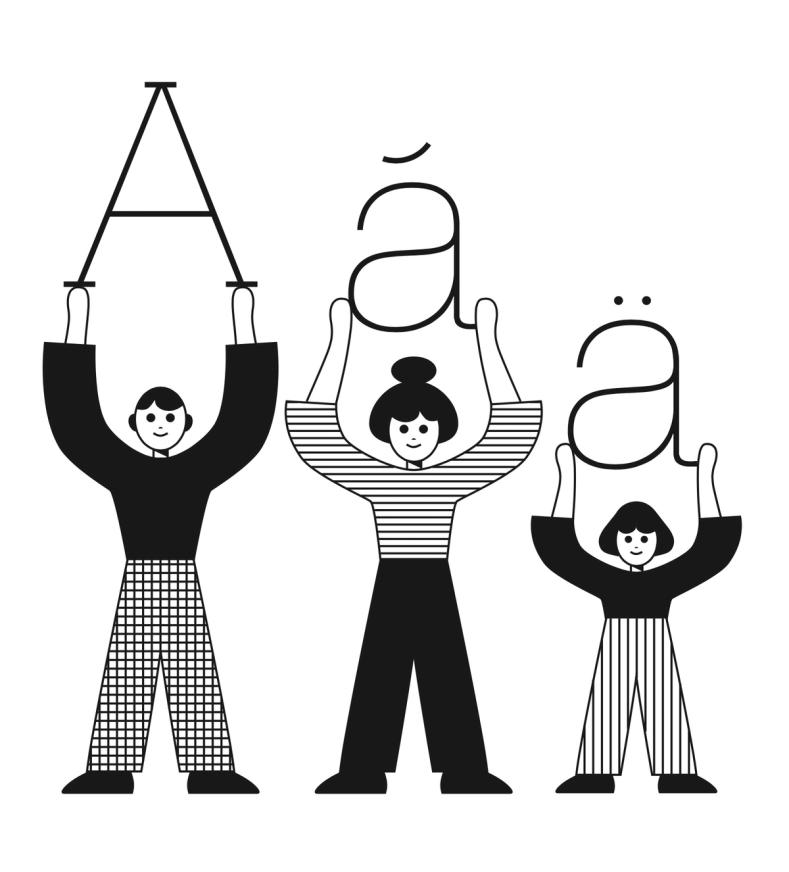
Illustration: James Graham .
(Read More)An alphabet is a type of writing system that uses a set of letters to represent a language visually. Each letter represents a different sound, and when combined together following a certain order specific to each language, they form syllables, words, and sentences.
Across the world and throughout history, many languages have used alphabetical systems (Greek, Arabic, Hebrew, etc.). As of today, the Latin script is being used for the largest number of languages, with many different sets of alphabets, varying in number of letters depending on the needs of the language (i.e., both English and Spanish use the Latin script, but they have different alphabets).
Alternate
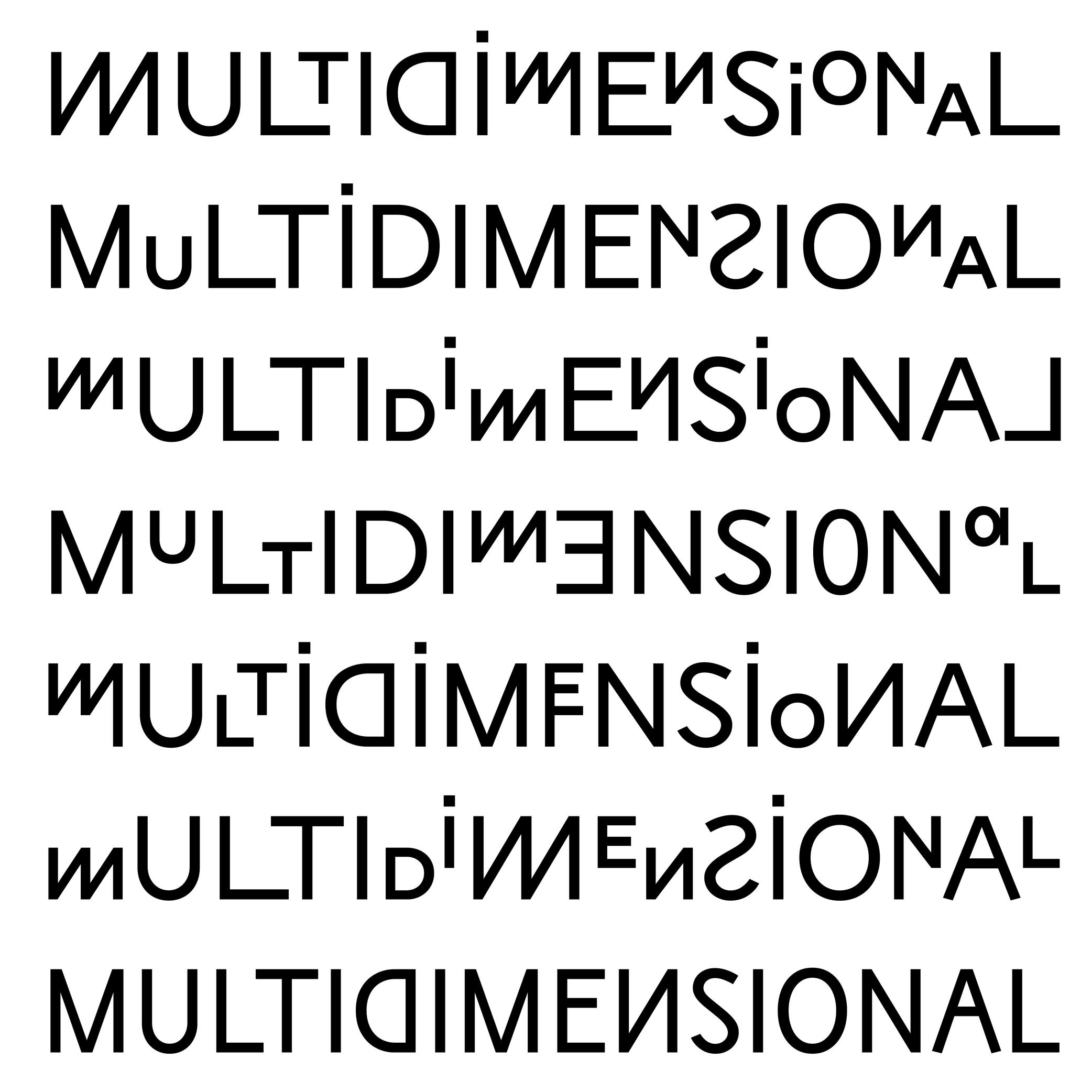 (Read More)
(Read More)An alternate is a variant shape of a character, which has to be considered as a glyph of its own.
Alternate glyphs are created for various reasons:
• contextual: such as case-sensitive punctuations, where punctuation symbols can be aligned in a nicer way with capital letters when set within them, or tabular figures if they are used in numeric tables;
• positional: in Arabic or other scripts that have connected characters, a character may need to have different shapes depending on its position in a word (initial, medial, final, isolated);
• stylistic: such as single-story or double-story letters a or g. These alternates can also reflect a specific aesthetic choice (e.g., with or without swashes).
• localization: some languages using a same script as others require a different form of the same character as localized preference variant.In digital fonts, these variants are accessed through OpenType features. Each one is tagged with a specific code (added as an extension to a glyph’s name) that enables a software to apply them whenever needed. Some most used ones being listed below:
• .calt: contextual alternates;
• .case: case-sensitive forms
• .ss01, .ss02, etc.: stylistic sets;
• .locl: localized forms;
• .onum: oldstyle figures;
• .tnum: tabular figuresAmpersand
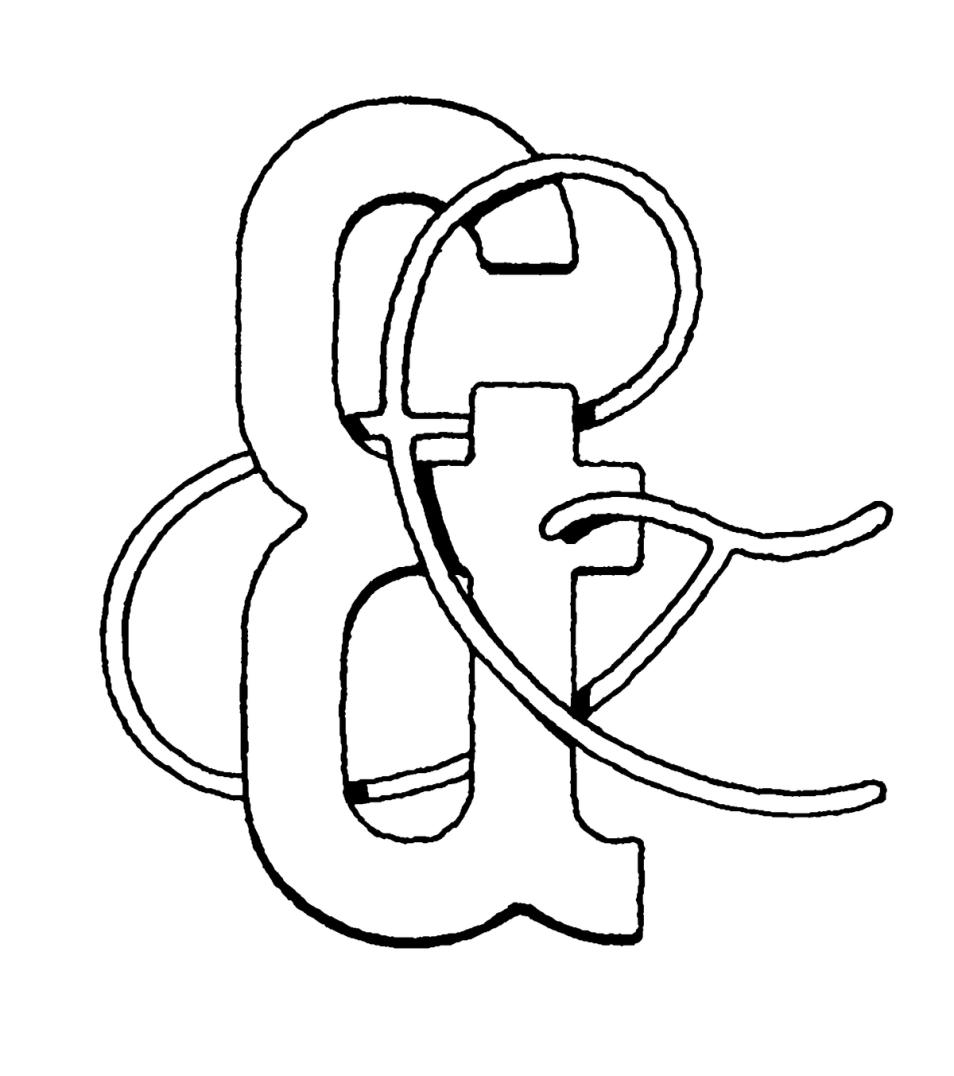
Illustration: Tezzo Suzuki .
(Read More)FUNCTION
The ampersand (&) is a character used in titles, company, or brand names with combined words to replace “and.”
HISTORY
During the Middle Ages in Europe, books were mainly produced to distribute religious texts. For that reason, most texts were written in Latin, even after Gutenberg’s invention of metal-type printing in 1450. The letters e and t (for “et” meaning and in Latin) were used so often that punch-cutters combined the letters to create a single character et, first as a ligature and later as a character on its own.
DESIGN
The ampersand has many design possibilities. The & as we know today is only one out of many designs that have been created, experimented, and used since the introduction of the combination of the letters e and t of metal-type printing. Its top is often aligned with the uppercase and/or figures to give it enough space to be legible.
TYPOGRAPHIC RULES
The ampersand is mostly used as a decorative addition in titles or brands to represent the word “and” (or equivalent in other languages). It is better to use the word “and” in body-size texts.
Anatomy
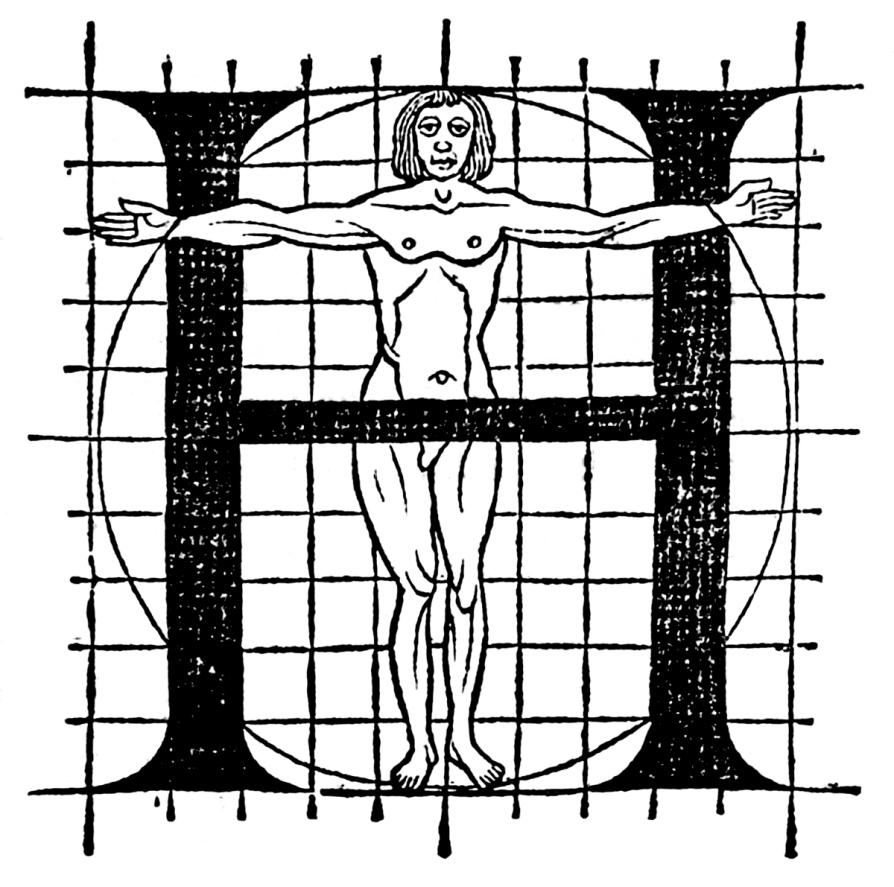
Illustration: Le Champ Fleury, Geoffroy Tory, 1529. Source: Bibliothèque nationale de France .
(Read More)To name and describe parts of letters and other characters, many terms are borrowed from architecture (e.g., arch of an n) or from human and animal anatomy (e.g. leg of an R), which is why we speak of “type design anatomy.”
Anchor
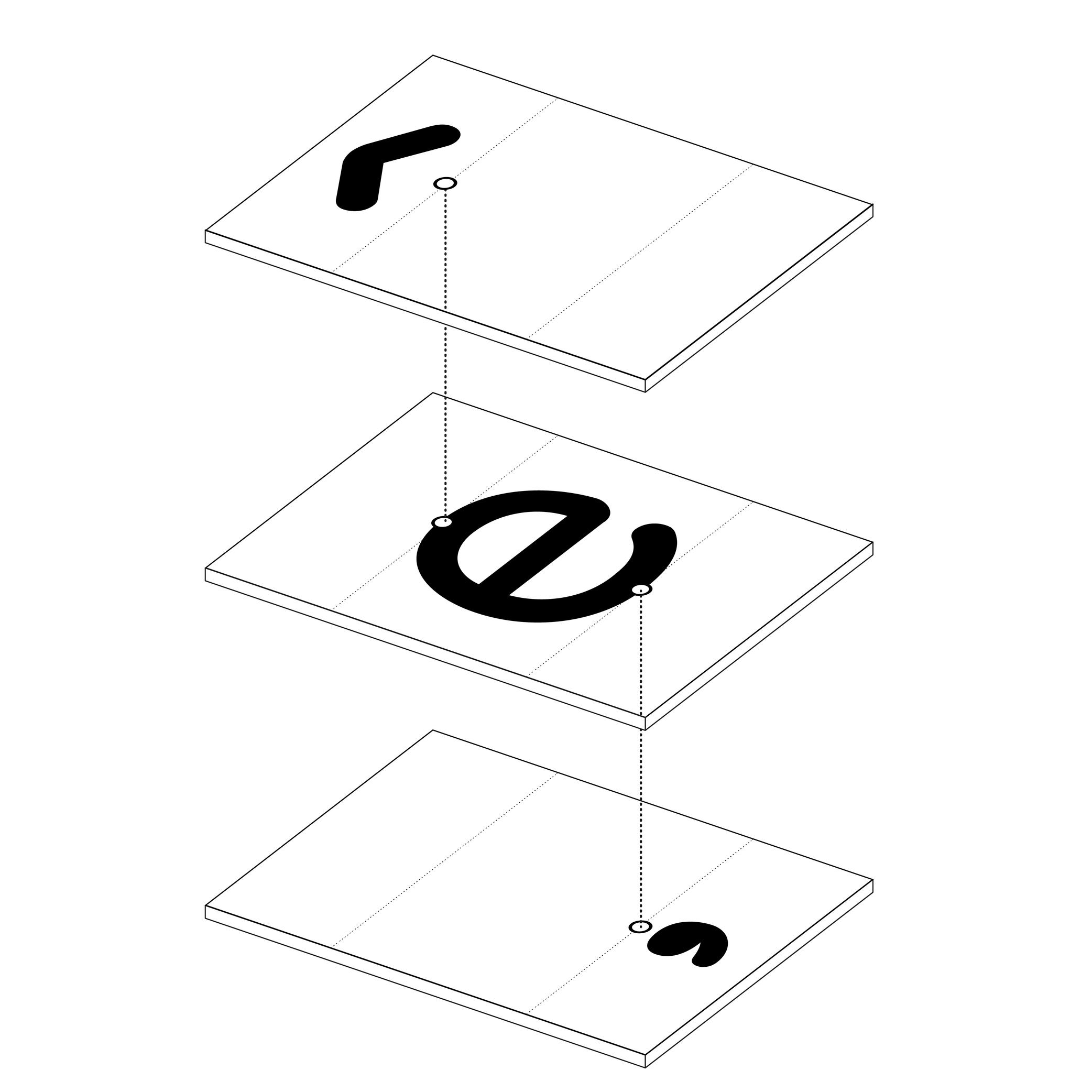
Illustration: Words of Type.
(Read More)In many languages and scripts, some glyphs are a combination of others, such as accented letters: é is the pairing of e with the diacritic “acute” on top.
When designing fonts, instead of copy-pasting the contours of both e and the acute accent into é, the designer adds an anchor on the top of e and below the acute accent, where both should be connected or anchored to each other. Thus, both elements are “called” to form the character é, which becomes its components.
Angle
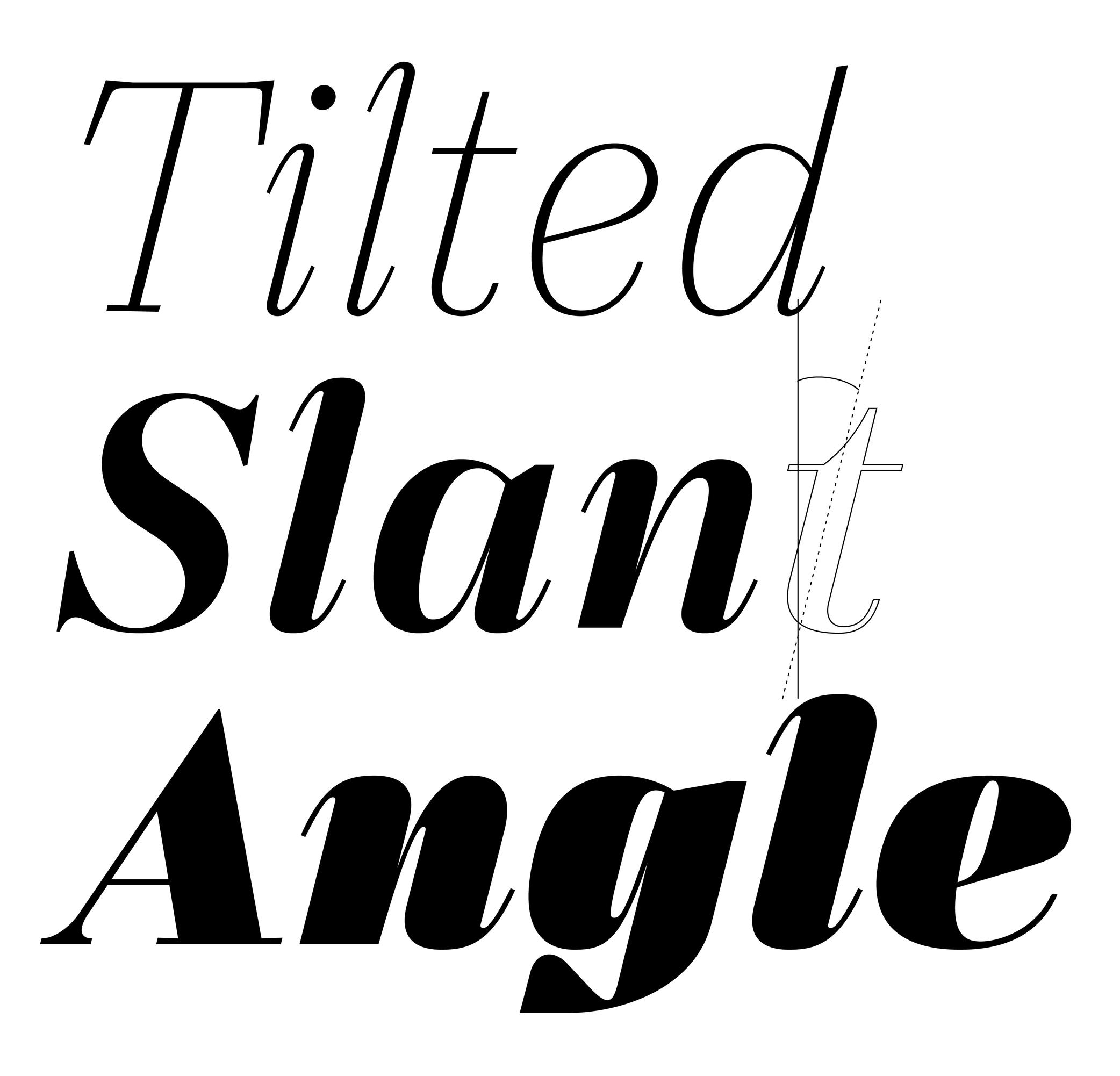
Sponsored by TypeMates . Typefaces in use: Edie & Eddie Modern , designed by Lisa Fischbach, 2022.
(Read More)Also called slant.
The angle is what we can observe on italic-style letterforms. We say the vertical stems are stretched and leaning to the right at a certain angle.
In the same typeface family, the degree of the italic angle may vary from one weight to another, different sizes of use (display to caption styles), different scripts, or even from one glyph to another in the same style to optically improve the typeface’s balance.
Aperture
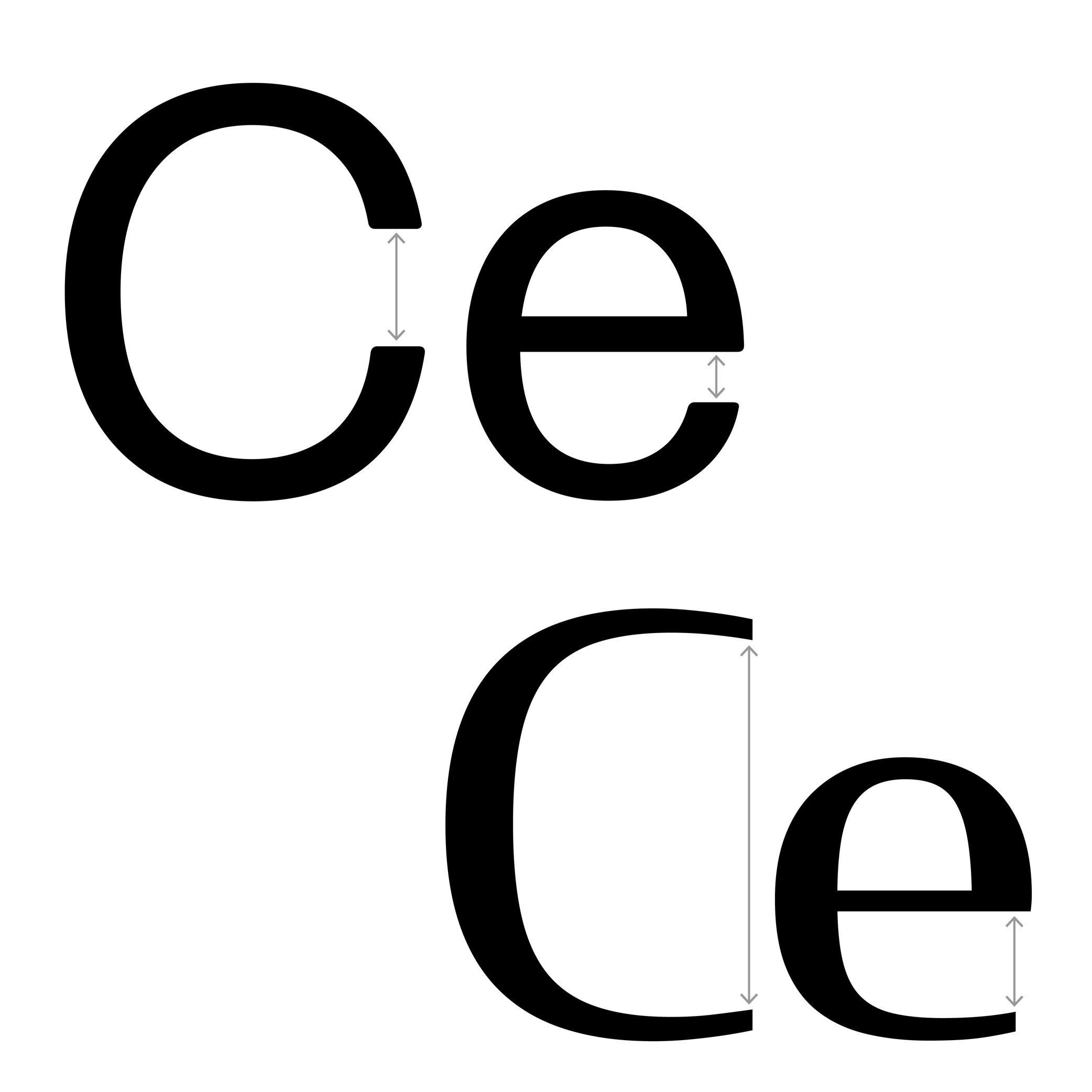
Sponsored by DJR . Typefaces in use: (top) Forma DJR , (bottom) Condor , designed by David Jonathan Ross, 2017.
(Read More)The aperture is the frontier between the counter and the surrounding white space of opened letters (such as a, e or c).
A larger aperture increases the legibility of a typeface and is highly recommended for text typefaces.
Apex
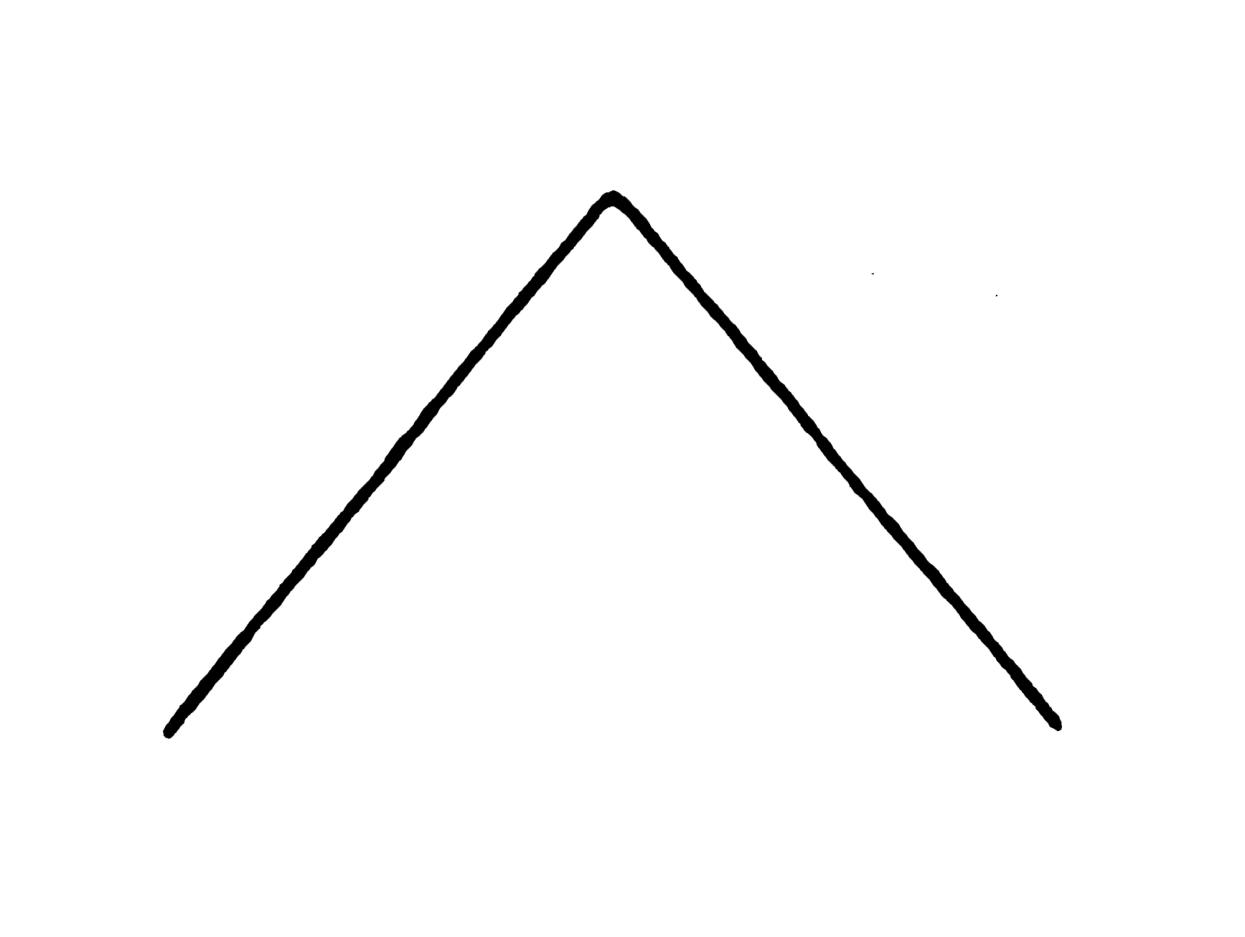
Illustration: Tezzo Suzuki .
(Read More)The apex is the point on the top of a letter where two stems meet, such as the top of the letter A or the middle of w.
We also find the term “vertex,” referring to the top of A as well, but also to other pointed parts such as the base of V or the intersection of K when/if its diagonals don’t meet the vertical stem.
Apostrophe
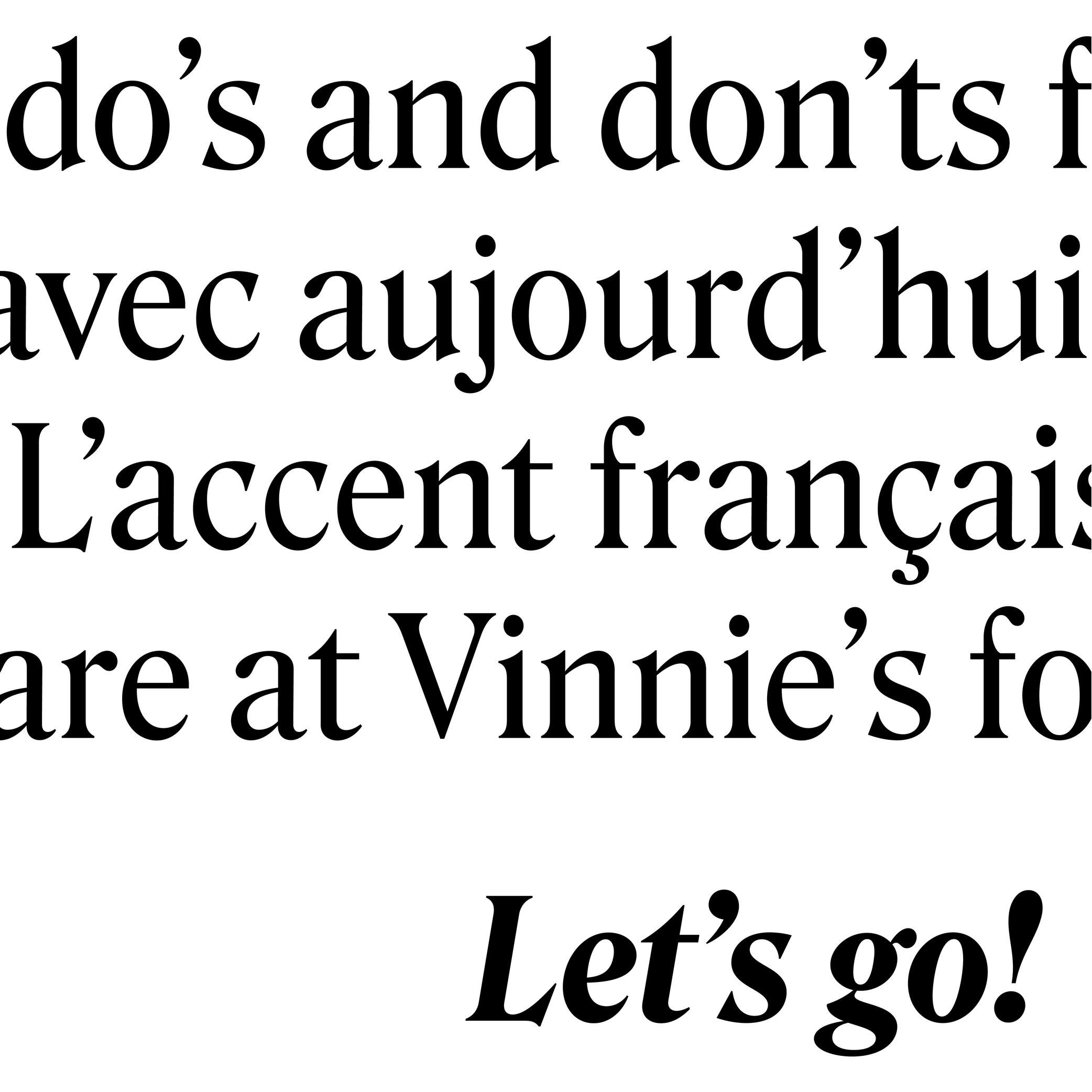
Sponsored by DJR . Typeface in use: Roslindale , designed by David Jonathan Ross, 2017.
(Read More)FUNCTION
The apostrophe (or “single quote” for English speakers) is a very common punctuation mark in languages using the Latin alphabet. It has different functions from one language to another. In English, for example, it is used as a possession (“part of a letter” to “a letter’s part”) or an elision marker (“it is” to “it’s”).
HISTORY
A symbol looking like an apostrophe dates back to the 16th century in France when the engraver Geoffroy Tory (1480–1533) introduced this sign to replace a letter or a short word.
With the invention of typewriters, other look-alike glyphs (single quote, prime, acute accent, etc.) were assembled into the same key with the apostrophe to save as many keys as possible for the limited space of the keyboard. But this led to confusion that is still observed nowadays, with the prime glyph being often used as an apostrophe.DESIGN
Well-designed typefaces either have slanted or curly-shaped apostrophes (related to the comma of the typeface). This shape avoids confusion with the prime.
Arch
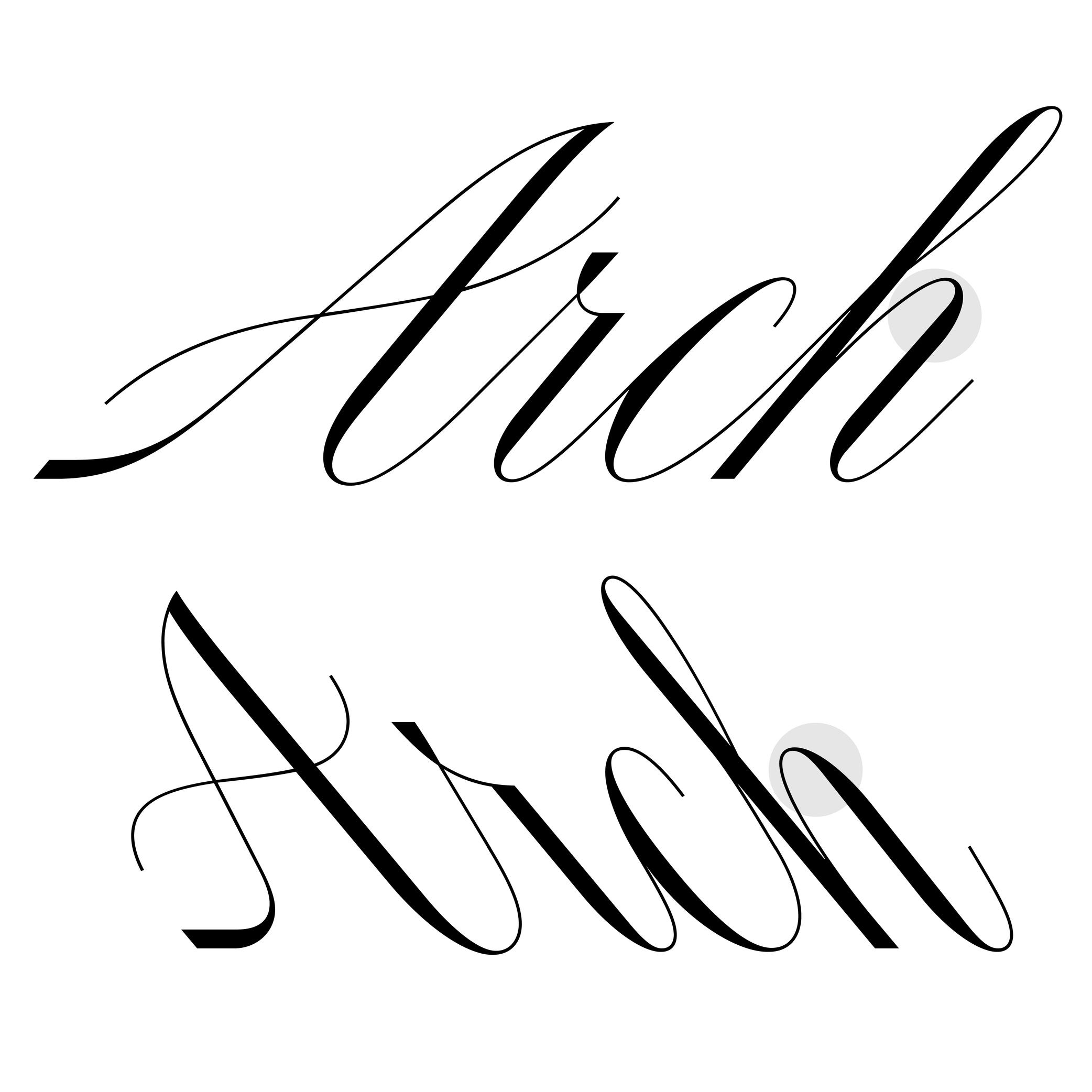
Sponsored by R-Typography . Typeface in use: Canora Frente and Verso , designed by Rui Abreu, 2021.
(Read More)Many terms are borrowed from architecture or human and animal anatomy to designate and describe parts of letters and other characters. We even speak of type design anatomy.
In Latin script, the arch is the top-right part of letters such as n, m, h and a.
Arm
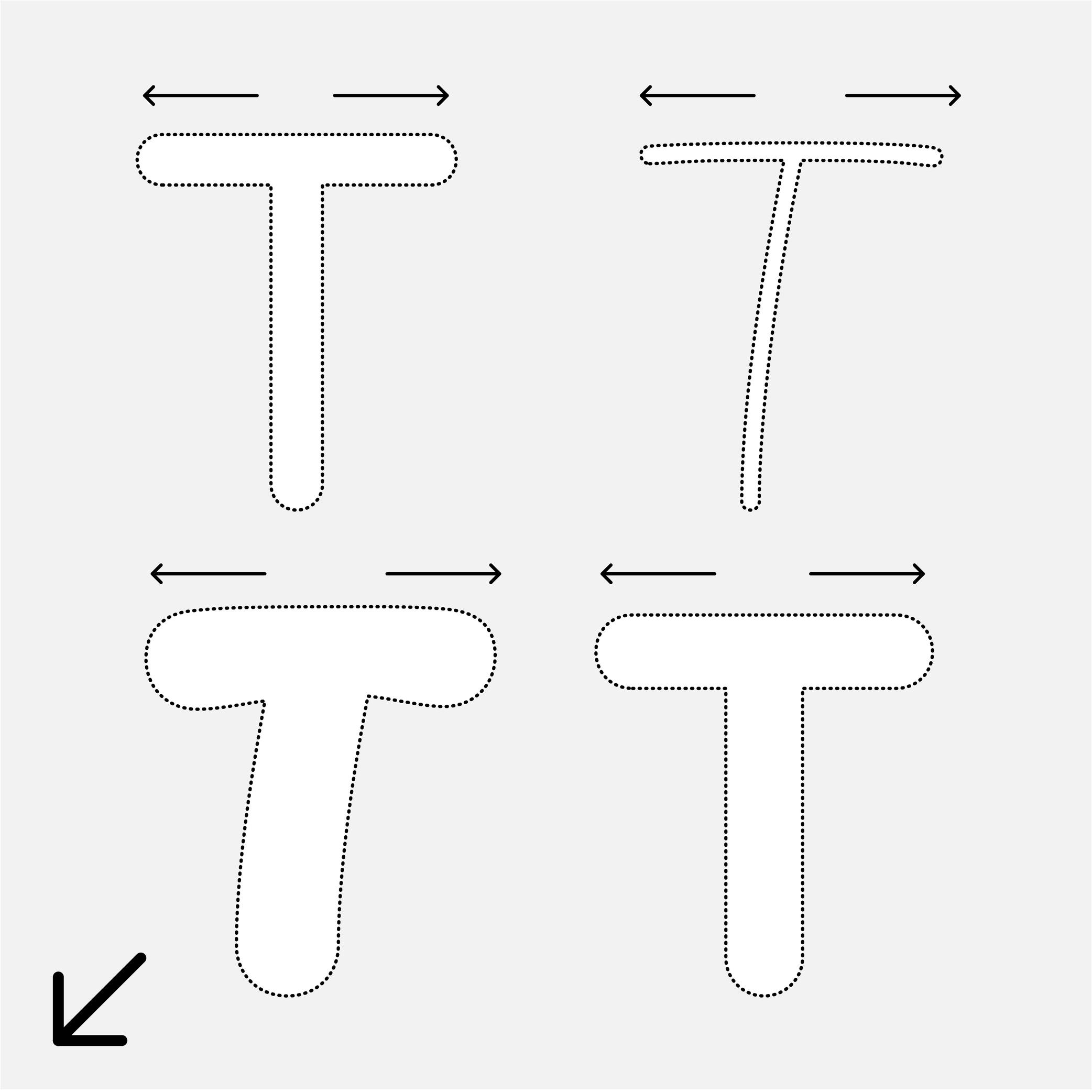
Sponsor Word of Type and feature your typeface in this card with a linked caption. Contact us for more information.
(Read More)Many terms are borrowed from architecture or human and animal anatomy to designate and describe parts of letters and other characters. We even speak of type design anatomy.
In Latin script, the arm is the horizontal bar at the top of the letter T, as well as the horizontal bars on the E and F.
Ascender
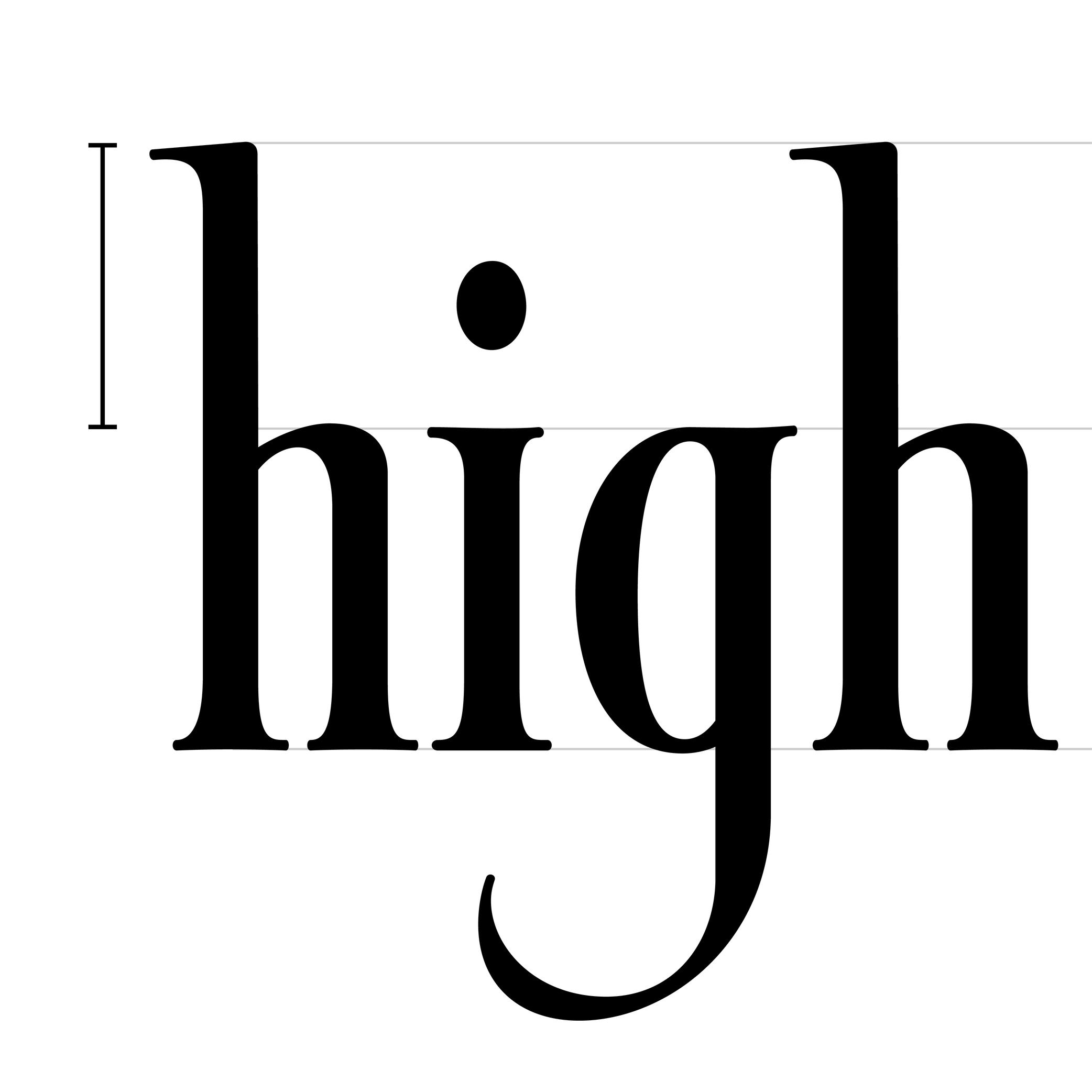 (Read More)
(Read More)The parts of lowercase letters that go above the x-height level (such as b, d or h) are called ascenders.
On the opposite side of the x-height, the parts going below the baseline are descenders.
Both don’t necessarily need to have the same length. In general, descenders are shorter than ascenders.
Attention: do not confuse ascender height with the capital height (or cap height). Ascenders in Latin script are commonly taller than capital letters.
Asterisk
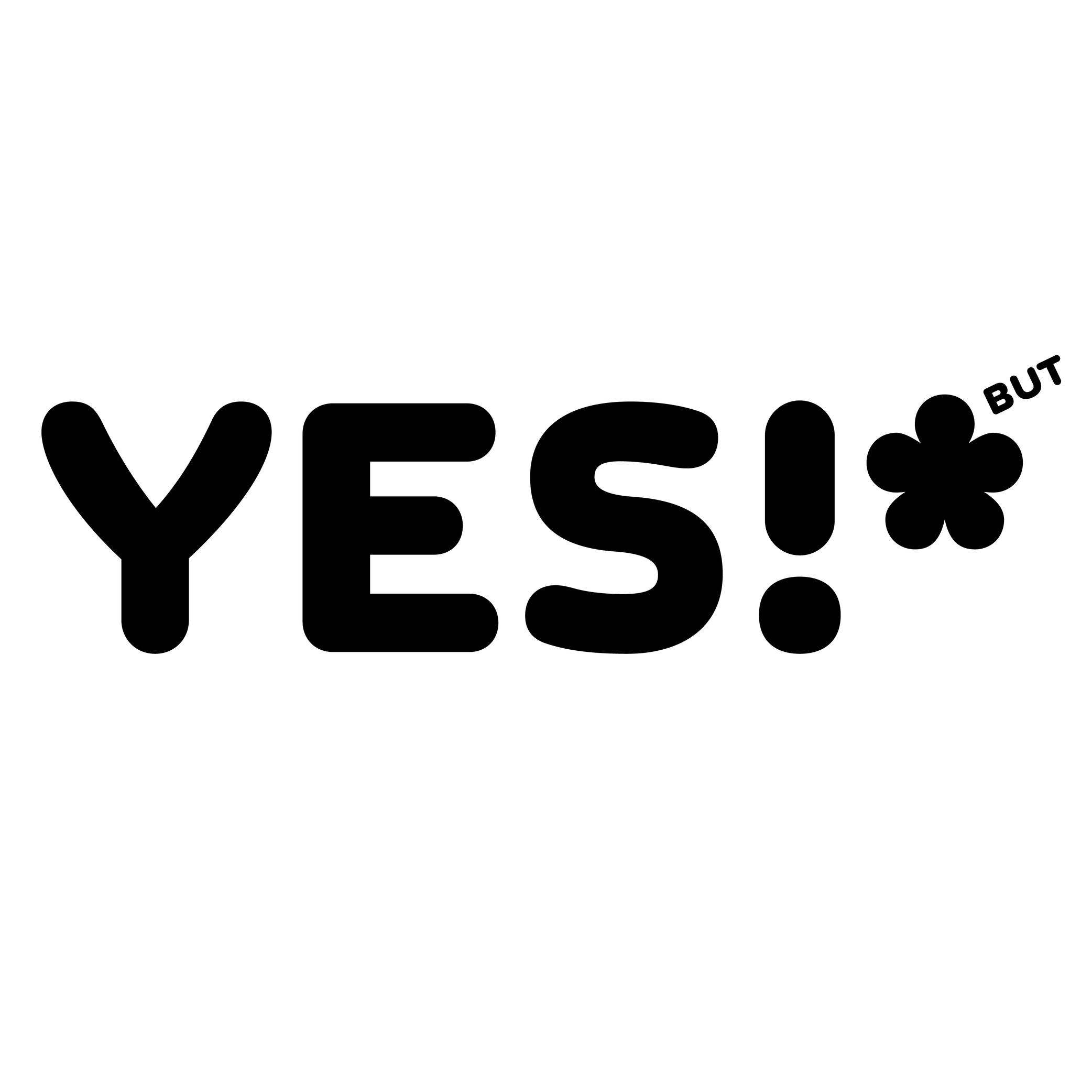
Illustration: Words of Type. Typeface in use: Knowledge Rounded, designed by Lisa Huang, 2024.
(Read More)FUNCTION
The asterisk (*) is commonly used as a punctuation symbol placed after a word to indicate that it refers to a note.
HISTORY
Star-shaped symbols are seen in documents from many regions of the world throughout history. It was only in the Middle Ages in Europe that the asterisk began to be used as a mark to link a part of a text to additional comments added elsewhere.
DESIGN
The asterisk can have many different designs in order to match the style of a typeface, from a very abstract five-branched star to more flourished ones, with more or less contrast between the center and the tips. The asterisk is aligned at the top of the glyphs to be legible in a text.
At (sign )
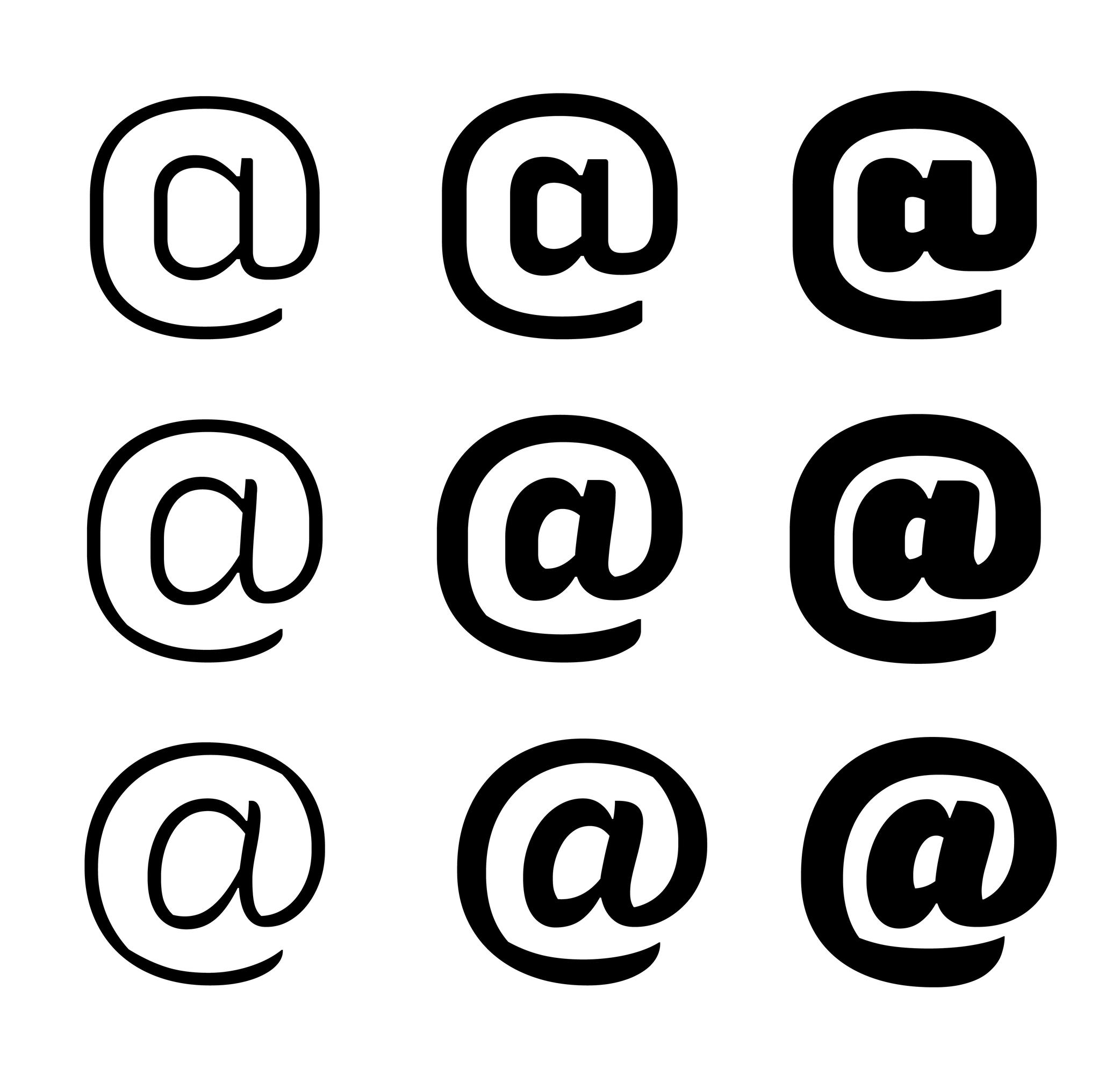 (Read More)
(Read More)FUNCTION
The at sign (@) is used in email addresses to indicate a domain name or a social media account tag.
HISTORY
The origins of how and why the at sign was created and why it looks the way it does remain unclear. Allegedly, it has been created as a symbol to measure weight or quantity (to signify “at the rate of”) in some parts of Europe since the 14th century. That symbol looked more or less the same as the modern at sign: with a letter a circled by an elongated tail.
Since the use of email addresses, it is used to indicate at which domain name it is hosted.
DESIGN
The at sign is commonly designed as a lowercase a with a tail surrounding the letter. Due to the sign’s visual complexity, there are many solutions to simplify it by making the tail shorter (not entirely enclosing the a) or by starting the tail directly from the top instead of the bottom of the stem.
Axis (in Type Design)
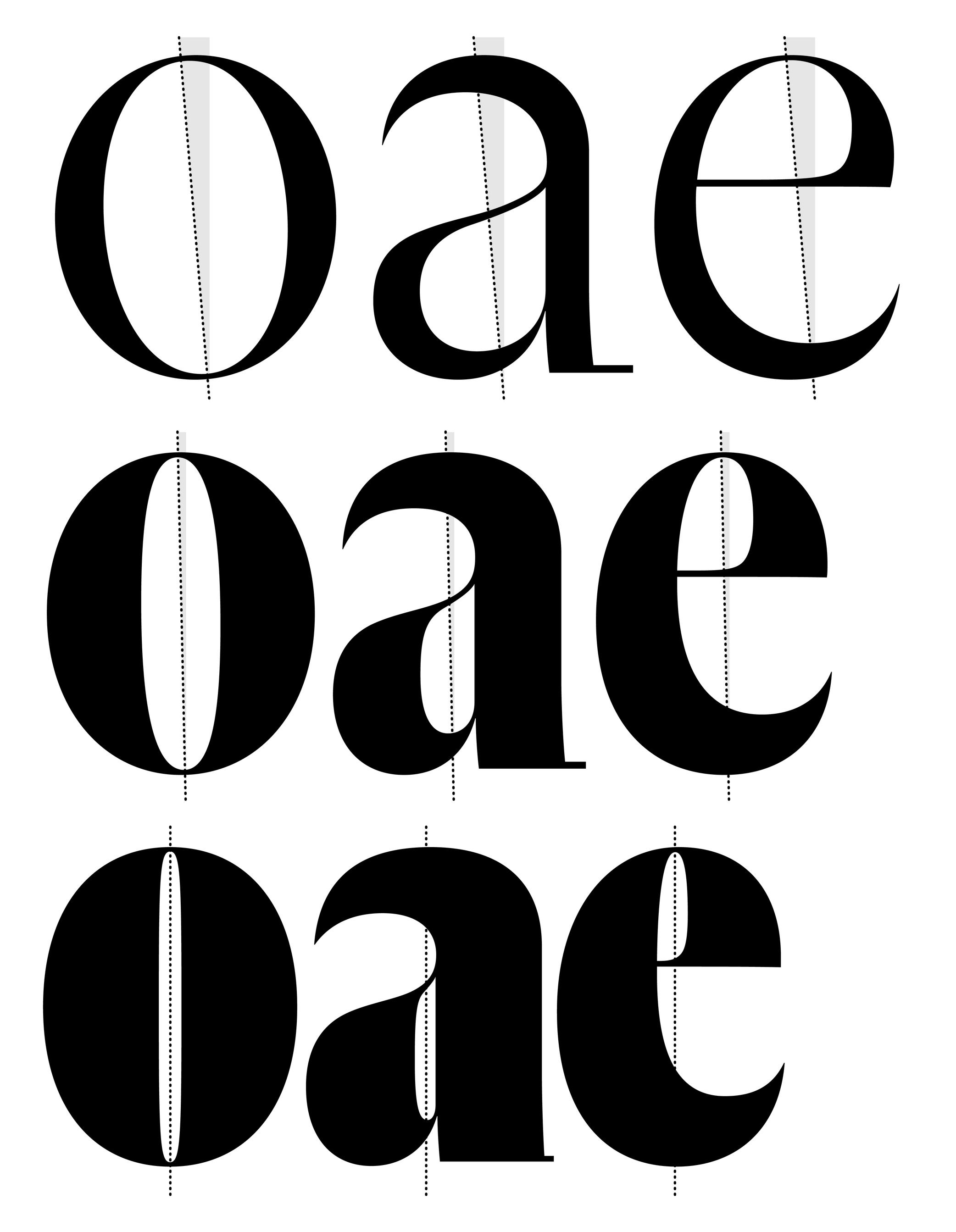
Sponsored by R-Typography . Typeface in use: Gliko Modern L , designed by Rui Abreu, 2018.
(Read More)In Latin script, we speak of a “diagonal,” “tilted” or “oblique” axis when we refer to the shapes of letters in a typeface that have some contrast.
In calligraphy (when using a broad nib pen), the axis of the stroke is defined by the angle at which the pen is held, from which a contrast between thin and thick parts is formed. The axis should be kept the same (or very similar) for a consistent construction on all glyphs.
Balance
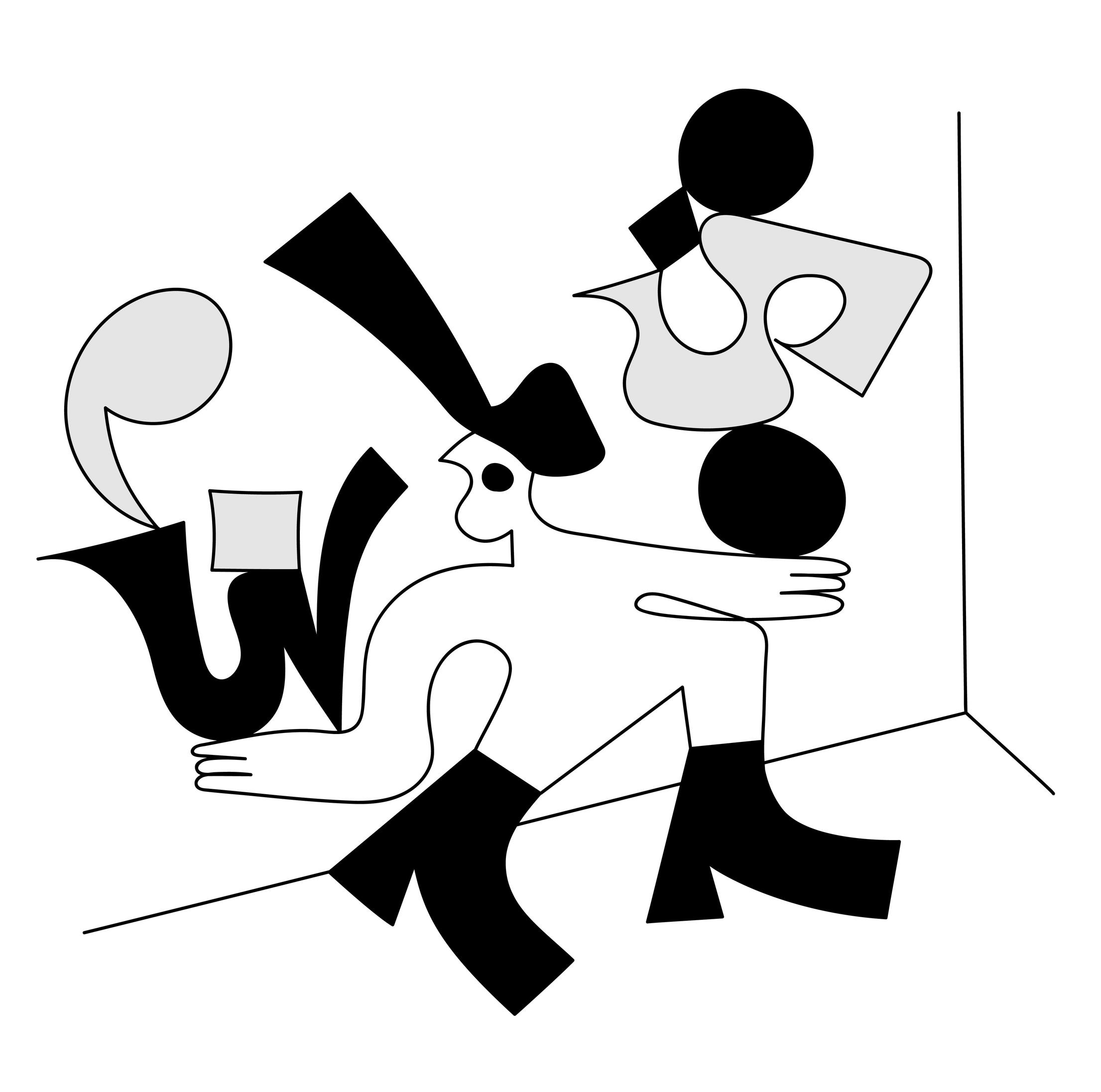
Illustration: Catherine Potvin .
(Read More)The concept of balance is fundamental in typeface design. With many different shapes (letters, figures, symbols, etc.) that have to be combined to create a more complex group (words, sentences), a certain level of training and expertise is required to achieve a harmonious balance of the whole set.
A good balance allows a comfortable reading experience.
Baseline
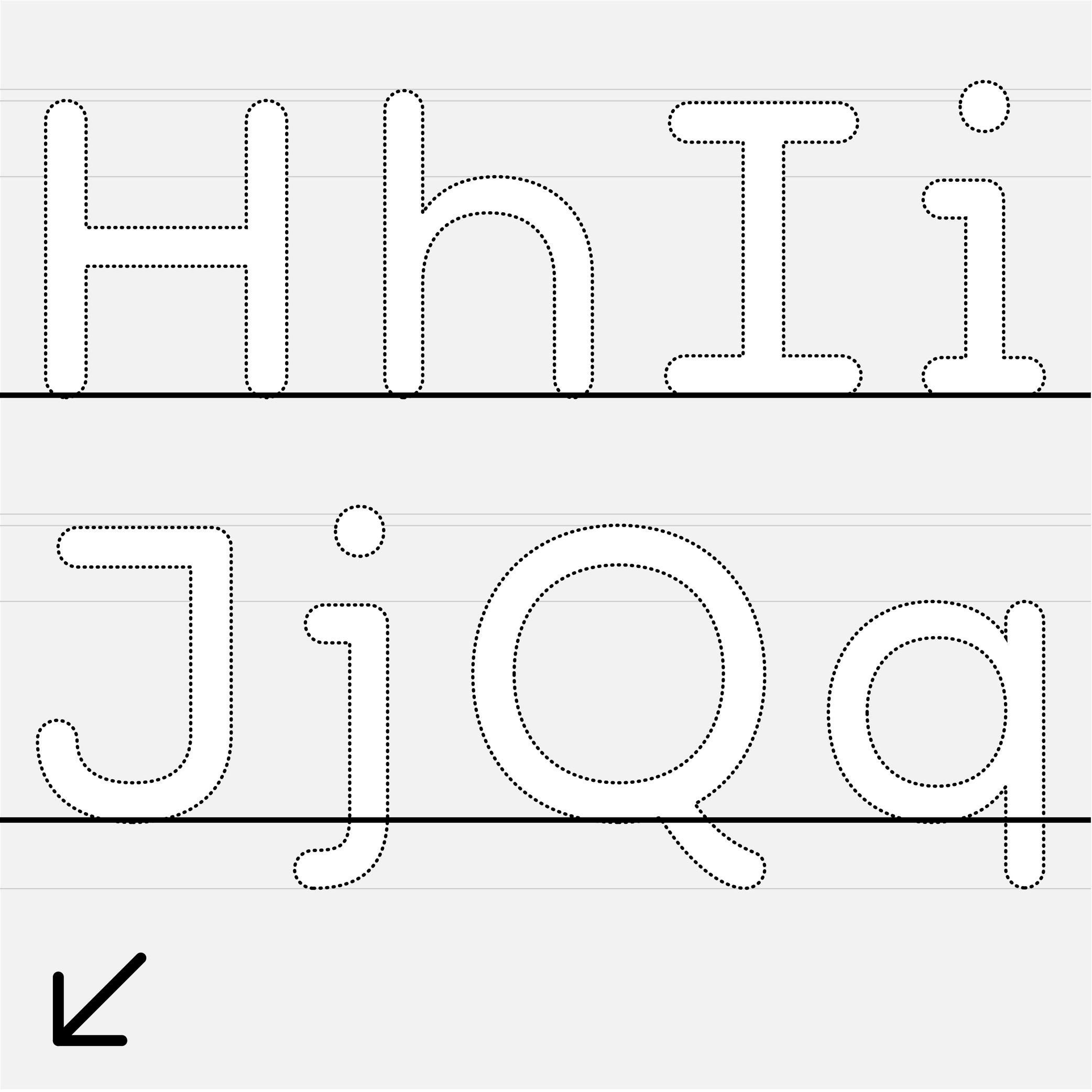
Sponsor Word of Type and feature your typeface in this card with a linked caption. Contact us for more information.
(Read More)The baseline is where the bottom extremity of letters such as n and H are positioned, and it is used as a reference guide for the entire character set. We also say that letters are “sitting” on the baseline.
The baseline—with other guidelines like x-height, ascender, descender and capital height—helps to control the position of all letters and glyphs.
Bézier Curve
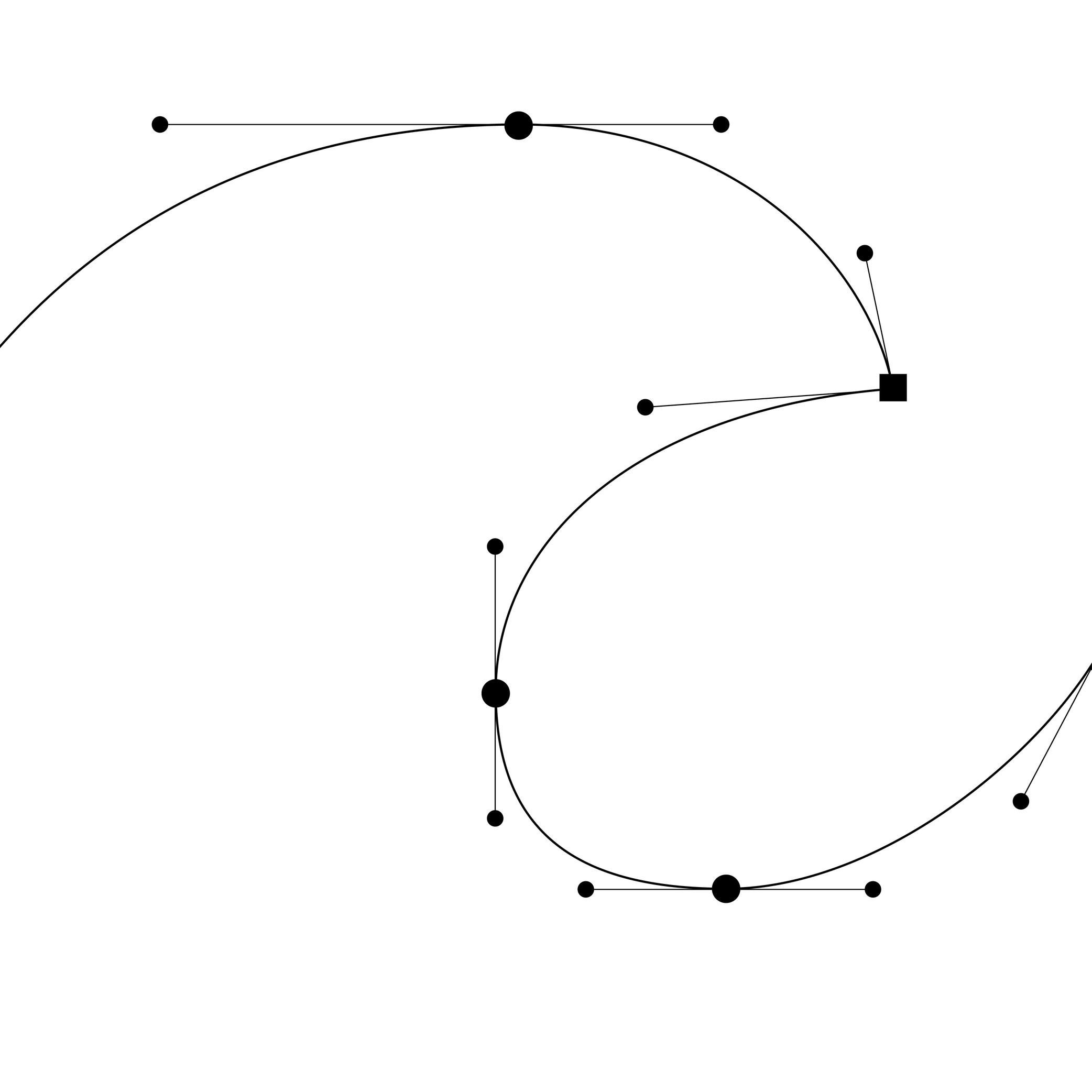
Illustration: Words of Type.
(Read More)In type design, Bézier curves are used to draw contours on digital applications with vectors drawn by placing points and handles. This technology allows us to rasterize digital shapes and keep their quality.
HISTORY
Bézier curve technology was developed by French mathematician and physicist Paul de Casteljau in 1959. Working at that time for the automobile brand Citroën, de Casteljau developed a mathematical formula to improve the design process of car bodies. French engineer Pierre Bézier used the same technology in 1962 for Renault (another automobile brand) to create shapes using digital tools. It wasn’t until 1985, when Citroën lifted its industrial secrecy clause, that de Casteljau could speak about his work and Pierre Bézier was able to publicly mention the origins of his own.
In 1982, Bézier curves were used by the American computer scientist John Warnock to develop a technology for describing and positioning digital shapes and contours for the company that he co-founded with Charles Geschke: Adobe Systems.
MORE
There are two types of Bézier curves: cubic and quadratic.
A cubic Bézier curve section requires the positioning of four points (two points and two handles), creating three sections between each point. The overall shape resembles a cubic shape, hence the name. Postscript font formats use cubic curves.
Quadratic curves are formed by three points (two points and one control point) to create a curve, with two sections cut halfway through to determine where the curve turns to the other point. TrueType font formats use quadratic curves.
Bilingual
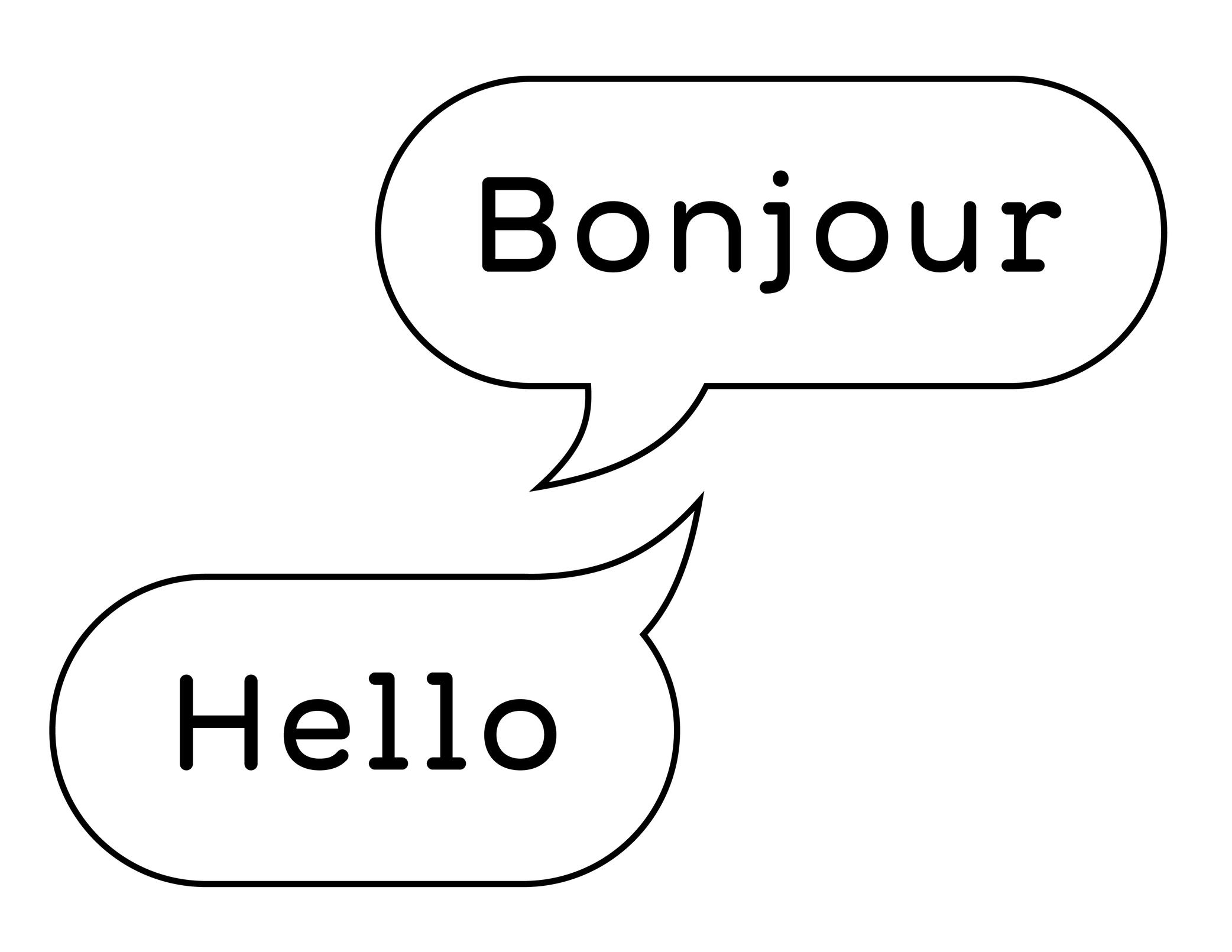
Illustration: Words of Type. Typeface in use: Knowledge Rounded, designed by Lisa Huang, 2024.
(Read More)A bilingual text is written in two languages (e.g., English and French).
Be careful to not mix up “bilingual” with “bi-scriptual.” The latter means “two scripts,” or “two writing systems.” For example, English and Chinese are two different languages, but they also use different scripts.
Binding
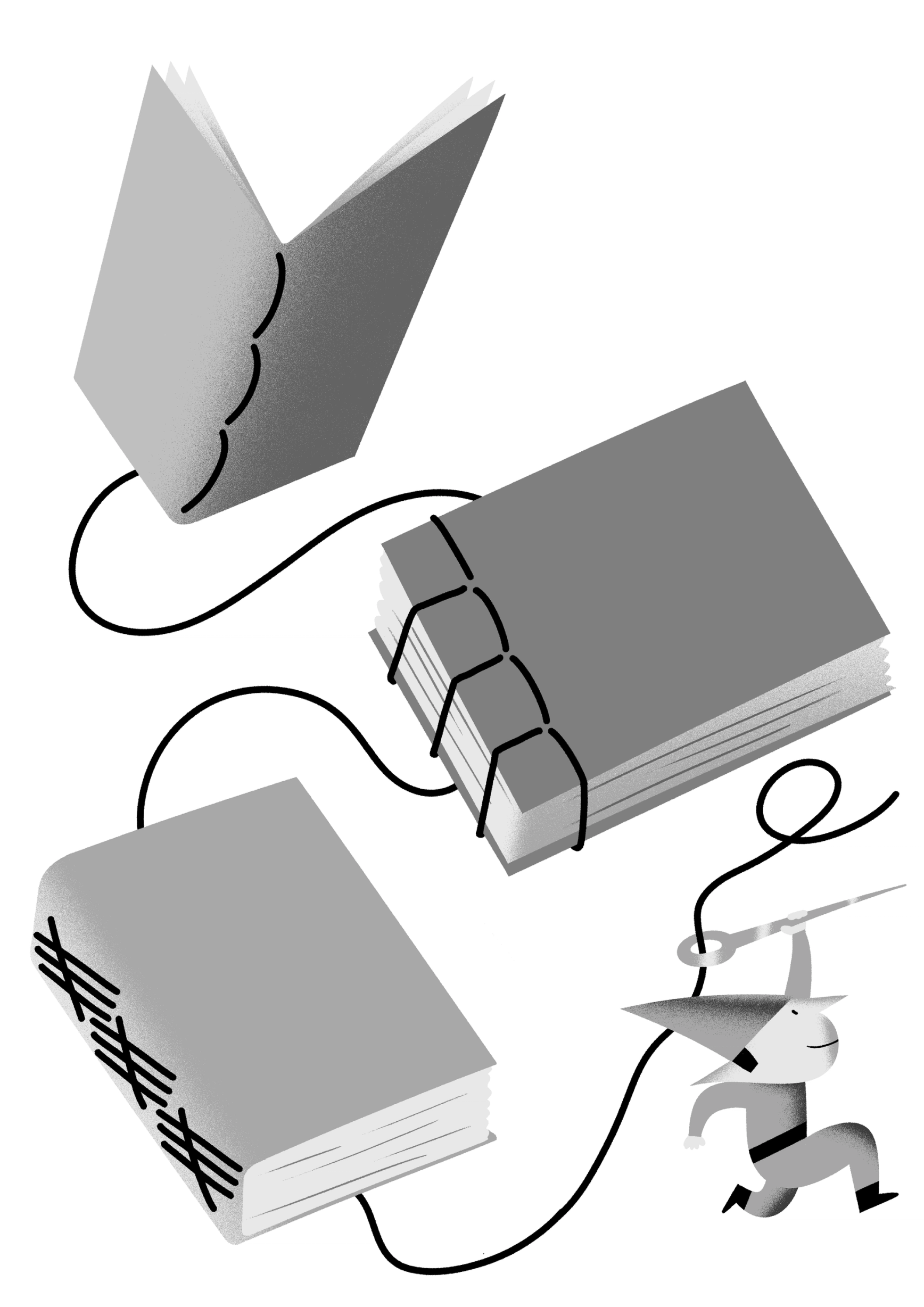
Illustration: Yann Bastard .
(Read More)Books are bound using a variety of binding techniques, from traditional to modern ones, and from various corners of the world: Japanese or Chinese bindings, Otabind, Smyth sewing, perfect binding, and others.
Body Text
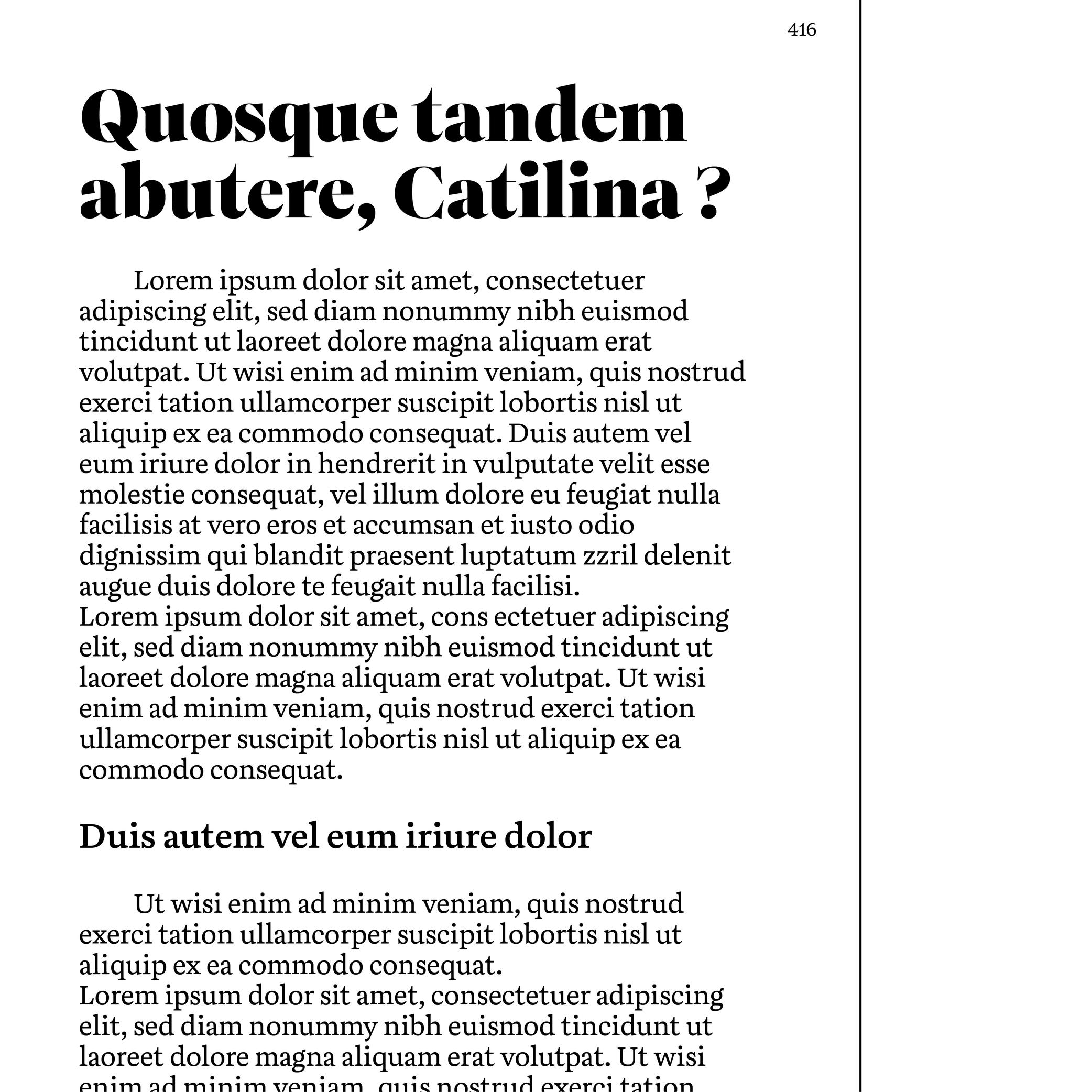
Sponsored by TypeTogether . Typeface in use: Aneto , lead designers: Veronika Burian, José Scaglione, 2022.
(Read More)Also called body copy or running text, body text is usually the main written part of a document. Titles, subtitles, captions and others should be visually different from the body text so each type of information is clearly distinct and recognizable.
It is advised to set the body text at a size that is most comfortable for long reading: from 9 to 12 points for printed media and 16 to 18 points for digital screens.
Bold (weight)
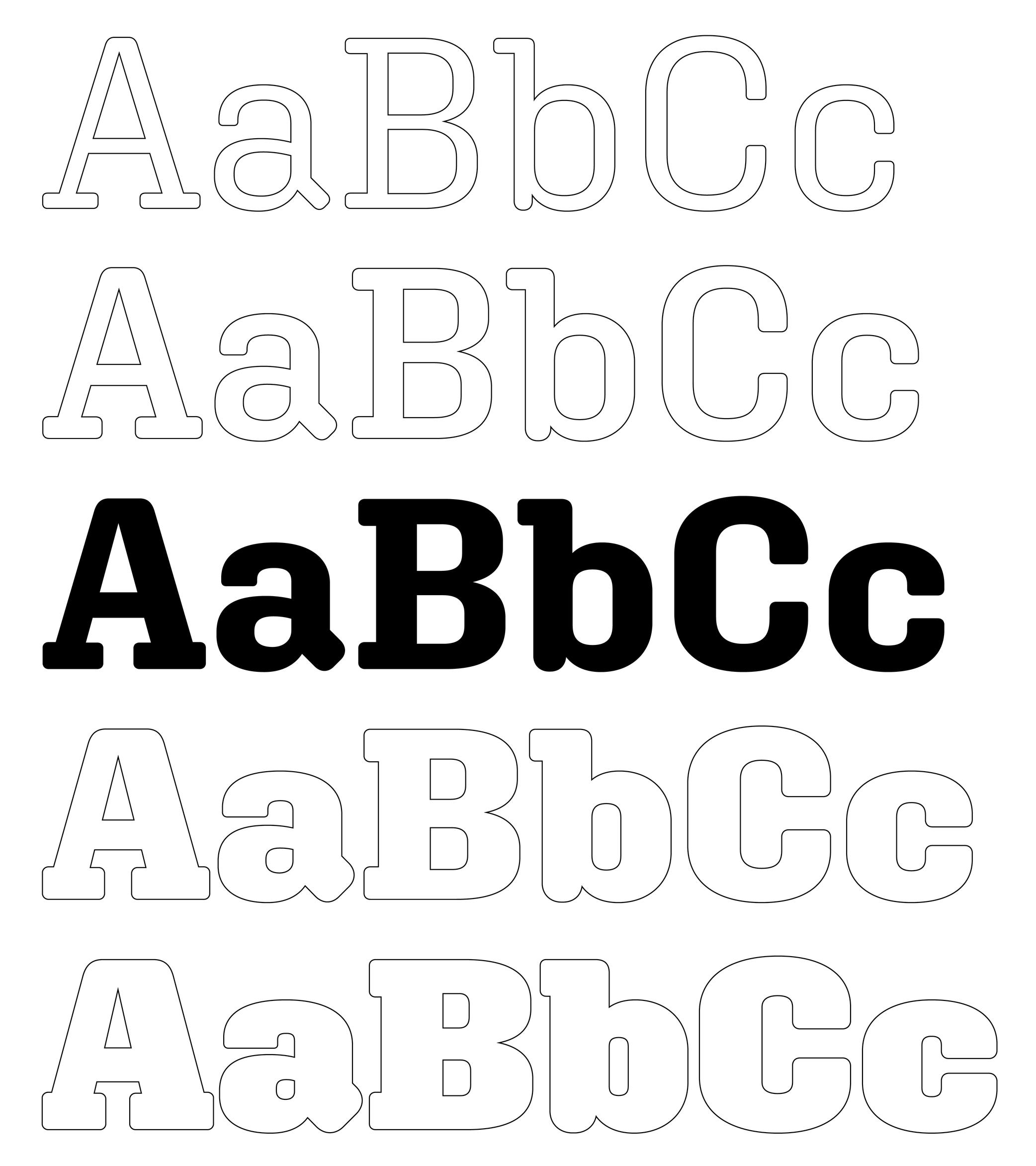 (Read More)
(Read More)While Regular is the most common weight for body text, Bold is a style often chosen to highlight a word or a sentence with a stronger emphasis than Italic.
Bounding Box
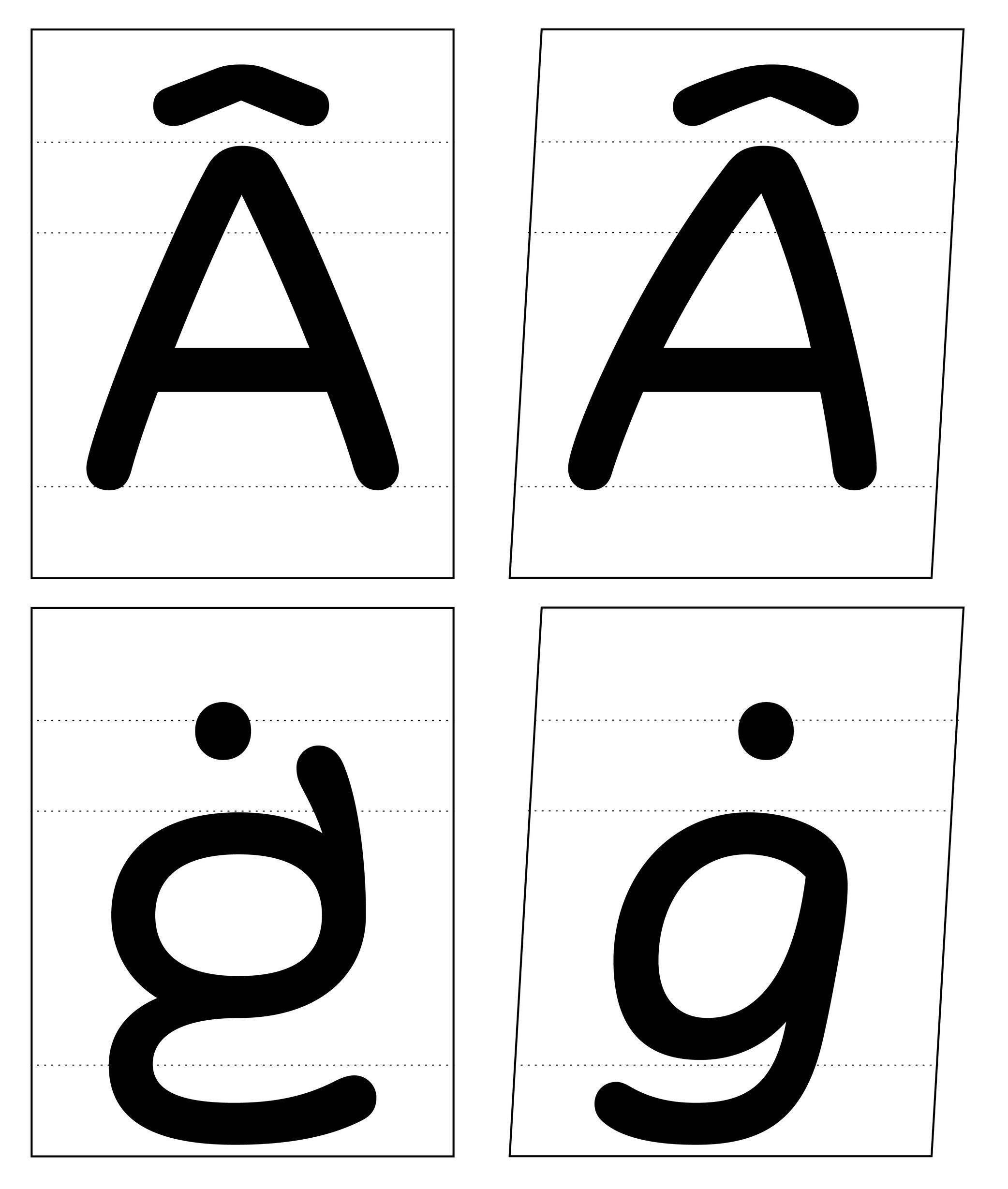
Illustration: Words of Type. Typeface in use: Knowledge Rounded, designed by Lisa Huang for Words of Type, 2024.
(Read More)The bounding box is a virtual rectangle enclosing a selected (vector) shape—such as a segment, an outline, or an entire glyph.
The font bounding box defines the outermost limits of a typeface, marked by the four extreme coordinates along the X and Y axes: highest (Y-max), lowest (Y-min), leftmost (X-min), and rightmost (X-max).
FONT ENGINEERING ADVICE
The font bounding box is stored in the head table.
Bowl
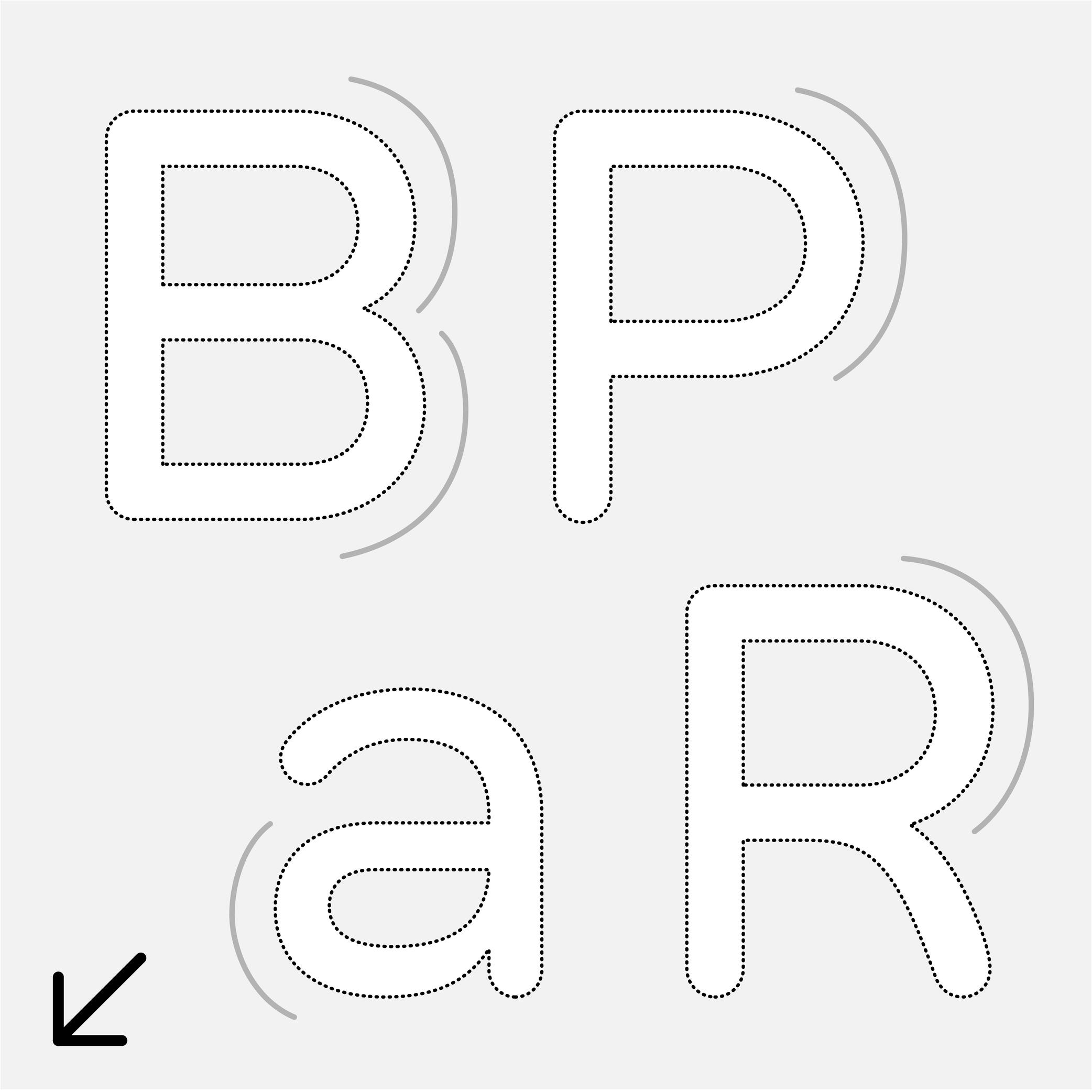
Sponsor Word of Type and feature your typeface in this card with a linked caption. Contact us for more information.
(Read More)Many terms are borrowed from architecture or human and animal anatomy to designate and describe parts of letters and other characters. We even speak of type design anatomy.
In the Latin script, the bowl refers to the rounded parts of a letter, like those in a, B, P, R, etc.
Calligraphy
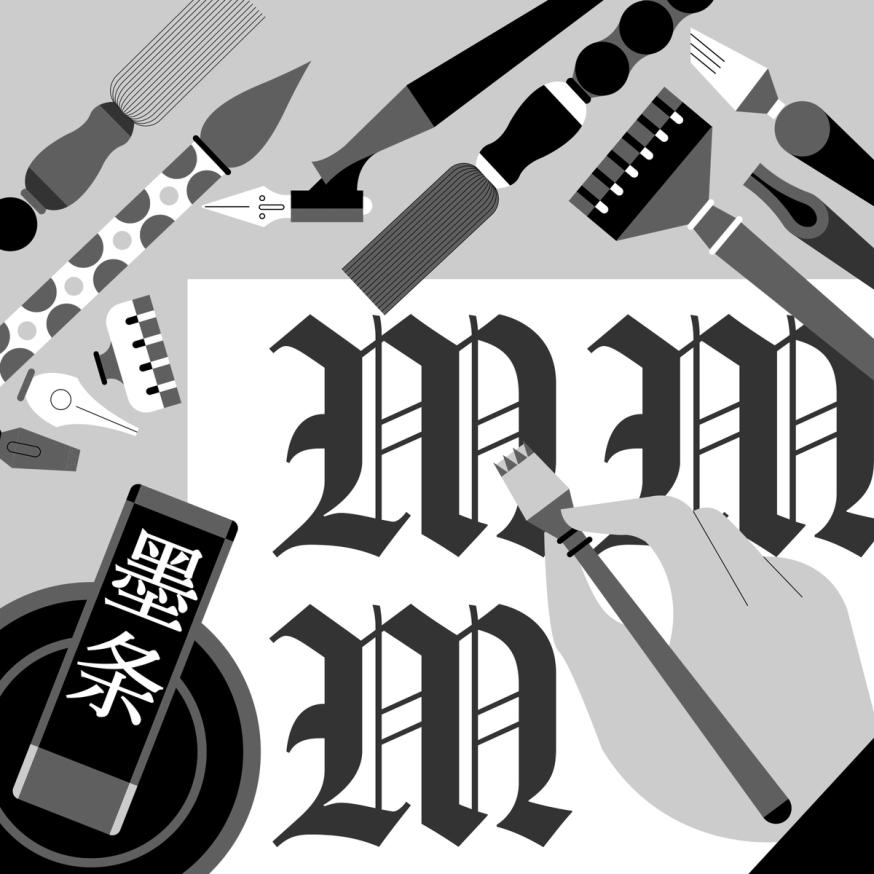
Illustration: Jonny Wan .
(Read More)The word calligraphy comes from the Greek kalos, meaning “beautiful,” and graphein, meaning “to write.” Together, it means “to write beautifully.”
Many civilizations around the world have practiced calligraphy (and continue to do so today) using a variety of tools: brush, pen, quill, broad nib pen or brush, etc. Most even consider it to be an art form.
Today, we describe typefaces whose letters and characters are inspired by those written with a calligraphy tool and following certain calligraphy styles as calligraphic. However, this is slightly different from “script” or “handwritten” styles, as those refer to handwritten shapes free from any particular calligraphic style.
Cap Height
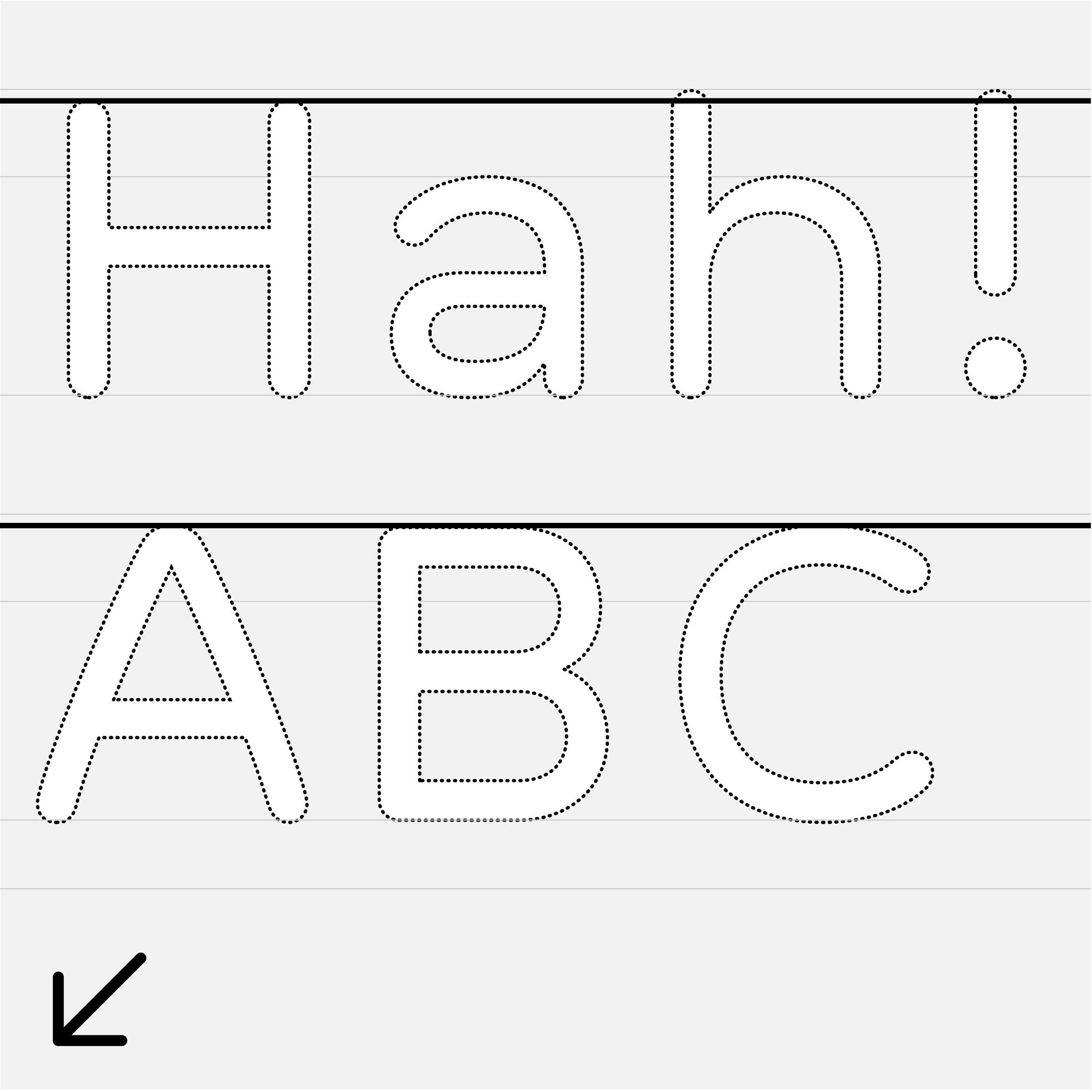
Sponsor Word of Type and feature your typeface in this card with a linked caption. Contact us for more information.
(Read More)The cap height (short for capital height) is at the top level of square capital letters, such as H.
The cap height is one of the main guidelines for Latin-script typefaces. It is usually lower than the ascender height in typefaces meant to be used at small size. This is also the case for sans serif styles to show a difference between l (lowercase L) and I (uppercase i). In many display styles, the ascenders are the same as the cap height to save some vertical space.
Capitalize
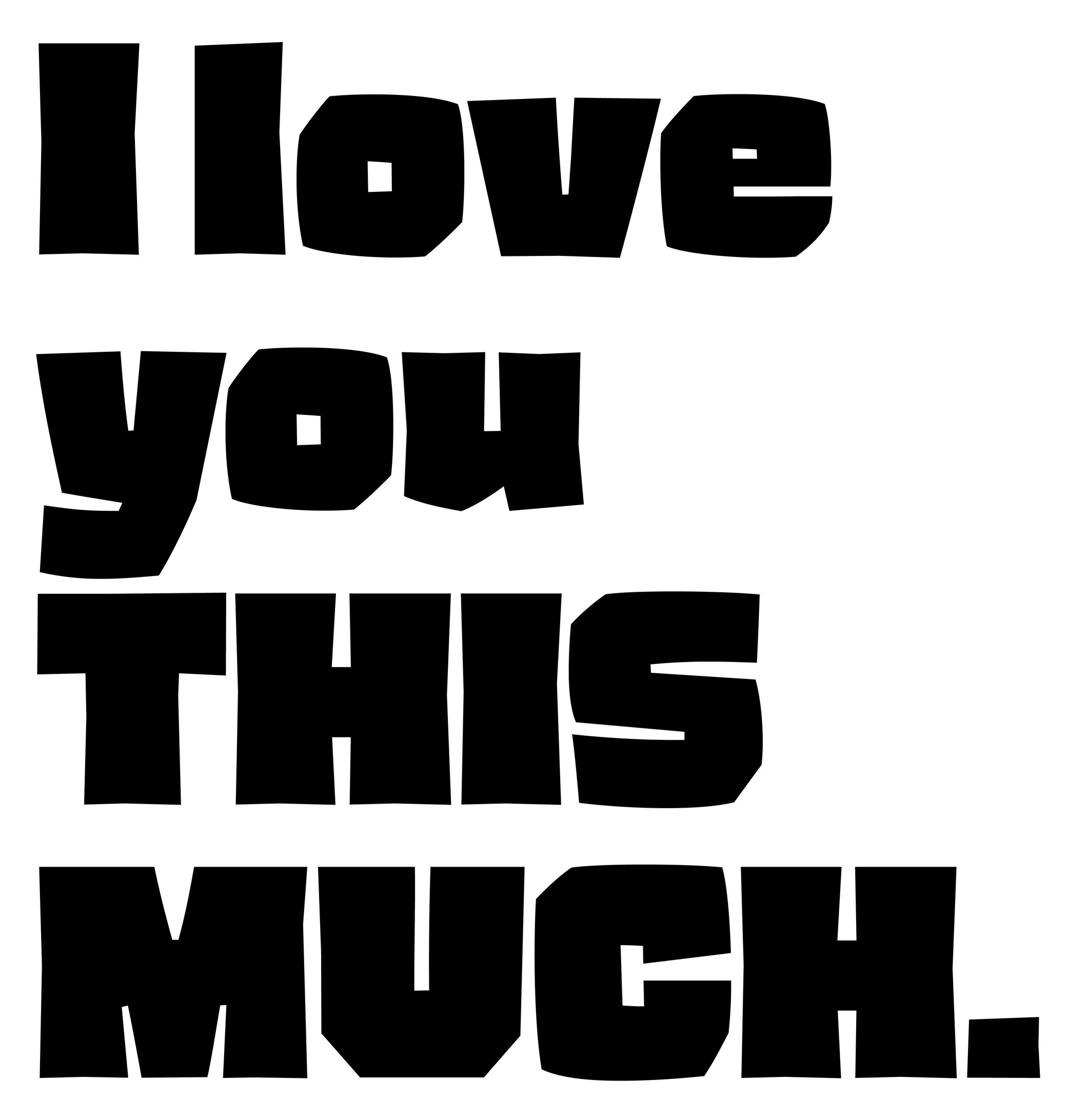
Sponsored by Type Together . Typeface in use: Rezak , designed by Anya Danilova, 2022.
(Read More)Also called to set in All-Caps.
In applications and tools that can process texts, to capitalize is to transform every selected lowercase letter into its capital variant.
FONT ENGINEERING ADVICE
The capitalization button in text editors usually calls several OpenType features: the case sensitive (.case), the capital spacing (.cpsp) and the proportional numbers features (.pnum).
Caption
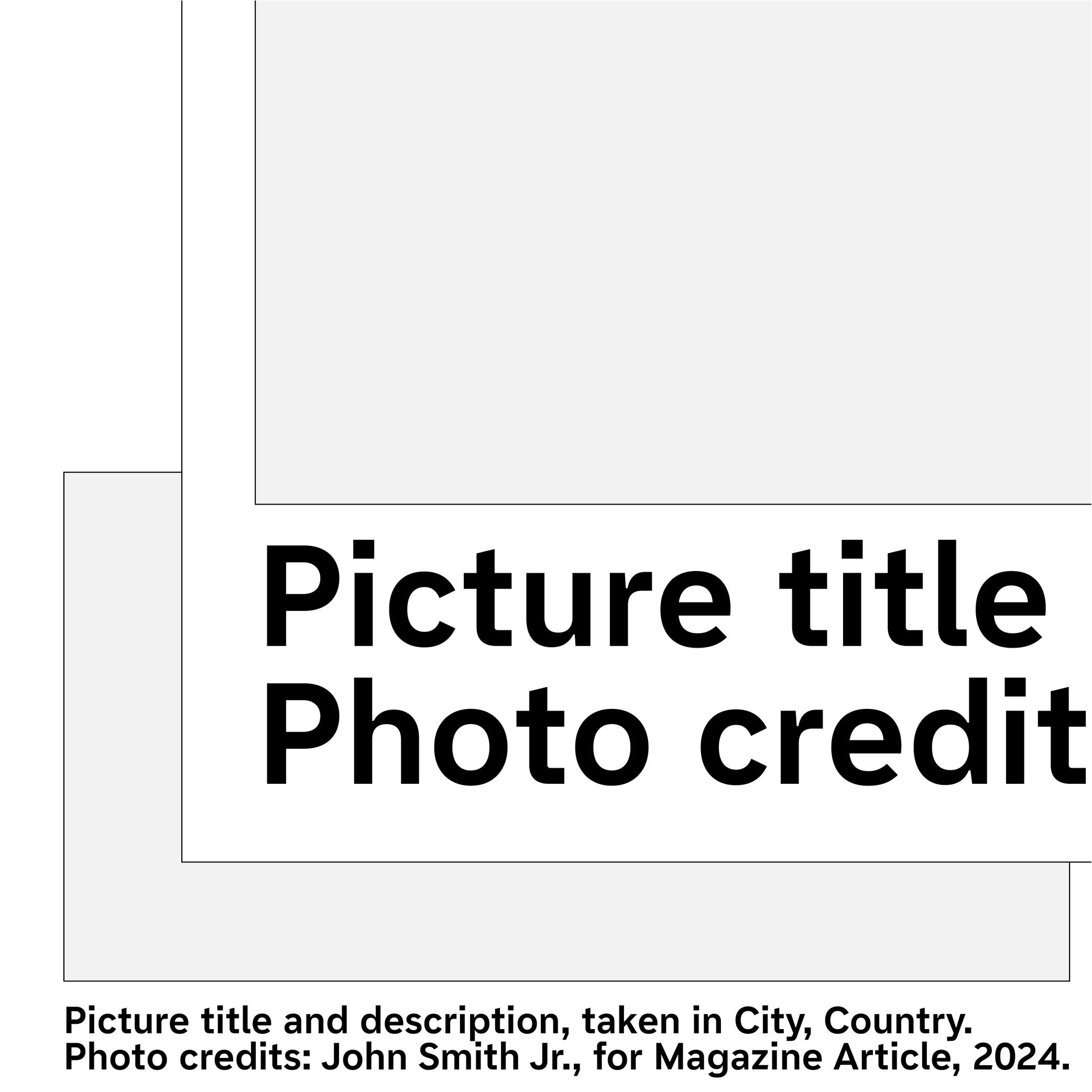 (Read More)
(Read More)To inform a reader that a passage of text is a caption, it is usually placed near the image it is linked to, but it is usually also set in a smaller size and/or in a different style.
Some typefaces contain a specific caption style in the family with optimized details for specific use in small sizes, such as lower contrast and higher x-height.
Case Sensitive
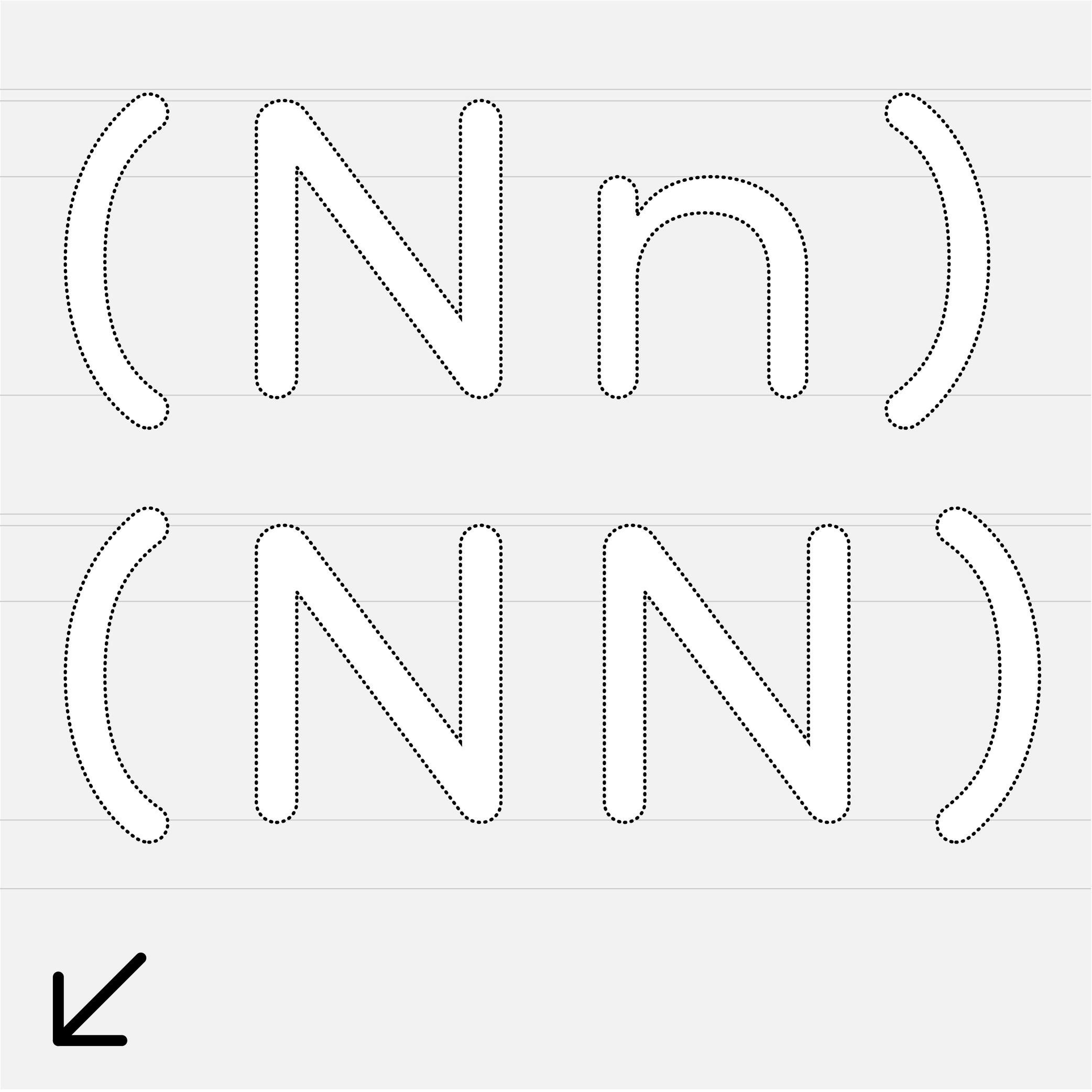
Sponsor Word of Type and feature your typeface in this card with a linked caption. Contact us for more information.
(Read More)By default, most punctuation signs and some characters are designed to be combined with lowercase letters because this is the most frequent situation.
When combined with capital letters, some of them need to be adjusted to be optically aligned with the capitals. These variants are required in a good typeface so the user can access enough tools for quality micro-typography. They are called case-sensitive alternates, usually attached with the extension “.case” and accessible or activated on applications supporting OpenType features.
Center Space
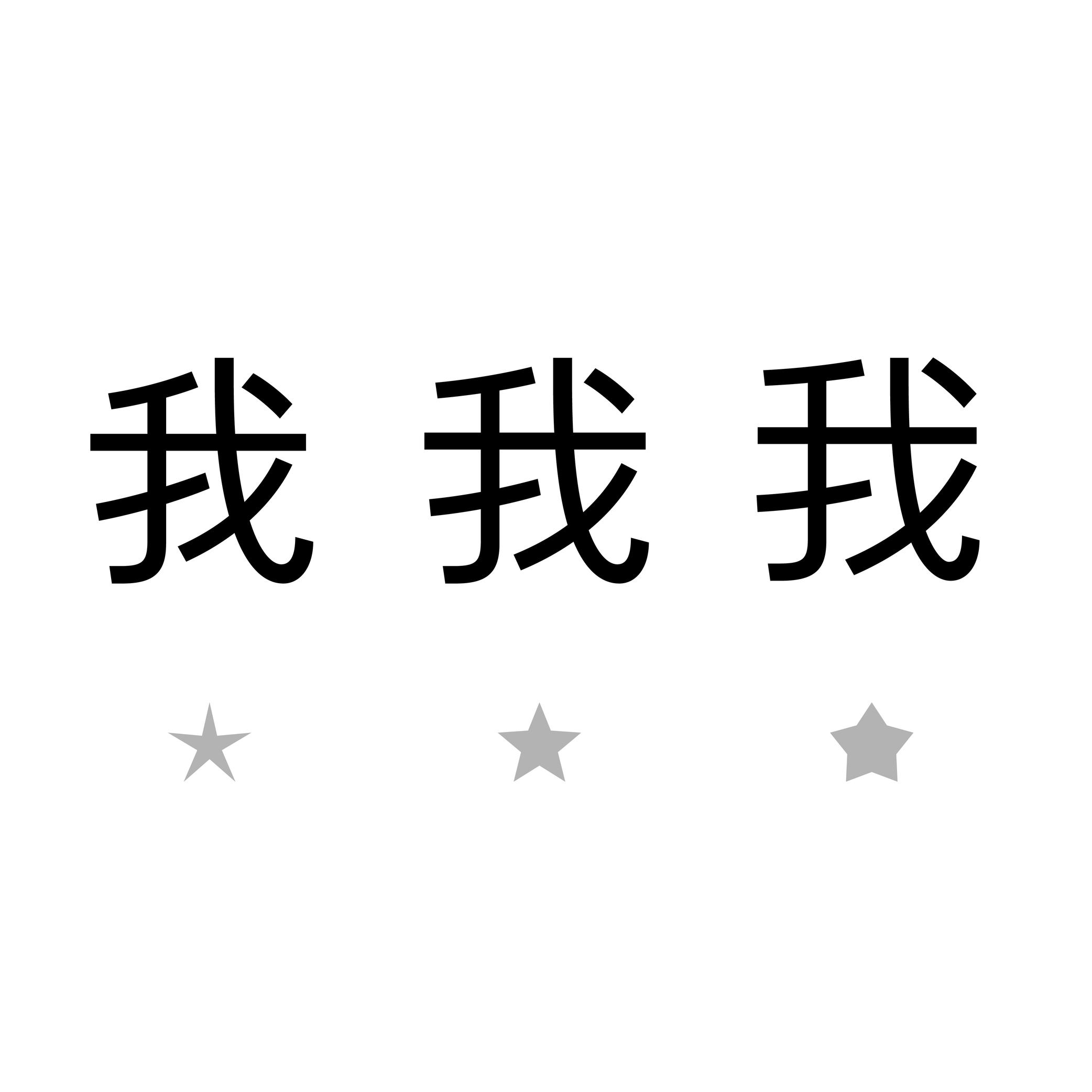
Sponsored by Mallikātype . Typeface in use: Nan Sans, designed by Tianmeng Xue. Coming soon.
(Read More)In the Chinese Hanzi script, the center space (or optical core, 中宫 in Chinese) corresponds to the central area of a character, similar in Latin to the area between the x-height and the baseline. This area can differ from style to style, but it has to be visually constant for all characters in a typeface.
A text typeface with a bigger center space has its legibility improved for small sizes.
Character
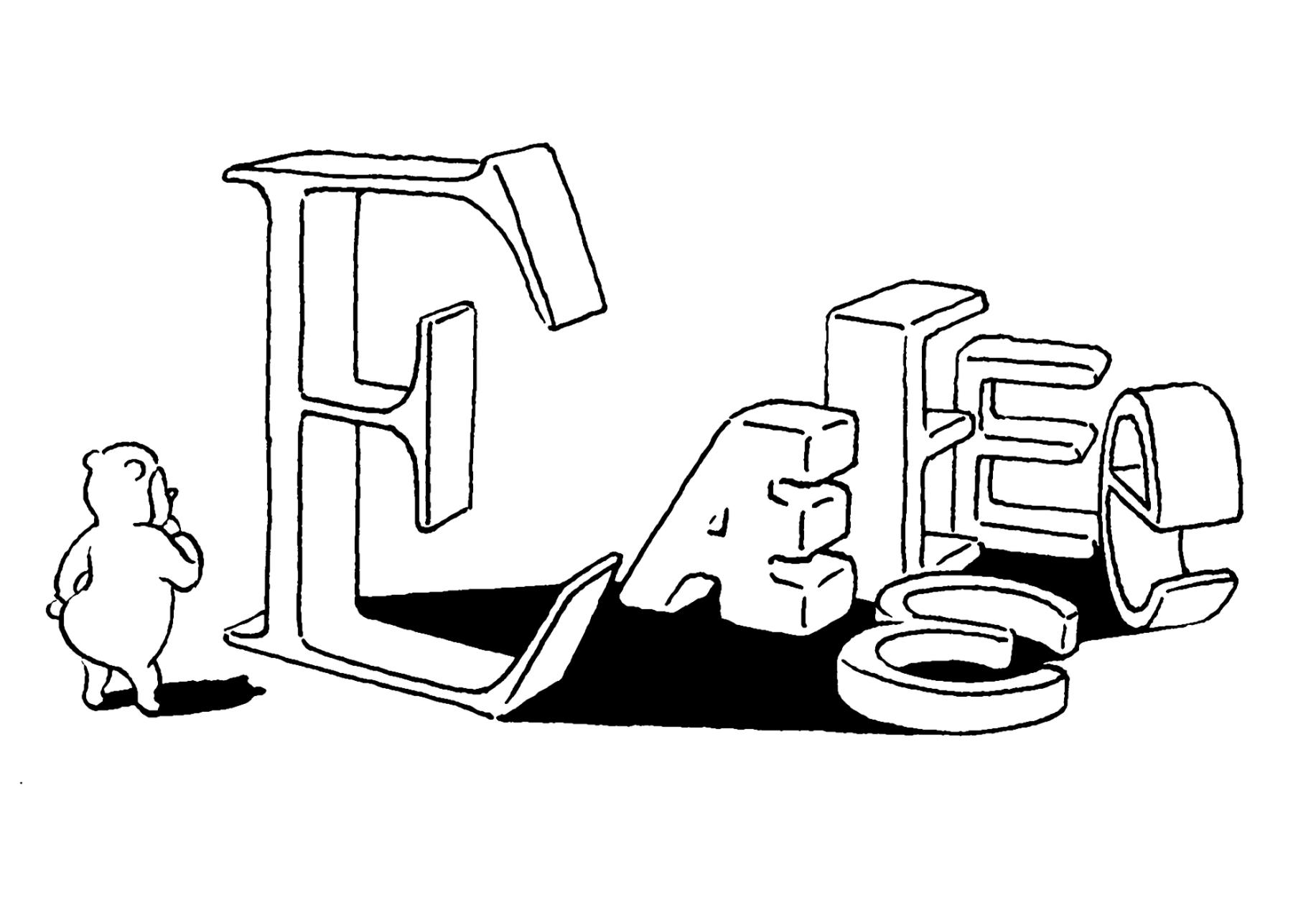
Illustration: Tezzo Suzuki .
(Read More)The word “character” is often confused with “letter” or “glyph.” But in fact, “character” is a generic term that covers letters, figures, punctuation symbols, and more.
To be more precise:
• one character can be represented by multiple glyphs (such as alternates glyphs of the same character a: single story and double story a);
• one glyph can contain multiple characters (such as ligature fl containing two characters).In computing, characters are encoded in character encoding standards like Unicode or ASCII. These standards map a character to a numerical value (also called a codepoint) that can be processed by a computer. The character is what the user types, and the glyph is what is displayed in return.
NOTE
The distinction between uppercase and lowercase doesn’t affect the linguistic value of a character. A and a are therefore considered case variants of the same character in linguistic and phonological terms. In computing and digital typography, however, A and a are assigned different Unicode code points (A: U+0041 and a: U+0061), making them distinct encoded characters in that context.
FONT ENGINEERING ADVICE
In a font file, the cmap table (character to glyph index mapping) links character’s code points to the font’s glyphs.
Character Set
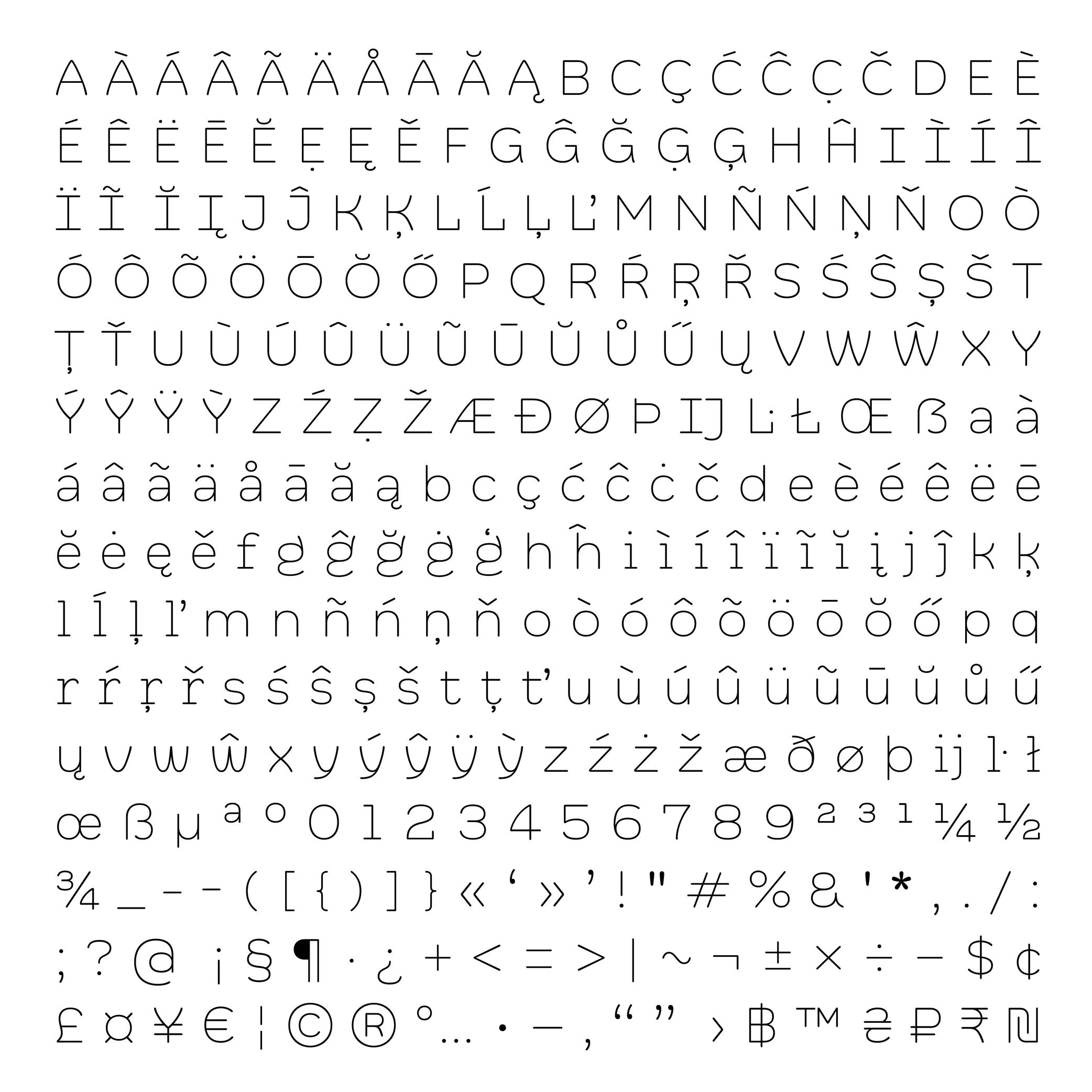
Illustration: Words of Type. Typeface in use: Knowledge Rounded, designed by Lisa Huang, 2024.
(Read More)A character set is a list of glyphs (letters, figures, symbols, ligatures, punctuations, etc.).
In digital fonts, character sets (also called encoding lists) contain the glyphs of a font with their individual names and Unicode references.
There are multiple character sets specific to various scripts or languages, as each contains the needed glyphs used by its respective language. Separated character sets per script or language allow a smaller and optimized file size.In the context of a type design, a character-set is a group of encoded glyphs, while a glyph-set encompasses all the glyphs of a typeface—whether encoded or not.
Classification
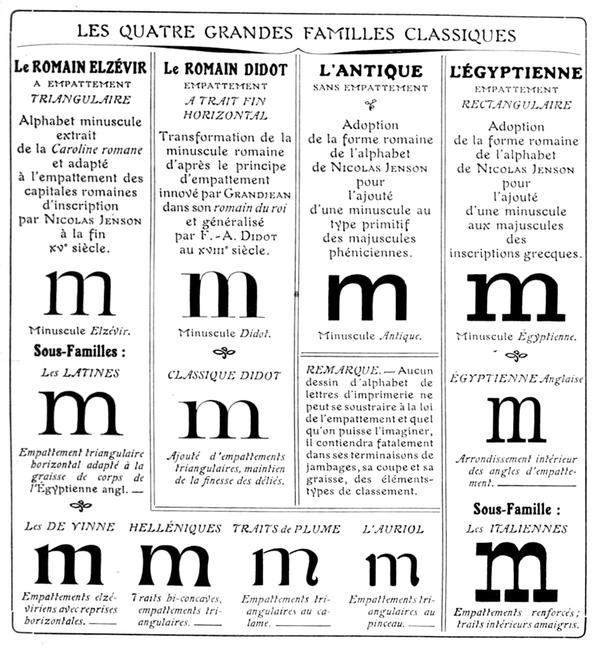
Francis Thibaudeau’s typographic classification, from Manuel français de typographie moderne, Francis Thibaudeau, 1924. Collection of Bibliothèque nationale de France (French National Library).
(Read More)With the many styles and designs of typefaces that exist, it can be difficult to describe, sort, or even find them in a catalog that isn’t familiar to the user.
Each writing system has its own typeface classification categories that best suit its nature and history. As aesthetic values differ from one culture to another, the same (or similar) style may not convey the same impression across different scripts, and one category considered a convention for one script is not always relevant to others.

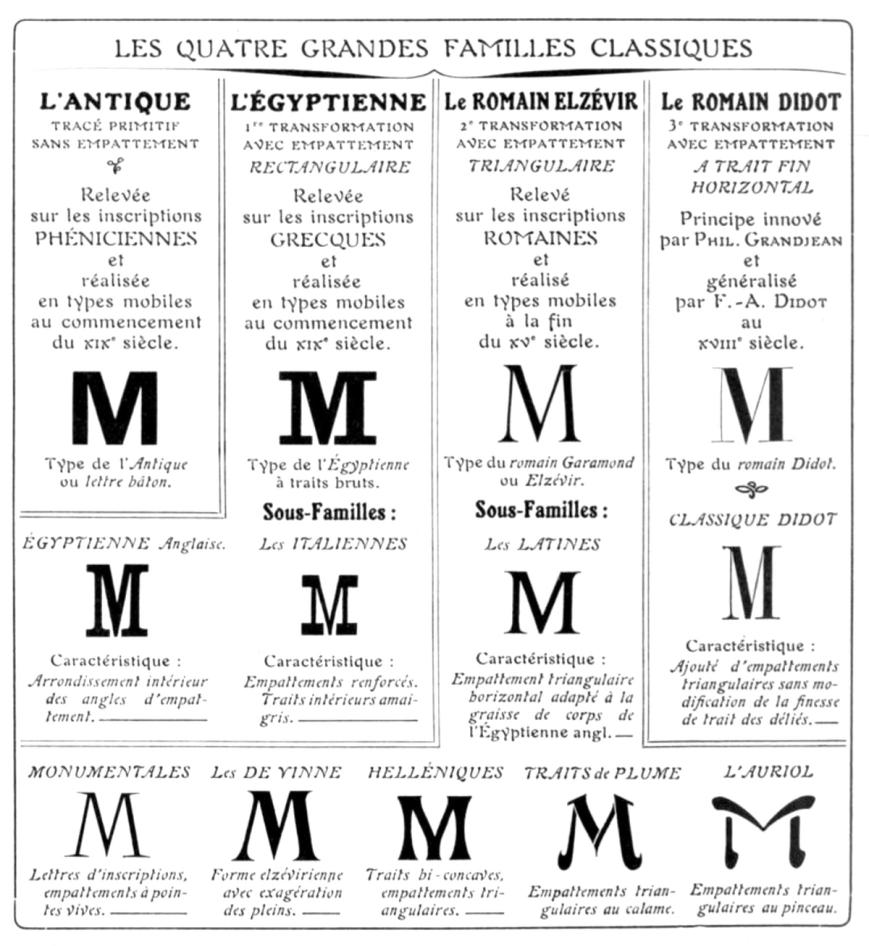
For example, Latin typefaces have been sorted into multiple classification systems since the beginning of metal typesetting. Here are some of them:
- Thibaudeau, by French typographer Francis Thibaudeau in 1921, with four categories: Elzévirs, Didots, Égyptiennes and Antiques;
- Vox (or Vox-Thibaudeau), by French historian Maximilien Vox in 1954, who started with the Thibaudeau classification as a basis and added more categories to include the additional typeface styles in the Deberny & Peignot type foundry’s library;
- Vox-ATypI, with additional categories and subcategories by the ATypI (Association Typographique Internationale) from 1962 to 2021.
Today, classification systems vary from one type foundry to another, using more or less “standardized” terms better suited to their own catalog or the scripts covered. These boxes also help users find what they are looking for in a wide variety of choices. They are not rules to be followed to the letter. Imagination and creativity shouldn’t be confined!
Coherence
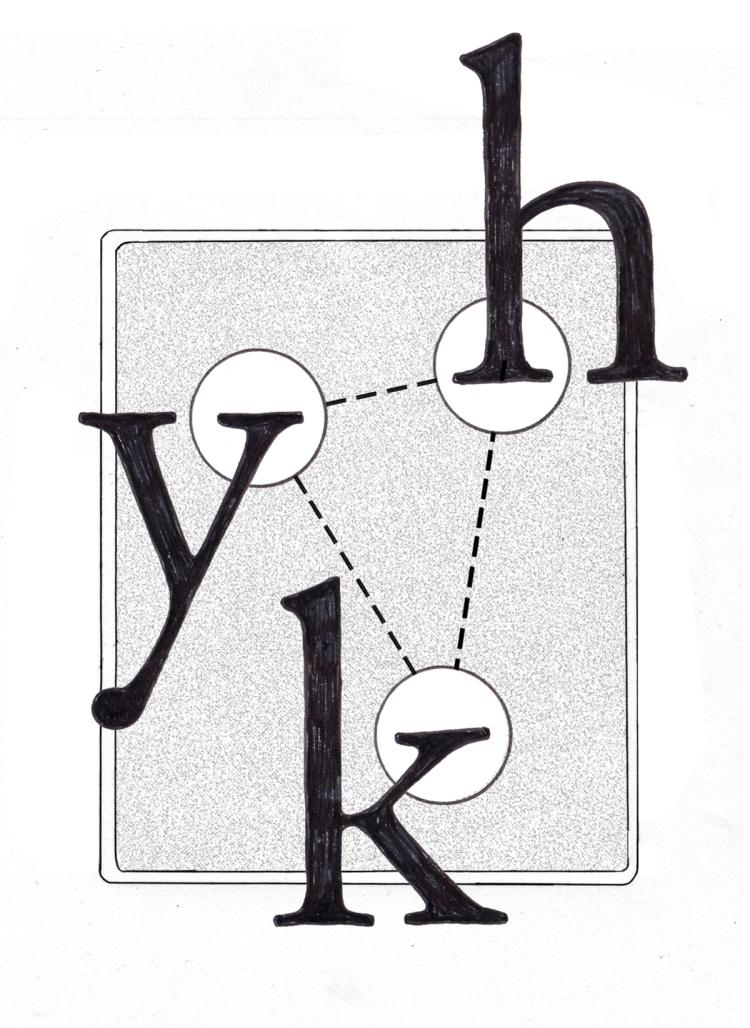
Illustration: Chloe Kendall .
(Read More)It is important to manage the coherence (or consistency) of the shapes of all glyphs in a typeface to create a unified set. This includes the shape of the serifs, thickness of the strokes, proportions with one another, spacing, etc.
Colon
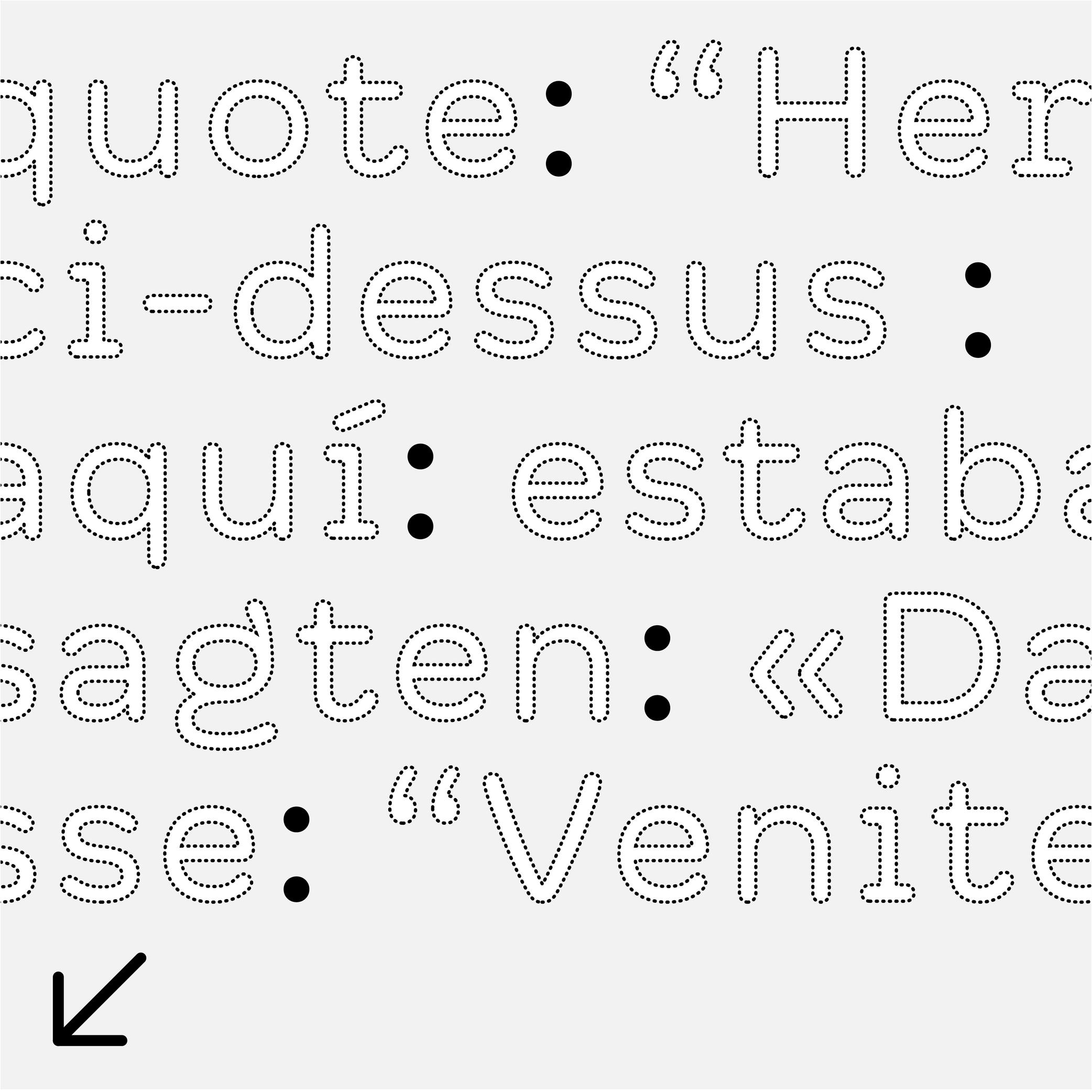
Sponsor Word of Type and feature your typeface in this card with a linked caption. Contact us for more information.
(Read More)FUNCTION
A colon indicates the beginning of a quote, a list, a ratio within numbers, or it can be used to indicate time in between two numbers.
HISTORY
The colon has been used in various languages for various types of uses. Scribes during Europe’s Middle Ages began using it as we do nowadays.
DESIGN
The colon is built with two periods on top of each other. The top one is placed just below the x-height and the bottom one sits on the baseline.
TYPOGRAPHIC RULES
There is no space before the colon in a sentence, and is followed by a space (U+00A0). But this rule doesn’t apply to every Latin language!
Colophon
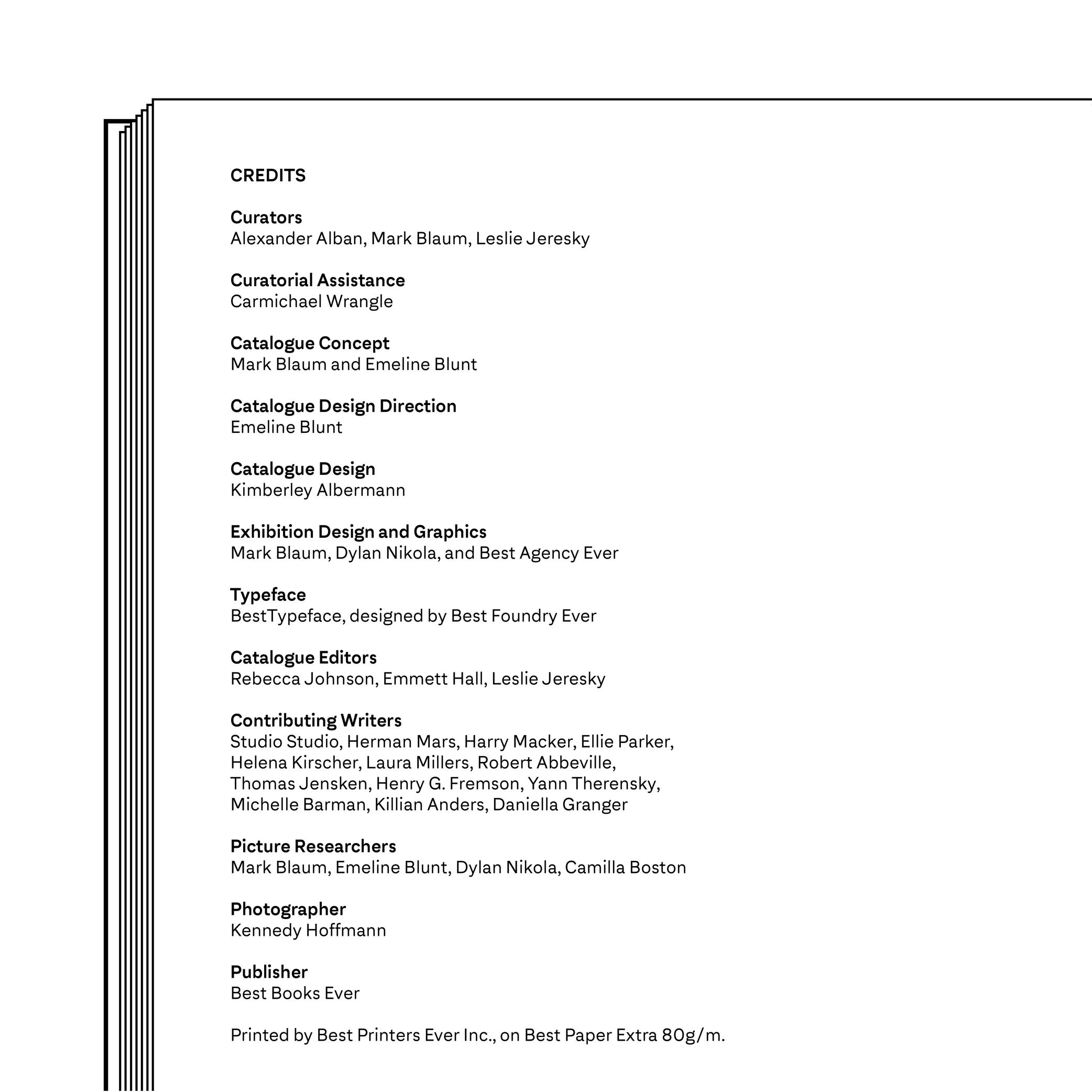
Illustration: Words of Type. Typeface in use: Archipel, designed by Lisa Huang, 2024.
(Read More)Also called imprint.
A colophon is a suggestive list of information about the production of a work or project. It can range from names and roles of people involved, typefaces or brand and kind of paper used, manufacturer and location of production, to hosting domain for websites, and more.
Color
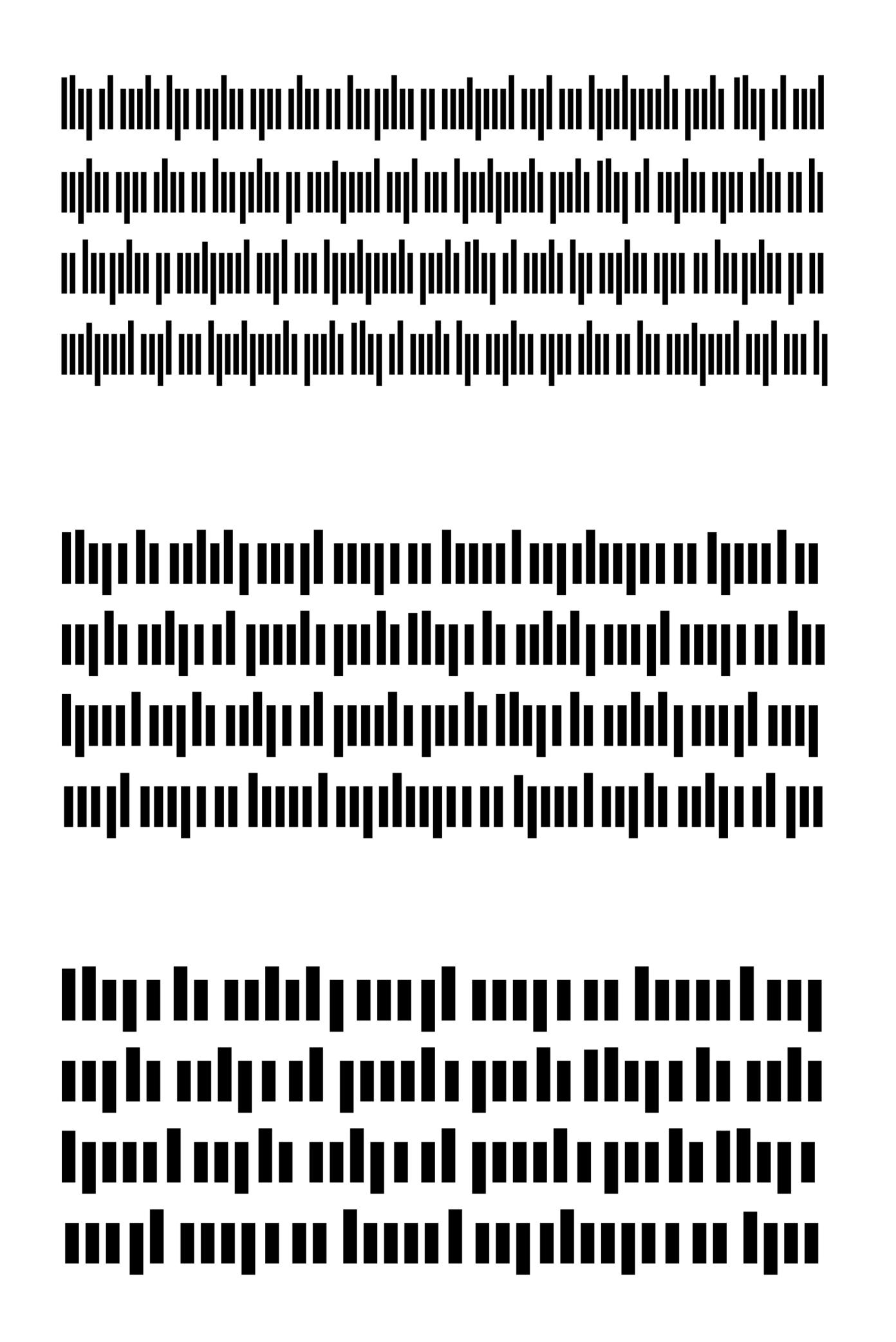
Illustration: Words of Type.
(Read More)The color of a text is the quality of its visual texture given by the design of the typeface in use.
Different settings such as spacing, leading, frequency of some letters or diacritics can also influence the typographic color.
Comma
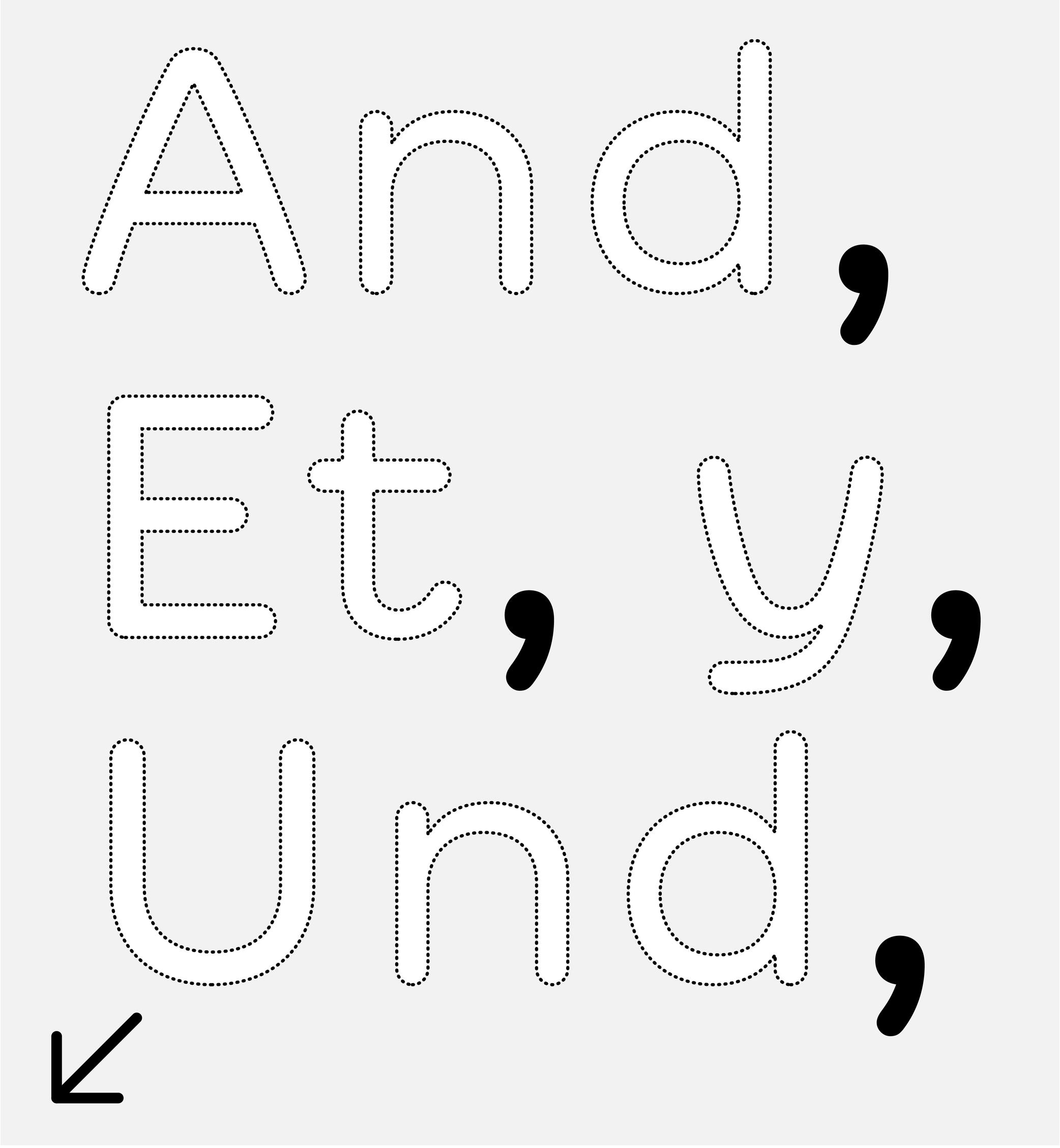
Sponsor Word of Type and feature your typeface in this card with a linked caption. Contact us for more information.
(Read More)FUNCTION
A comma separates parts of a sentence to mark a short pause or following ideas. If not overused, it helps improve the reading experience. It is also used in numbers to visually separate figures of larger categories. In the United States and most other English-speaking countries, in numerals of one thousand or more, a comma is used in between groups of three digits counting from the right (where a period is used for the same purpose in other European languages).
HISTORY
In Europe, the origins of many punctuation symbols, including the comma, come from the inventions of Greek scholar Aristophanes of Byzantium (3rd century BC) who created a set of symbols to help with the reading of texts aloud.
DESIGN
The comma is basically a period with a tail. It has to be designed with enough differences to the period so that both can’t be confused with one another, even in smaller text sizes.
TYPOGRAPHIC RULES
A comma has no space before and is always followed by a space (U+0020) when used in a sentence. In numbers with decimals, it is used as such:
(European languages) 15.000,05
(English) 15,000.05
Compatibility
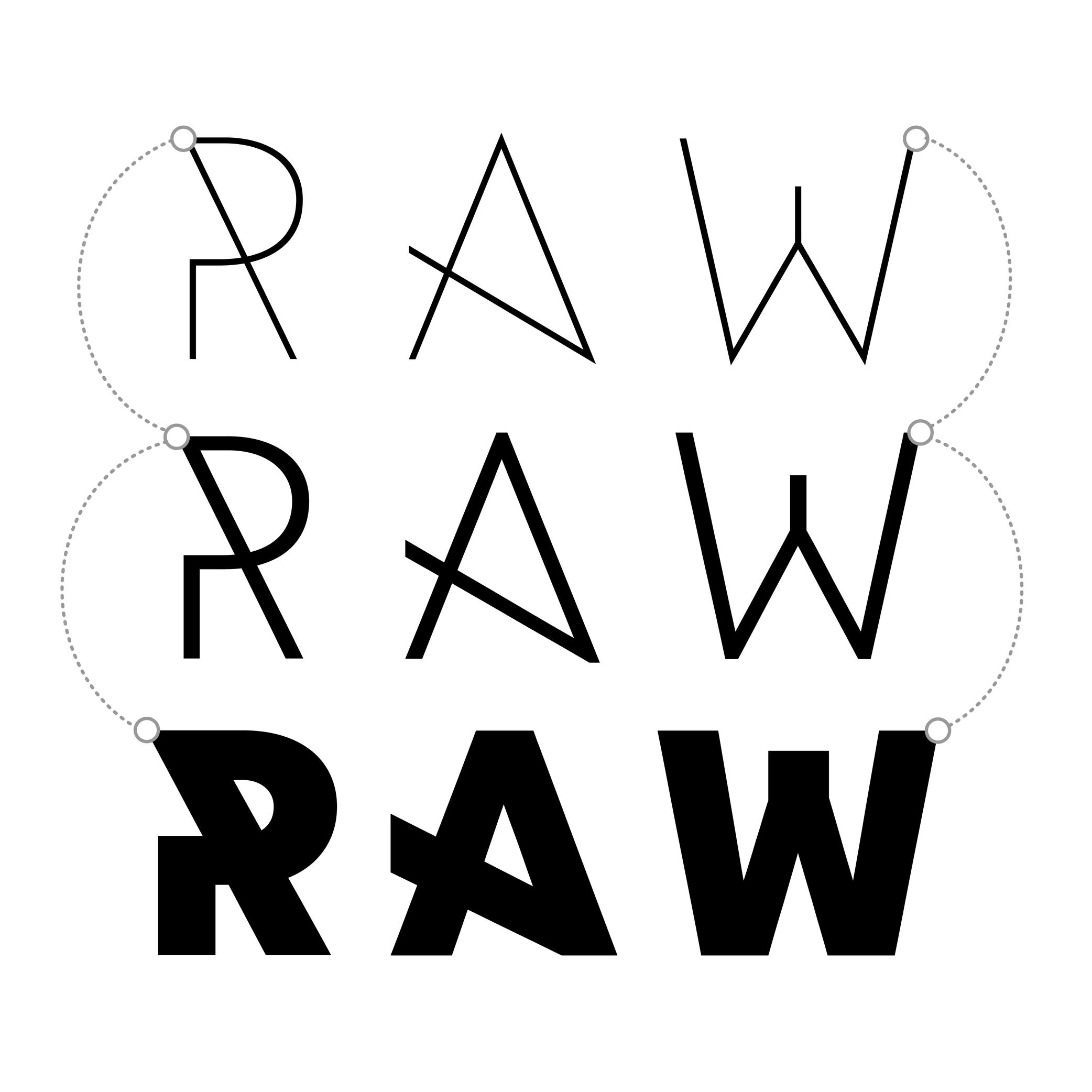
Sponsored by NM type . Typeface in use: Movement Direct , designed by Noel Pretorius & María Ramos, 2019.
(Read More)Variable Fonts technology allows users to navigate between two or more specific styles (called masters or sources) with high precision and much smaller font file sizes than several static fonts.
Outline compatibility allows the interpolation of vector shapes, enabling the generation of intermediate instances between two source files. This is essential for Variable Fonts, but even in static font design, maintaining compatibility is beneficial: it spares the designer from manually draw in-between weights or styles as separate masters, when they can be automatically created during the export.
For each glyph, compatibility means:
• same number of points, in the same order;
• same number of contours, in the same order and direction;
• same number of components, in the same order.Component
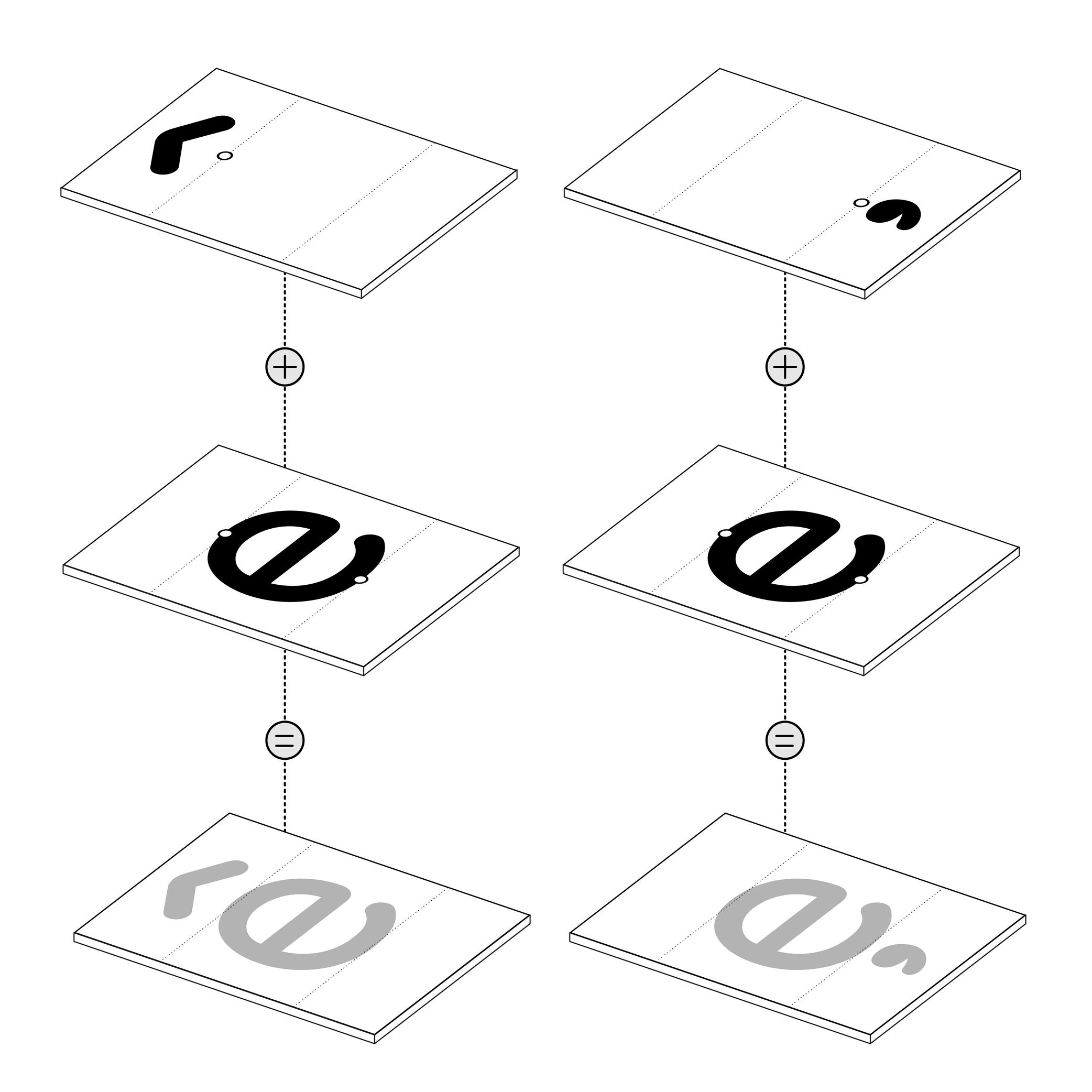
Illustration: Words of Type. Typeface in use: Knowledge Rounded, designed by Lisa Huang for Words of Type, 2024.
(Read More)Many shapes in a digital font are repeated identically across glyphs. These repeated elements can be turned into components. Components are reusable parts stored as separate glyphs which can be borrowed to form another glyph. For example, the letter é is made of the combination of two components; the base letter e and the acute accent.
Using components instead of copying contours keeps shapes consistent and helps reduce the font file size.
• A glyph made only of components is called a composite.
• A glyph that combines both contours and components is called a mixed composite. Mixed composites are not permitted in the final binary font (exported font) files. As a result, they are usually decomposed during export.
• When a component references another component, it is said to be nested.
• A component is considered as aligned when it is reused in a glyph without transformation.For design purposes, components can be transformed — shifted (translated), scaled, rotated, skewed, flipped, or mirrored. Transformed components may need to be decomposed, especially if the transformation alters the contour direction (such as mirroring), which can affect its appearance on the pixel grid.
FONT ENGINEERING ADVICE
The component system is a compression strategy used in TrueType fonts to reduce file size by referencing repeated shapes across glyphs. In contrast, PostScript-based fonts (OpenType-CFF flavor, with the .otf extension) use a different space-saving method called subroutines—small sections of path instructions that can be reused. Because subroutines operate at the path level rather than referencing entire glyphs, components are typically decomposed during export so their outlines can be stored and reused within these subroutines.
Construction
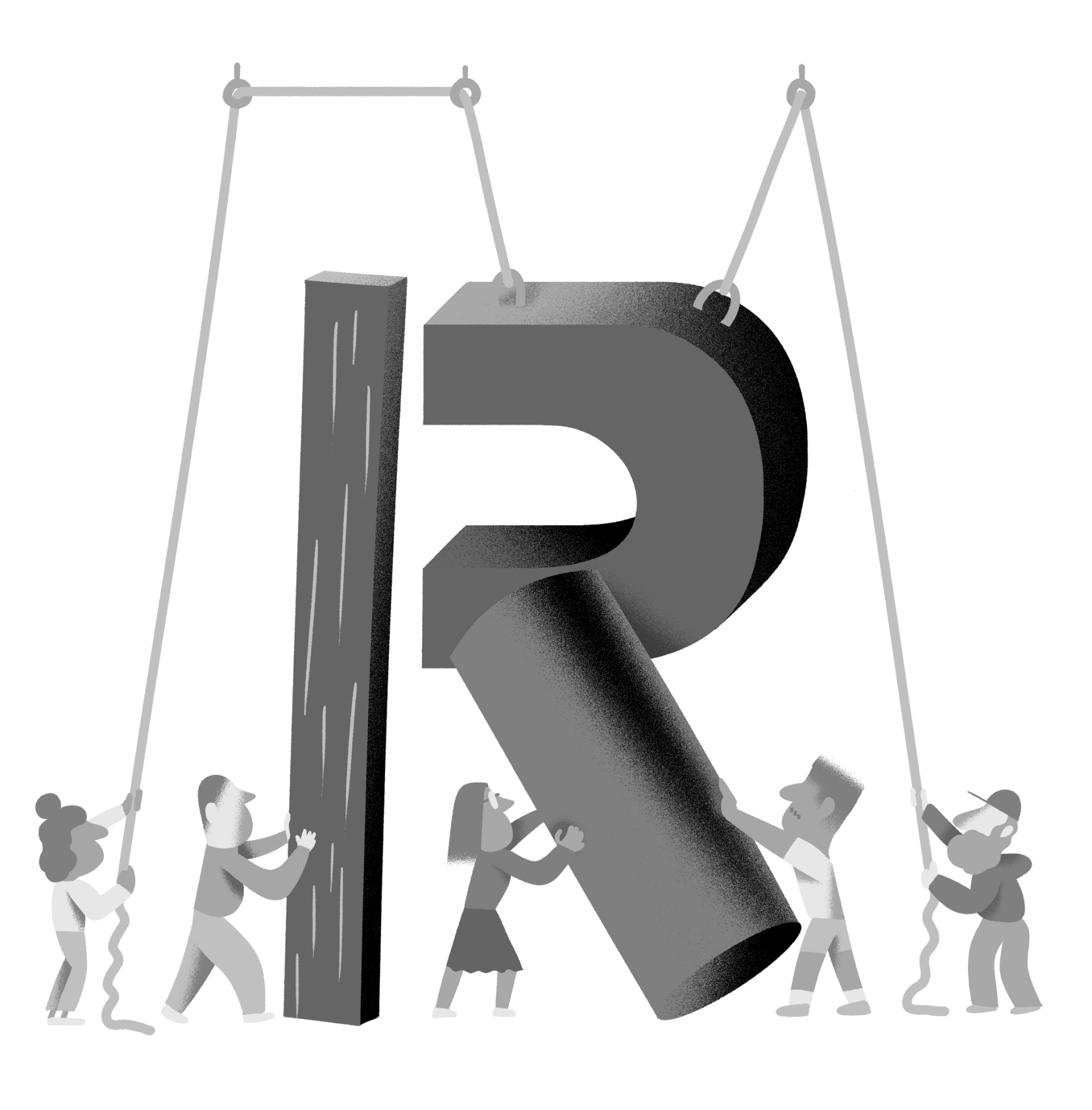
Illustration: Yann Bastard .
(Read More)Letters, characters and other glyphs of every script are written with a specific number of strokes of a particular shape. This is the glyph construction.
This construction went through multiple evolutions over time and at different pace for each script, being influenced by various circumstances (tools in use, style preferences, needs, etc.).
Contour
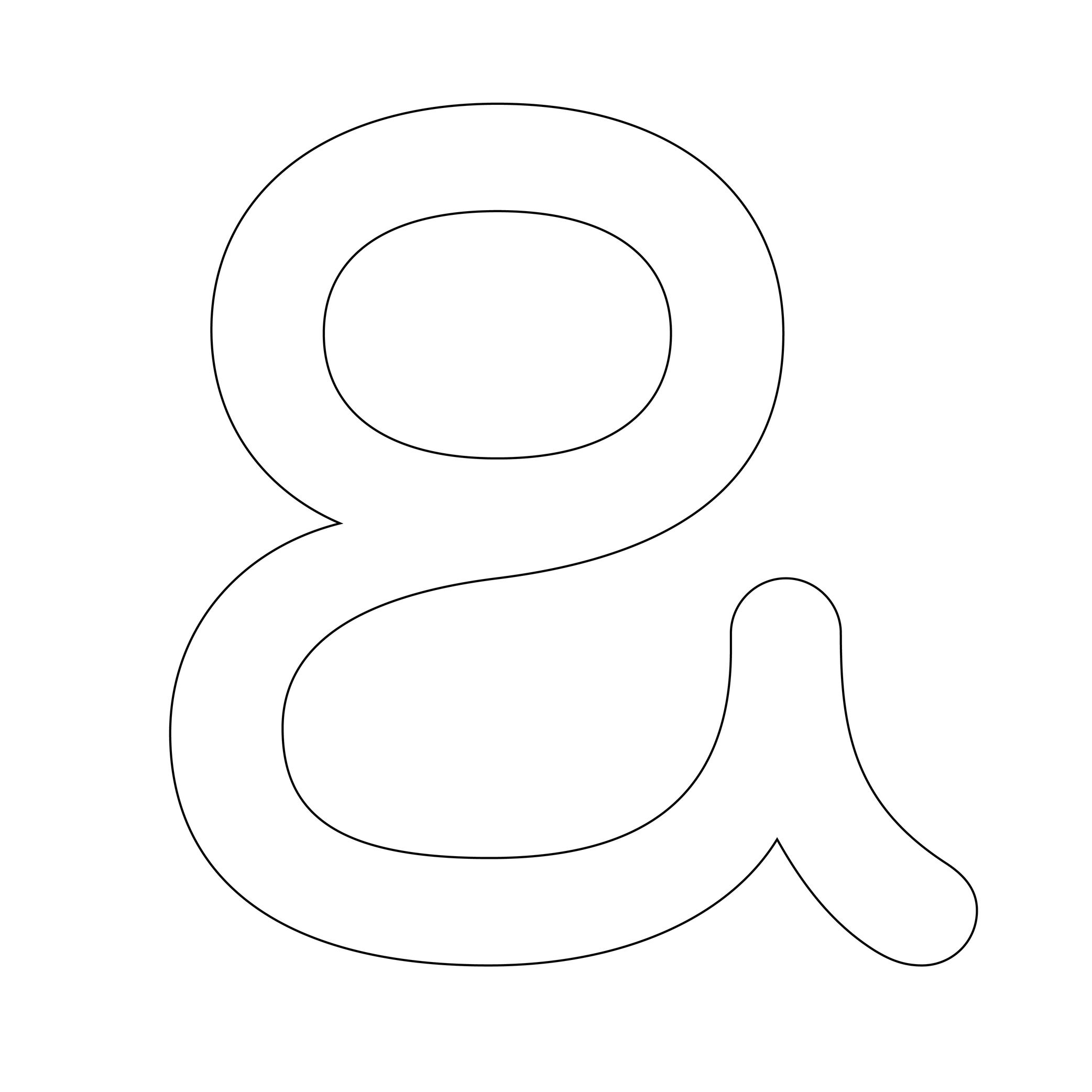
Illustration: Words of Type. Typeface in use: Knowledge Rounded, designed by Lisa Huang, 2024.
(Read More)Also called Outline.
The shape of a glyph is defined by one or more contours. In digital typeface design, the contour is what the designer draws. What the user sees on screen or in print is the filled shape in between these contours.
Contours and outlines are related but not exactly the same. An outline is the full outer shape of a glyph: it defines what the glyph looks like overall. While a contour is one continuous closed path within that outline. For example, the outline of the letter O typically has two contours; one for the outer circle and one for the inner counter (the transparent “hole”).
Contrast
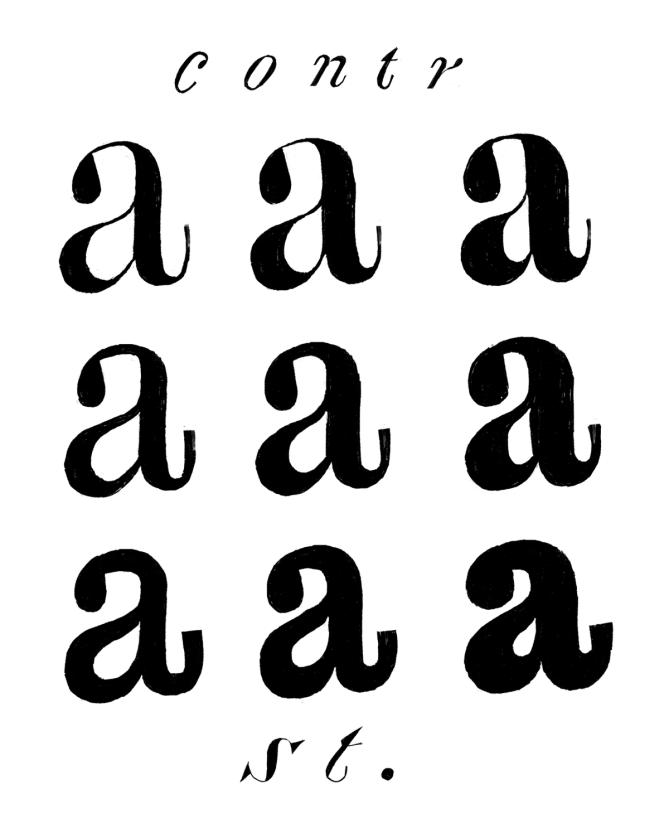
Illustration: Erik van Blokland .
(Read More)The contrast is the relationship between a glyph’s thick and thin parts.
The thickness variation in a stroke comes originally from handwriting, as a result of the tool’s reaction to the medium in combination with how it is held and the writer’s movements.
Nowadays, in Latin type design, we speak of a vertical contrast when the vertical parts are thicker than the horizontal ones, it is its “natural” contrast. And the opposite is known as a reversed or inverted contrast.But these concepts only apply to scripts that evolved using tools and a medium that creates such contrast “naturally”, which is not universal for all. For example, the Hebrew script’s contrast would naturally be distributed the other way around.
Counter
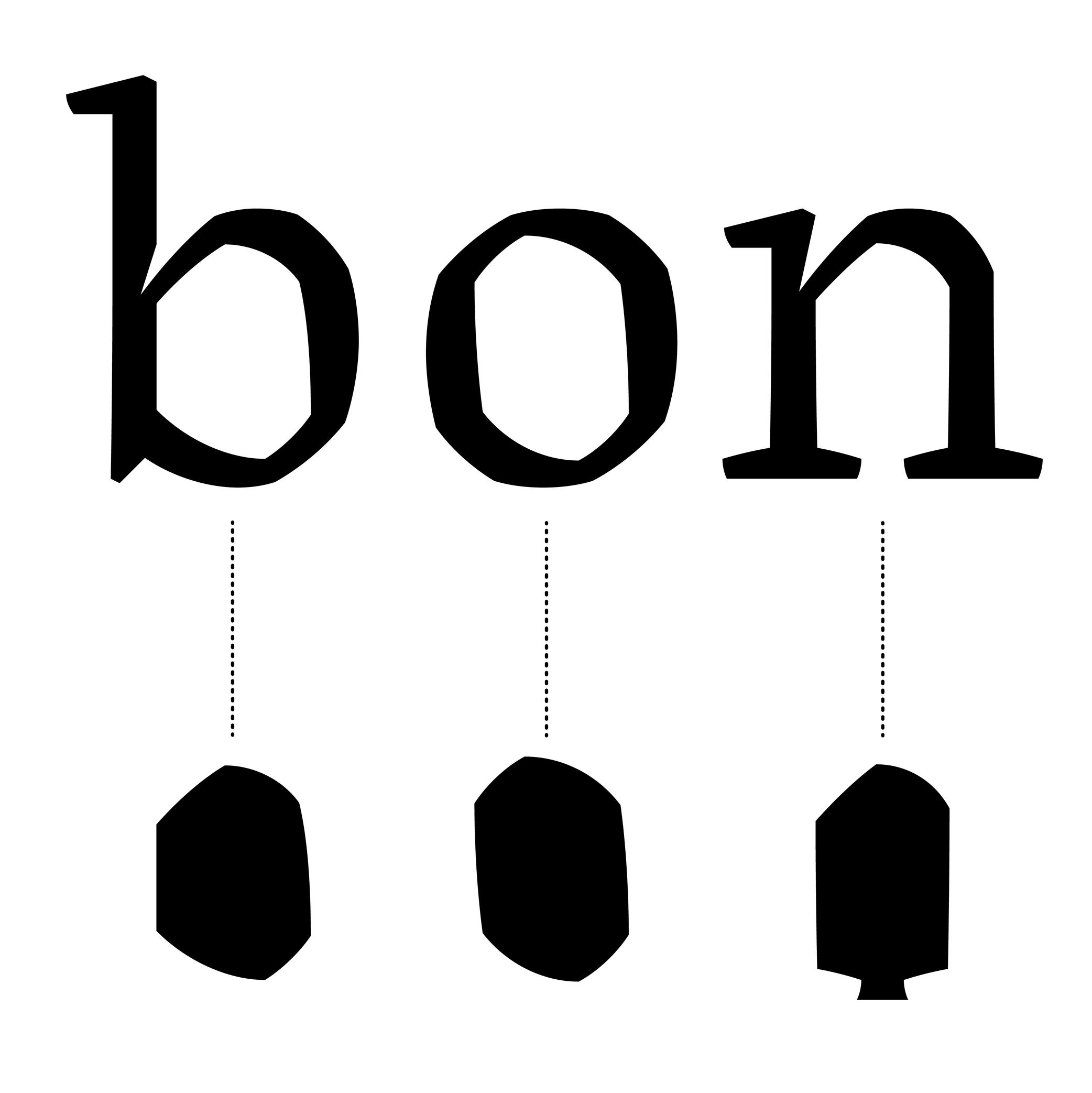
Sponsored by NM type . Typeface in use: Sastre, designed by María Ramos, 2024.
(Read More)Also called counterform.
A counter is the negative shape inside a glyph with an enclosed form, either entirely closed (such as b) or partially open (such as n).
This term comes from the counterpunch. Punchcutters used counterpunches to depress the white spaces inside letterforms while making the master punches for metal-type sorts.
Concretely, they would strike the counterpunch into a larger steel punch. Afterward, the punchcutter filed down the outside of the punch, creating the letterform’s exterior contour. Punchcutters could reuse a counterpunch on any related letterforms in the typeface, keeping a consistent look throughout an entire font.TYPE DESIGN
In digital type design for Latin scripts, it is important to keep this consistency as well, with various techniques, such as putting the component of a reference letter in the background or copy-pasting the contours of the counter, or making sure that they visually look consistent by placing them next to each other while designing the shapes.
Crossbar
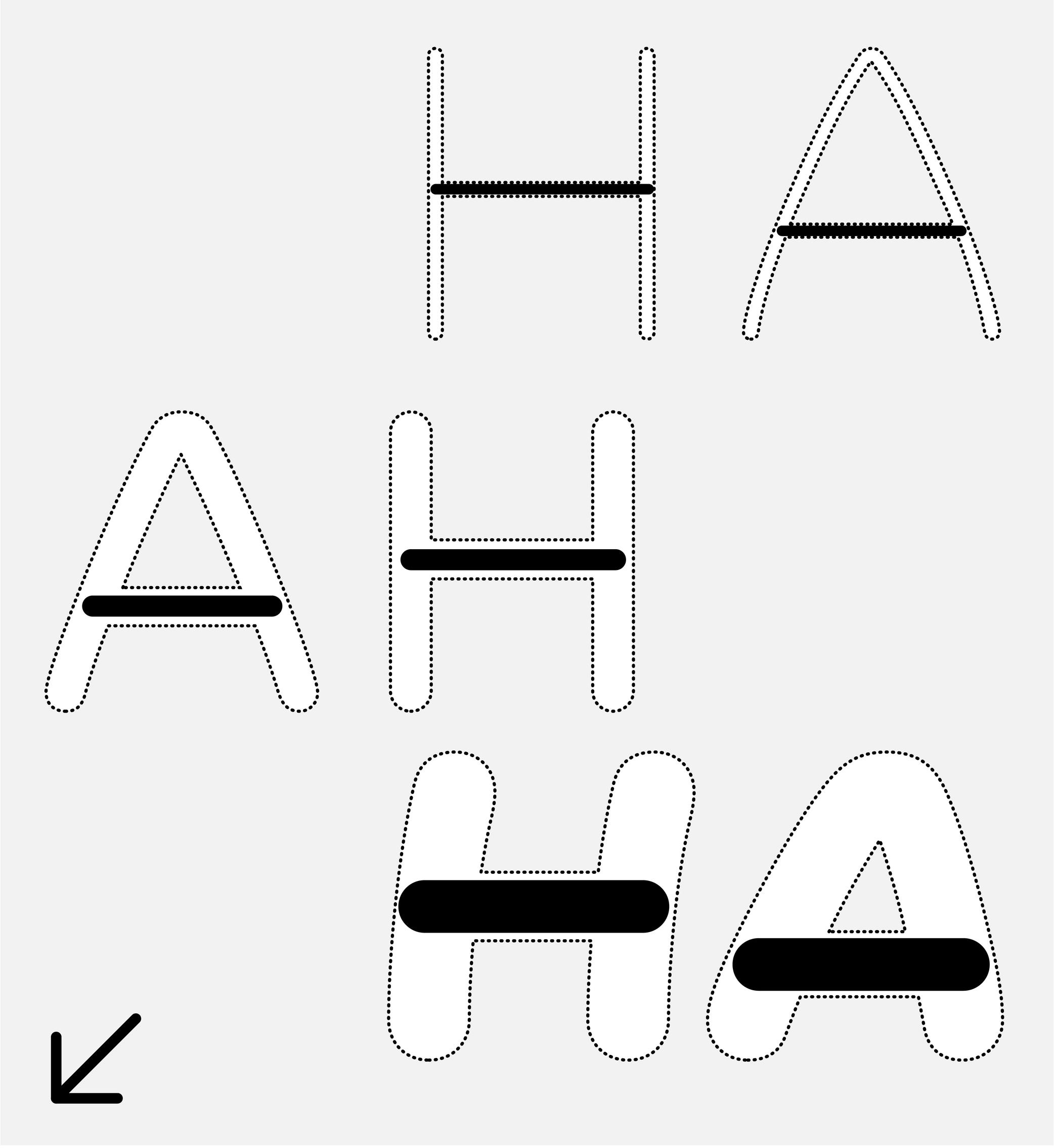
Sponsor Word of Type and feature your typeface in this card with a linked caption. Contact us for more information.
(Read More)Many terms are borrowed from architecture or human and animal anatomy to designate and describe parts of letters and other characters. We are even speaking of type design anatomy.
For Latin script, the crossbar is the horizontal bar on letters like A or H.
Currency
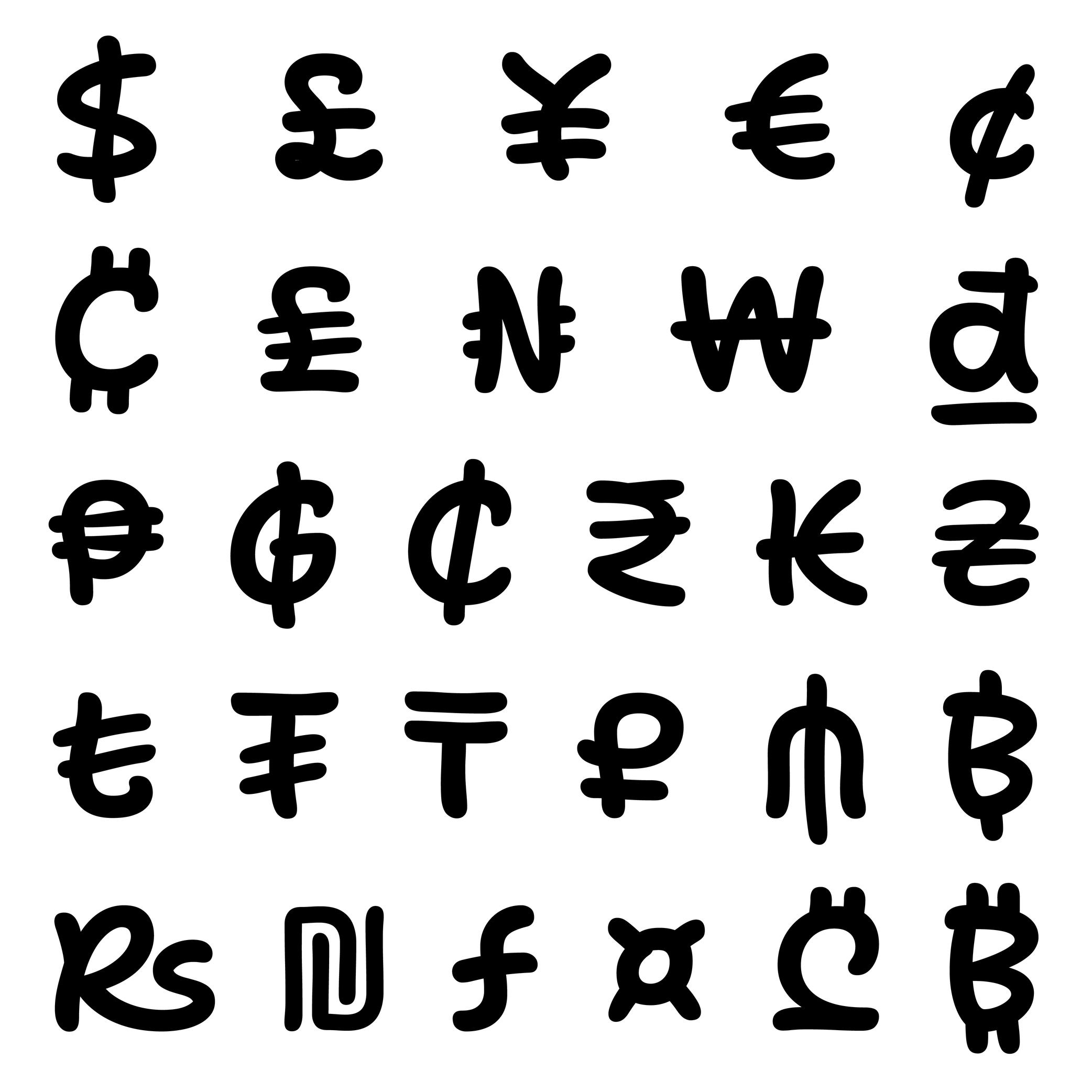
Sponsored by ArrowType . Typeface in use: Shantell Sans , designed by Shantell Martin and Stephen Nixon, available at Google Fonts, 2023.
(Read More)Every currency symbol carries one function: to give a financial value to numbers. Each of them evolved through time. Some of them disappeared or have been modified to follow the needs of various civilisations.
For most of them, currency symbols are made of Latin letters with various levels of modifications (US dollar $, Euro €, Vietnamese dong ₫). Some of them can simply” be letters (Swiss CHF) or a character on their own (Chinese Yuan 元).
DESIGN
Currency symbols need to be designed in a good balance with figures, as they are combined with them.
In a typeface family with a wide range of weights, currency symbols of the lightest styles can easily carry every stroke and conventional details. But as the style gets bolder, these can be tricky to keep, especially when too many details darken the symbol to a point where it is hardly recognizable. The most common solution is to simplify the symbol by removing some “less” important parts while keeping the symbol’s legibility.
Custom
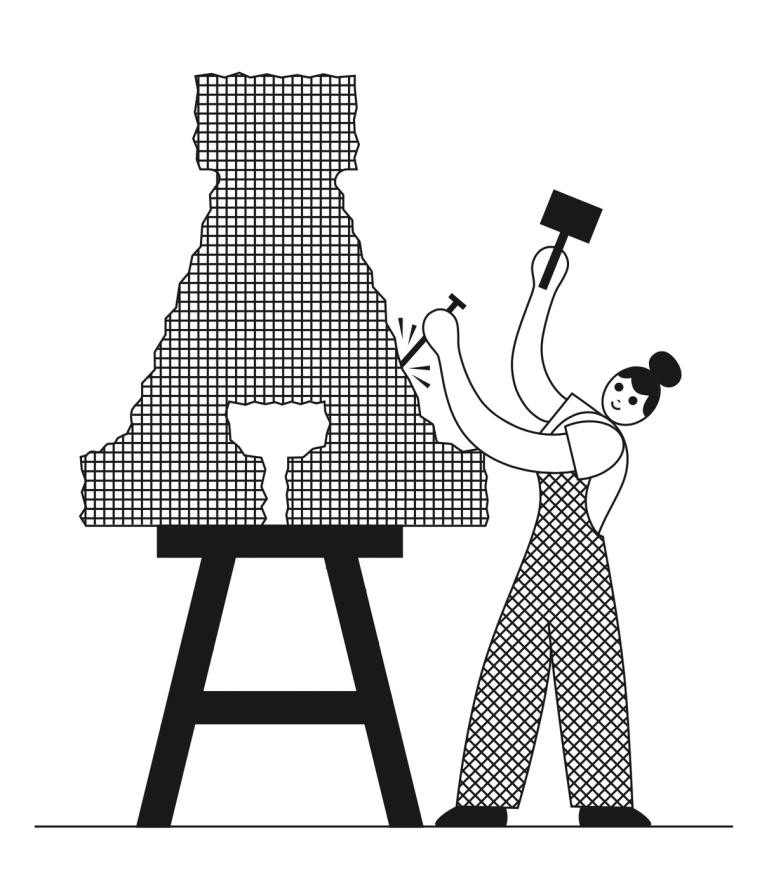
Illustration: James Graham .
(Read More)Companies, brands, institutions and so on can find great benefits in using and/or owning a custom-made typeface with a design that fits their voice. Unlike retail typefaces, they can be used as an important and exclusive element of the visual identity and be fully suited to their needs.
A custom typeface costs more at first than a license of an existing retail one (the client can have a design for their exclusive use instead of a retail design that may be used by many others). Still, it can be financially and strategically more interesting, and profitable than licensing retail typefaces in the long run. The pros and cons between these choices are worth the effort of comparison and evaluation.
Dash
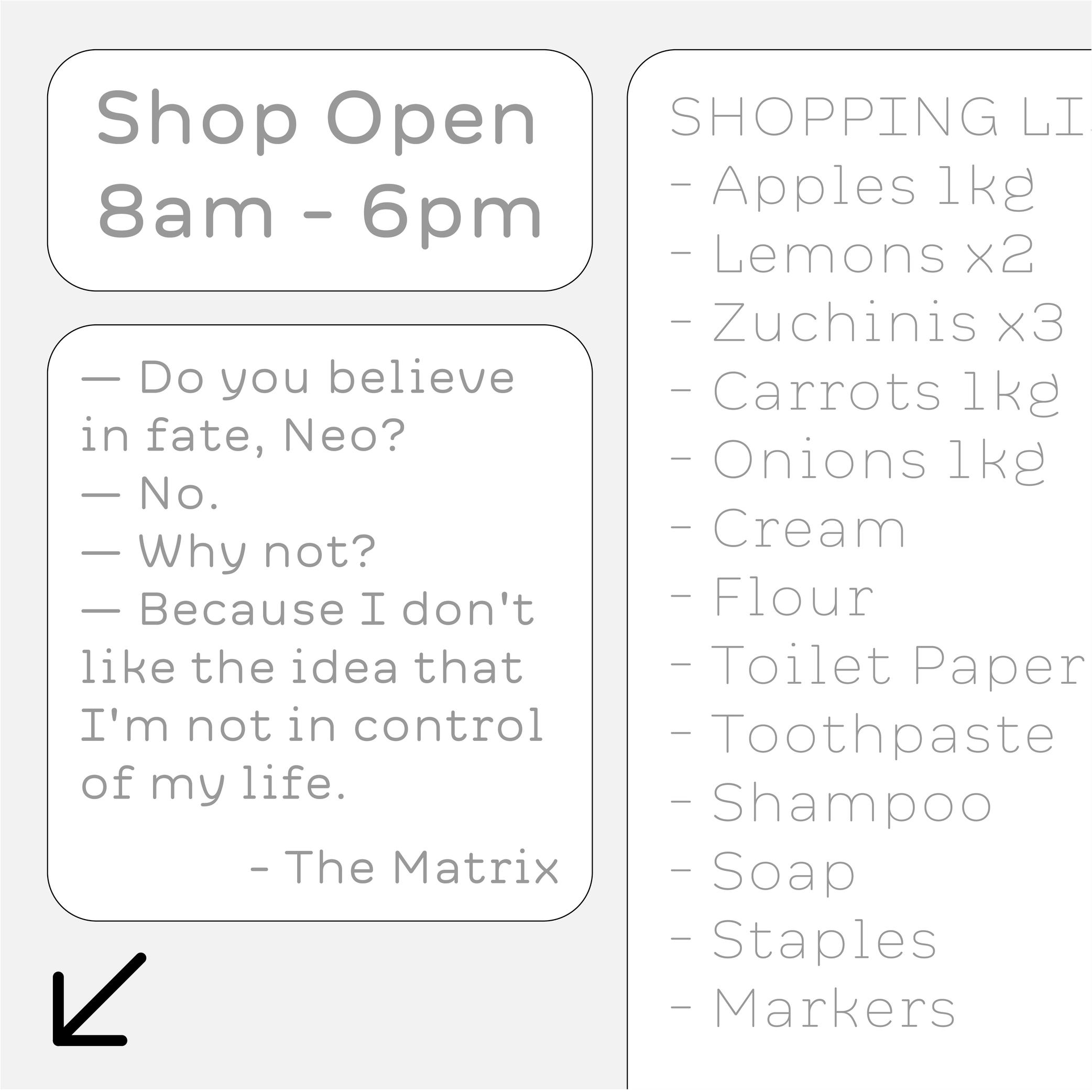
Sponsor Word of Type and feature your typeface in this card with a linked caption. Contact us for more information.
(Read More)USAGE
Among the multiple types of dashes (yes, there are many!), the most common ones are:
1. en dash, used:
- to indicate a list;
- to indicate a closed range (as a substitute of words ‘to’ or ‘between’);
- (less common) to hide letters in a word;
- to connect words in compounds (in some languages)
2. em dash, used:
- to indicate lines in a dialogue;
- (less common) to hide entire words or part of one.
Both en and em dashes are also used to enclose a section of a sentence, just like a pair of parentheses, or to indicate a separation within a sentence like a colon or semicolon.
HISTORY
Before the adoption of any punctuation standard, markers of various forms were used by scribes to indicate pauses. Dashes of various lengths have been used for many kinds of roles through the centuries, and across countries. But for dash-like symbols, these evolutions left us with the en dash and em dash as principal successors.
DESIGN
Their length has been standardized during the metal type printing era (in Europe and North America), using the size of the font as a reference for their measurement as such:
- 1 em = the font size;
- length of em dash = 1 em (or sometimes the width of letter M of the font);
- length of en dash = 1/2 of 1 em (or sometimes the width of letter n of the font).
Both are placed at the optical middle height between the baseline and ascenders. In a typeface style with contrast, the thickness of the dashes has to be visually consistent with that of the thin parts.
TYPOGRAPHIC RULES
Generally, in American English, it is preferred to use the en and em dash without any spaces before and after them; whereas in British English, it is often preferred to use a space before and after an en dash, and em dashes are rarely used.
NOT TO BE CONFUSED
The en dash is particularly often confused with the shorter character hyphen (U+2010), the mathematical sign minus − (U+2212), or the hyphen-minus - (U+002D).
In digital fonts, each of these glyphs has its own Unicode. They are designed and can be accessed individually. But on modern keyboards—inherited from typewriter keyboards which had to make compromises on the number of glyphs due to the limited space available—we are still often typing (mistakenly and without always knowing) the hyphen-minus instead of the hyphen or the en dash. Thankfully, most intelligent text processing apps automatically replace these with the correct glyph depending on the context.
Descender
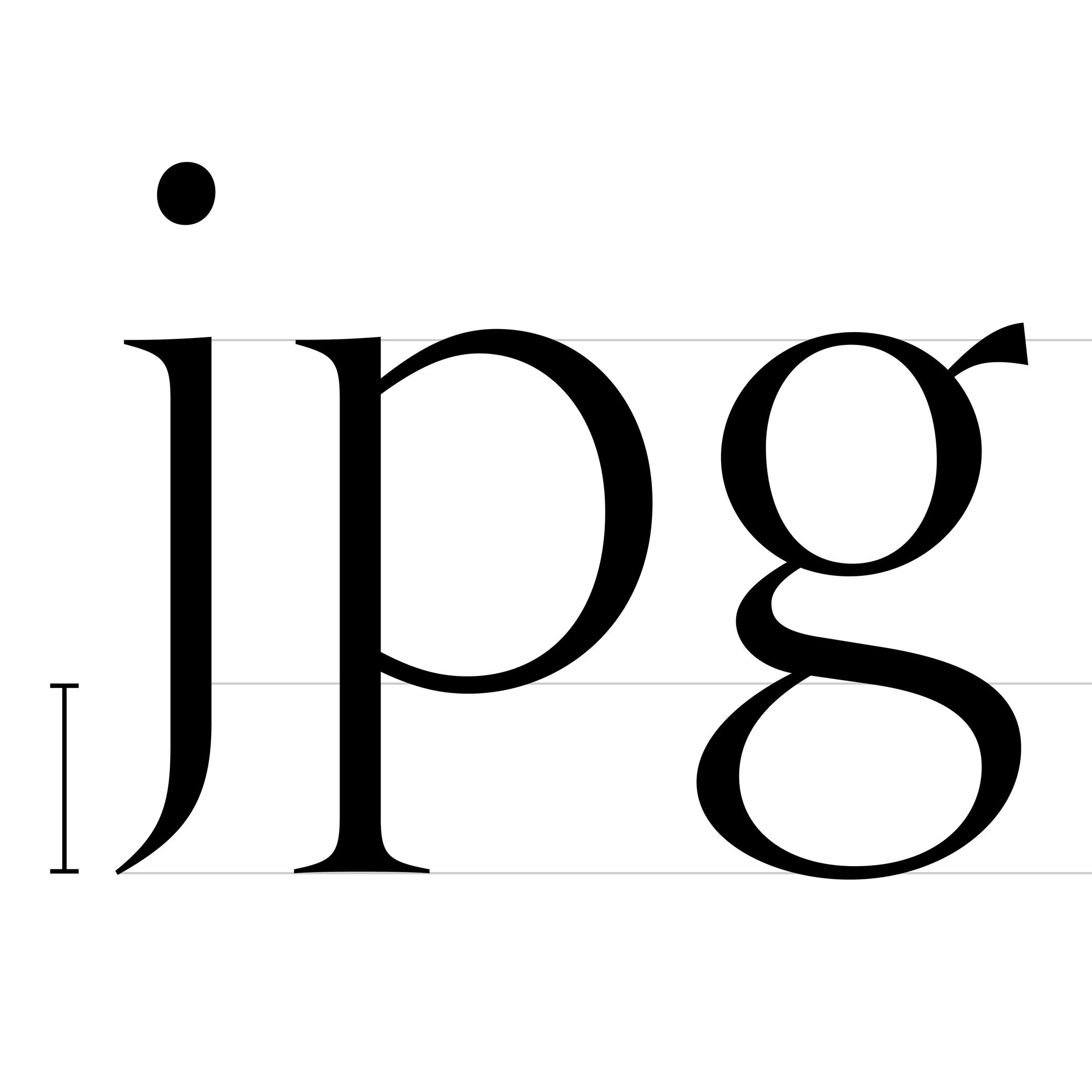
Sponsored by Frere-Jones Type . Typefaces in use: Empirica , designed by Tobias Frere-Jones, Nina Stössinger, 2018.
(Read More)The parts of lowercase letters (such as p, q or y), old style figures or some punctuation symbols going below the baseline are called descenders.
In the same typeface, all descenders need to have the same height for overall consistency.
On the opposite side, parts going above the x-height are ascenders, like in letters b, d or f.
Both ascenders and descenders don’t necessarily need to have the same length. In general, descenders are shorter than ascender
Diacritic
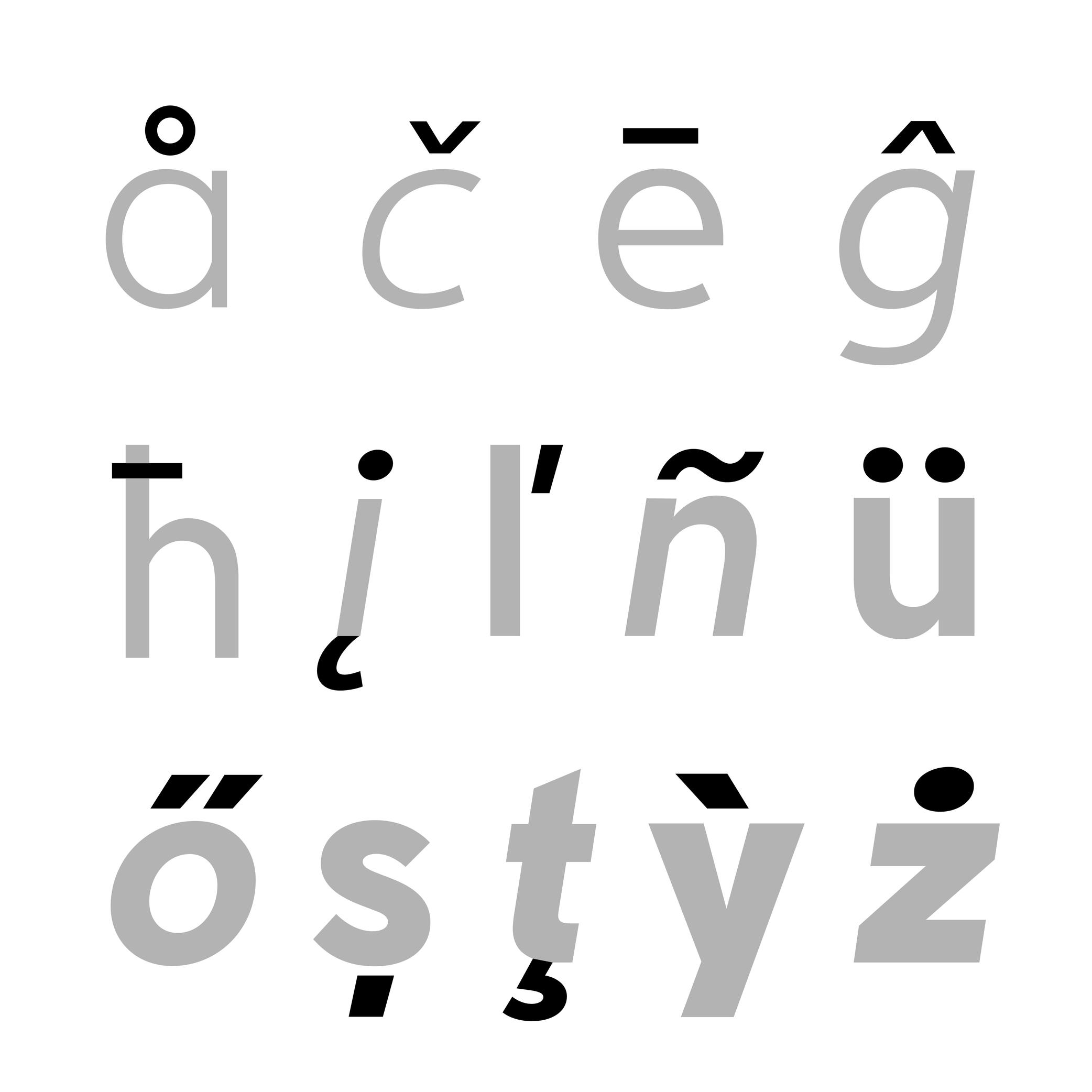
Sponsored by Nymark Type . Typeface in use: Tranemo , designed by Andreas Nymark, 2021.
(Read More)Diacritics are marks added to letters. They can be above, below, or attached to a letter. In most languages and scripts using diacritics, these bring to the letter a different sound than that of the letter by itself.
LATIN SCRIPT
The Latin script is used in a large number of languages. Most of them use diacritics to bring (sometimes very subtle) variations of sound to letters. The quality of the sound of a diacritic can be different from one language to another. An example with the cedilla ç, used in French, Portuguese, and Turkish. Other languages even use multiple diacritics combined together within the same letter (like in Vietnamese with ở).
ARABIC SCRIPT
In the Arabic script, letters have different pronunciations depending on which diacritic is attached to them (or not there), and the language in use.
CHINESE PINYIN
In Mainland China during the 1950s, a new phonetic transcription system was created to make Chinese learning easier: Pinyin, which borrows Latin alphabet letters combined with diacritics as tone markers.
DESIGN
When creating a typeface, diacritics are designed as individual glyphs and are then combined with letters as components in type design applications. They need to be:
- visually aligned to the same height with one another (for those placed in the same area);
- have consistent weight and color;
- placed in a position with the letter that feels “natural” for each language.
Display
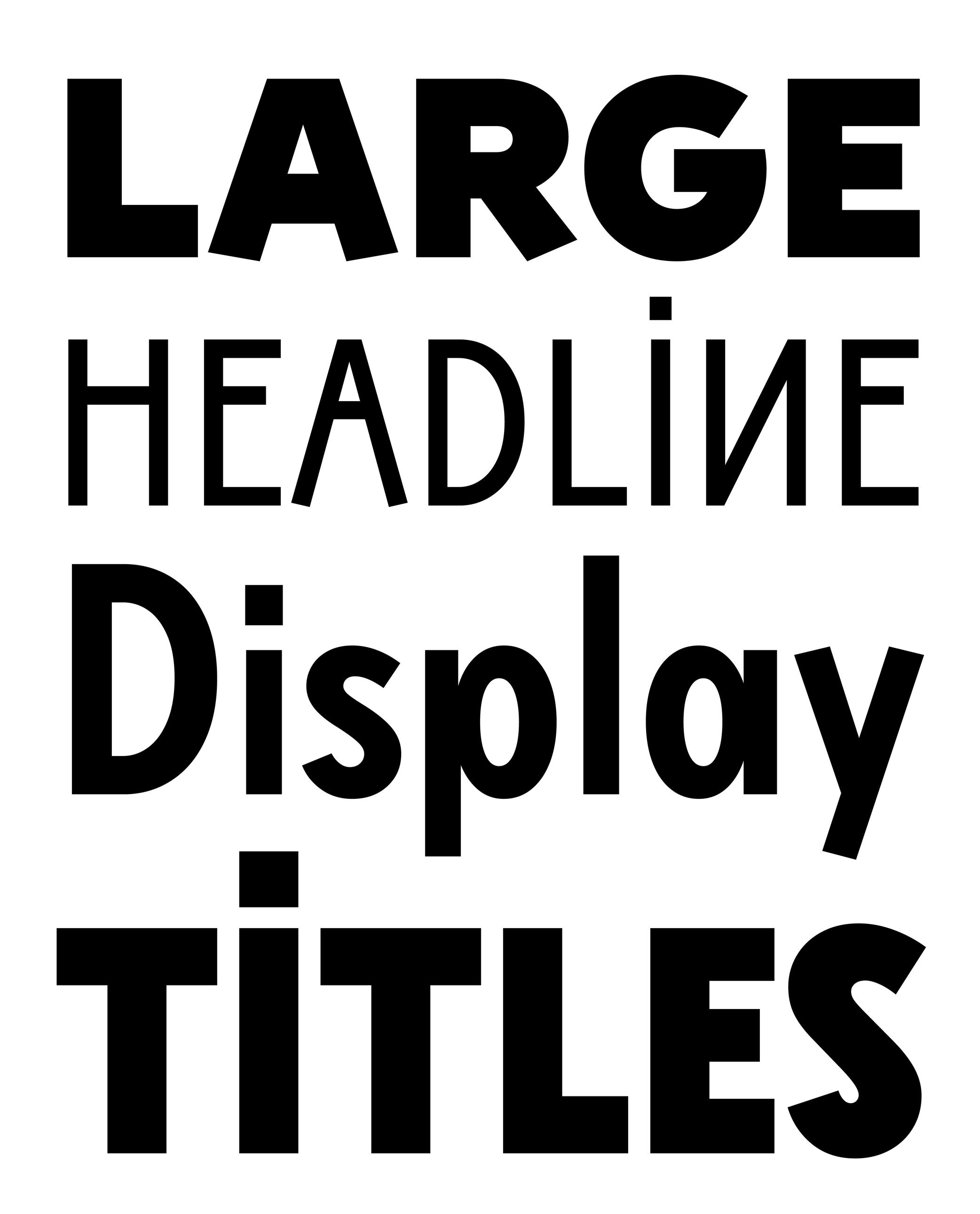 (Read More)
(Read More)Display (or Titling) typefaces are designed and used at large sizes to catch the reader’s attention (in posters, billboards, newspaper or magazine titles, covers, etc.).
In order to do so, they have more elaborate designs and/or exaggerated details than typefaces for running text.
Drop
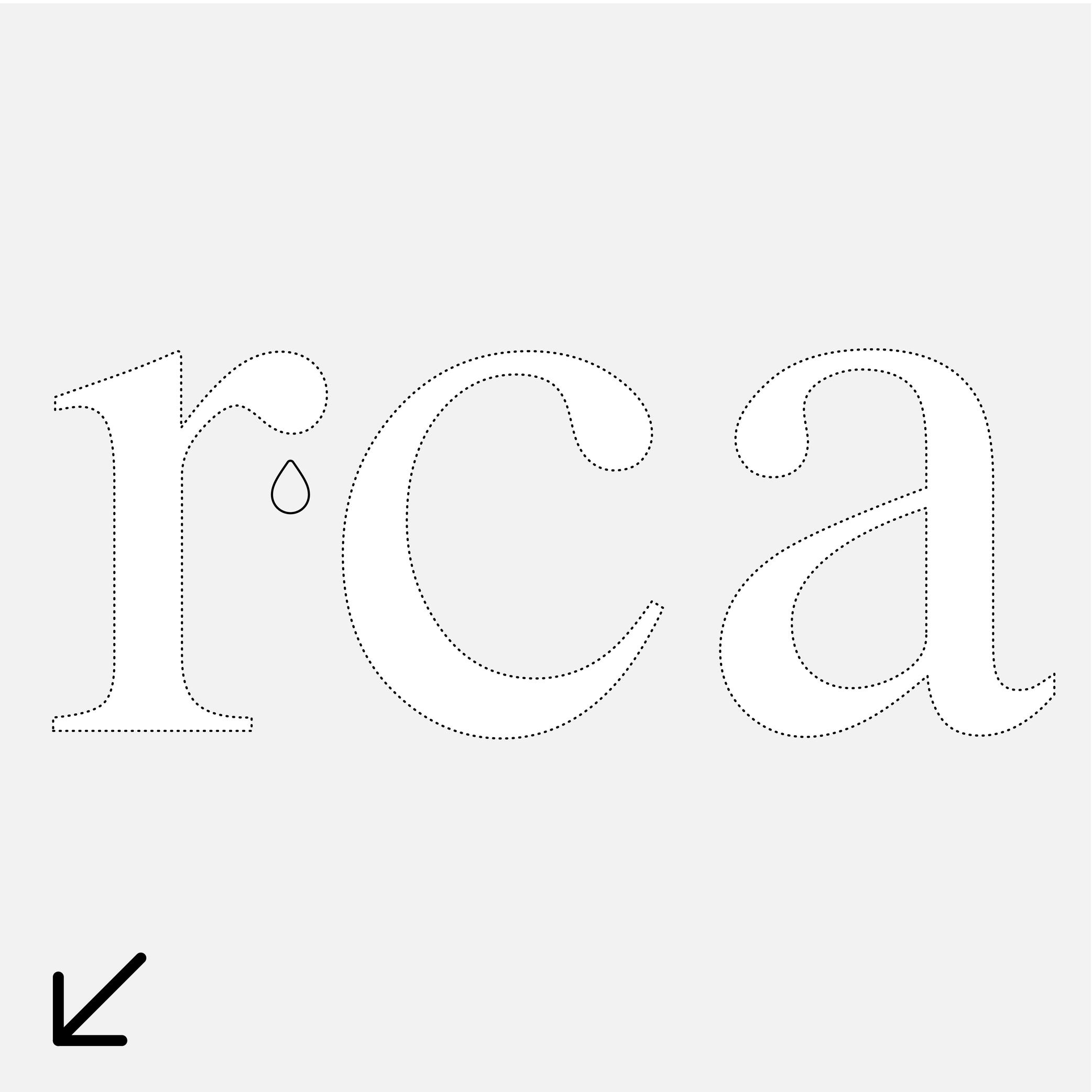
Sponsor Word of Type and feature your typeface in this card with a linked caption. Contact us for more information.
(Read More)Many terms are borrowed from architecture or human and animal anatomy to designate and describe parts of letters and other characters. We even speak of type design anatomy.
For Latin script, the drop refers to the top hanging part of r or a that looks like a drop falling downward, generally present in serif style fonts.
Ductus
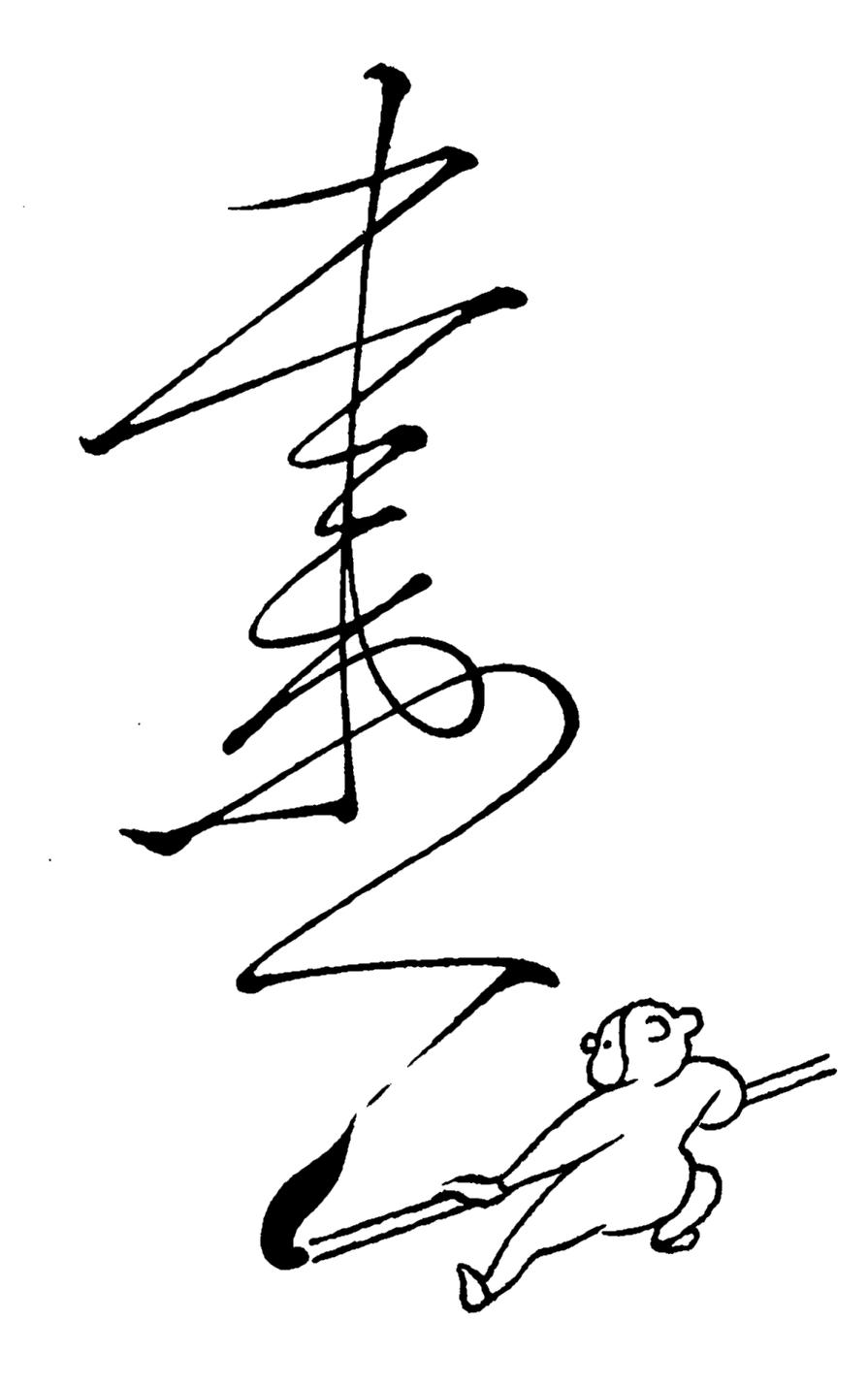
Illustration: Tezzo Suzuki .
(Read More)Glyphs from every script are written with a specific stroke order and drawn in a specific direction. This is called the ductus (from Latin ducere, meaning “to lead,” “to pull”). It took multiple evolution phases for characters to look as they do today. Most ductus changes were for characters to be written more easily (and/or faster) with the tools used.
Ear
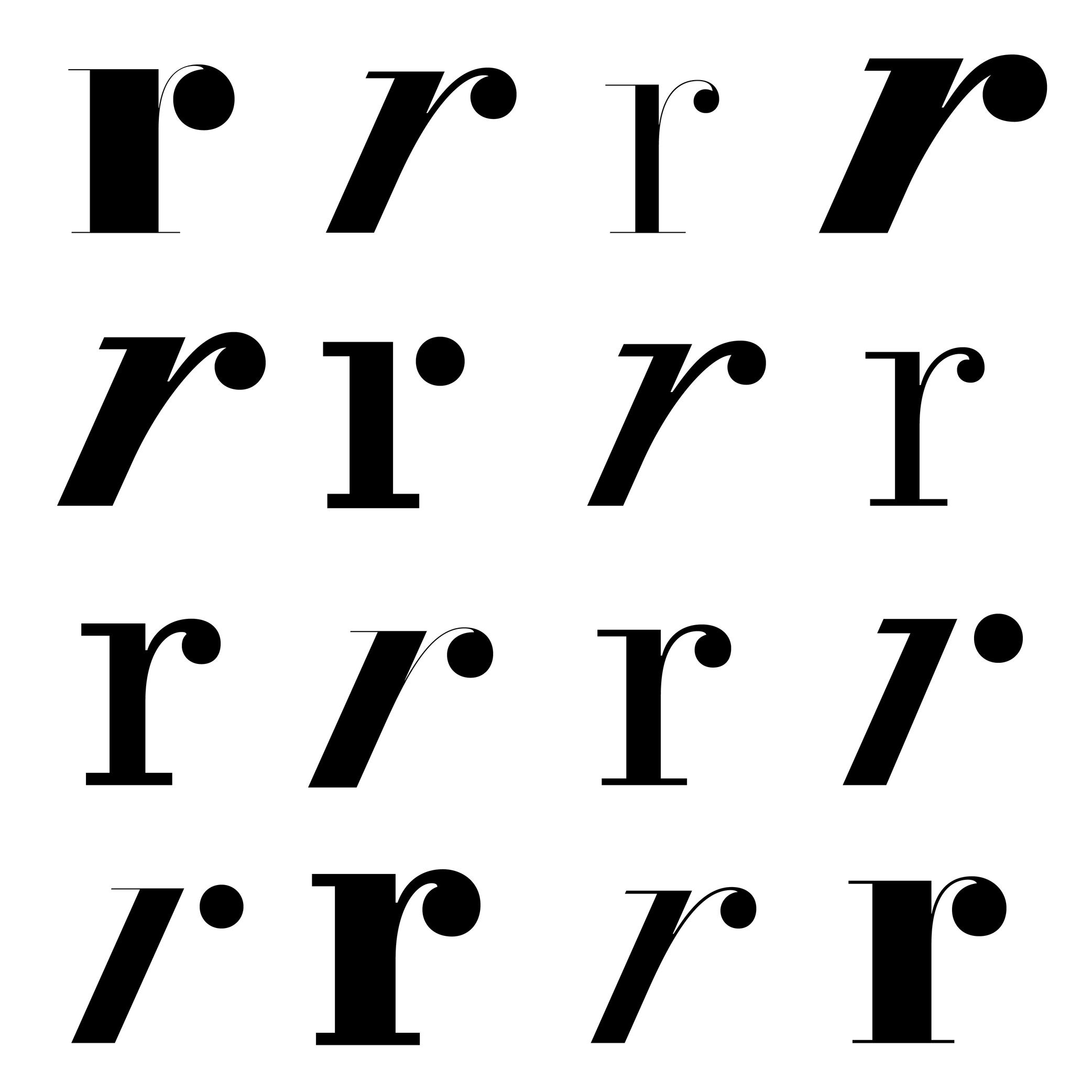
Sponsored by Commercial Type . Typeface in use: Le Jeune , designed by Paul Barnes, Christian Schwarz, Greg Gazdowicz, 2016.
(Read More)Many terms are borrowed from architecture or human and animal anatomy to designate and describe parts of letters and other characters. We even speak of type design anatomy.
In the Latin script, the ear refers to the top-right hanging part of letters like the r, f or the double-story g.
Ellipsis
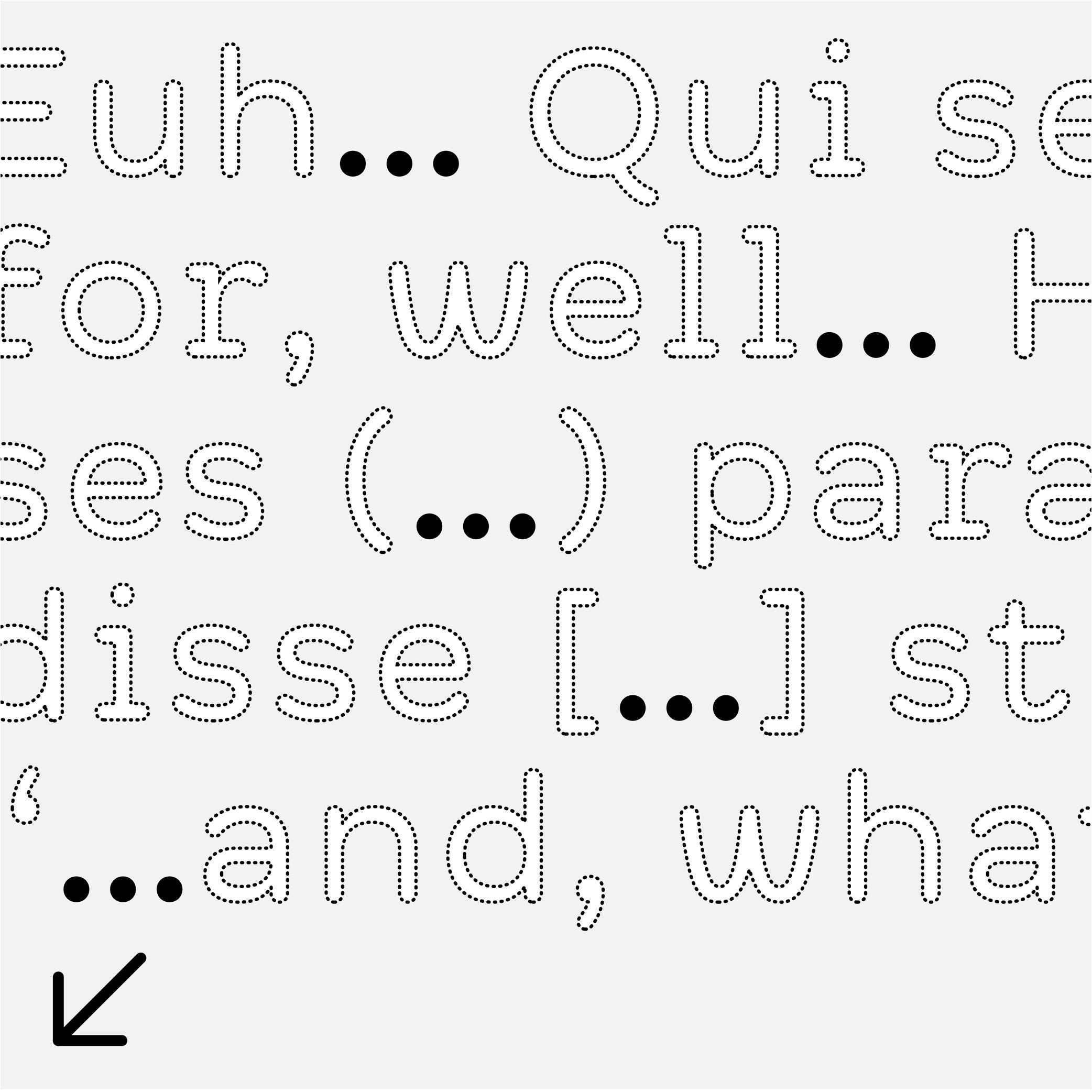
Sponsor Word of Type and feature your typeface in this card with a linked caption. Contact us for more information.
(Read More)FUNCTION
The ellipsis (or dot dot dot) is a punctuation symbol used to indicate a missing part of a text (incomplete or untold) or a rhetorical pause…
DESIGN
An ellipsis is composed of three periods aligned next to each other. It is advised to place the periods closer together than three actual periods to avoid an exaggerated gap in texts. In Chinese, the ellipsis has six dots instead of three and is traditionally center-aligned.
TYPOGRAPHIC RULES
In most languages, when an ellipsis indicates a string of missing text, it is surrounded by parentheses (…).
If it’s placed at the end of a sentence, the ellipsis is followed by a space after the period to introduce the next sentence.
Emphasis
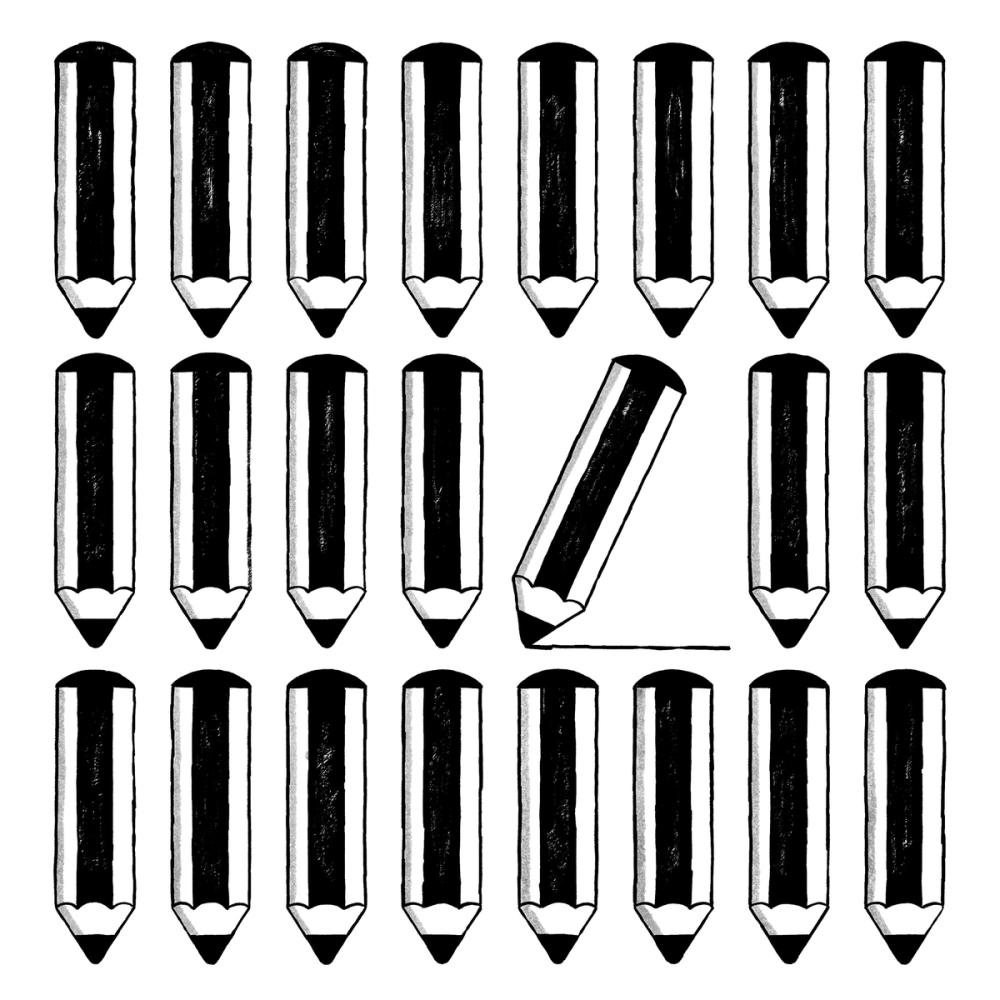
Illustration: Malota .
(Read More)In typography, we speak of “emphasis” when a section of a text needs to be visually brought forward or separated from the rest while keeping the paragraph’s setting, such as for a work’s title, comments, or a quote.
The most common way to create an emphasis in Latin based languages is to set the text in italic. Other scripts such as Chinese Hanzi and Japanese don’t have italics, and use different ways to emphasize text: bolder weight, underline, or dots.
EULA
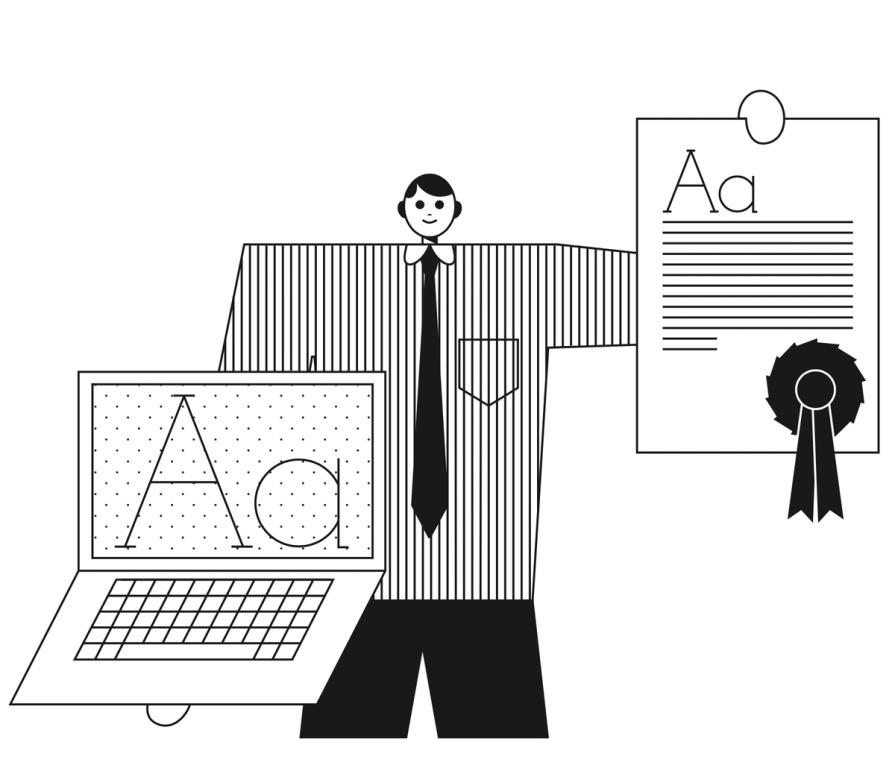
Illustration: James Graham .
(Read More)Digital typefaces are products distributed and sold like software: it is not the design itself that is sold, but a copy (a font) attached with an agreement to use it: its license.
When purchasing a license, a specific EULA (End User License Agreement) is attached, containing all the terms and conditions of use granted by the distributor, foundry or designer for each font.
Different EULAs and licensing terms can exist according to the politics and principles of each entity. It is always advised to contact the foundry or the distributor if there is any doubt or question related to the terms in the EULA, to be sure that the license and EULA are valid for the intended use.Exclamation Mark
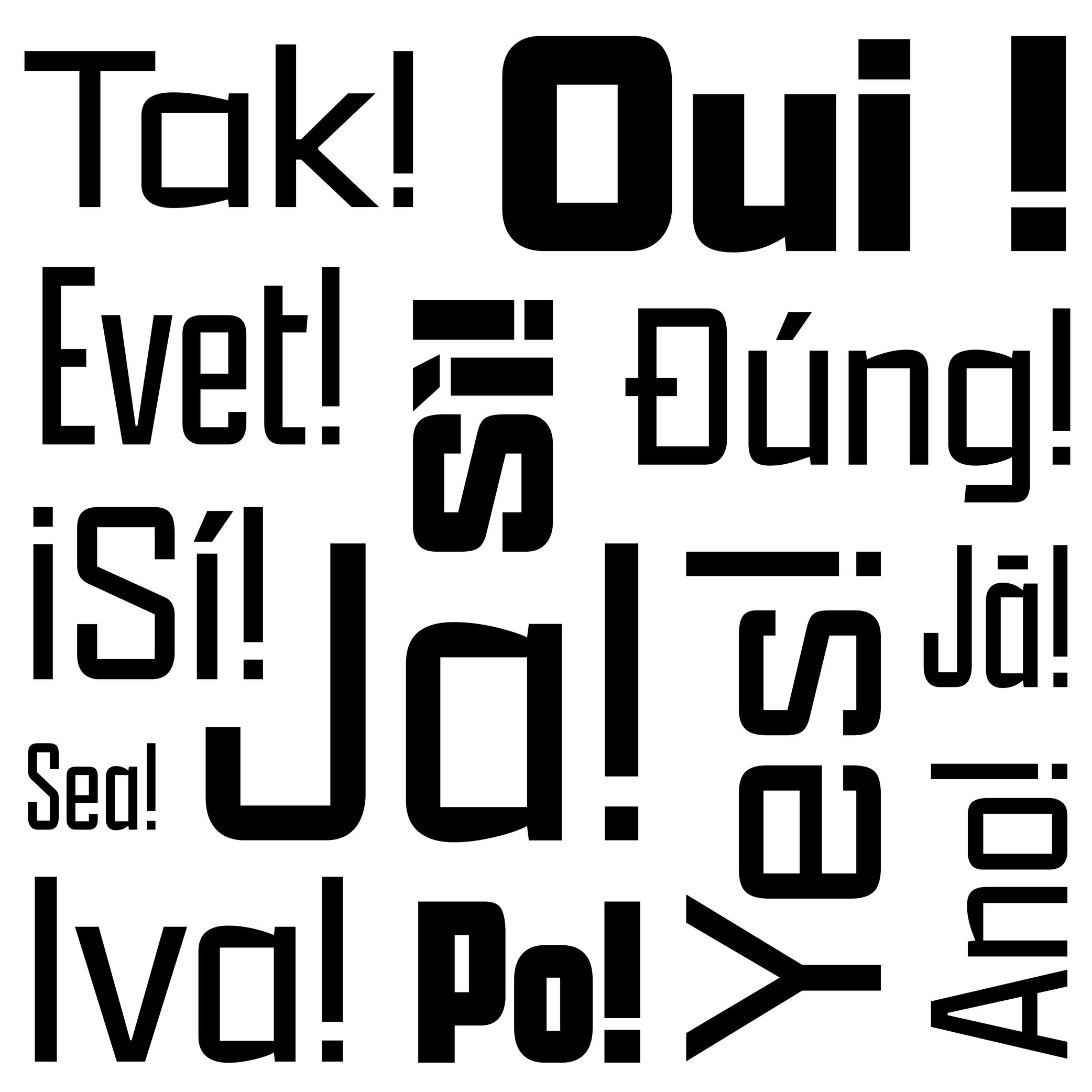
Sponsored by Kerns & Cairns . Typeface in use: Apotek , designed by Dyana Weissman, 2020.
(Read More)FUNCTION
The exclamation mark is placed at the end of a sentence to indicate an exclamation (obviously!).
HISTORY
There is a theory that early exclamation marks were used by early manuscript copyists in Europe, who wrote the Latin word ‘io’ (sort of ‘hurray’), which evolved into a vertical stroke (formerly i) on top of a dot (formerly o). Other languages use different marks for the same purpose (as in Armenian or Burmese).
DESIGN
The top of the exclamation mark is optically aligned to the cap height, with a period at its base. The shape of the vertical stem can be designed to match the typeface (contrast, rounded tip, etc.).
TYPOGRAPHIC RULES
In English and in many other languages, there is no space before the exclamation mark. But in French, there is a non-breaking space. And in Spanish, a reversed exclamation mark is placed at the beginning of the sentence, with the upright one at the end, with no space.
Expansion
(Read More)Expansion is one of the multiple contrast types in Latin-script type design (along with translation and rotation).
The specificities of the expansion contrast come from the pressure applied while writing a stroke with a fountain pen or quill (the two flexible tips split with added pressure) while keeping the pen tip at a vertical axis.
Bodoni and Didone (or Didot) styles are typical examples of expansion contrast typefaces.
Export
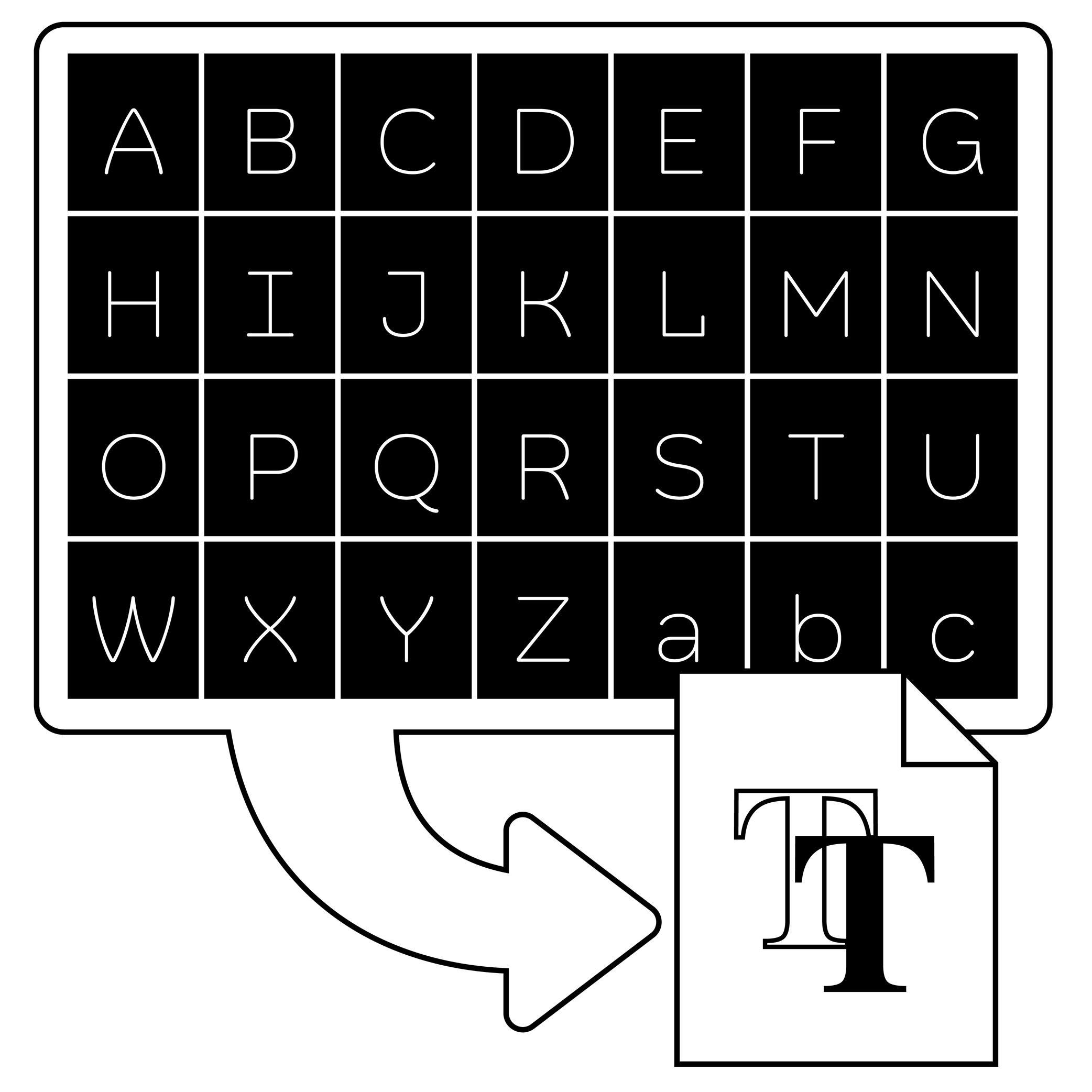
Illustration: Words of Type. Typeface in use: Knowledge Rounded, designed by Lisa Huang, 2024.
(Read More)In type design applications (or font editing software applications), exporting is the process of transforming a working editable file (called source file) into one or more font files that can be installed and used.
The most common exported format is OpenType, which comes in several flavours depending on usage:
• .otf for PostScript outlines, commonly used in Adobe apps and professional printing workflows;
• .ttf for TrueType outlines, widely supported on Windows and Android systems;
• .woff and .woff2 which are compressed formats designed specifically for use on the web.FONT ENGINEERING ADVICE
Exported font files are binary. This means all the font data—such as glyph outlines, kerning pairs, hinting instructions, and more—is stored as sequences of bits (0s and 1s) that the operating system can interpret directly, without relying on a third-party tool. By contrast, source files like .glyphs (Glyphs ), .vfb (FontLab ), or .ufo (an open format compatible with many editors, mainly used in Robofont ) are not binary. They require a specific software to be read and edited.
Extension
(Read More)A typeface is usually distributed with a given glyphset or character set.
If some characters for a specific use are missing, such as those needed for additional language support, they can be designed and added to the initial list. We speak then of creating a glyph extension.
Extrapolation
(Read More)Variable Fonts technology allows users to navigate between two or more specific styles (called masters or sources) with high precision and much smaller font file sizes than several static fonts.
When we navigate between masters—in the design space—we are looking at interpolations, and extrapolations go in the opposite directions.
For example, if we design a Regular and a Bold weight, a Medium can be interpolated between them. Using the same data, it could also be possible to extrapolate a Light weight, extending beyond the original scope of that weight axis.
It is not commonly used but some type design applications (or plug-ins) can generate previews of extrapolated instances.
GOING FURTHER
In a font editor software, extrapolation can be used to create new masters, helping extend the boundaries of the existing design space.
In a Variable Font, extrapolation can theoretically be used to preview areas of the design space (usually called corners) that haven't been defined by masters. Traditionally, you need at least 4 masters to define a design space of 2 axes. For example, a Regular and Bold on the weight axis, and a Condensed and Condensed Bold on the width axis. Mathematically, it should be possible to omit the Condensed Bold corner in the source, and still be able to generate a full functional VF out of the 3 other masters—Condensed Bold being extrapolated and not defined as a master. This makes it possible to manage complex design spaces while keeping the font file size reasonable.
Extrapolated results can be unreliable and visually disappointing, so they should be used with caution.
FONT ENGINEERING ADVICE
Functional Variable font extrapolations as described above were not really possible until the addition of the avar2 font table in 2024 in the OpenType Specifications. The table is still not widely supported yet and thus still at the experimental stage (as of the current version of Words of Type).
Extrema Point
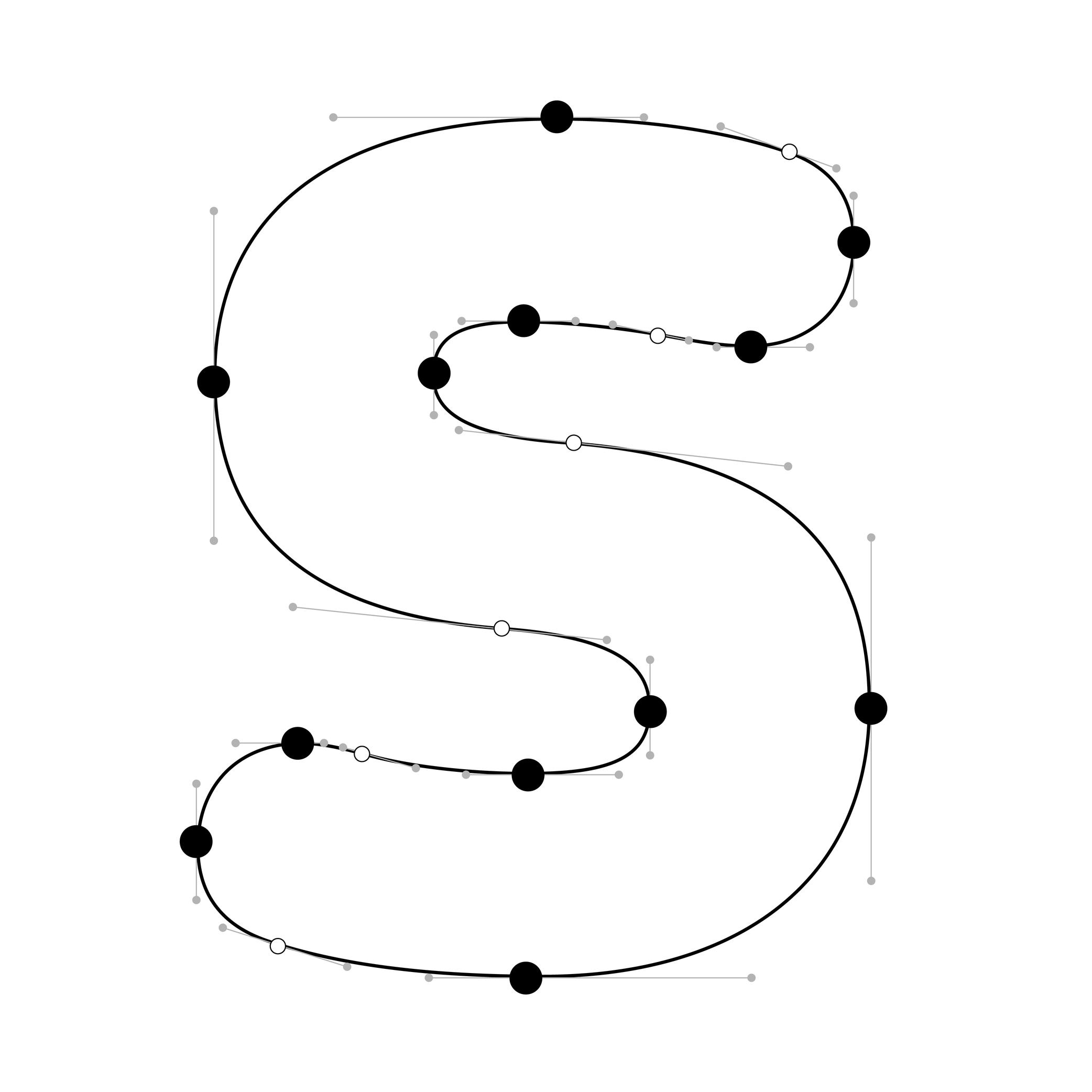
Illustration: Words of Type. Typeface in use: Knowledge Rounded, designed by Lisa Huang, 2024.
(Read More)In digital fonts, curves are defined by at least two end points (also called on-curve points or nodes) and one or more off-curve points (also called handles), which control the shape and tension of the curve.
Extrema points are the highest, lowest, leftmost, or rightmost points on a curve. These can be recognised by their associated handles, which align strictly horizontally or vertically.
Hints can only attach to extrema points. For proper rasterization (conversion of vector shapes into pixels), it is therefore essential to ensure these points are present and correctly placed.
NOTE
Since PostScript hinting doesn’t apply to diagonal stems, it is debated whether vertical extrema are necessary in italic shapes.
Eye
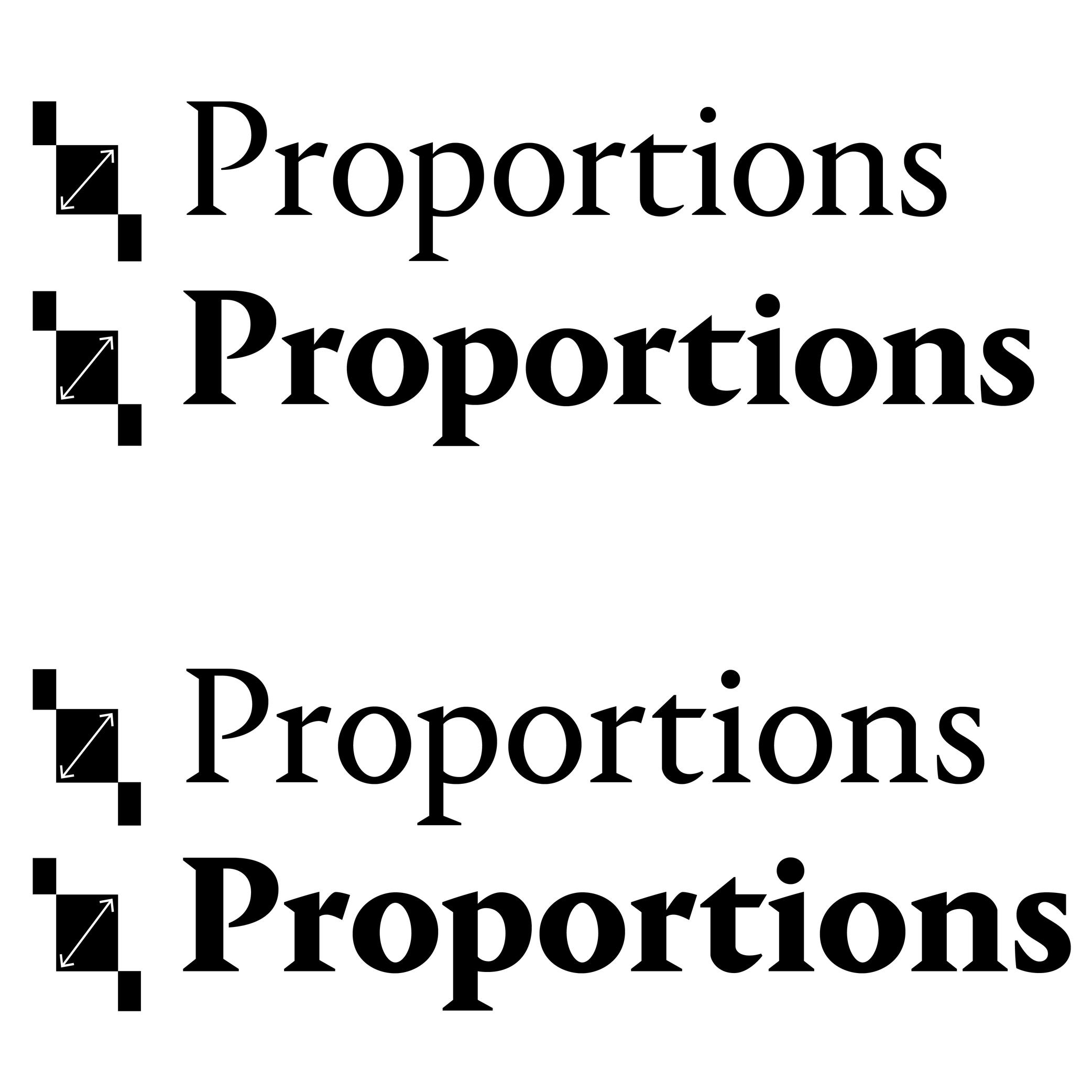
Sponsored by Commercial Type . Typeface in use: Portrait , designed by Berton Hasebe, 2013.
(Read More)Many terms are borrowed from architecture or human and animal anatomy to designate and describe parts of letters and other characters. We even speak of type design anatomy.
In Latin type design, the eye refers to the ratio between the x-height and the other guidelines (ascenders and descenders).
A typeface is suited for text usage if it has a ratio slightly bigger between its eye to its ascenders and descenders, as this enhances the legibility of the letters.
Family
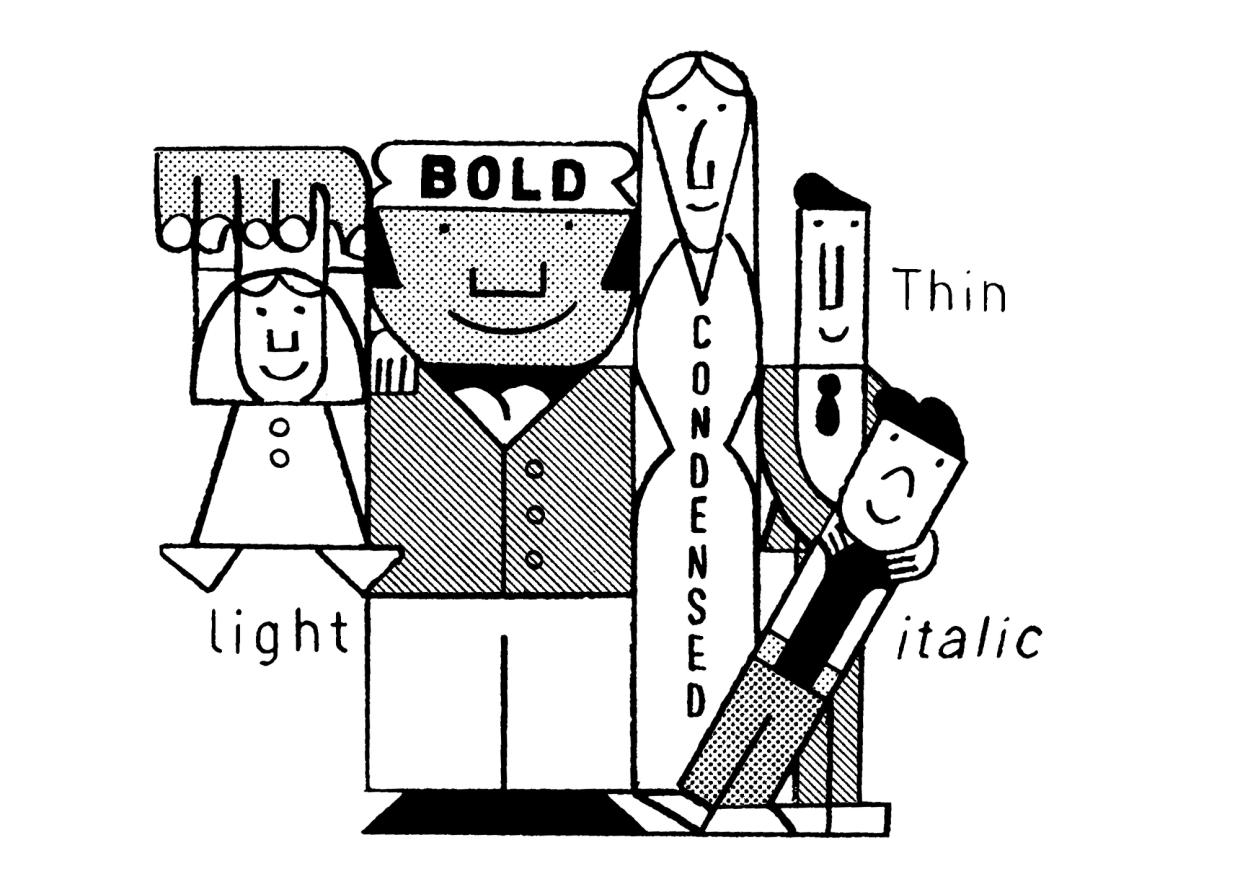
Illustration: Jay Cover .
(Read More)While a typeface refers to its design concept, a typeface (or font) family is the collection of styles derived from that design.
Each style has their own specificities (weight, width, contrast, slope, etc.), while retaining common characteristics—making them part of the same family.
A family usually contains a limited number of styles along the weight axis, including their matching italics. When it spans a wide range of styles, across multiple axes, it is often referred to as a superfamily. These large families are often grouped into subfamilies to organize styles more clearly in the font menus of text editor softwares.
Figure
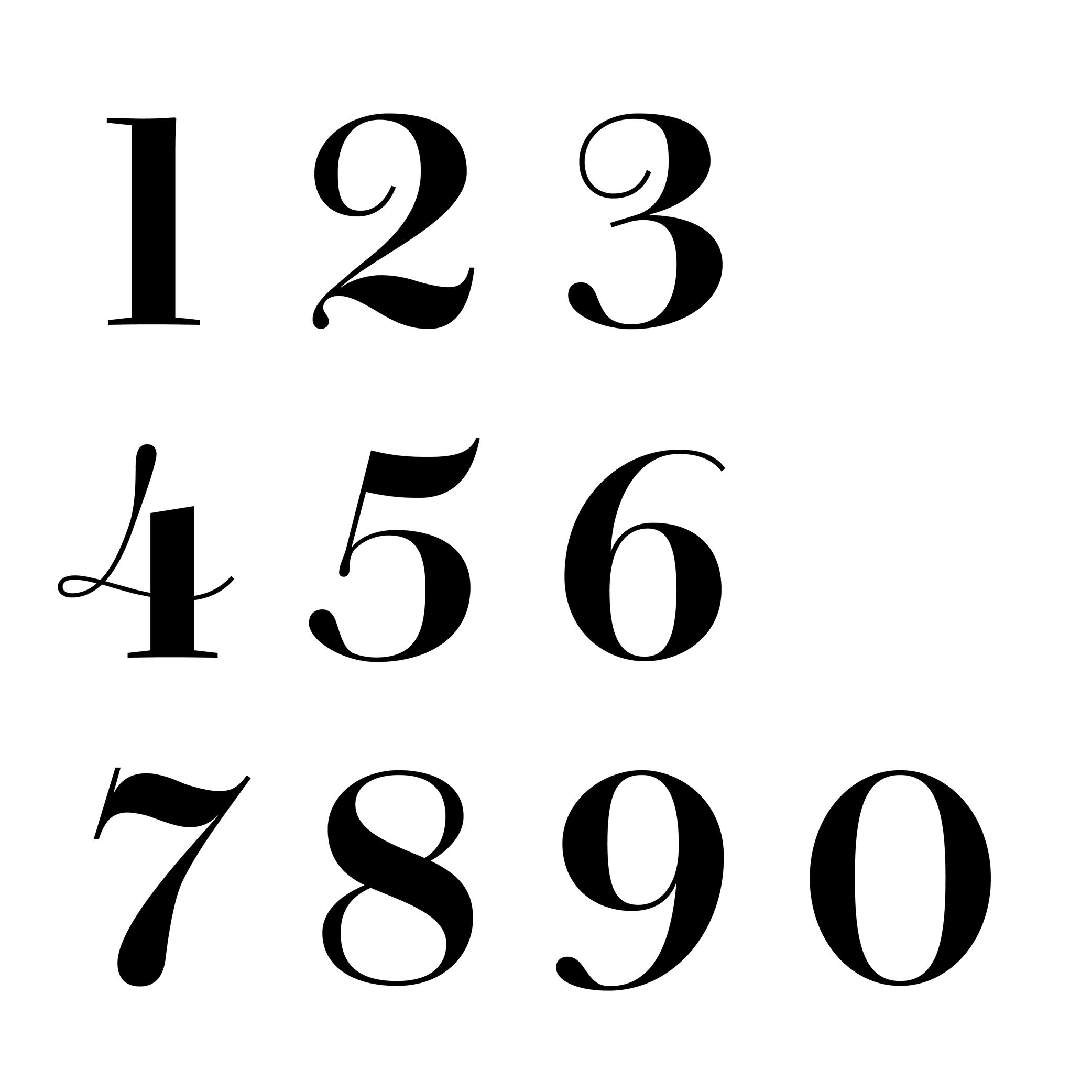
Sponsored by Commercial Type . Typeface in use: Chiswick, designed by Paul Barnes, 2017.
(Read More)The words ‘figure’ and ‘number’ are often confused. But, linguistically speaking, they are to be distinguished from one another: a figure (or numeral) is the graphic representation of a number, which is a mathematical concept. Several figures can be combined to form a number. For example, the number ‘22’ is represented by two figures ‘2’.
There are multiple styles of figures (oldstyle, proportional, lining, tabular, etc.) that suit specific situations.
HISTORY
In Europe, figures and numbers used to be represented by Roman capital letters (X, V, I, D, C, etc.). With the rise of trade with Arab countries around the 15th century, the Arabic figures (themselves influenced by Indian figures) were adopted and replaced the Roman capitals. These distinct origins explain the difference between the structure and stroke shapes of modern figures compared to Latin letters.
Font
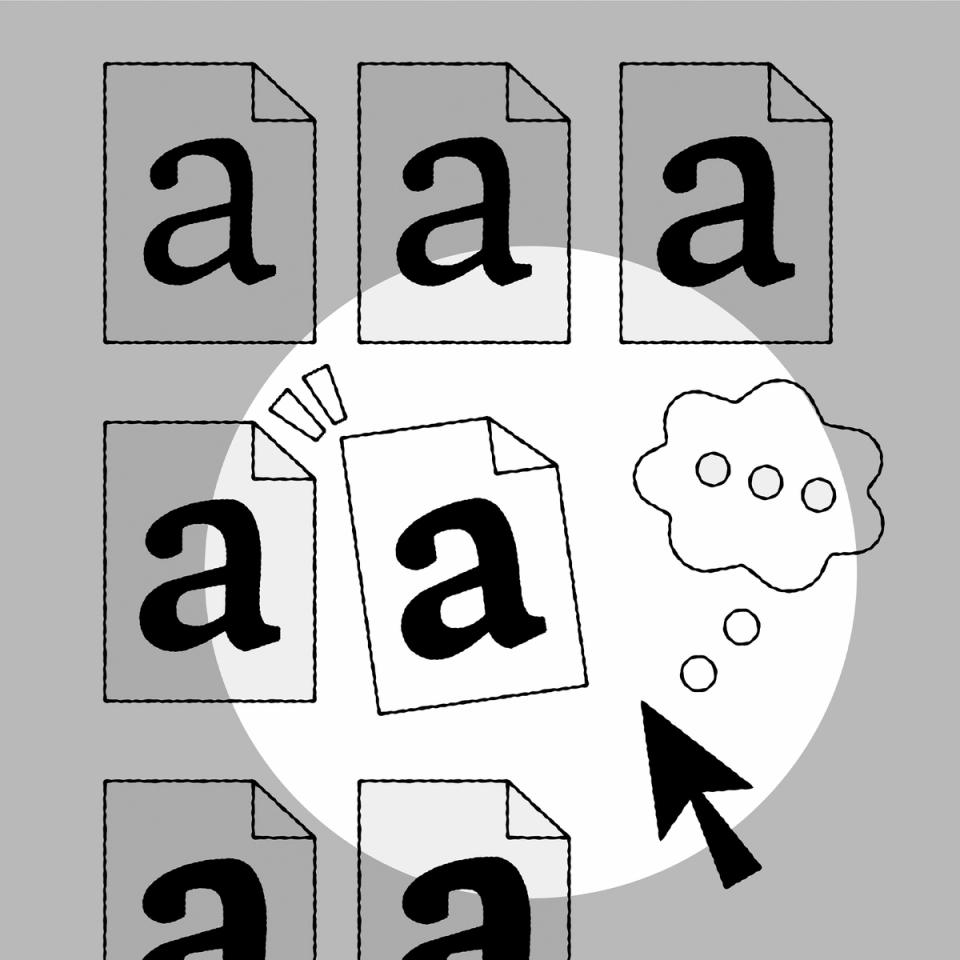
Illustration: Raven Mo .
(Read More)Since the era of metal type printing, a font referred to a set of lead pieces for a specific typeface, in a particular style and size. For example, Times New Roman 10 pts, Times New Roman Bold 16 pts, and Times New Roman Bold Italic 16 pts were three distinct fonts of the Times New Roman typeface.
The word font comes from the French fondre, meaning to melt, as characters were cast by pouring molten lead into moulds called matrices.
In the digital era, a font is an independent file containing a typeface in one or more style. In static fonts, one file corresponds to one style. In variable fonts, a single file can include multiple styles through interpolation.
For example:
• Helvetica Neue Light (HelveticaNeue-Light.otf) and Helvetica Neue Light Italic (HelveticaNeue-LightItalic.otf) are two separate static fonts;
• Helvetica VAR (HelveticaVAR.ttf) and Helvetica VAR Italic (HelveticaVAR-Italic.ttf) are variable fonts, each containing a range of styles (Light, Regular, Bold, etc.).Format
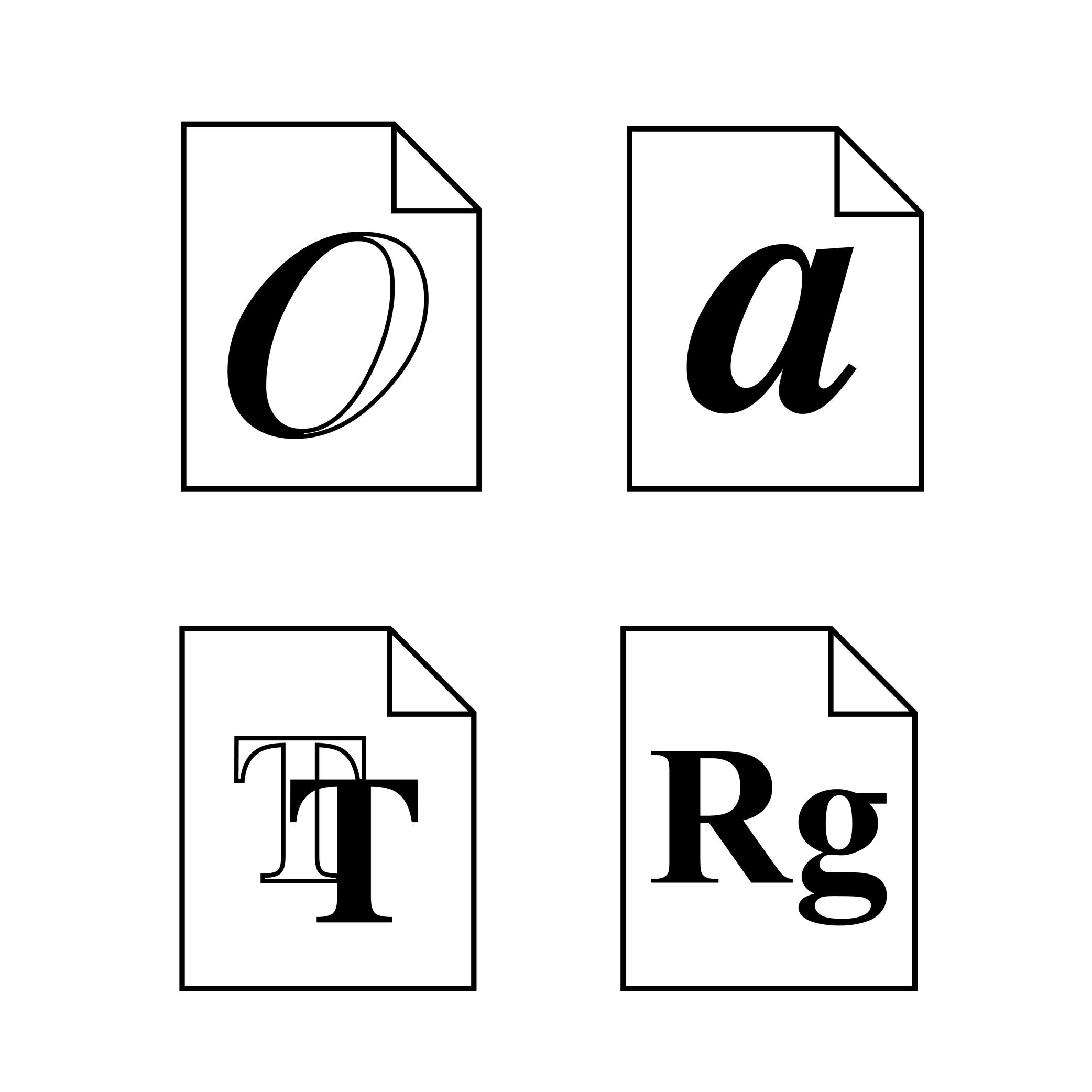
Illustration: Words of Type.
(Read More)There are multiple file formats for digital fonts. Each one is specifically designed for optimal use at different times and situations.
HISTORY
The history of digital fonts includes several major formats. The most notable ones are:
• PostScript Type 1, developed by Adobe in 1984;
• TrueType, developed by Apple in 1991;
• Multiple Master Type 1, Adobe, 1992;
• TrueType GX, Apple, 1994;
• OpenType, co-developed by Microsoft and Adobe in 1996.GOING FURTHER
Today, OpenType is the dominant format in use (extension name as .otf). It supports both PostScript and TrueType outline technologies, which now exist as two flavors or outlining models within the OpenType container.
WOFF and WOFF2 are additional web-optimized containers that compress and package OpenType/TrueType fonts for efficient delivery over the internet. The term format tends to be used instead of flavor but, technically, PostScript and TrueType are no longer standalone formats; instead, they are integrated into the broader and more versatile OpenType ecosystem.Geometric
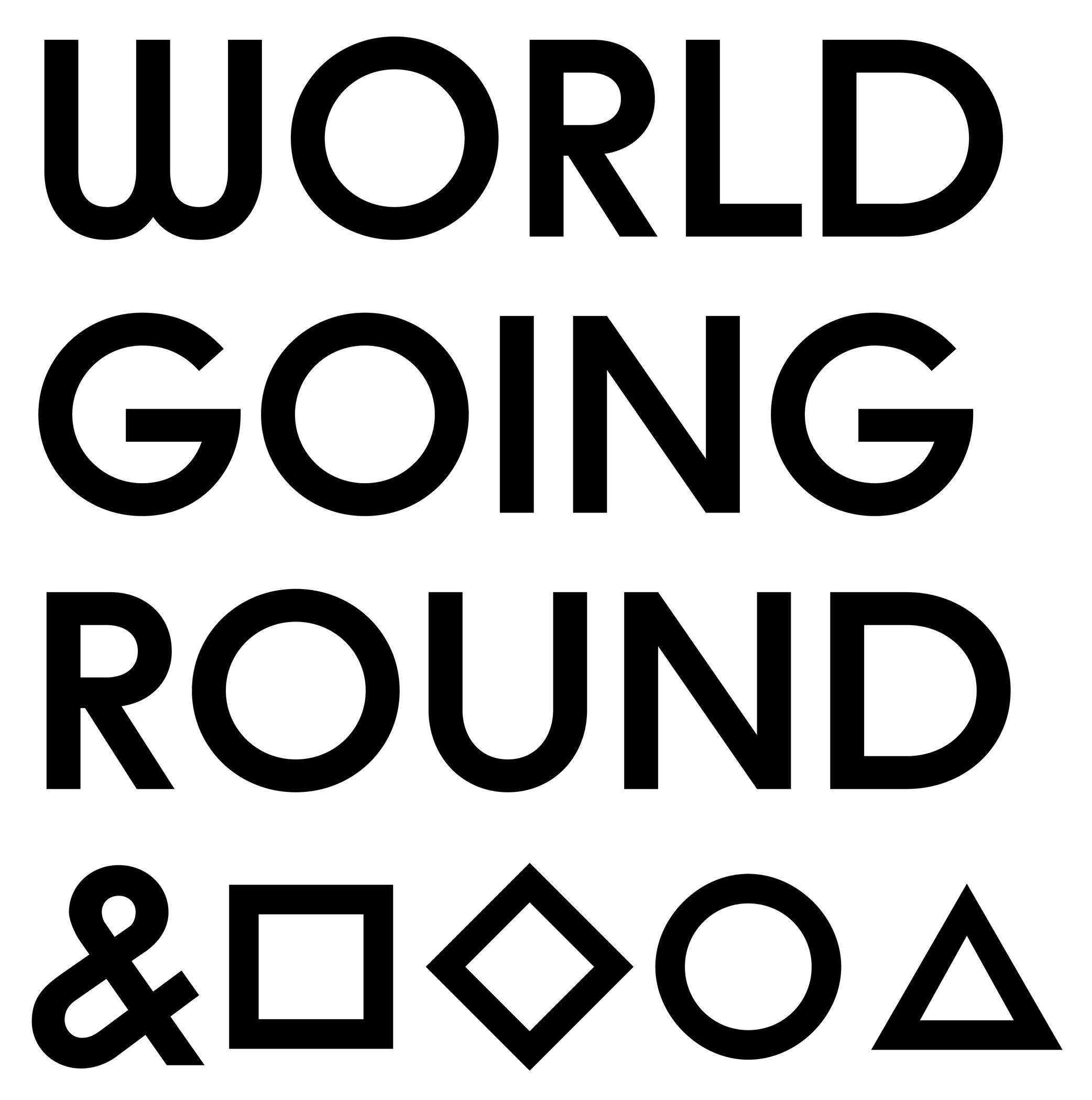 (Read More)
(Read More)A typeface with a geometric style has shapes designed in a way that follows the logic of geometry (straight, round, square, etc.).
But our human eyes are organic (as opposed to artificial), we need to use optical tweaks and adjustments in addition to the shapes drawn out of geometric tools to make the letterforms look geometric.
Glyph
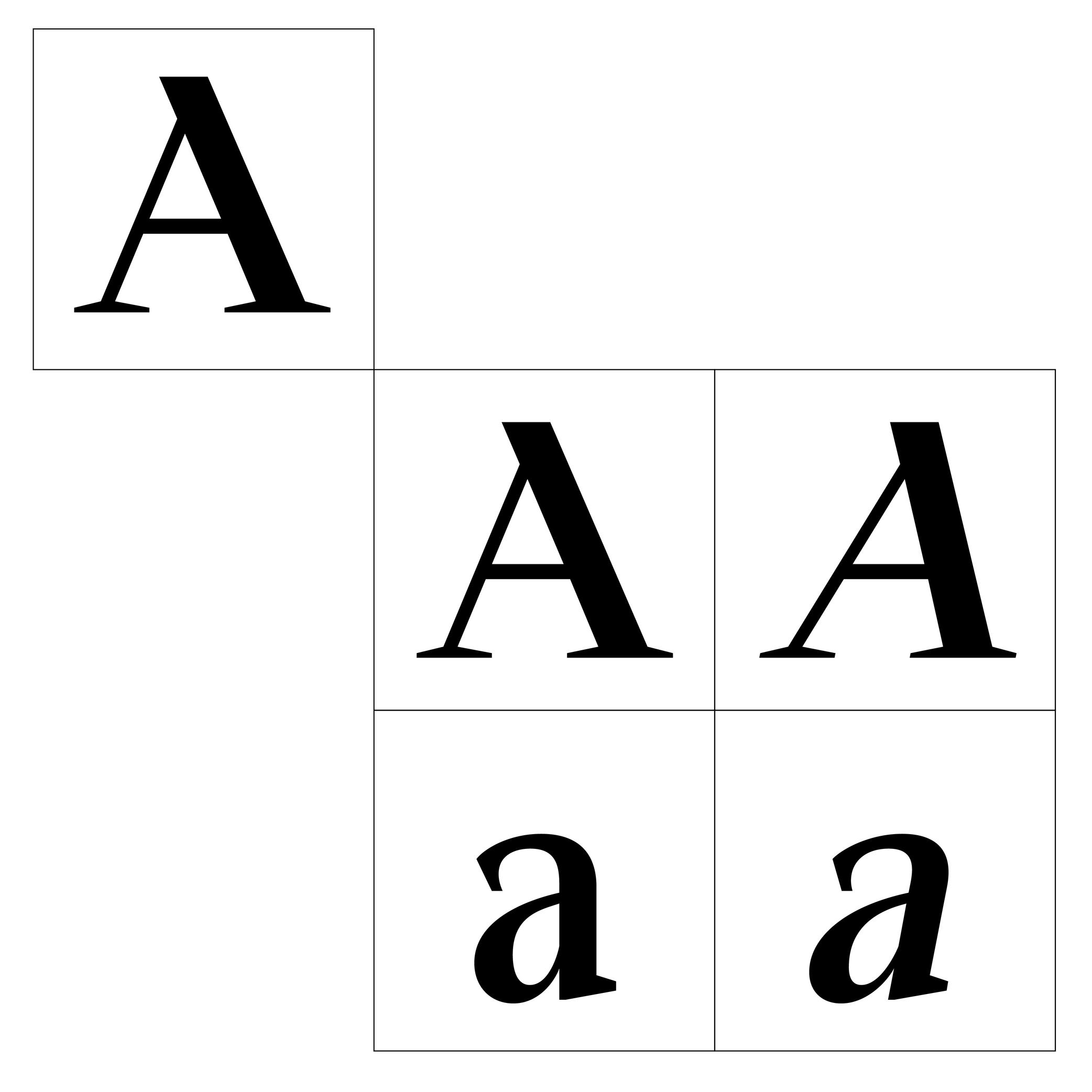
Sponsored by Blaze Type . Typeface in use: Apoc , designed by Matthieu Salvaggio with Tomorrow Type, 2018.
(Read More)The terms ‘glyph’ and ‘character’ are often mixed up, but there is a linguistic difference between them: a glyph is a specific representation of a character. For example, the character A can be represented by both glyphs A and a.
In digital typography, a glyph may be encoded or not. If it represents a distinct character, it will be assigned a Unicode code point. If it is a localized, positional or stylistic variant, it won’t have its own code point and is instead accessed via OpenType feature substitutions.
FONT ENGINEERING ADVICE
In a font file, the cmap table maps characters (code points) to glyph indices. The GSUB table defines all available glyph substitutions, enabling access to stylistic alternates, ligatures, and localized forms.
Glyph Surface
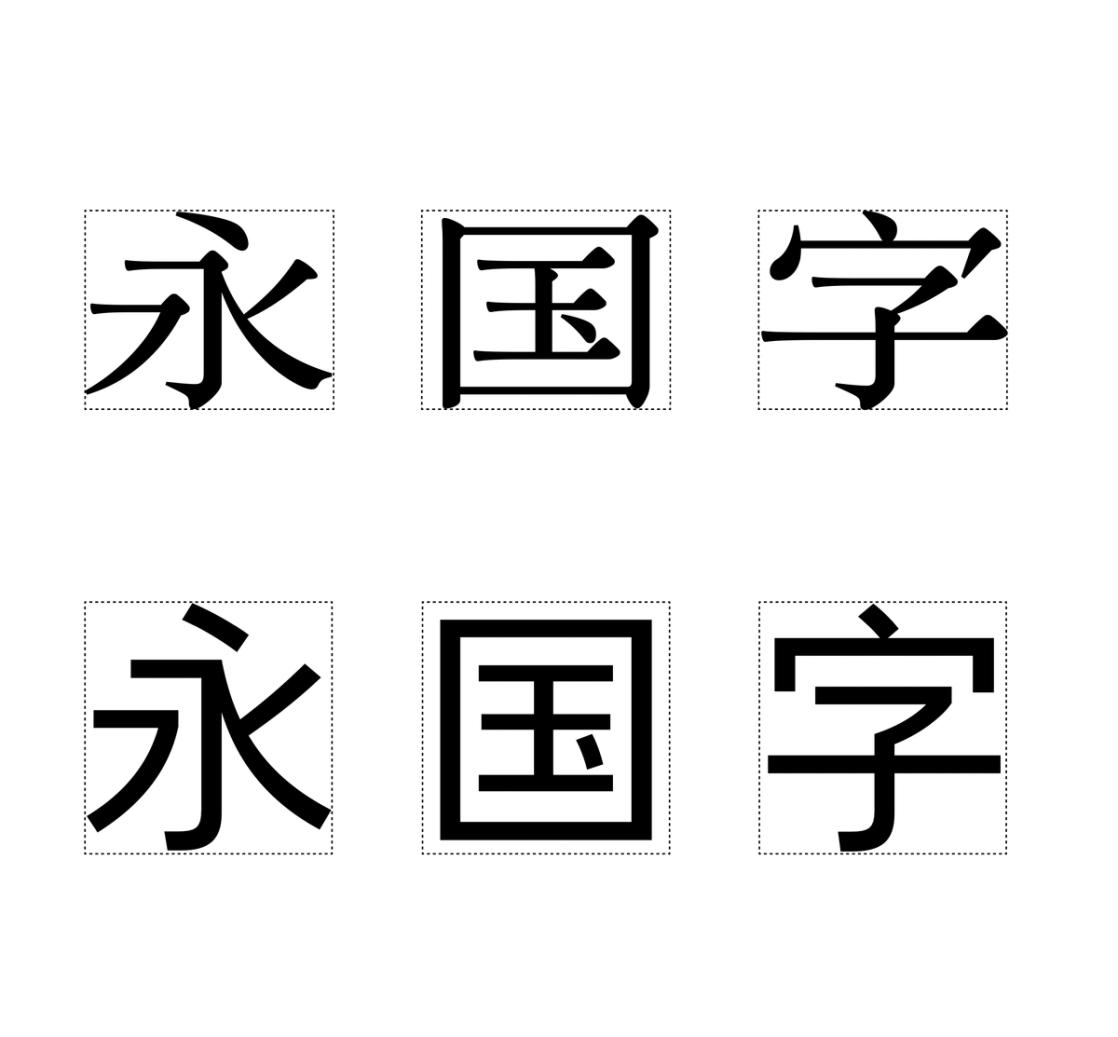
Sponsored by Mallikātype . Typefaces in use: (top) Jinhua Serif , 2023, and (bottom) Nan Sans, coming soon. Designed by Xue Tianmeng, Li Jian, and Kazuhiro Yamada.
(Read More)In East Asian typeface design (Chinese, Japanese, and Korean), characters (commonly called Hanzi) are settled in a squared frame, the same for all characters of one typeface.
The glyph surface (字面 in Chinese, literally ‘face of the character’) is the area occupied by the character in its square.
Gravity Center
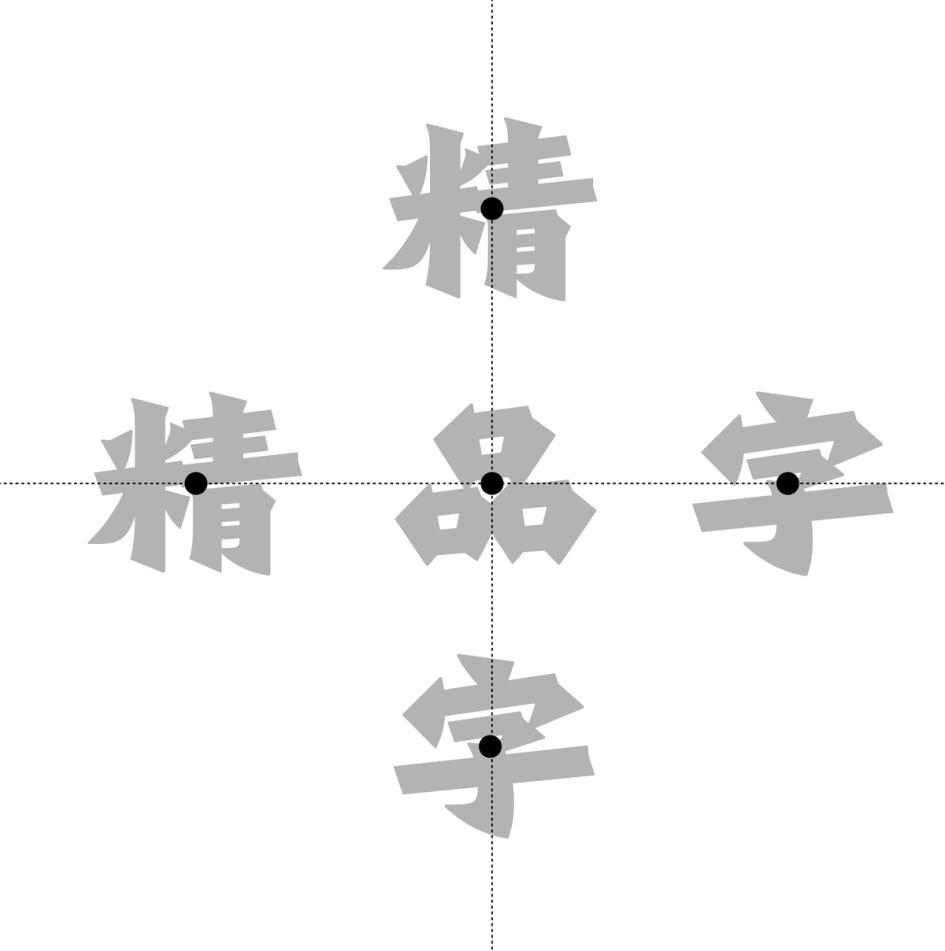
Sponsored by Mallikātype . Typeface in use: Beiwei Longmen, coming soon. Designed by Tianmeng Xue.
(Read More)In Chinese Hanzi script, the gravity center (also barycenter, 重心 in Chinese, literally ‘focus’) can be perceived as the optical center of a glyph, similar to the horizontal bar of the capital letter H.
It has to be visually aligned for all characters—especially for text typefaces—to allow a fluid and continuous reading.
Grid
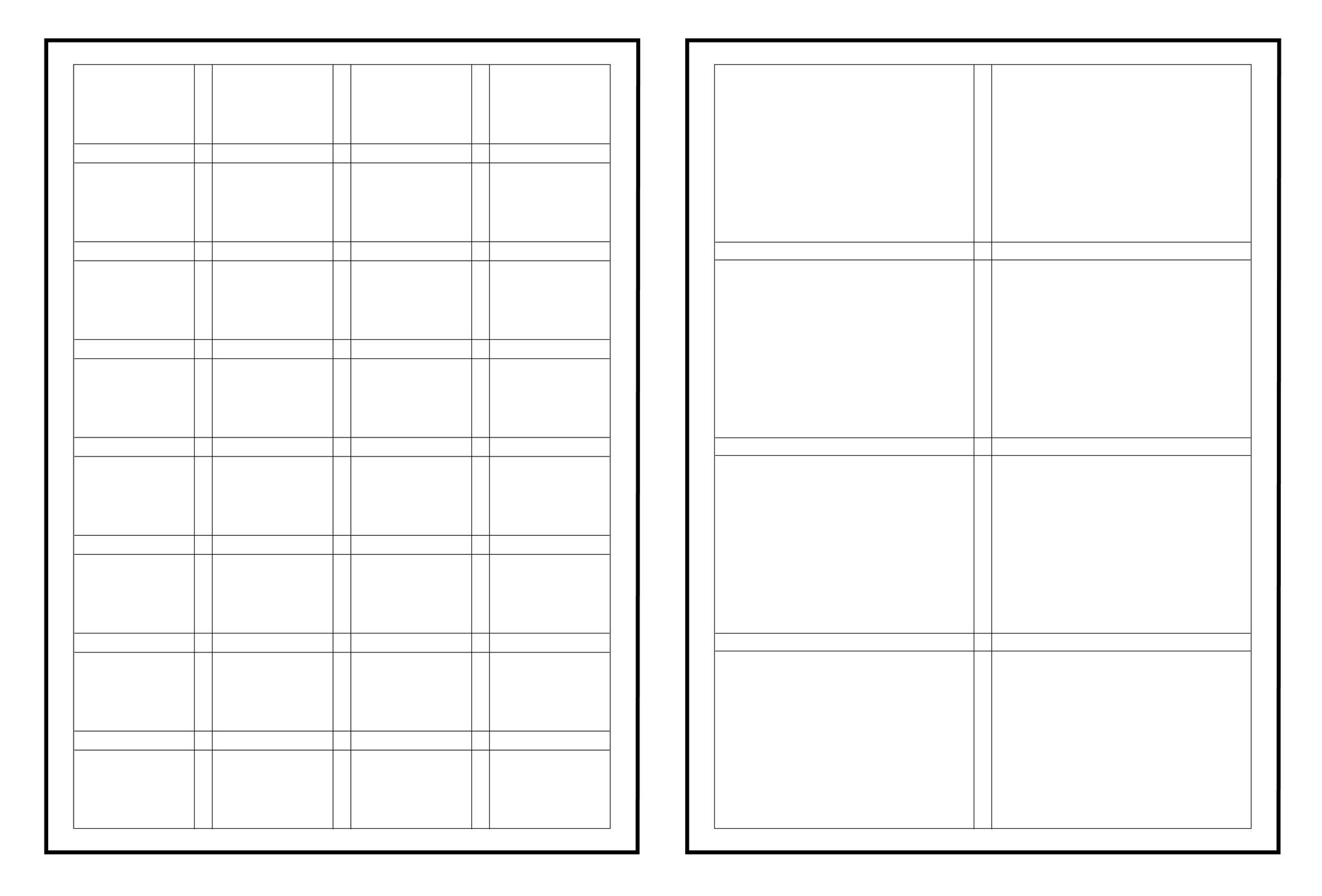
Illustration: Words of Type.
(Read More)In typography (or typesetting), a structure—called a grid—is designed on a page to place the elements, helping with the content’s organization and legibility.
Guillemet
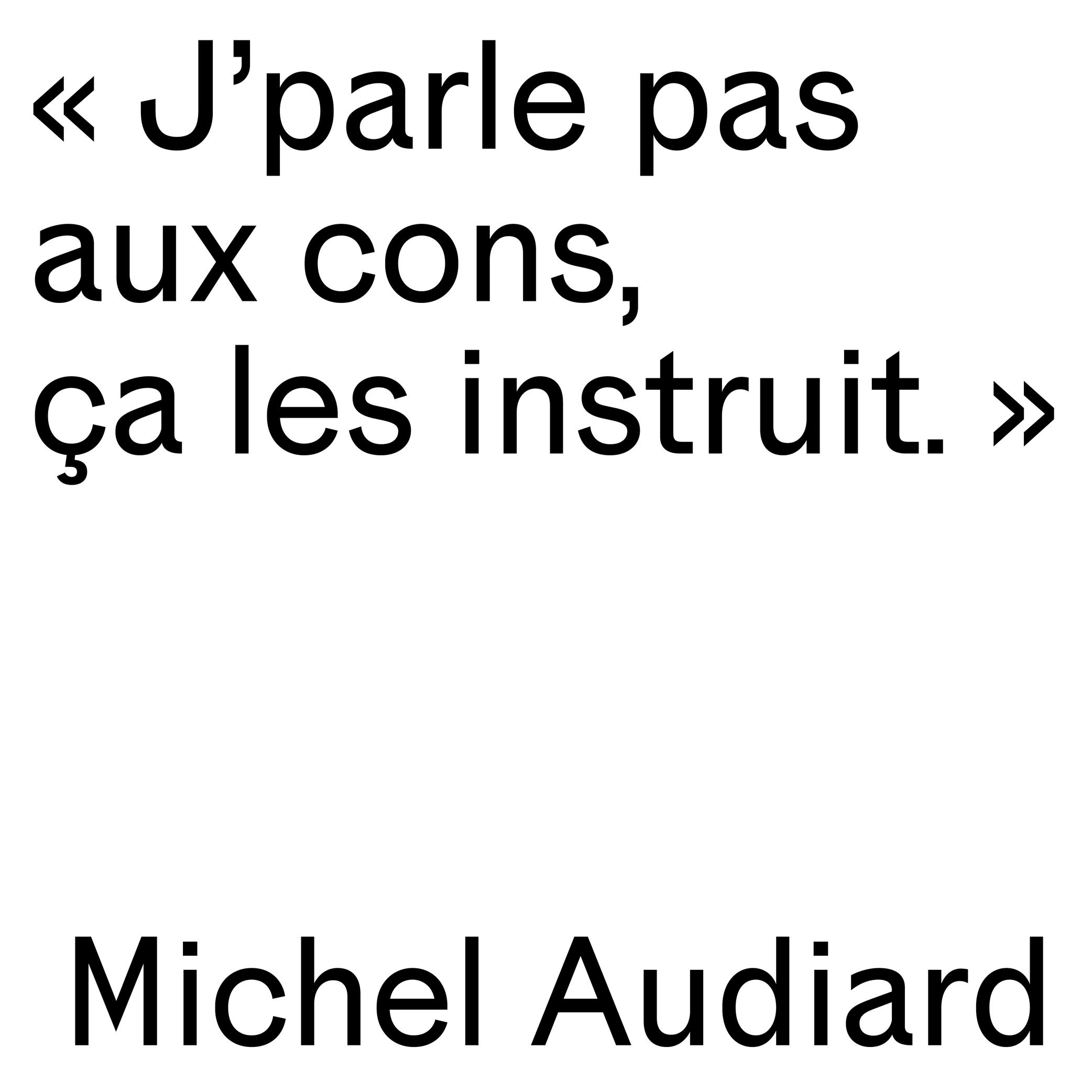
Sponsored by Formagari . Typeface in use: Modale Antique , designed by Emmanuel Besse, 2024.
(Read More)FUNCTION
Guillemets (or chevron quotes) are quotation marks used in multiple European languages, such as French, Portuguese and Italian.
HISTORY
It is difficult to track down the origins of guillemets, but one of the earliest books using those dates back from 1527 by Dutch/Belgian printer Josse Badius, in which quotes were introduced. They may have been invented by French printer and punchcutter Guillaume Le Bé (1525–1598), after whom they were named: ‘guillemet’ as short for ‘Guillaume.’
DESIGN
Guillemets are shaped like small arrowheads vertically centred with the characters. In the Latin script, guillemets are placed in between the baseline and x-height by default. They can be centered between the baseline and capital height as case sensitive alternates to be better aligned with capital letters.
TYPOGRAPHIC RULES
Depending on the language, they are either pointing inward or outward of a quote, double or single (single guillemets are used as secondary quotes), followed by a space or without. Some examples here:
- « French » or ‹ French ›
- «Italian»
- »Danish«
Note: comma-shaped quotation marks “like these” are standardized in English.
Handle
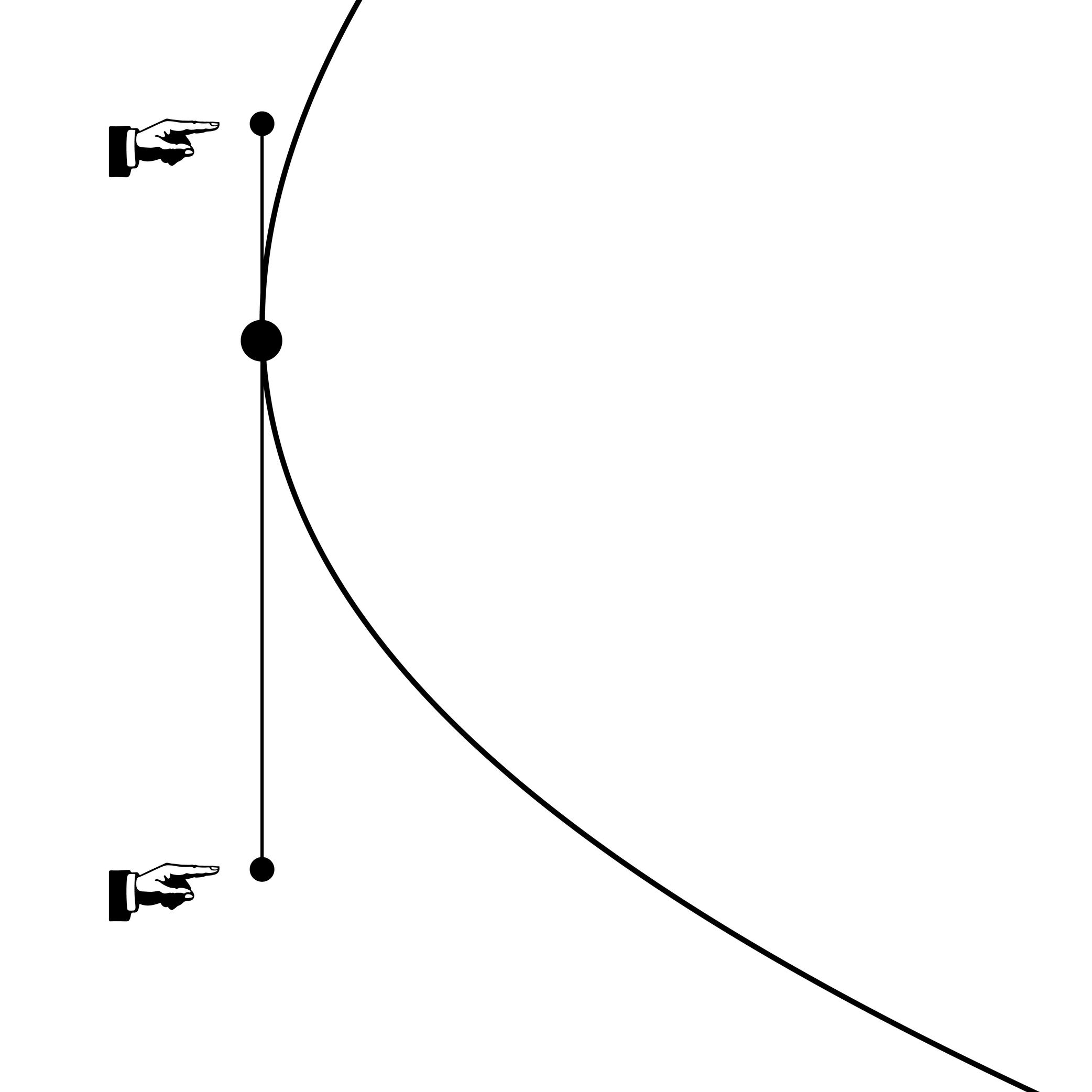
Illustration: Words of Type.
(Read More)Handles—also called Bézier Control Point (BCP for short) or off-curve points—are toggles placed by the designer to determine the curvature of a segment. Their length and relative position have rules to be followed to ensure the quality of a contour in any situation once the file is exported and used:
- both handles on the same side of the curve;
- about 1/3 of the length of the curved segment between the handle and its closest point;
- no intersection of handles of the same segment.
Handwriting
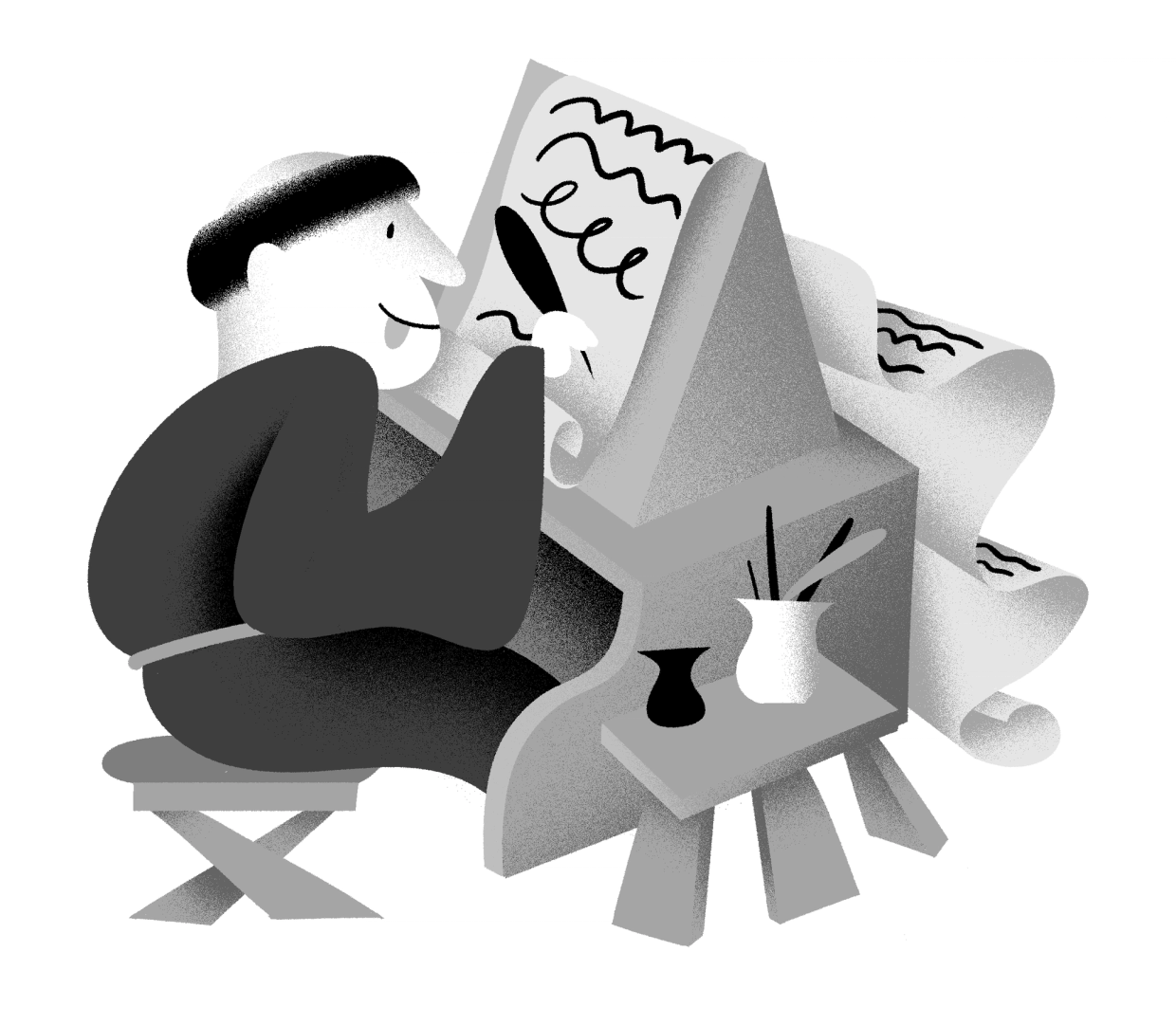
Illustration: Yann Bastard .
(Read More)The word “handwriting” refers to texts written by hand.
Handwritten forms of any languages, combined together as handwritings, are considered to be one of the most important technologies ever invented, as it separated communications from live speech, made knowledge preservable, and began the development of numerous devices used for writing and materials to write on.In many cultures, handwriting is so tightly related to the person writing a text that many consider someone’s handwriting style to reflect either the personality of the writer or his/her emotions at the moment of writing (and also his/her age).
Hanzi
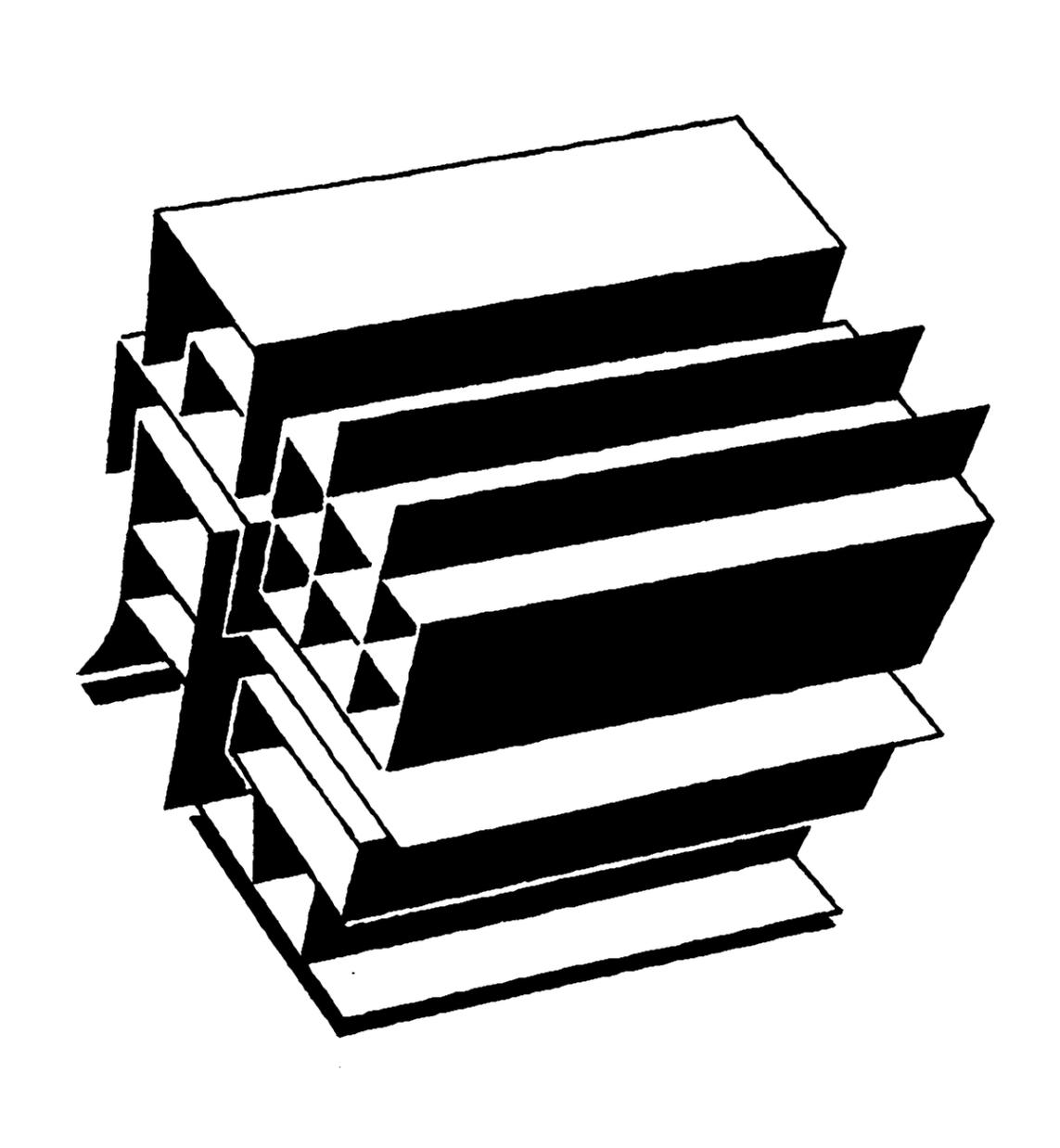
Illustration: Tezzo Suzuki .
(Read More)Hanzi is the pinyin phonetic transcription of 汉字, literally meaning ‘character of the Han people’.
Hanzi characters are used in the Chinese language and they combine logograms and ideograms.
Note: Chinese is the language and Hanzi is the writing system (or script).
Today, there are two variations of Hanzi in the Chinese language: Traditional and Simplified Hanzi. Mainland China adopted Simplified Chinese Hanzi to increase literacy by making Hanzi simpler, while territories like Hong Kong and Taiwan kept the Traditional forms as a way to keep their cultural identity.
Multiple neighboring countries that have a strong historical connection with China also use Hanzi, or did so before adopting a different script:
- Japanese: Hanzi (Kanji in Japanese) used in combination with Hiragana and Katakana;
- Korean: now using Hangeul script, but some Hanzi (Hanja in Korean) are still used in specific situations;
- and Vietnamese: now using the Latin alphabet.
Each language and territory uses specific variations of the same Hanzi. However, since each has evolved independently, they developed more or less subtle differences from those of the Chinese.
Height
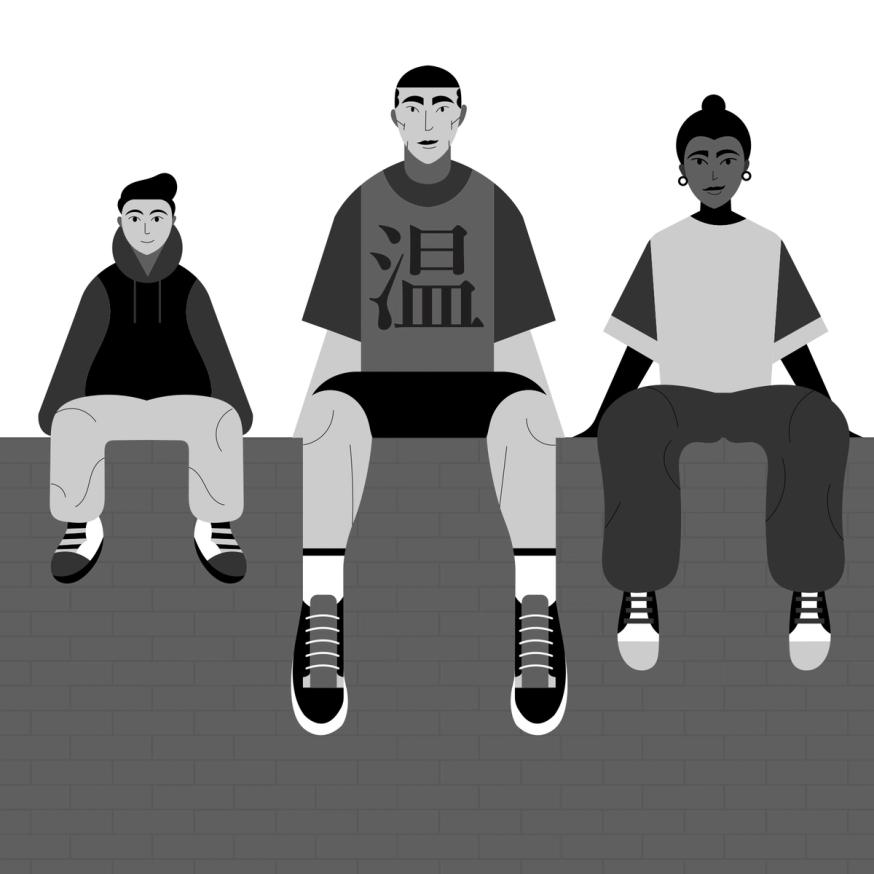
Illustration: Jonny Wan .
(Read More)For each category of glyphs in a character set (caps, lowercase, smallcaps, etc.), the designer uses specific height levels as guidelines. They help maintain the consistency of the shapes and the positioning of the various elements for every glyph throughout the typeface.
Hinting
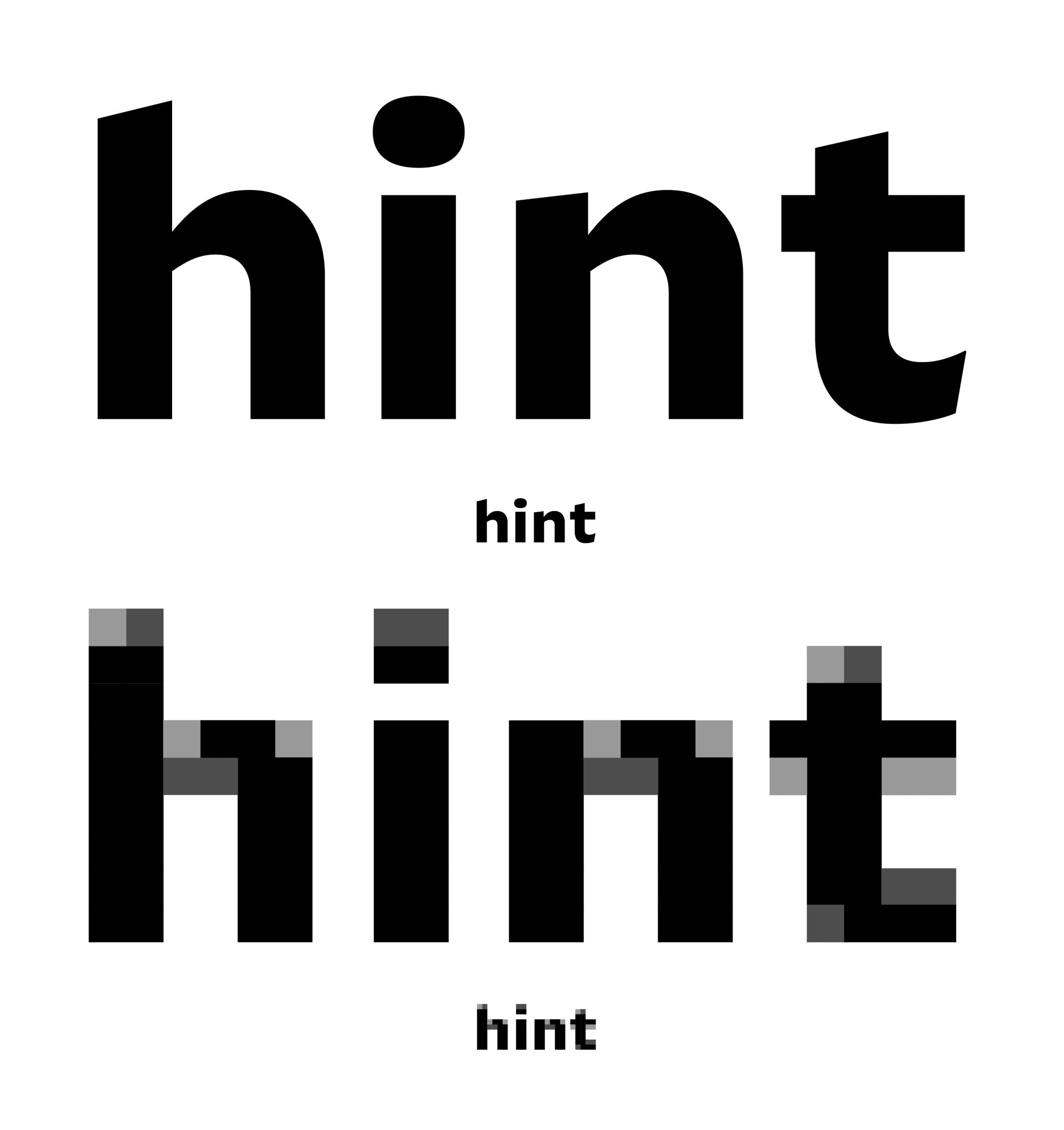
Sponsored by Frere-Jones Type . Typeface in use: Mallory MicroPlus , designed by Tobias Frere-Jones.
(Read More)Before high-resolution screens were available, those with lower resolutions required the use of font files that went through a hinting process.
Digital fonts are files with glyphs as vector contours shaped by the designer on type design applications. On lower-resolution screens, they are rendered by being adapted into bitmap fonts on pixel grids.
Hinting is about giving instructions to each pixel’s position in lower resolution situations, ensuring a rendering that is as close as possible to the original design.Hook
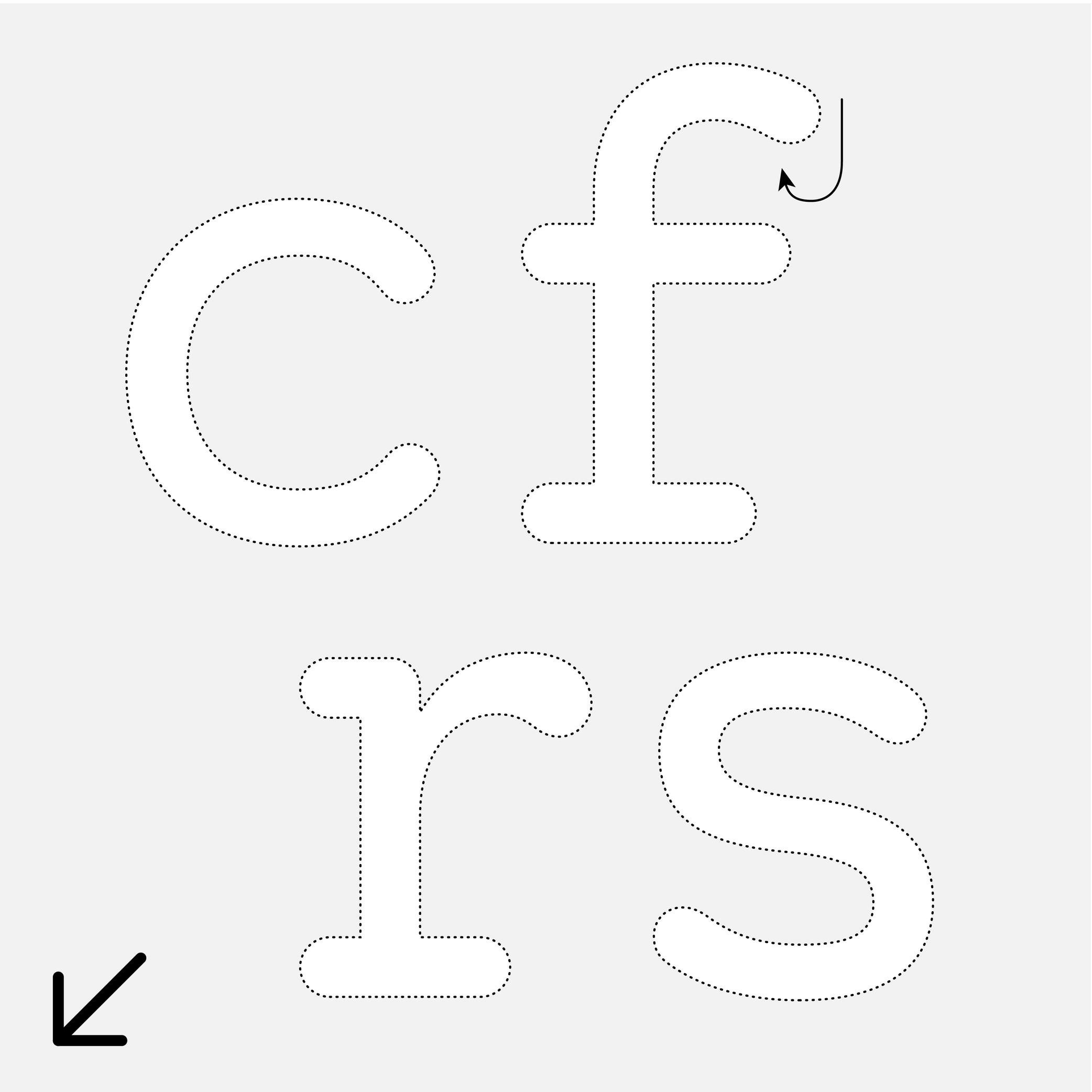
Sponsor Word of Type and feature your typeface in this card with a linked caption. Contact us for more information.
(Read More)Many terms are borrowed from architecture or human and animal anatomy to designate and describe parts of letters and other characters. We even speak of type design anatomy.
In the Latin script, the hook refers to the part curling downward in letters such as c, f, r, s, etc.
Depending on the style or the shape of this part, it can also be called an ear, an arch or a (upper) terminal.
Hypertext
(Read More)A hypertext link is a part of digital text linked to another page or website.
It is often displayed underlined or highlighted in a different color or style.
Hyphen
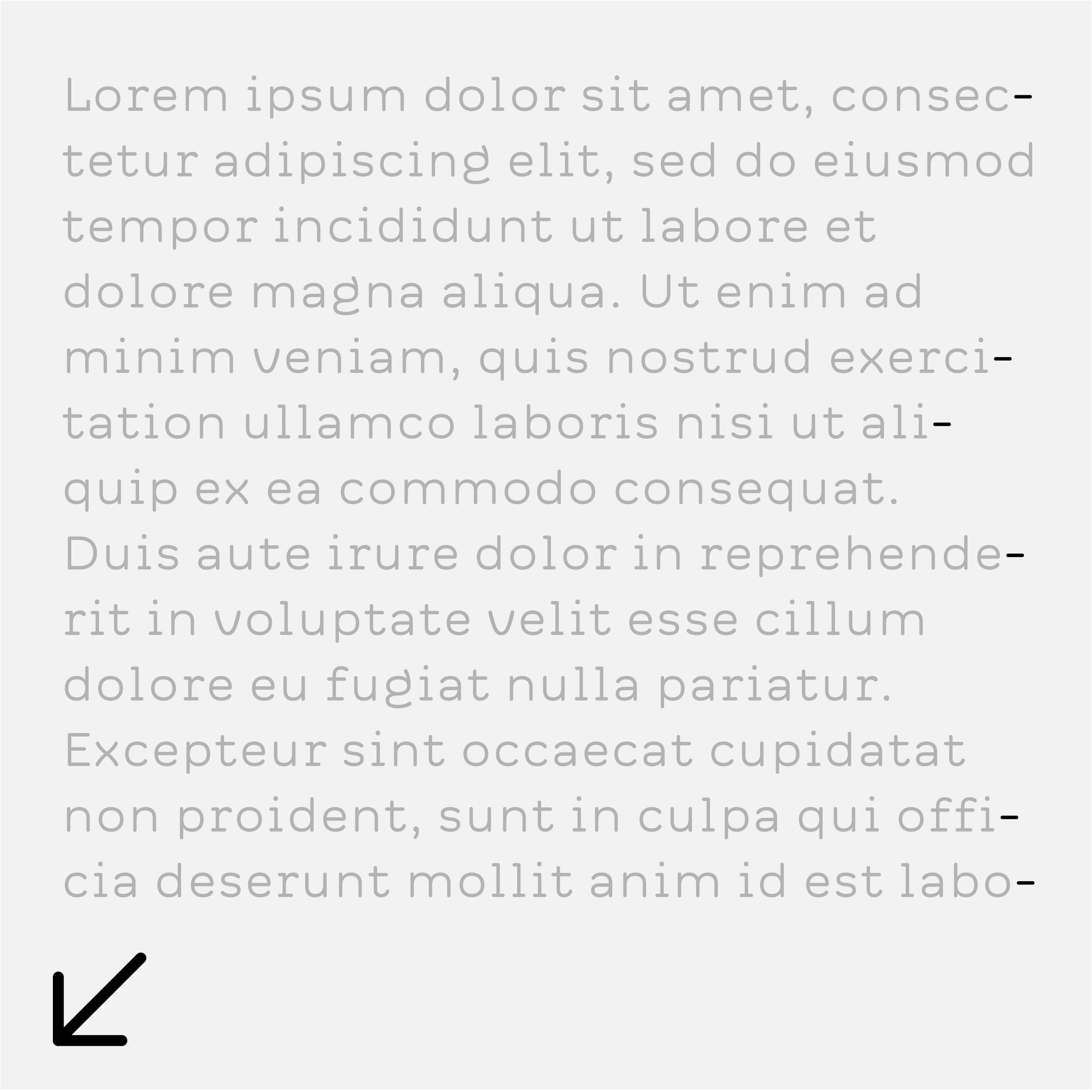
Sponsor Word of Type and feature your typeface in this card with a linked caption. Contact us for more information.
(Read More)FUNCTION
Hyphens are short dash-like glyphs used as word connectors in names or compound words, or to mark a word break (hyphenation in justified or unjustified texts), like in this word card’s illustration.
HISTORY
Before printing presses appeared, scribes used various markings in addition to the letters or characters as signs of punctuation. For the same function, they were often different from one country to the next, and could even be different from one scribe to another. In Ancient Greek manuscripts—when spaces were not used to separate words yet—there was a symbol in the shape of a curved underline used to connect two letters of a word. The name of the hyphen even comes from Ancient Greek: “hypó hén,” meaning “under one.” Since placing characters under letters with Johannes Gutenberg’s printing press was complicated, the hyphen moved upward to the middle height.
Later, with the limited space on typewriter keyboards, engineers had to make a compromise and put every similar glyph together under one key. This was the case for the en dash, hyphen, and minus signs (the latter two even became a hybrid hyphen-minus).
DESIGN
The hyphen is the shortest dash , and is placed at the same height as its siblings at middle height of letters.
In a typeface style with contrast, the hyphen’s thickness must be visually consistent with that of the thin parts.
TYPOGRAPHIC RULES
The hyphen has no spaces before or after it. See Hyphenation for information on how to use hyphens in a justified text.
NOT TO BE CONFUSED
It is often confused with the mathematical sign minus − (U+2212), which is usually longer than the hyphen, the hyphen-minus - (U+002D), or even with the en dash – (U+2013).
In digital fonts, each of those glyphs have their own Unicode. They are designed and can be accessed individually. But even on our modern keyboards, typewriter keyboards left us the hyphen-minus that we often use mistakenly, instead of the hyphen or the en dash. Thankfully, most intelligent text-processing apps automatically replace the hyphen-minus with the correct glyph depending on the context.
Hyphenation
(Read More)Hyphenation is the management of word breaks (with a hyphen) wherever a word at the end of a line doesn’t fit. The position of a word-break within a word depends on the language and the script.
There are some options about the usage of hyphenation, such as:
• whether or not to avoid it in capitalized words;
• whether or not to avoid it in the last word of a paragraph or a column;
• generally to avoid having more than three hyphenated lines of text in a row.Icon
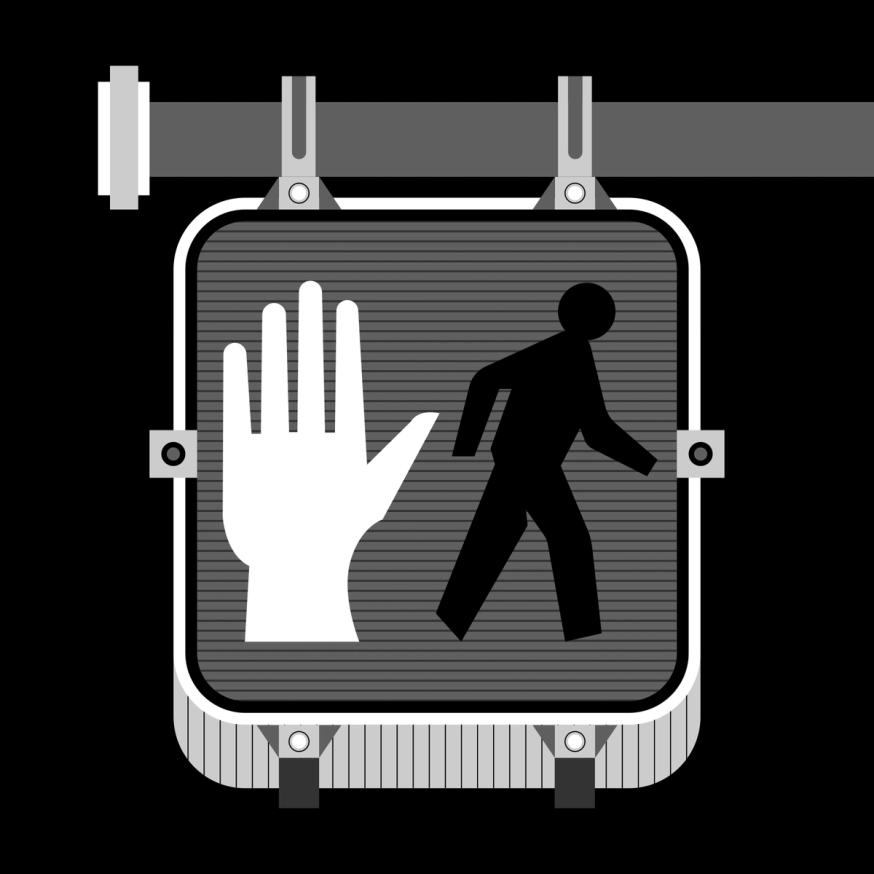
Illustration: Jonny Wan .
(Read More)In typography and type design, an icon can be a pictogram (a stylized drawing of an object) or an ideogram (a drawing with a meaning).
Ideogram
(Read More)An ideogram is a drawing or symbol representing a specific meaning or a concept. It isn’t necessarily visually related to what it refers to, like pictograms or logograms.
Some scripts, such as Chinese Hanzi or Egyptian Hieroglyphs, use ideograms as part of their system.
Indent
(Read More)When typesetting a text, an indent indicates a new paragraph with a new line. It doesn’t have a “visible” sign so to speak, but it is equally considered a punctuation symbol.
In most word-processing applications, the indent symbol can be seen while selecting some text or activating the display of hidden characters.
Ink Trap
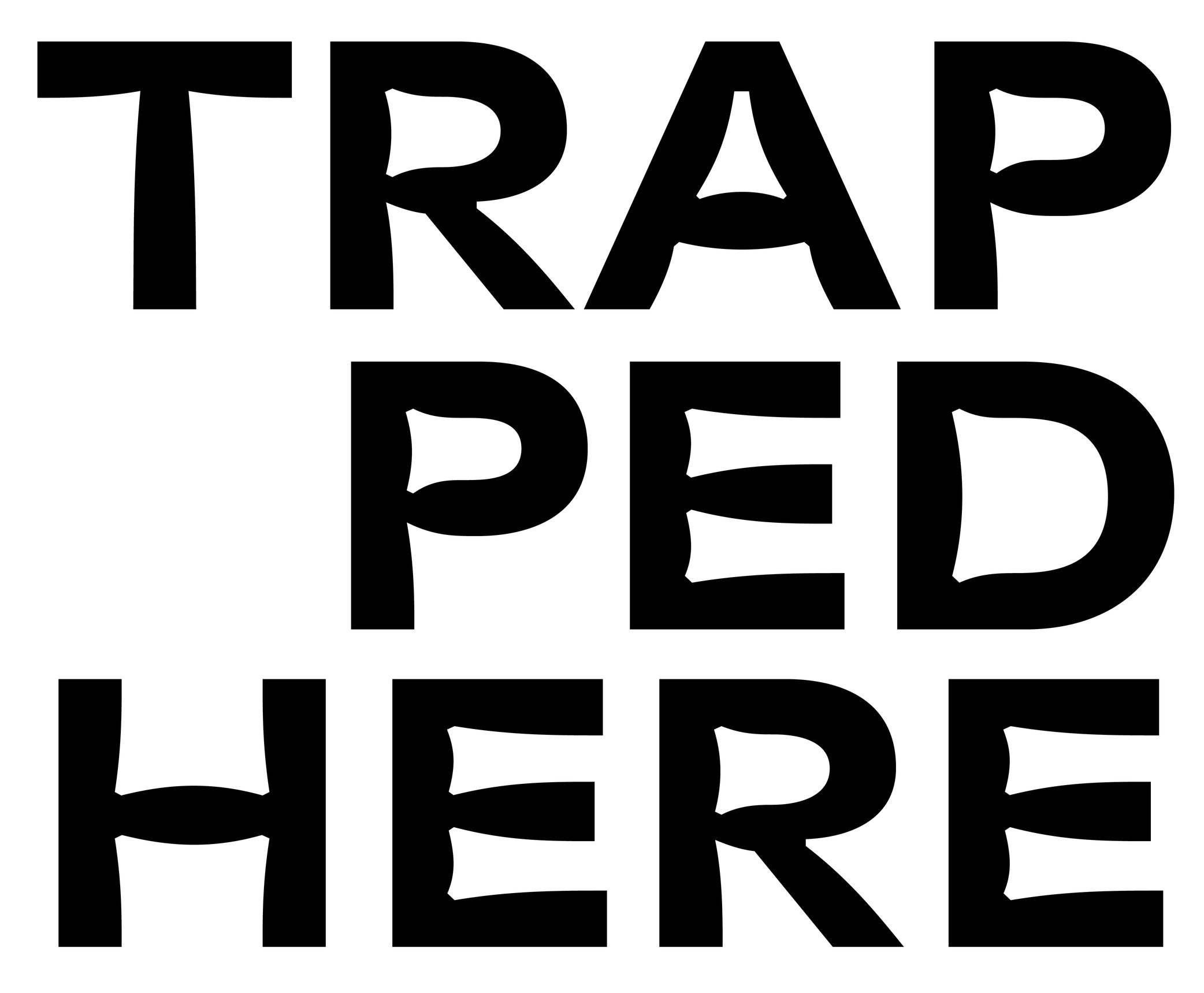
Sponsored by Blaze Type . Typeface in use: Area Normal Inktrap , designed by Matthieu Salvaggio, 2021.
(Read More)When printing technology was primarily based on printing inked metal types on paper, ink could easily spread into the small corners of the characters. In printing, this effect is called a bleed. Especially at small sizes, too much ink spread can weaken legibility.
One of the best examples of a typeface solving the ink-spread problem is Bell Centennial, designed by Matthew Carter in 1975 for the US telephone company AT&T. It needed a typeface for its phone books, which would be printed on thin and porous paper. The resulting typeface featured inner corners that dug into the letterforms’ usual contours. Those are called ink traps.
In digital typeface design, designers still use ink traps, especially for typefaces intended for small sizes (on printed and/or digital media), but also as design features (which can be pretty wild!).
Instance
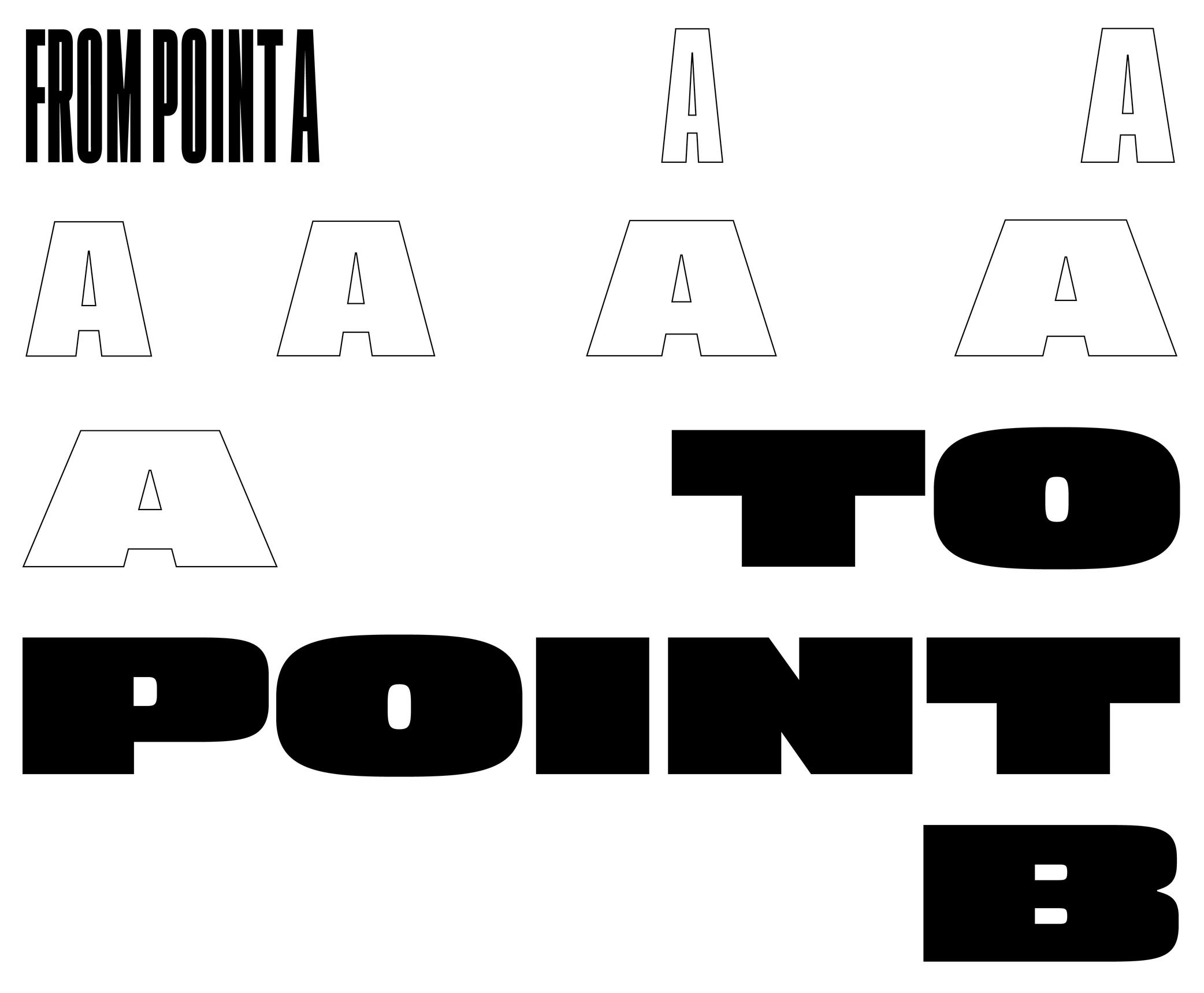
Sponsored by Blaze Type . Typeface in use: Mega , designed by Matthieu Salvaggio and Malo Haffreingue, 2023.
(Read More)Variable Font technology allows users to navigate within or use multiple variations between two or more specific styles (called masters) with high precision and much smaller font files. When we navigate between masters, we are looking at interpolations, which can be exported and used as individual font files, called instances.
GOING FURTHER
Whether a font is variable or not, the concept of a design space can help makers and users visualize how the styles within a typeface family relate to one another. An instance is a style positioned at a defined location in this space. In addition to having a name (like Regular, Bold, or Condensed Bold), an instance also has coordinate values along one or more design axes (such as weight or width). That becomes especially important in the context of variable fonts, where styles are not static but generated through interpolation within the design space.
The names and values associated with common axes such as weight, width, italic, and slant are standardised and documented in the OpenType Specifications .
FONT ENGINEERING ADVICE
There is a distinction between the design space (defined by the outlines and master values) and the user space (what applications read and expose to the user). OpenType specifications document the user space.
Although it is possible to assign any coordinate values to masters and instances for design purposes, these must be mapped to standardized user space values when it come to the common axes mentioned above. For instance, a Regular style must always map to 400 on the weight axis, and a Bold to 700. Some apps only read these values to display an instance, the are therefore necessary for a proper user experience.
Interpolation
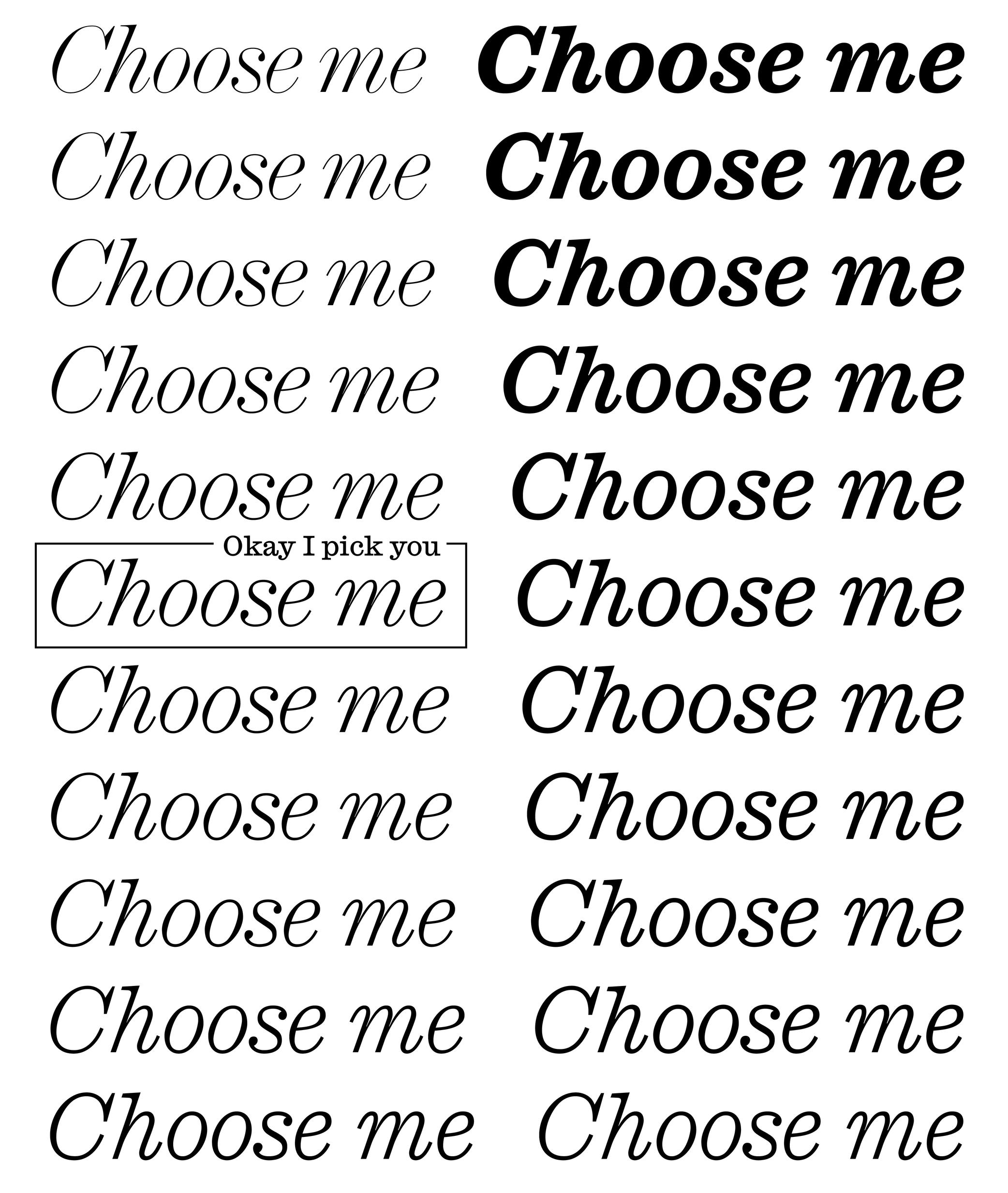
Sponsored by Commercial Type . Typeface in use: Ionic Modern , designed by Paul Barnes with Greg Gazdowicz, 2024.
(Read More)Variable Fonts technology allows users to navigate between two or more specific styles (called masters or sources) with high precision and much smaller font file sizes than several static fonts.
For example, the interpolation between Regular and Bold allows the generation of a Medium style (also called instance) as well as any other intermediate state.
This process relies on the compatibility of the outlines across masters, meaning they must share the same structure and number of points to interpolate correctly.
Interpolation allows variable fonts to have a reduced file size because they store only two masters (or more) and their variations data, rather than separate outlines for every possible style.
FONT ENGINEERING ADVICE
A variable font technically contains only one full master: the origin. This is the default style shown when variable font technology is not supported.
The other masters are stored as delta data—mathematical differences from the origin—used to interpolate and generate other instances dynamically. This delta data is stored in the gvar table.Italic
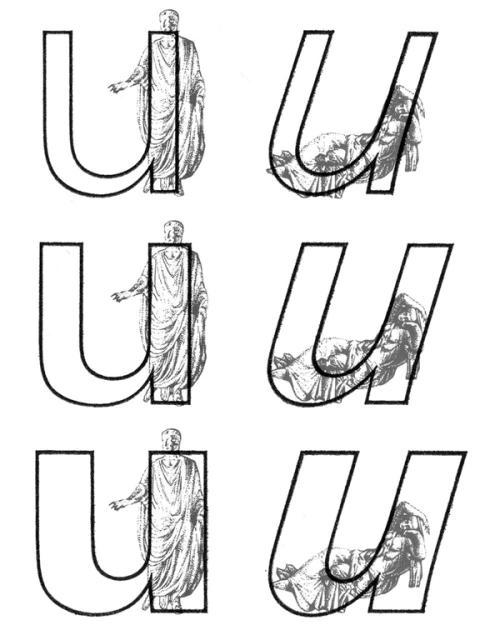
Univers, extract from Manuel Typographique, by Fournier le Jeune, 1766, as displayed in De Plomb, d’Encre et de Lumière, Essai sur la typographie & la communication écrite, C. Peignot and G. Bonnin, French National Printing Office (Imprimerie Nationale), 1982
(Read More)DESCRIPTION
Two construction styles are possible for the same weight in a Latin script typeface: Roman (or upright) and Italic. Italics usually have slanted letterforms, with more or less obvious influence from handwritten letter structure (connected letters) and shapes (softer starts and endings). In general, italic letters also have a slightly narrower width than their upright companion.
For italic styles to be visually linked to an upright version, they have to be related to each other (similar weight, height, etc.). However, they also need to be different enough so that the reader can easily differentiate one from the other. Managing a good balance between differentiation and similarity is part of the typeface designer’s expertise to design a “nice couple.”
HISTORY
During the Renaissance in Europe, when the Humanist movement emerged, they developed a new style of handwriting that combined the old Carolingian Minuscule (all lowercase letters) with forms inspired by Ancient Roman inscriptional lettering (Capitalis Monumentalis). Both have a close relationship to the ‘natural’ movements of the human hand.
While Humanistic handwriting could use either roman (upright, interrupted) or italic (slanted, connected) letterforms, each direction would eventually become an independent style used for different purposes, as is familiar today. The names we use now also come from that era, with ’roman’ referring to the alphabet of the Ancient Romans and ‘Italic’ being a moniker English writers used to refer to the style of connected letters that had originated more recently in Italy.
In typography, the first italic typefaces used date to around 1500. However, it was not until the mid-16th century that French printers began using roman and italic styles as we do today. They employed both styles in various applications to convey different impressions (emphasis, comments, etc.).
USE IN TYPOGRAPHY TODAY
In text, Italic styles are mainly used as a functional companion for a typeface family’s roman styles.
They are used when a part of a sentence or word needs to be emphasized, or differentiated from the rest. Italics are often used to emphasize titles of various works (albums, books, films, magazines, newspapers, etc.), words in a different language, or words that need to be highlighted.Not every writing system uses or even has Italic styles like in the Latin script. Instead, other scripts use different ways to achieve the same purpose of emphasis (i.e., by using a different weight or specific kind of punctuation).
Junction
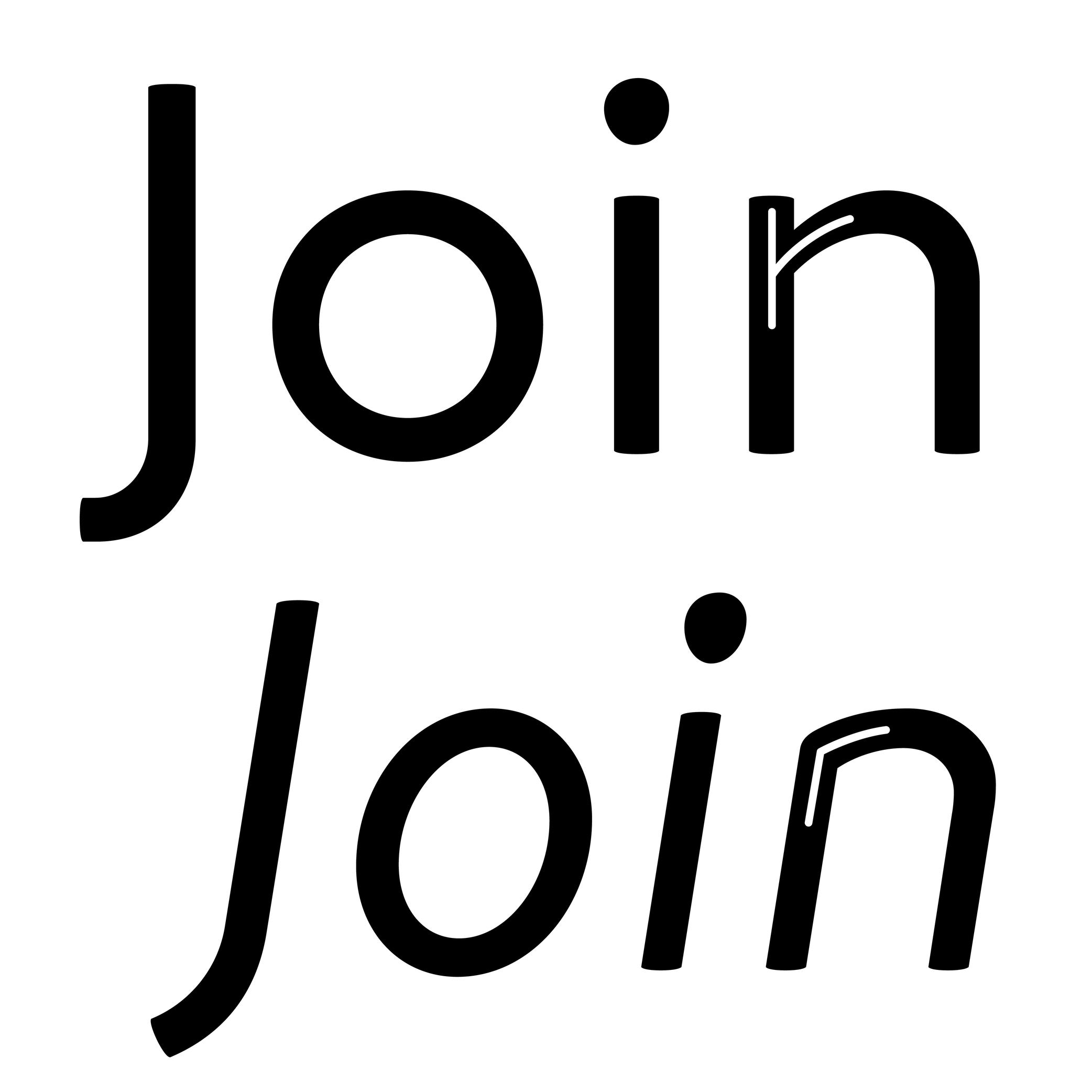 (Read More)
(Read More)Many terms are borrowed from architecture or human and animal anatomy to designate and describe parts of letters and other characters. We even speak of type design anatomy.
The junction is the meeting point of two strokes.
Justification
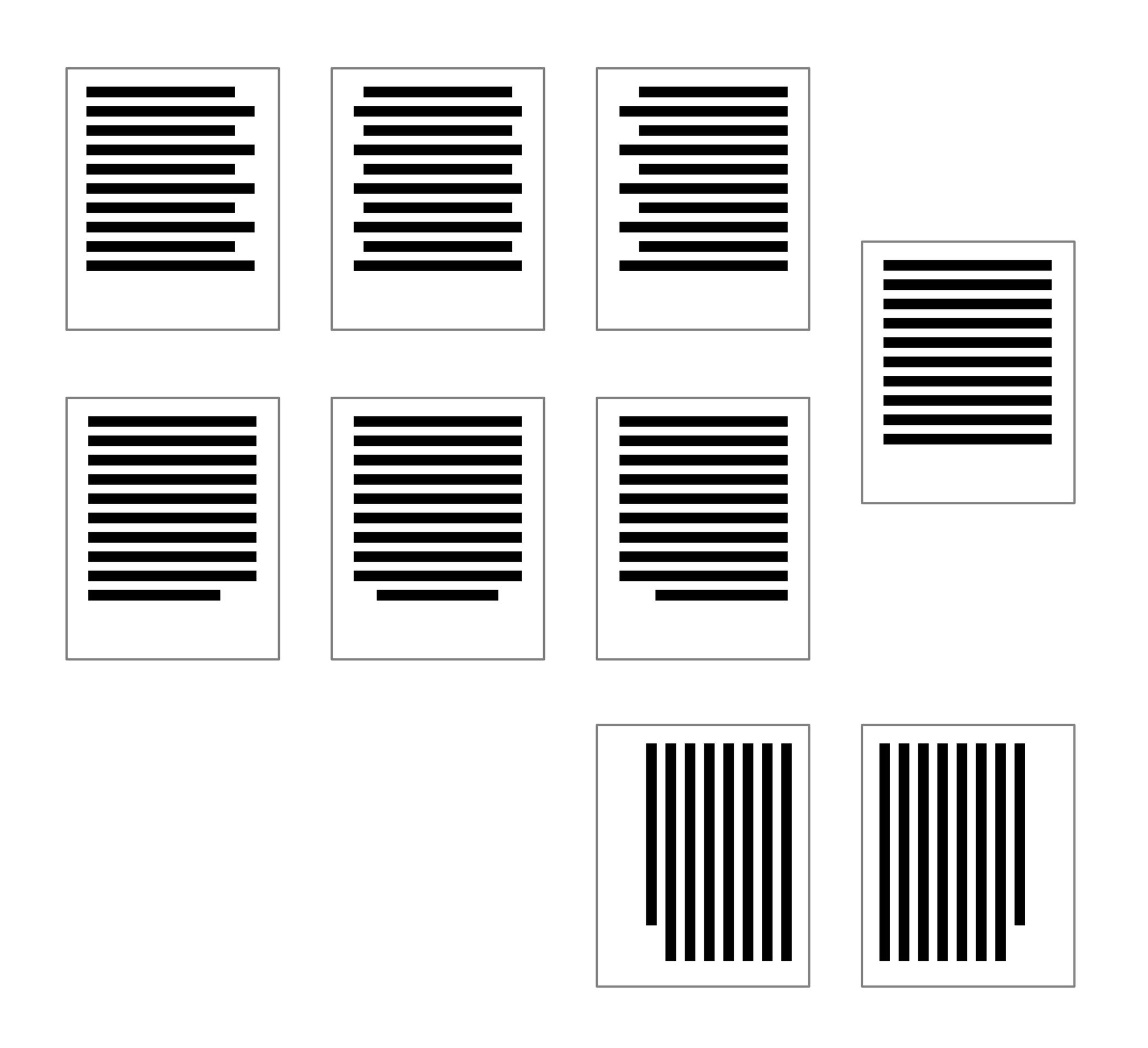
Illustration: Words of Type.
(Read More)Justification refers to text blocks where all lines are the same length, except, perhaps, for the last lines of individual paragraphs.
HISTORY
In the Middle Ages, many scribes would try to keep the appearance of their manuscripts as neat as possible. Guidelines for the left and the right margins, as well as the spaces between columns, would be scored onto the pages before they began to write lines of text. However, it was virtually impossible to keep the lengths of all lines of handwritten text equal, even with hyphenation (splitting a word across two lines).
When he pioneered Western printing technology, Johannes Gutenberg solved that problem through three methods: First, like scribes before him, he would hyphenate words that did not fit entirely on the end of a line. Second, he manipulated the space between words so that some lines had narrower word spaces and others wider ones. Finally, his compositors had narrower versions of some letterforms to fit more words onto one line.USE IN TYPOGRAPHY TODAY
In digital typesetting, algorithms for hyphenation and justification still split words across two lines and employ flexible word-space widths. However, Gutenberg’s use of multiple widths for individual letters did not catch on.
Inexperienced typographers occasionally use software features that can make some or all characters on a line artificially narrower or employ negative tracking between all characters on a line. These possibilities are both typographic abominations that should never be used.
Instead, users should adjust the hyphenation and justification options in their page-layout software to achieve a better result and add soft hyphens and/or soft line breaks to improve the appearance of their justified texts.Some other typesetting options (common for scripts written horizontally and from left to right) are centered, flush left/ragged right, and flush right/ragged left.
Kerning
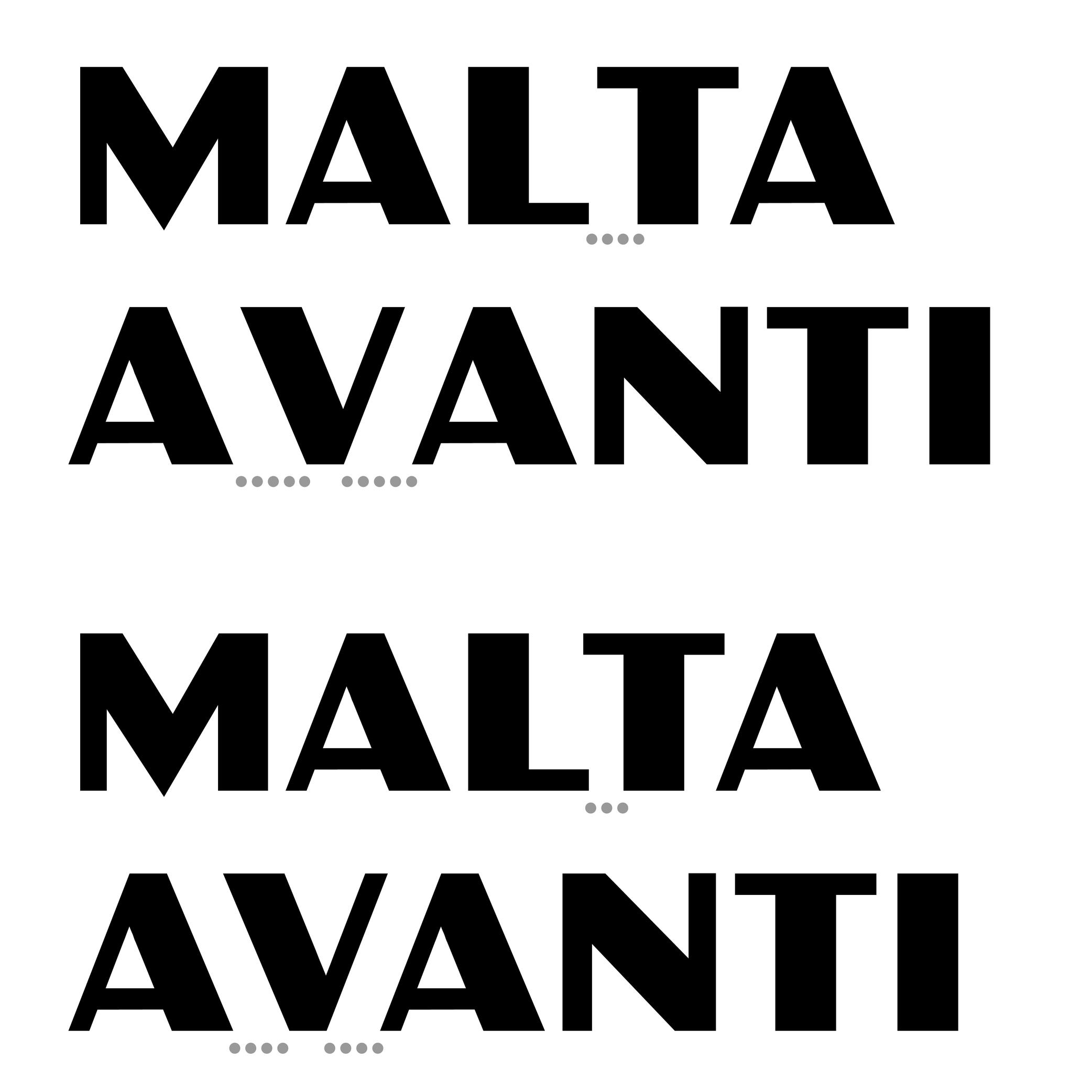
Sponsored by Kerns & Cairns . Typeface in use: Glissade , designed by Dyana Weissman, coming soon.
(Read More)Characters have a specific space on both sides, which can be positive, negative, or zero. Setting these values for characters in a font globally is called setting its spacing. And in some cases, when specific pairs might result with a space that is too loose, too tight, or even with parts colliding, the designer needs to work on their kerning. Kerning is about adjusting the distance between such pairs whenever they are used next to one another and in that specific order, to give a smoother texture of the text.
Once a kerning value has been set for a pair of glyphs, those values can be repeated on every other pair with identical or similar shapes (e.g., V + A, W + A). Kerning can be set even with already published fonts in most applications (useful in justified texts), but great typefaces usually have these already fixed.
Language
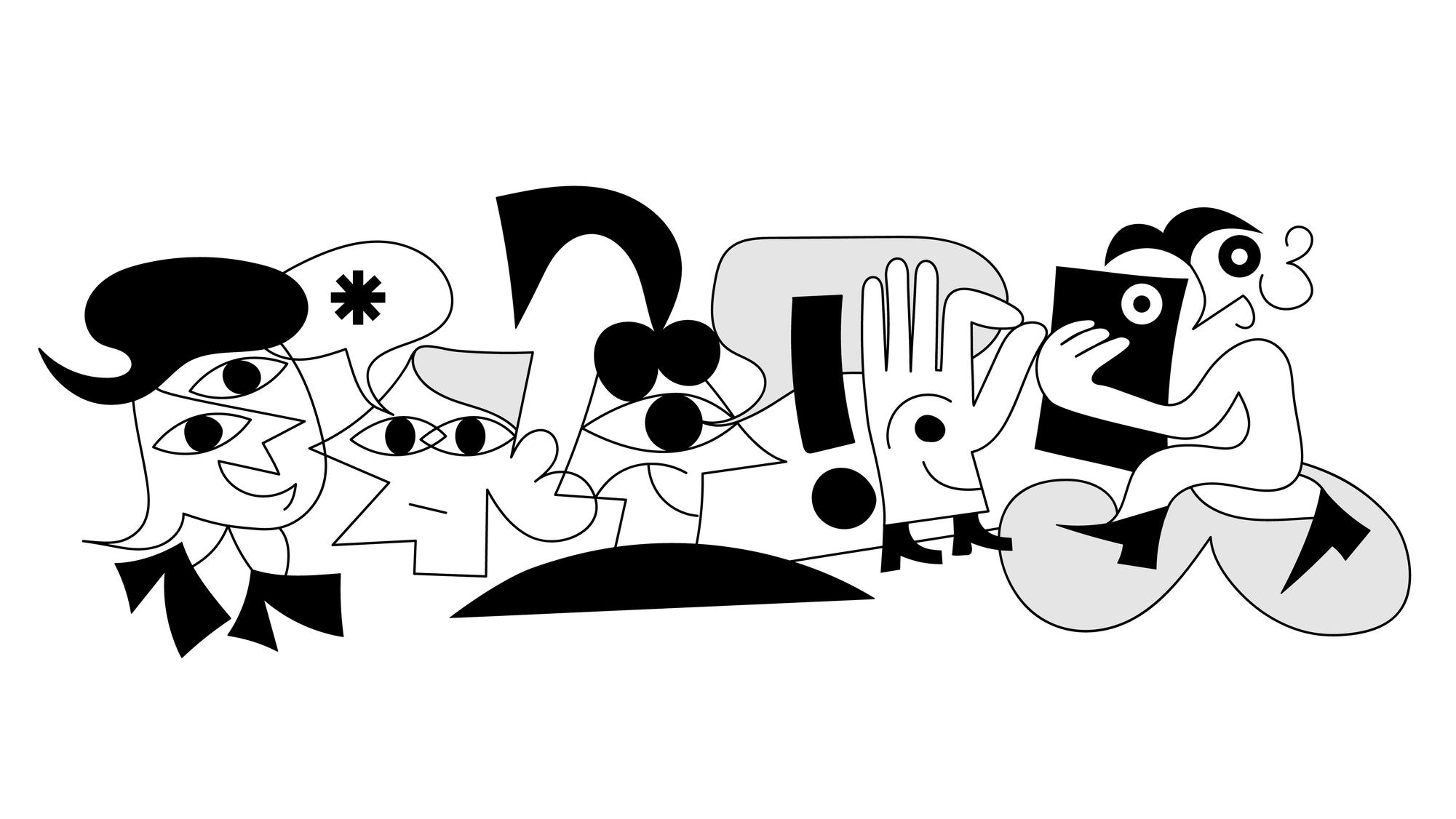
Illustration: Catherine Potvin .
(Read More)As opposed to the word script, a language is a means of communication and expression that does not necessarily rely on spoken words (e.g., sign language).
Latin Script
(Read More)Historians and linguists consider that the origins of the Latin script date back to the Phoenician civilization around the 13th century BC in Greece and the Mediterranean Sea. They created a consonantal alphabet called abjad, which was borrowed by other languages in the region for the innovative nature of its phonetic system, and due to the large influence of the Phoenician people as principal traders and navigators. This alphabet later led to multiple derivatives, including Greek and Latin alphabets.
The Latin script evolved from the Greek, with a Proto-Latin appearing around the 2nd century BC. It started by taking some of the Greek letters and modifying them, adding or removing others to fit better with the Latin language, spoken by Roman civilization (which is why it is also called the Roman alphabet).
The modern Latin script contains 26 distinct letters from its most basic set, with uppercase and lowercase forms for each. Many languages using the Latin alphabet have additional letters, ligatures or digraphs (e.g., æ, œ) to better adapt to the sounds of each.
With Eurocentrism ideology (main focus on European culture), the type design industry has also been largely focused on scripts used by the Western world: Latin in particular, with hundreds of years of practice, experience, theories, teaching and conventions, exhibitions and festivals mainly about this script. But, thanks to the increasing international exchanges and efforts to create a perspective beyond those boundaries, the type design industry is currently evolving into a much richer and diverse typographic culture.
Layout
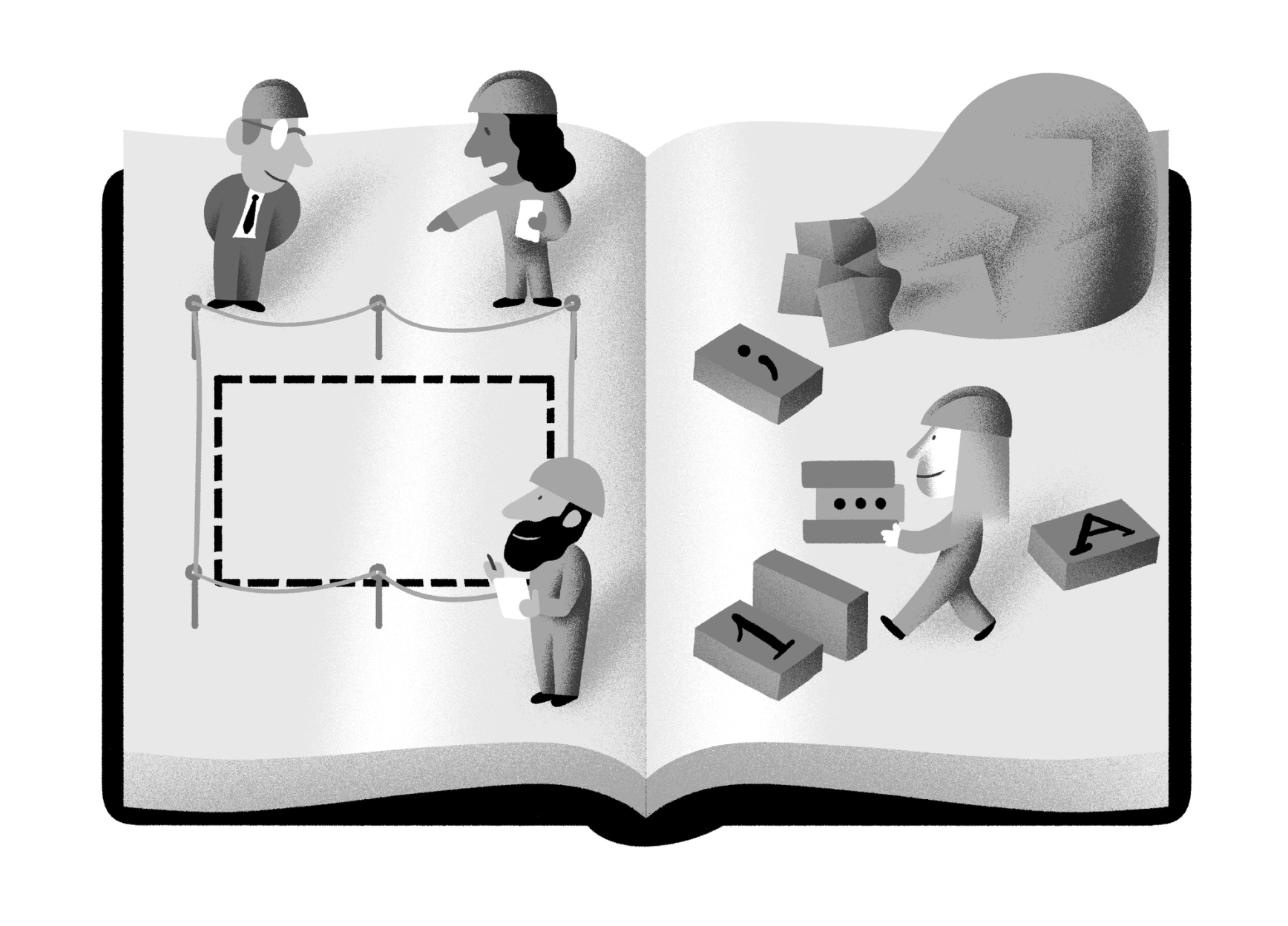
Illustration: Yann Bastard .
(Read More)Layout can either be a noun or a verb. It refers to both the activity of arranging graphic elements on a surface (page, screen, wall, space, etc.) and the result of that arrangement. The different graphic elements within a layout might include blocks of text, titles, pagination, images, etc. The white space between and around elements is just as important as the elements themselves.
Ideally, a layout has a clear and consistent aesthetic, and that aesthetic is appropriate to the desired function of the layout’s contents.
Leading
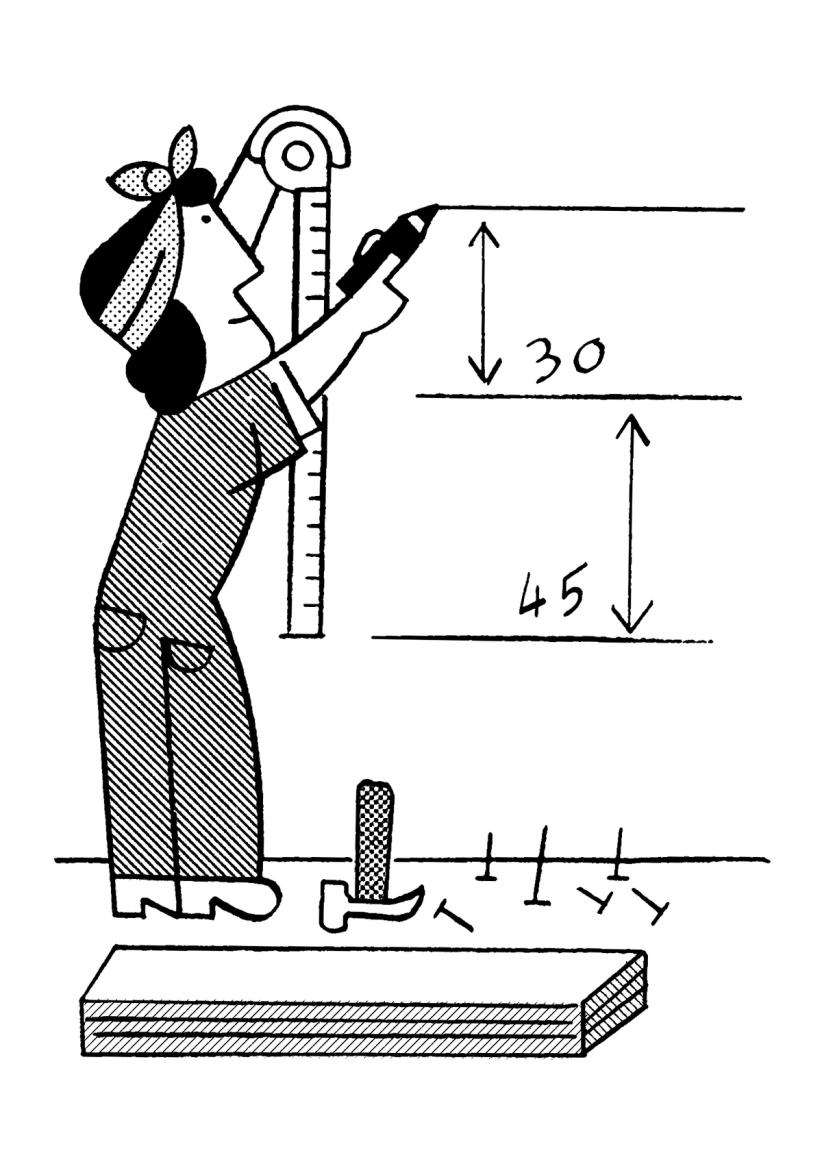
Illustration: Jay Cover .
(Read More)The leading is the amount of space added to increase line spacing (the height of the space between two baselines).
HISTORY
The word refers to the strips of lead used to separate lines of type with in the era of metal-type printing. The line spacing between two lines of 12 pt text set solid was exactly 12 pt. When 2 pt piece of lead was added between those lines, the line spacing value was increased to 14 pt. But the leading value was not 14 pt, instead it was 2 pt.
TODAY
Increasing line-spacing values in InDesign or in CSS isn’t per se “leading,” it is a “line-spacing increase.” Although, it is quite common to say “increase the leading” while you are technically increasing the line spacing.
Leg
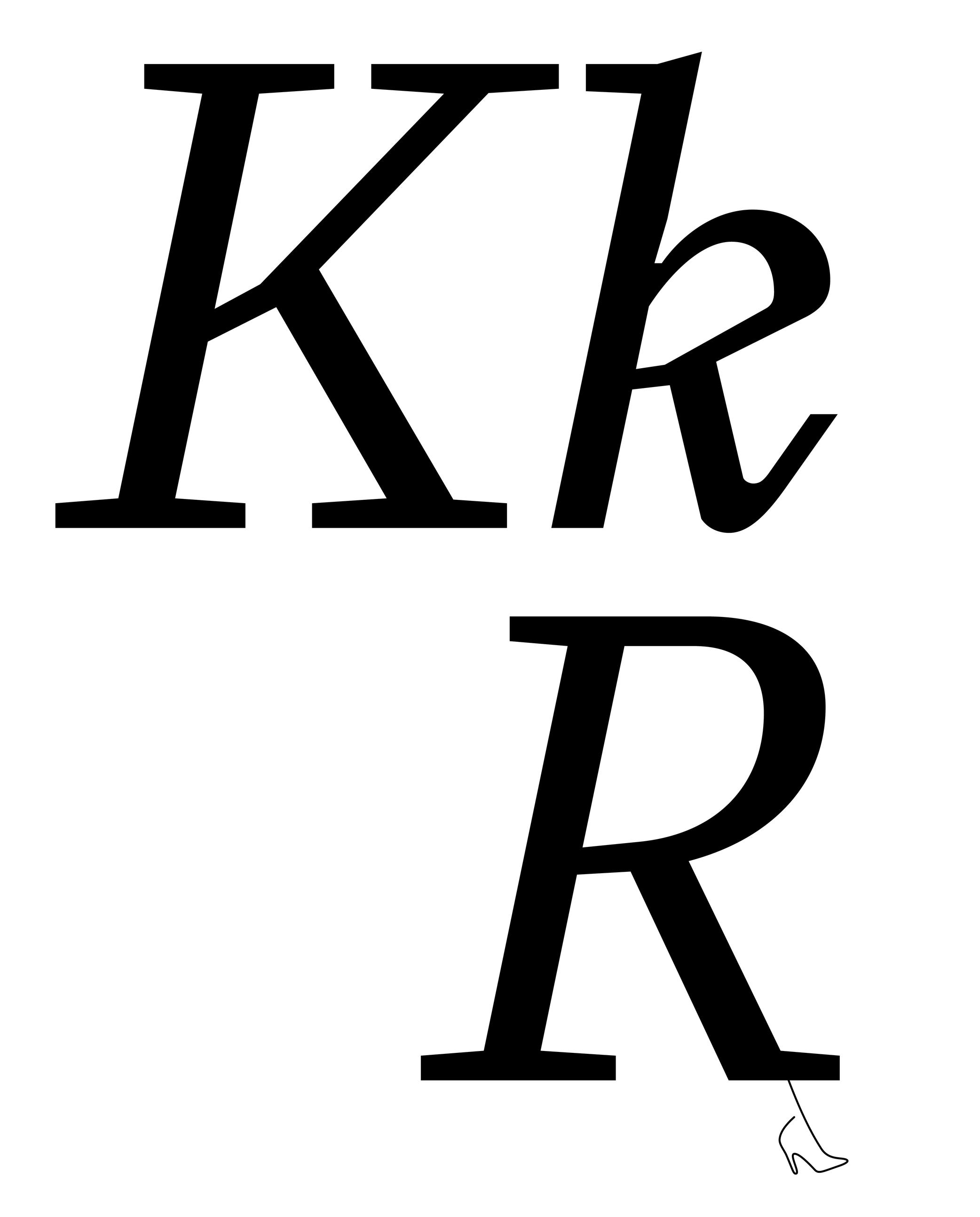
Sponsored by Type Together . Typeface in use: Aeroplan , designed by Nina Faulhaber, 2023.
(Read More)Many terms are borrowed from architecture or human and animal anatomy to designate and describe parts of letters and other characters. We even speak of type design anatomy.
In Latin script, the leg is the lower diagonal stroke of letters like R, k or K.
Legibility
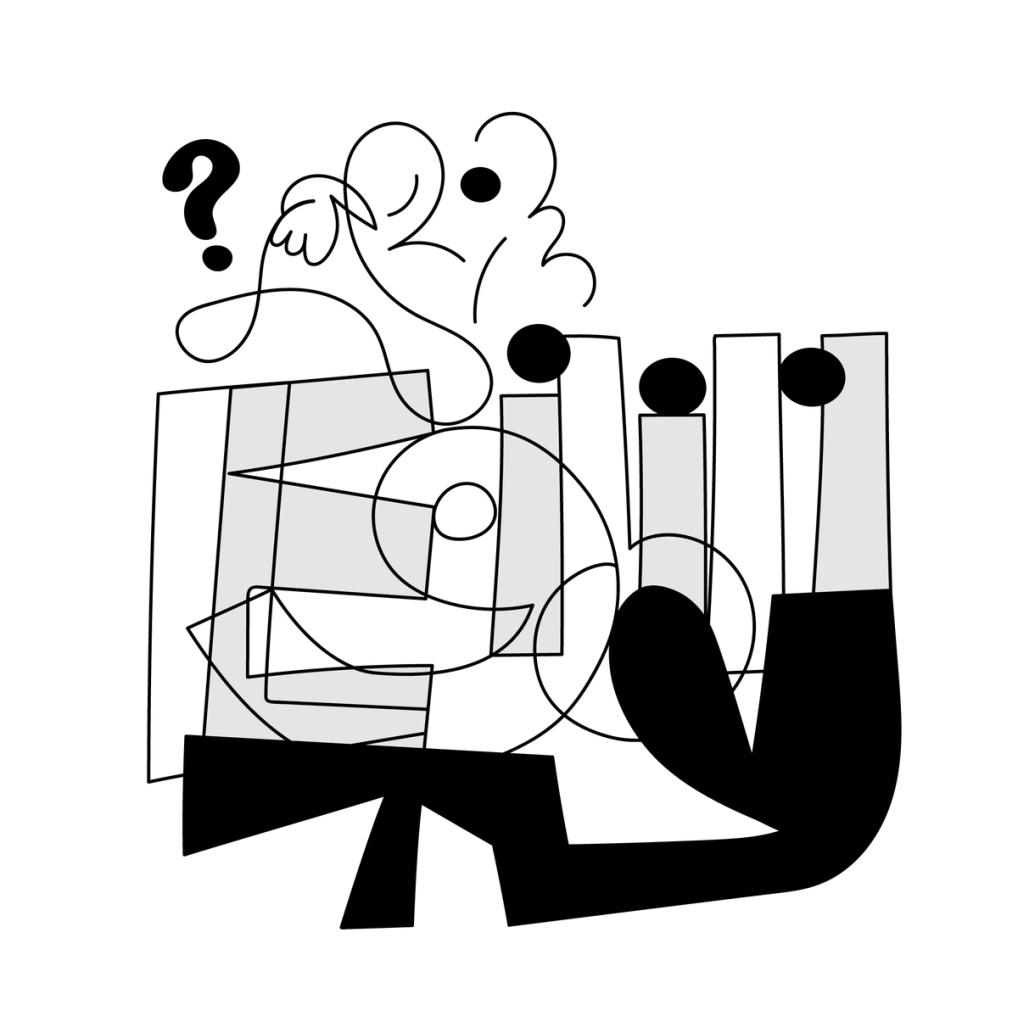
Illustration: Catherine Potvin .
(Read More)Legibility is about how easily a text can be read thanks to the identification of each character.
In typeface design, some shapes allow a glyph to be recognized more easily than others, generally due to the readers’ familiarity.
It is a subjective concept that can vary with context, culture and history. The meaning of legibility and readability is often mixed up.Letter
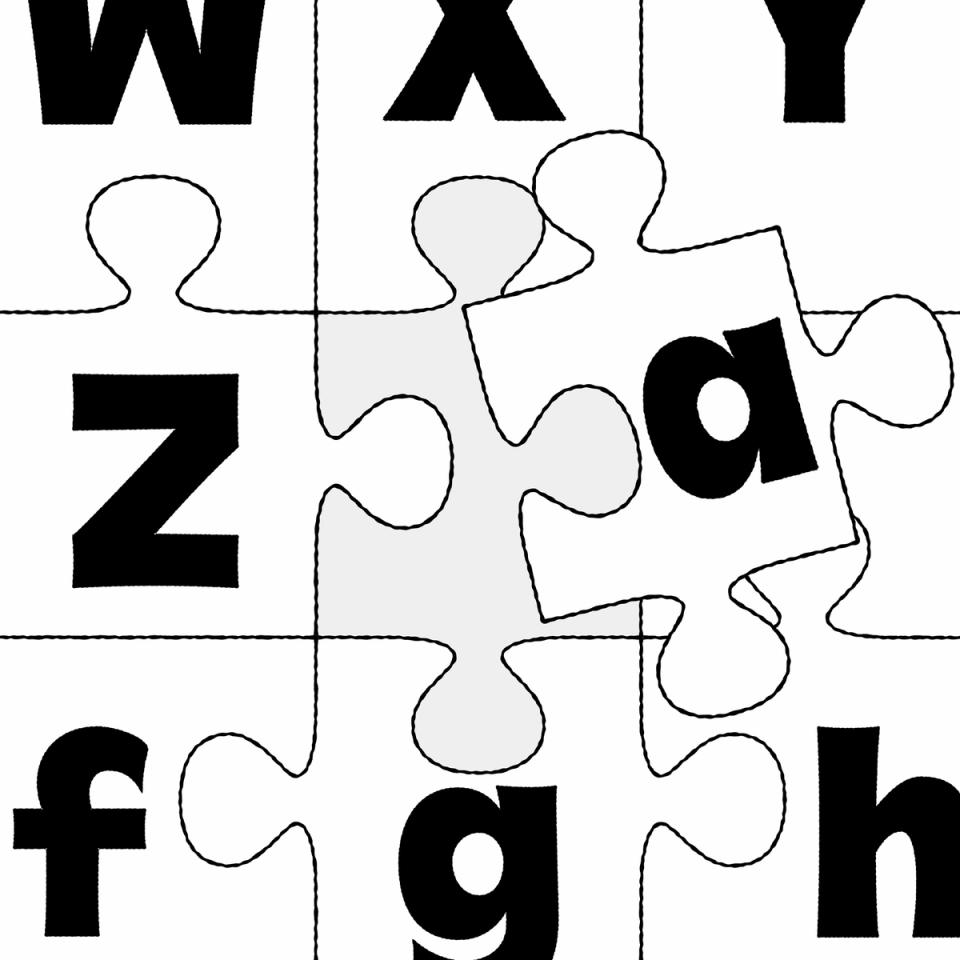
Illustration: Raven Mo .
(Read More)A letter is a sign from an alphabet, transcribing a language’s sounds when they are combined.
Lettering
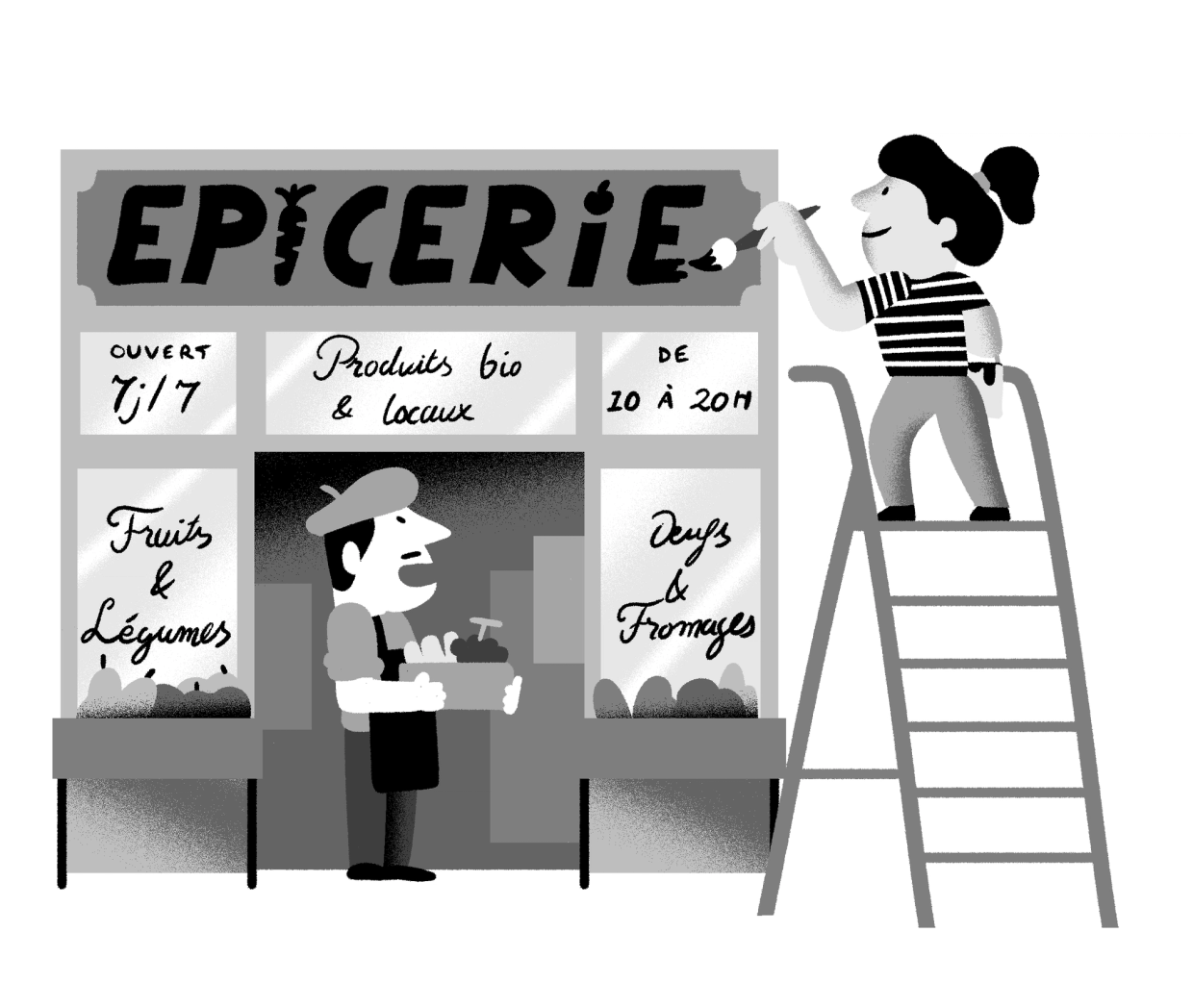
Illustration: Yann Bastard .
(Read More)A lettering is a drawing of a group of characters made for a specific situation (such as on a shop sign) or for a piece of work (a brand’s logo, a title for a magazine insert, etc.), unlike a typeface where each and every glyph is individually designed in a way to work in all kinds of combinations.
License

Illustration: Catherine Potvin .
(Read More)Typefaces in their digital form are products distributed and sold like software: it is not the design itself that is sold, but a copy (a font) attached with an agreement to use it: its license.
A license contains terms and conditions granted by the designer and/or the publisher to use the font. There are multiple types of licenses adjusted to the intended use of the potential client. There can be different licenses, with a pricing system specific to particular distributors, according to their marketing philosophy.
Ligature

Sponsored by LO-OL . Typeface in use: Kronik Antik Display, designed by Loris Olivier, 2023.
(Read More)In the era of metal-type printing, some character combinations in specific languages were used so often that they were combined to save time while composing texts. Punchcutters would ensure that one sort from the font would depict both letterforms together. We call these individual sorts with more than one letterform a ligature.
Other ligatures weren’t made because of the need to save time but because a series of letterforms would otherwise appear in a non-aesthetic manner on the page. One example of this is the f and i. Without a ligature, the white space between those two letters would be bigger than between other lowercase letters. Plus, the upper terminal of the f would be too close to the dot of the i.The same principle has been kept in digital typefaces and ligatures exist as independent glyphs. OpenType features allow us to switch from two separated glyphs to their ligature variant thanks to the ligature alternate features (if they exist in the selected typeface).
Light (weight)
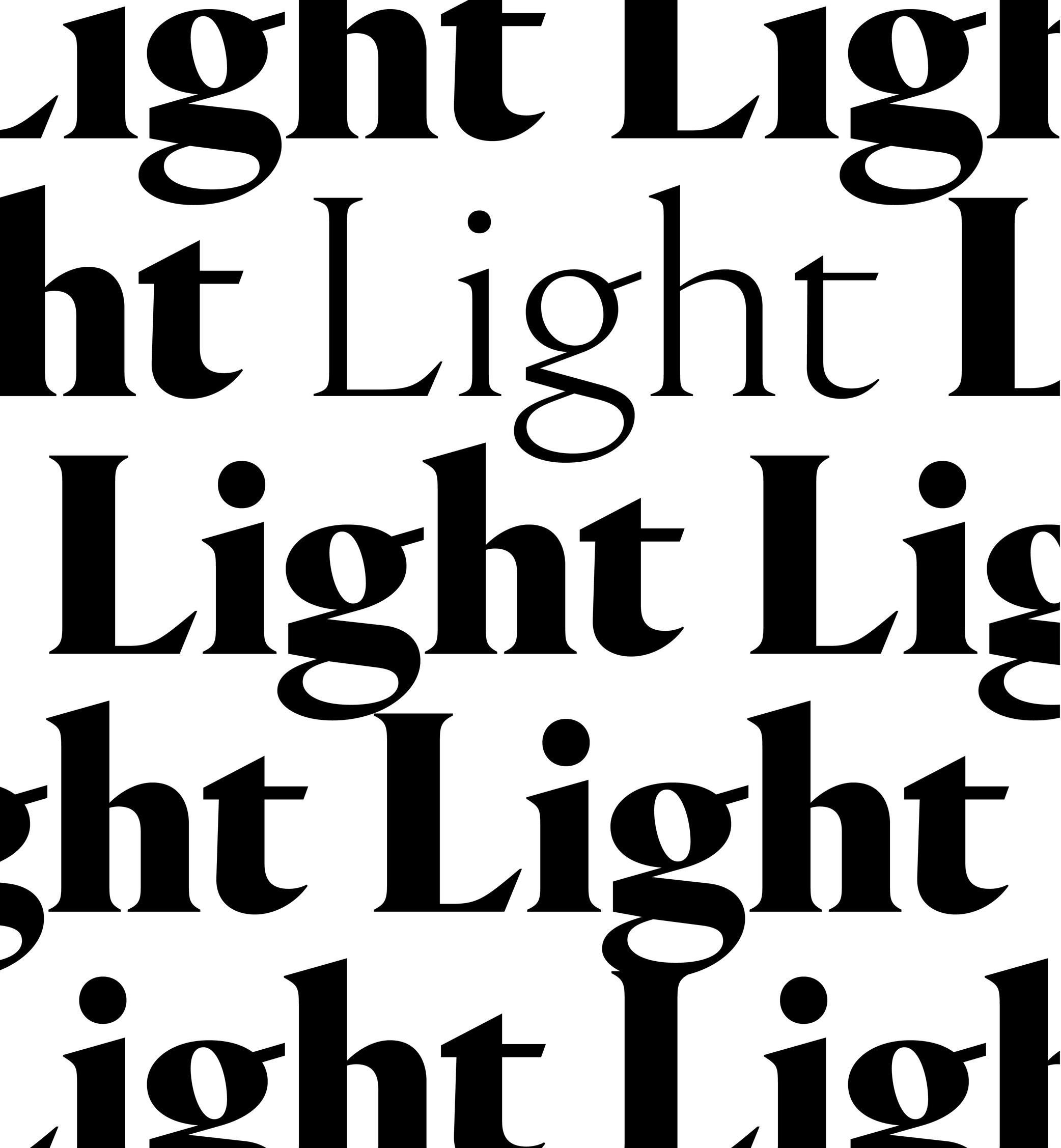
Sponsored by R-Typography . Typeface in use: Rizoma , designed by Rui Abreu, 2018.
(Read More)A typeface style with a lighter (thinner) weight than the Regular can be called “Light.”
It is one of the most common weights in Latin typefaces (along with Regular and Bold). However, many other terms exist for weight styles on the Design Space spectrum, such as Thin, Book, ExtraLight or Hairline.
Line Length
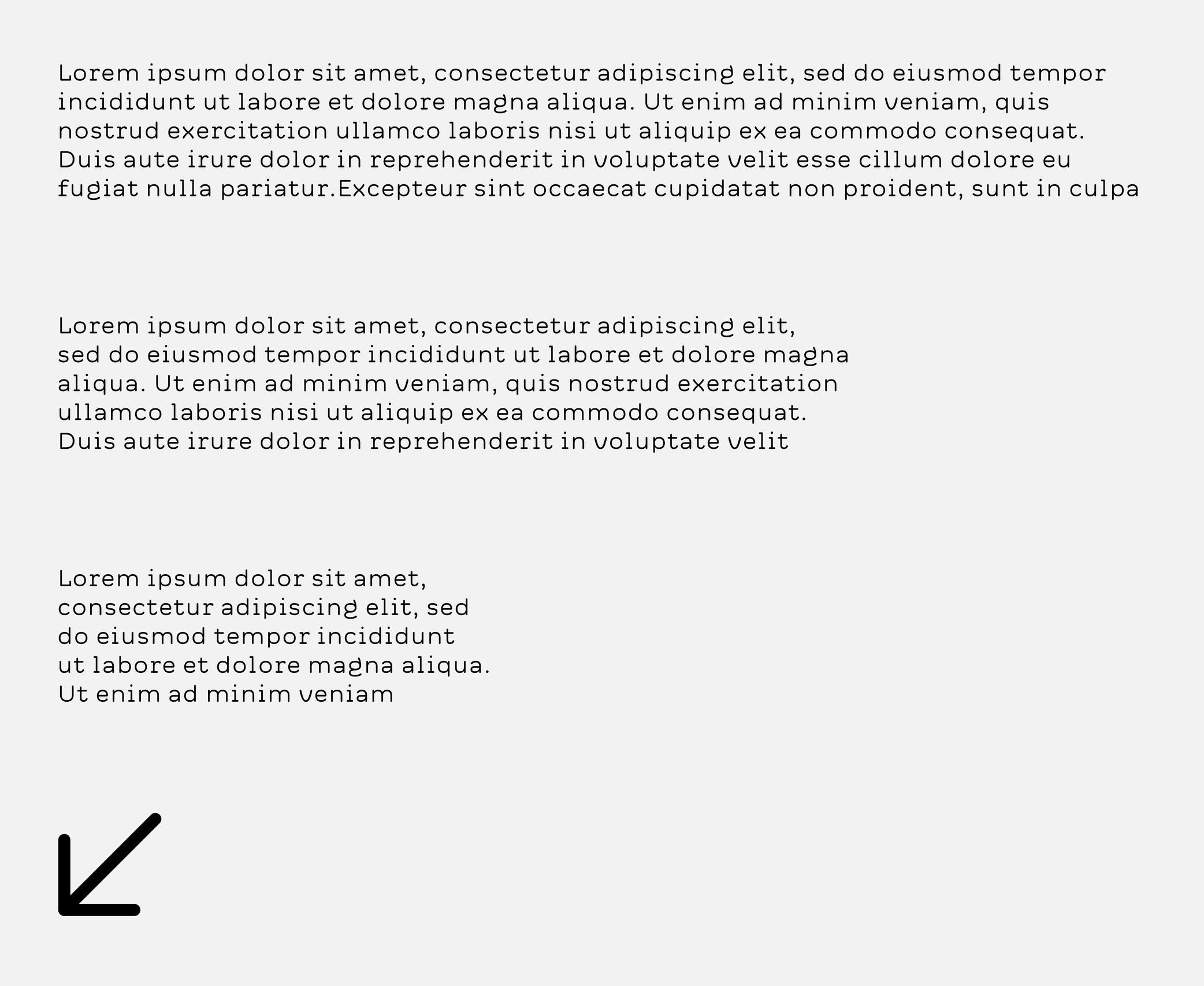
Sponsor Word of Type and feature your typeface in this card with a linked caption. Contact us for more information.
(Read More)A line of text that is too long or too short affects its readability.
Depending on the script and/or the document, there is an average number of words or characters for a comfortable reading.In English, a “good” line length average is between 10 to 15 words.
Lithography
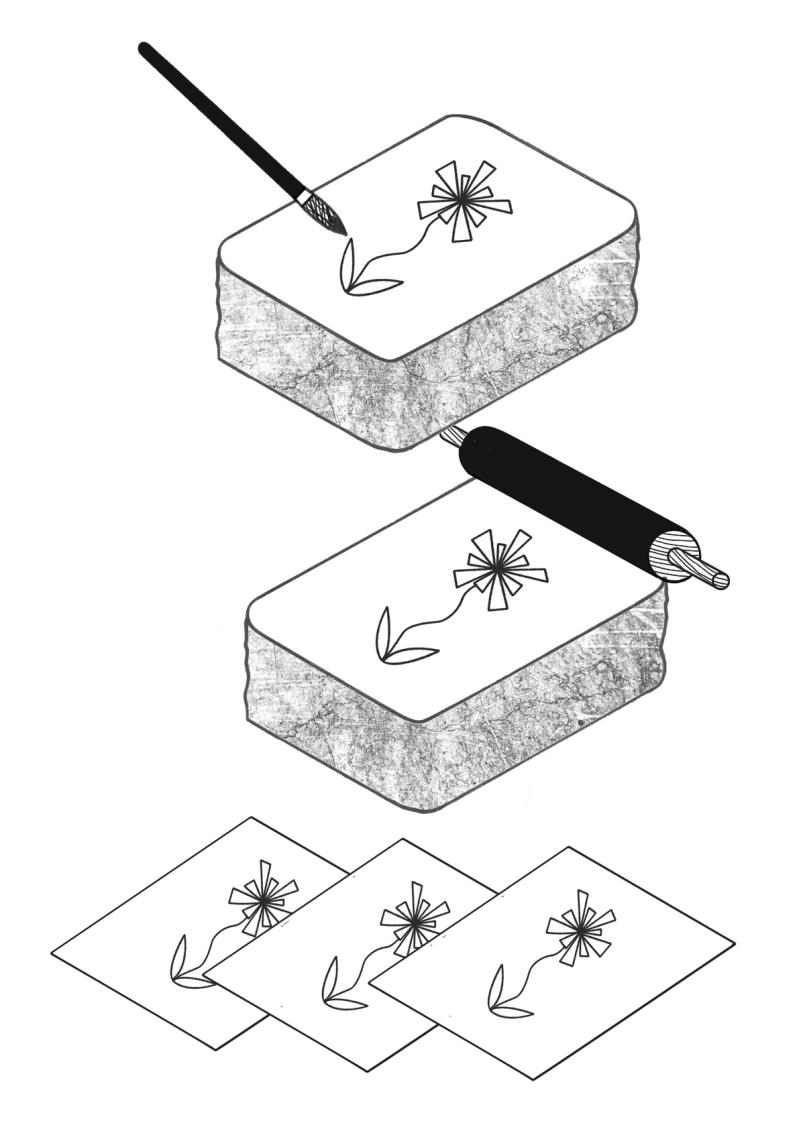
Illustration: Chloe Kendall .
(Read More)Lithography is a printing technique that enables the rapid production of elaborate prints using stone plates (lithos means ‘stone’ in Greek).
HISTORY
Lithography was invented in 1796 by Alois Senefelder (1771–1834), an actor in Bavaria. He developed lithography as a method of reproducing sheets of music.
After Lithography proved successful at this, ever more complex and elaborate images were printed lithographically. Since lithography reproduced images drawn directly onto the stone, it allowed for closer results to original drawings than other techniques of that time. Lithography allowed for multiple layers and colors and was often used for advertising posters, sheet music covers, etc. Before offset lithography became the predominant printing method during the second half of the twentieth century, some books combined multiple techniques (lithography and/or engravings for images, letterpress printing for texts).
TECHNIQUE
The process of lithography printing uses the hydrophobic/hydrophilic chemical reaction between water and oil. Combined with the effect of acid or corrosive products which creates the area for water to go in, the more greasy ink can be kept on the surface and transferred to the paper to be printed.
TODAY
Nowadays, traditional lithography is mostly used to print artistic works and other specific prints, as the process is much more costly than modern techniques, even if it renders a high-quality result. On the other hand, offset lithography is still the standard method by which most items are printed today.
Loop

Sponsor Word of Type and feature your typeface in this card with a linked caption. Contact us for more information.
(Read More)Many terms are borrowed from architecture or human and animal anatomy to designate and describe parts of letters and other characters. We even speak of type design anatomy.
In the Latin script, a loop is the lower part of a double-story g, looking like a loop, open or closed.
Lowercase
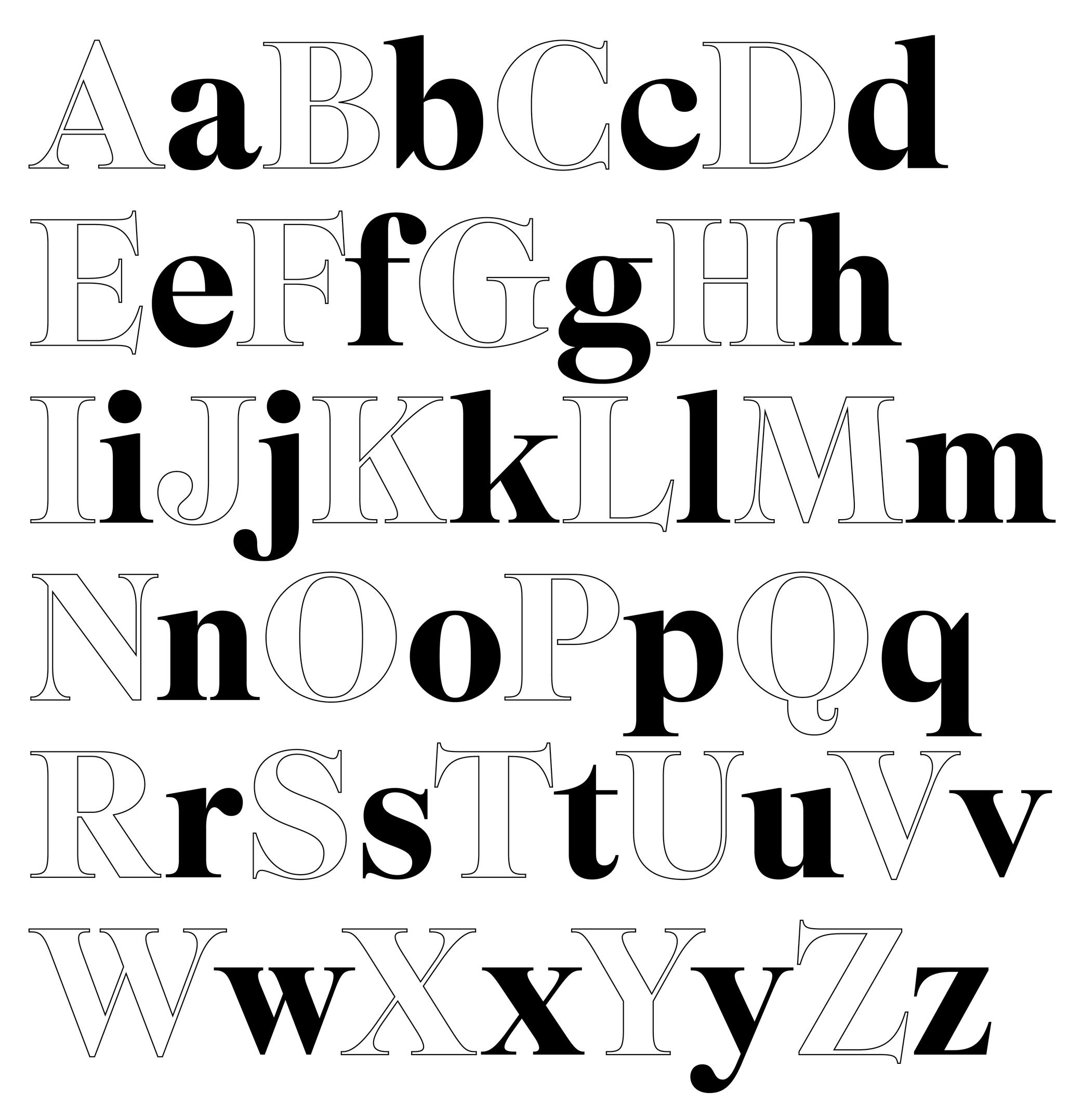
Sponsored by Formagari . Typeface in use: Cedrat, designed by Emmanuel Besse, 2024.
(Read More)Also called minuscule.
Lowercase letters are the smaller forms of alphabetic letters, at least in scripts like Latin that have two cases. Lowercase letters are the opposite of uppercase letters (or majuscules/capitals).
HISTORY
The words ending with -case are a legacy from the era of printing with movable metal type. For the English-language, letters (metal pieces of type) from one font size were traditionally sorted into two wooden drawers or cases, one for each kind of characters. Capitals were in the kept in the upper case, and lowercase letters were on the bottom one. Later, single drawers would be used for an entire font. There, capitals were kept the upper section of the drawer, above the lowercase.
Even though they appeared later than their uppercase “parents,” lowercase letters went through many more iterations. Some of these evolutions were influenced by history (invention of new tools), cultures (preference for certain styles) and geography (influence of nearby cultures).
Majuscule
(Read More)A majuscule is a capital letter placed at the beginning of a sentence or the first letter of a name.
Note that all capital letters are not necessarily majuscules, such as CAPITALIZED words, which are made of capital letters.
Manuscript
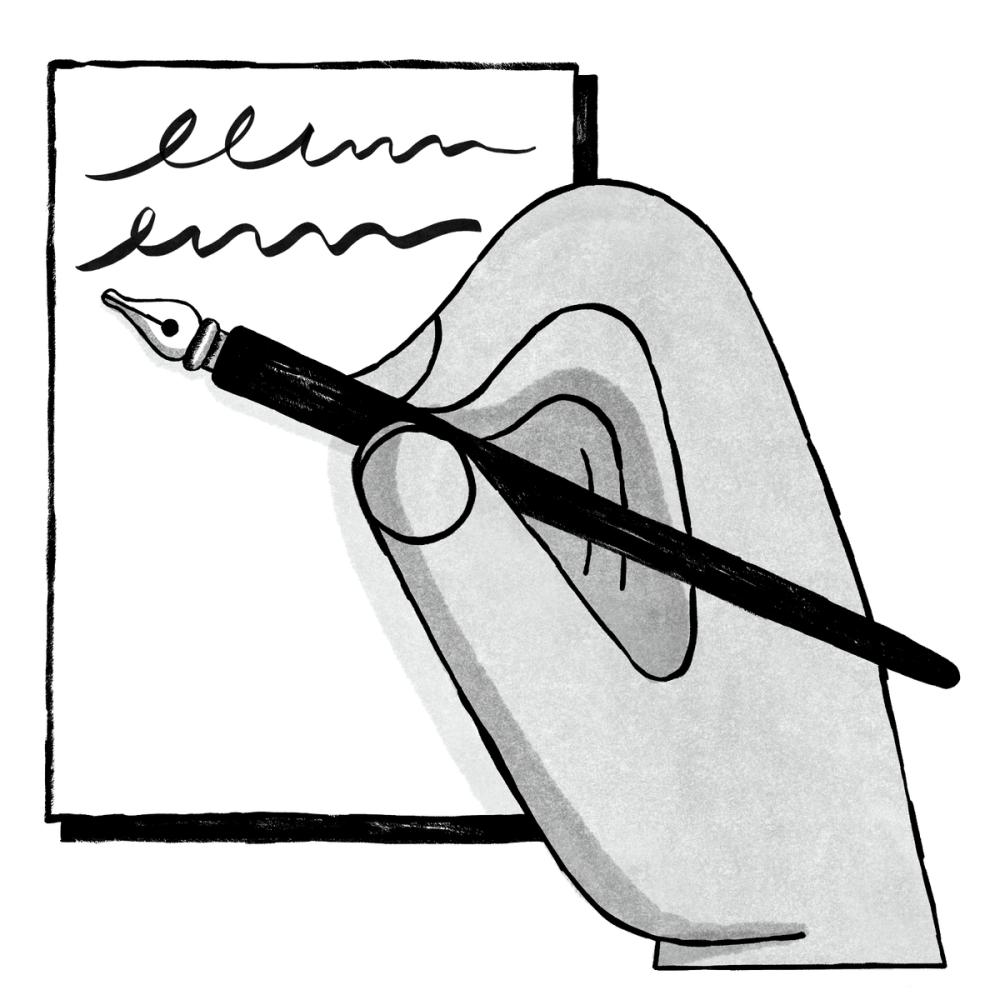
Illustration: Malota .
(Read More)A manuscript is a hand-written document.
Margins
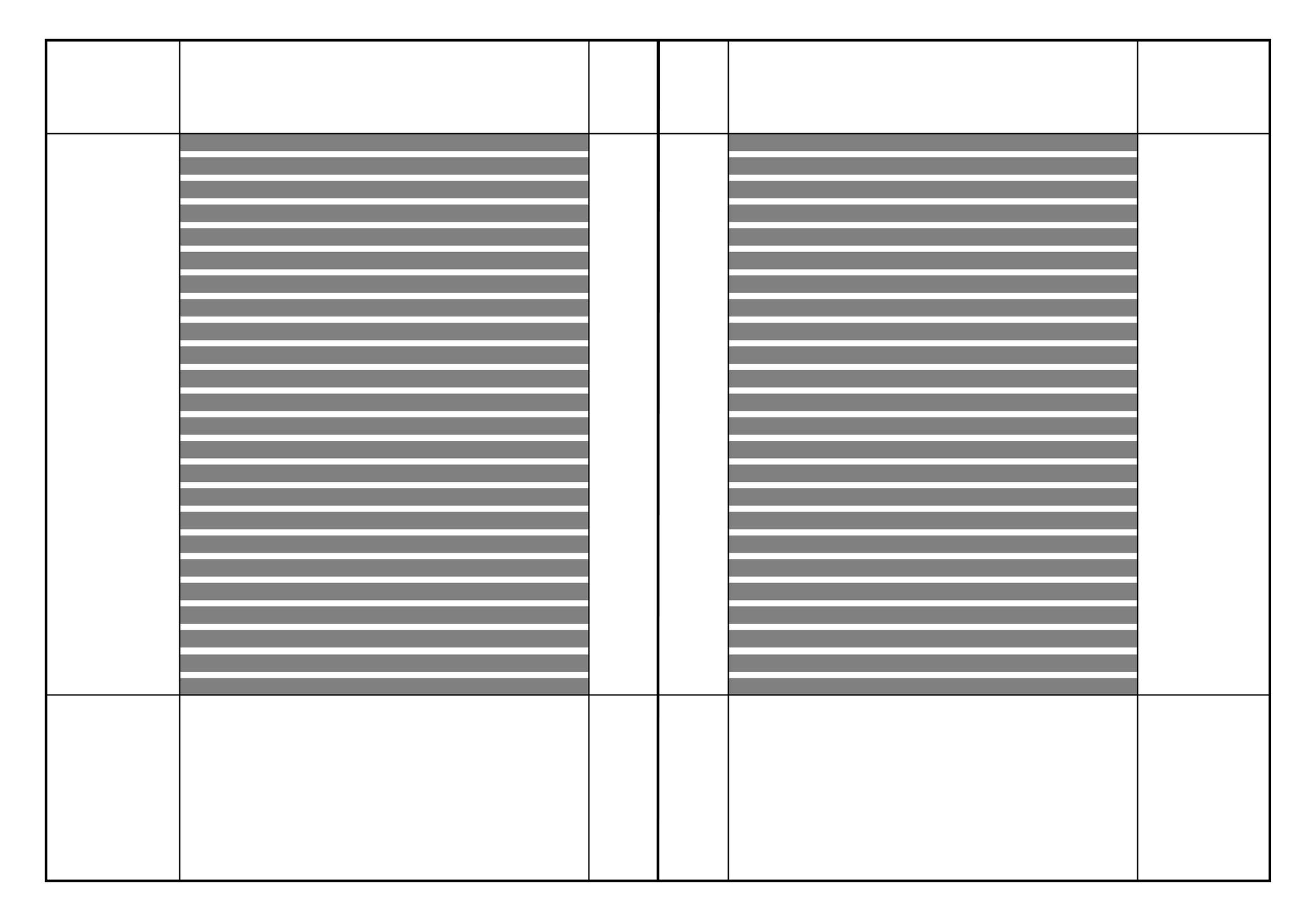
Illustration: Words of Type.
(Read More)Margins are the spaces around a composition block (left, right, top and bottom margins).
Master
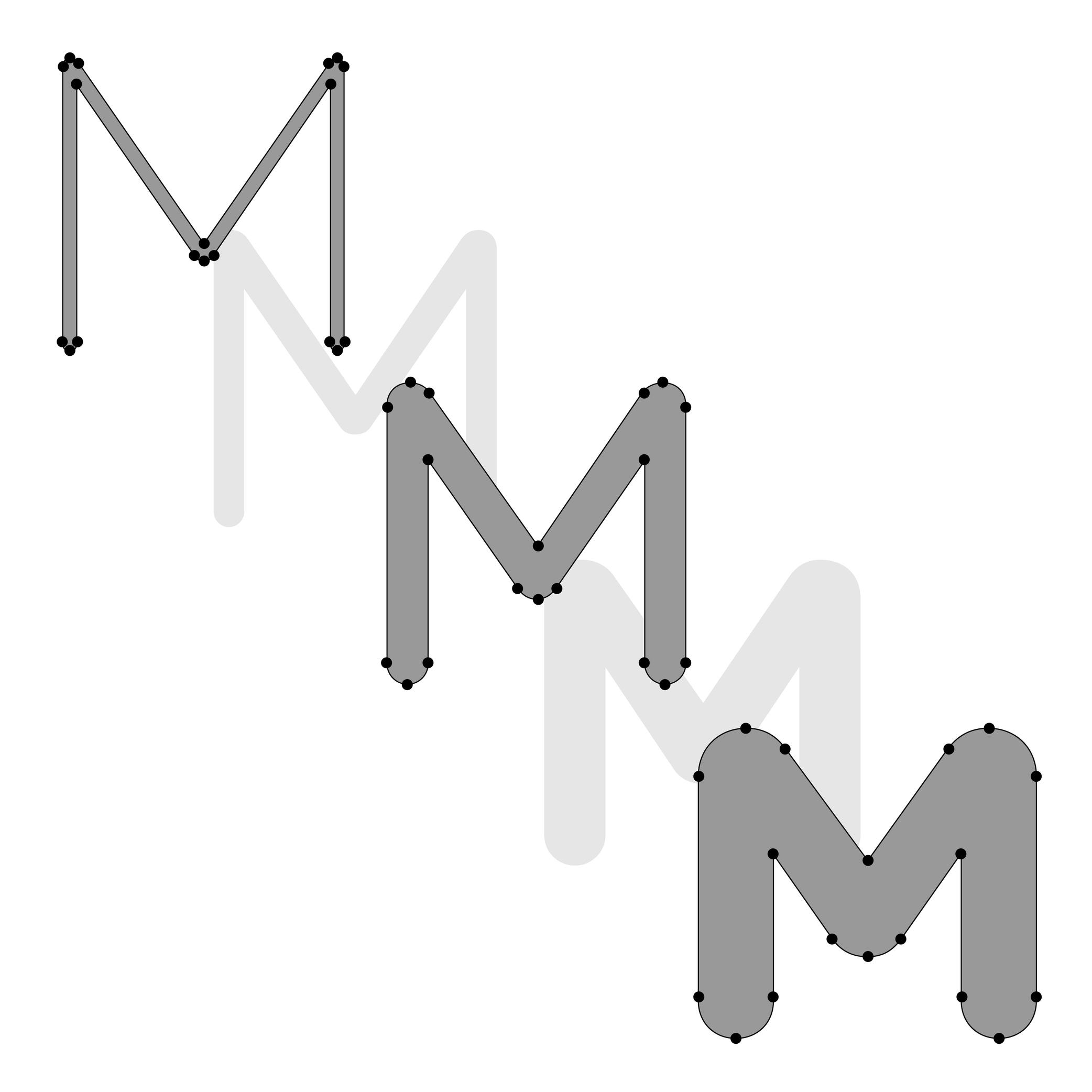
Illustration: Lisa Huang. Typeface in use: Knowledge Rounded, designed by Lisa Huang, 2024.
(Read More)For a Variable Font file to work correctly, it requires a minimum of two font files called masters, in which the glyphs need to be designed with:
- the same number of nodes and anchors;
- the same number of contours;
- in the same order and the same direction; so that interpolations or instances in between the masters can be calculated and displayed properly.
Masters can set up various types of axes (or design ranges) such as weight, optical size, slant angle, etc.
When there are multiple axes in a Variable Font, it is a Multiple Masters font.Metadata
(Read More)Digital fonts are files containing various categories of information for it to be fully functional, correctly installed and used on devices, called metadata.
There are information such as names of the designer(s), publisher or distributor, version number or export, its release date, copyright information, etc.
Metric System
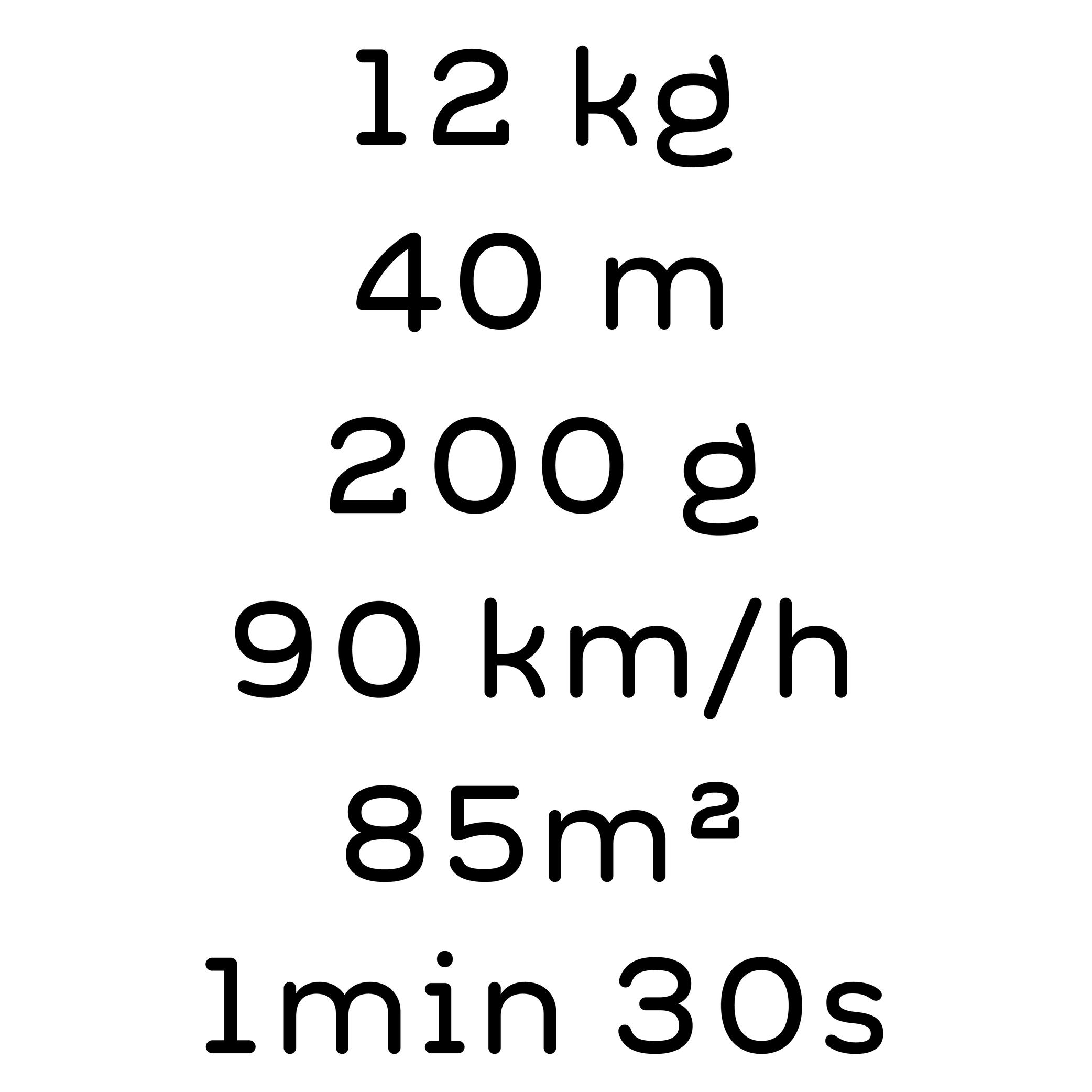
Illustration: Words of Type. Typeface in use: Knowledge Rounded, designed by Lisa Huang, 2024.
(Read More)The metric system is a measuring system used nowadays in most countries around the world, where the units are the meter, gram, Celsius degree, etc.
The United States of America and countries that were part of the British Empire use the imperial system with feet, pounds and Fahrenheit degrees.
Multilingual
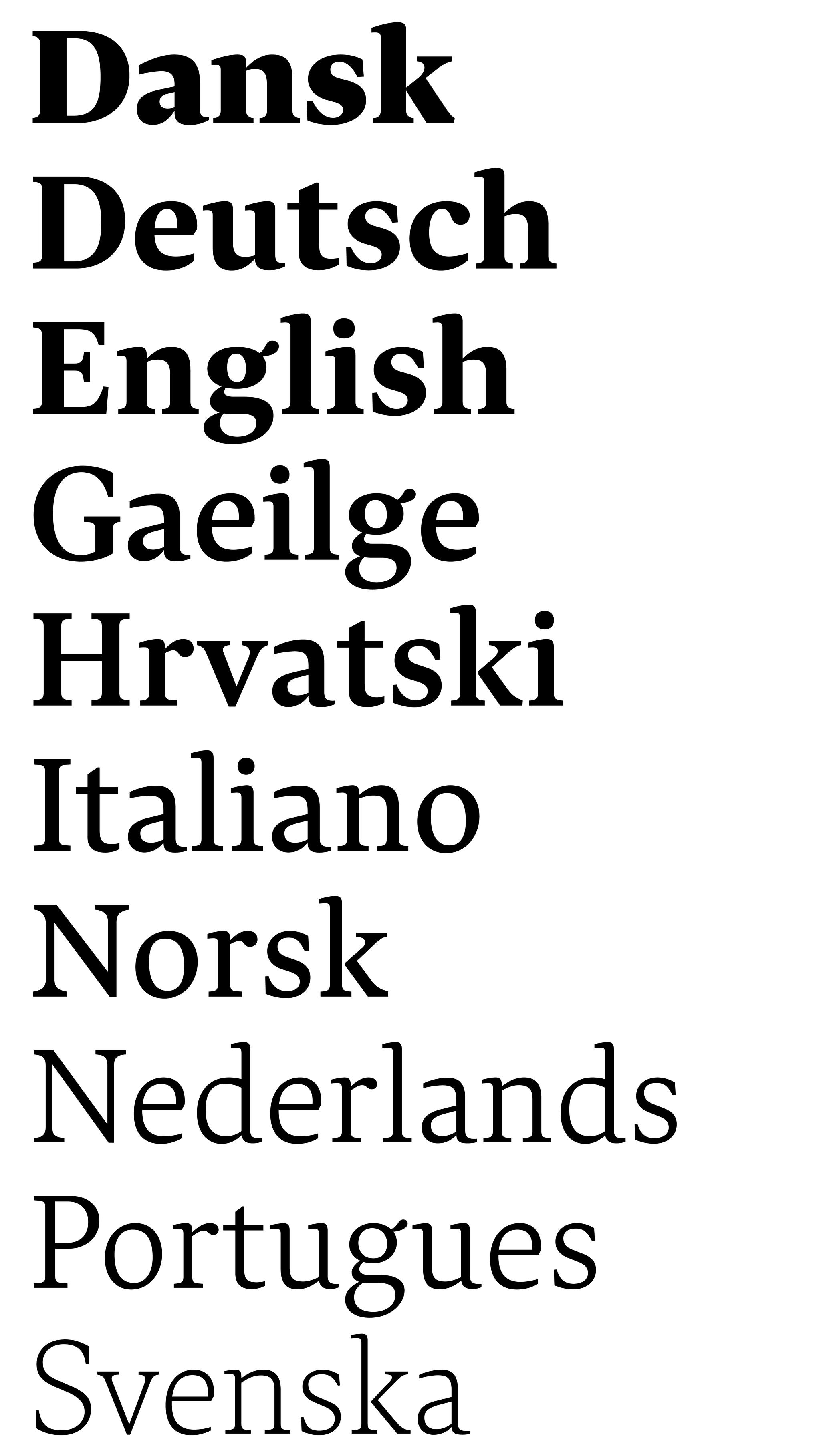
Sponsored by Typotheque . Typeface in use: Lava , designed by Peter Biľak, 2013.
(Read More)Multilingual means that a text makes use of multiple languages. The term should not be confused with multiscript. For example, a book published in English and French languages is multilingual but uses the same script: the Latin script.
Multiple Masters
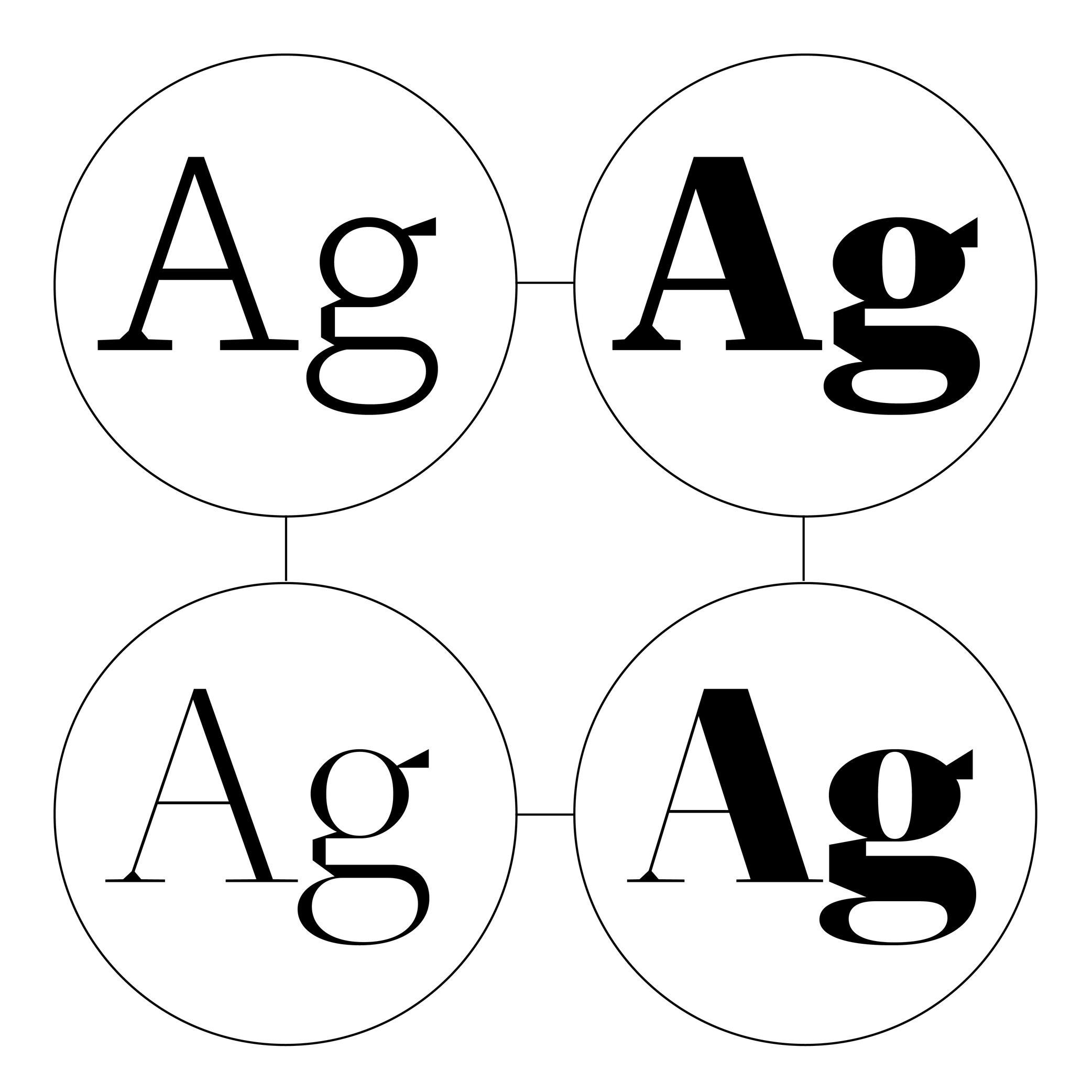
Sponsored by R-Typography . Typeface in use: Montris , designed by Rui Abreu, 2024.
(Read More)Variable Fonts technology allows users to navigate within or use multiple variations between two or more specific styles (called masters) with high precision and much smaller font files.
Whenever more than two masters are used—giving a more complex Variable Font file—it is considered as a Multiple Master font (or MM for short).
Multiscript
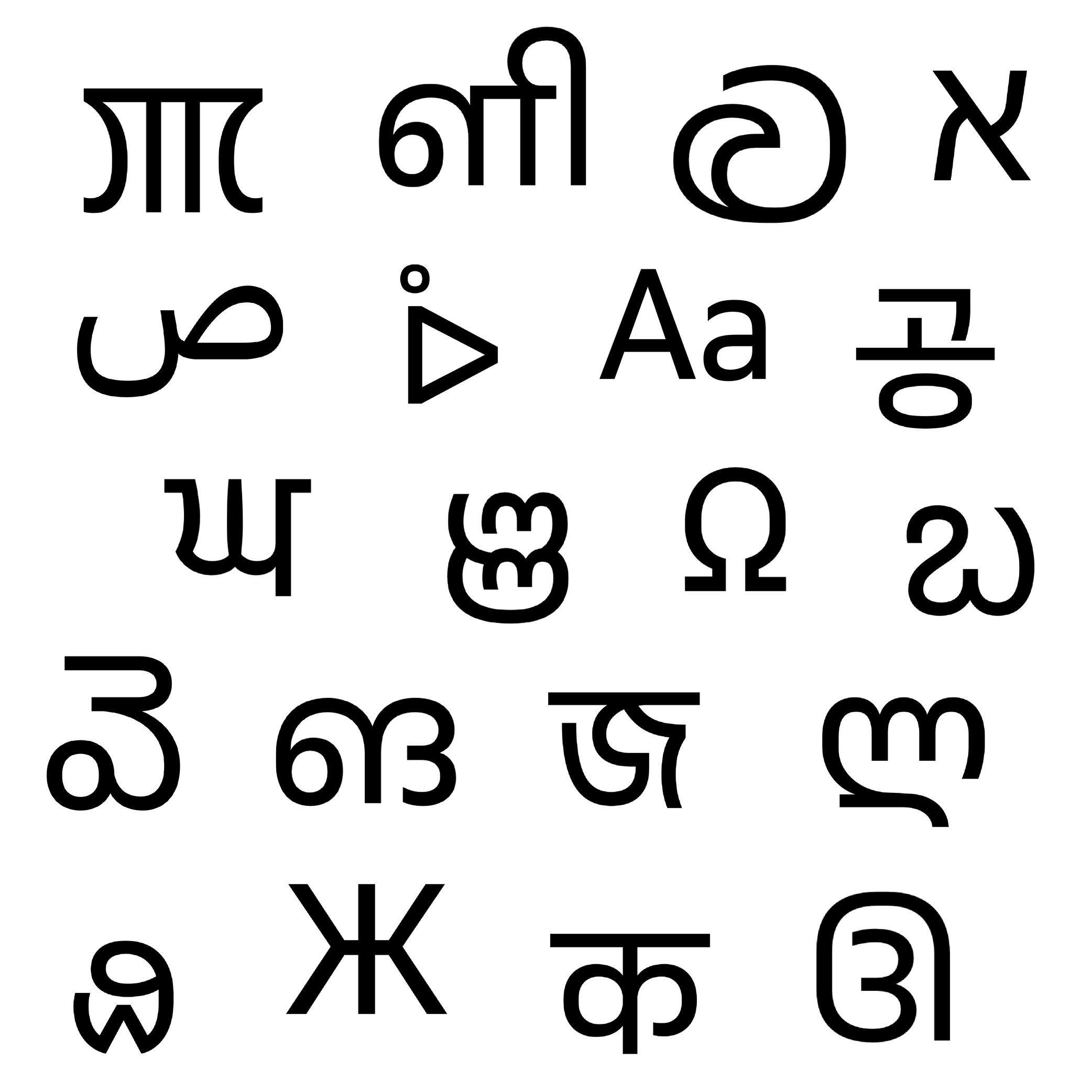
Sponsored by Typotheque . Typeface in use: November , multiple designers, 2016.
(Read More)Multiscript texts are written in multiple scripts or writing systems. For example, a book published in English and Arabic languages is multiscript because it uses two different scripts. But one in English and French is then multilingual: the same script for two languages.
Node
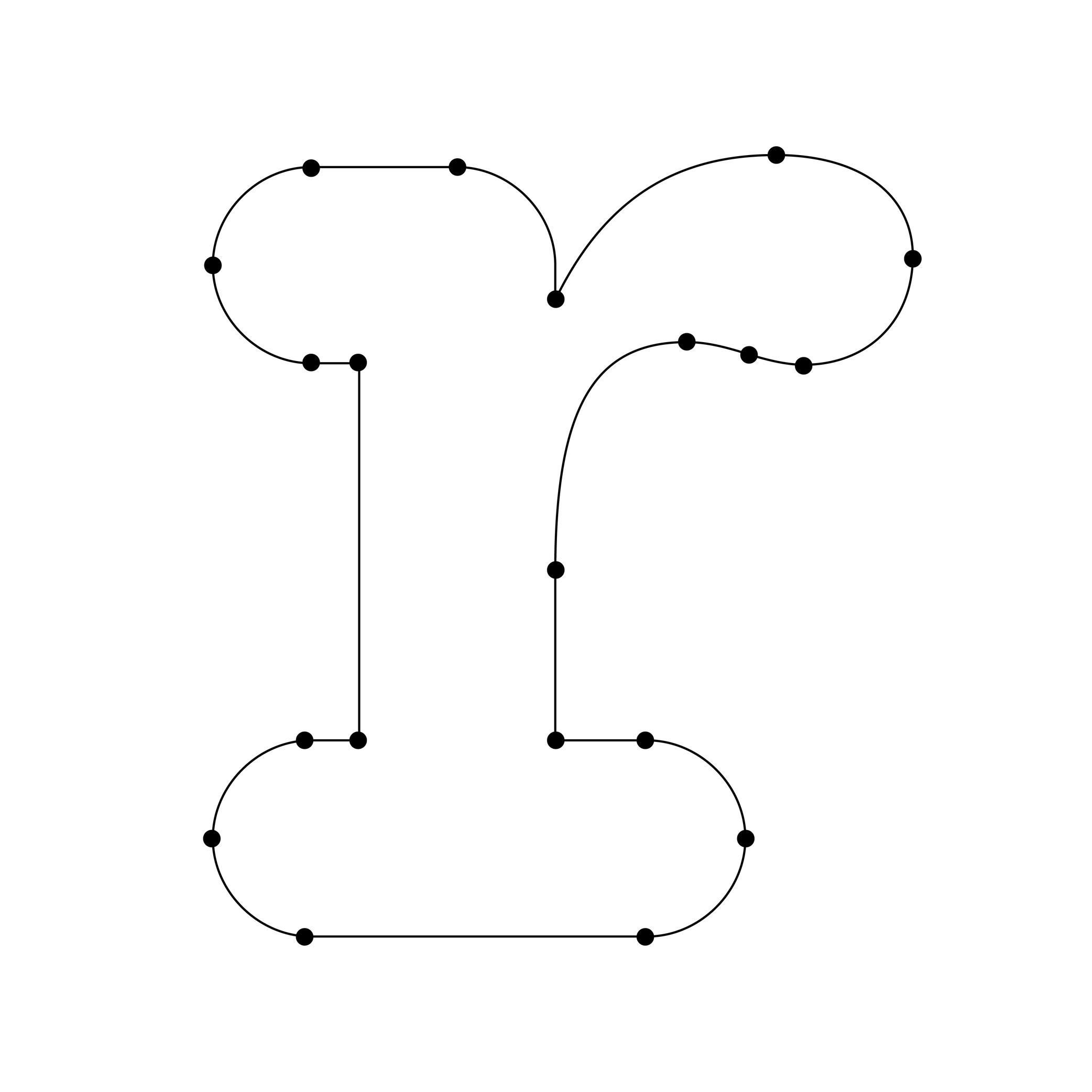
Illustration: Words of Type. Typeface in use: Knowledge Rounded, designed by Lisa Huang, 2024.
(Read More)When drawing characters in type design applications, contours are created by positioning a succession of nodes (or points), just like vector contours in most design applications.
The points of a straight line are nodes. Those on curved segments are on-curve points. Handles with each on-curve point are off-curve points (also control points) to control the curvature of the segment.
Number
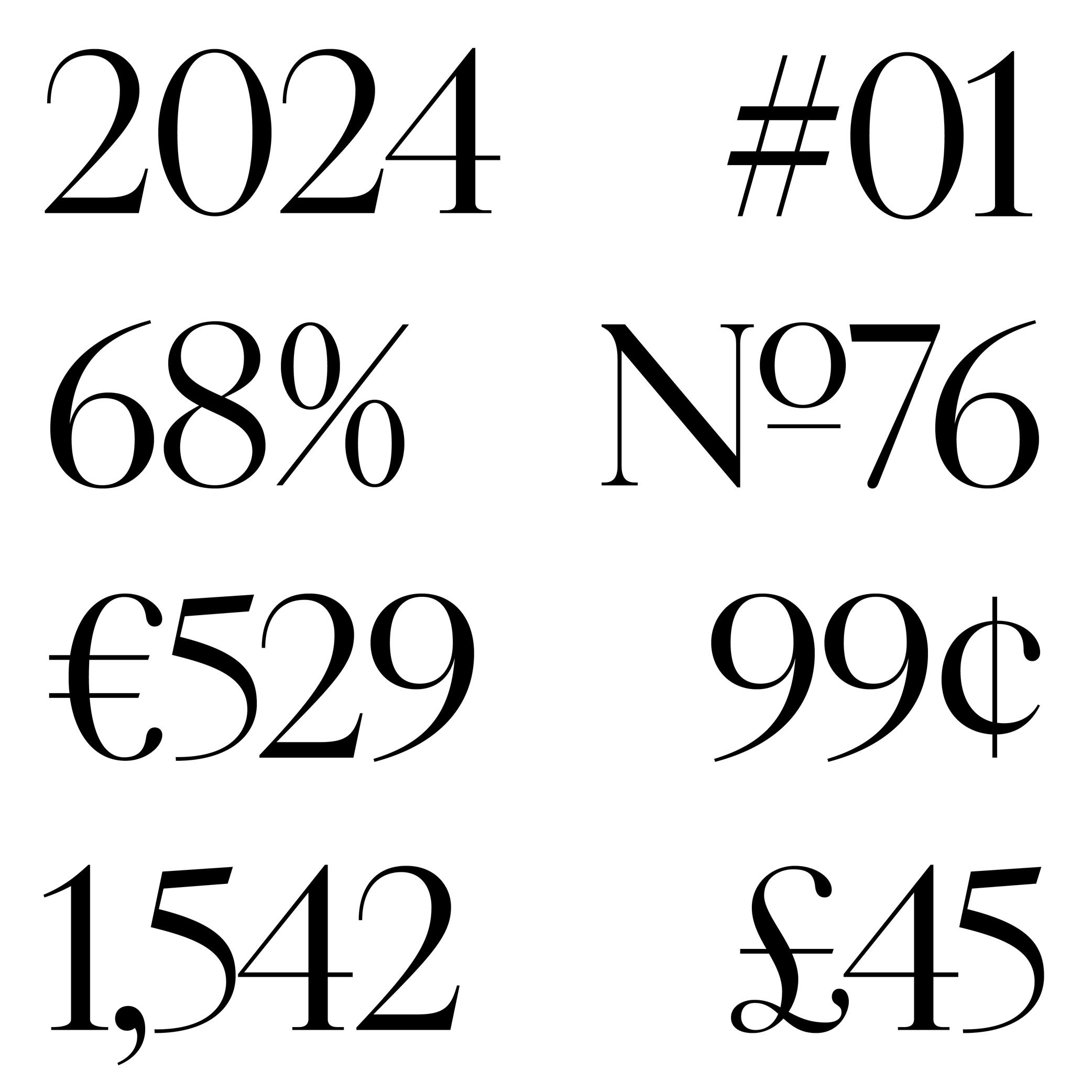
Sponsored by Production Type . Typeface in use: Cardinal Photo , designed by Jean-Baptiste Levée, 2020.
(Read More)The confusion between the words ‘figure’ and ‘number’ is seen very often. But, linguistically speaking, they are to be distinguished from one another: a figure (or numeral) is the graphic representation of a number, which is a mathematical concept. Several figures can be combined to form a number. For example, the number 22 is represented by two figures 2.
Oldstyle Figures
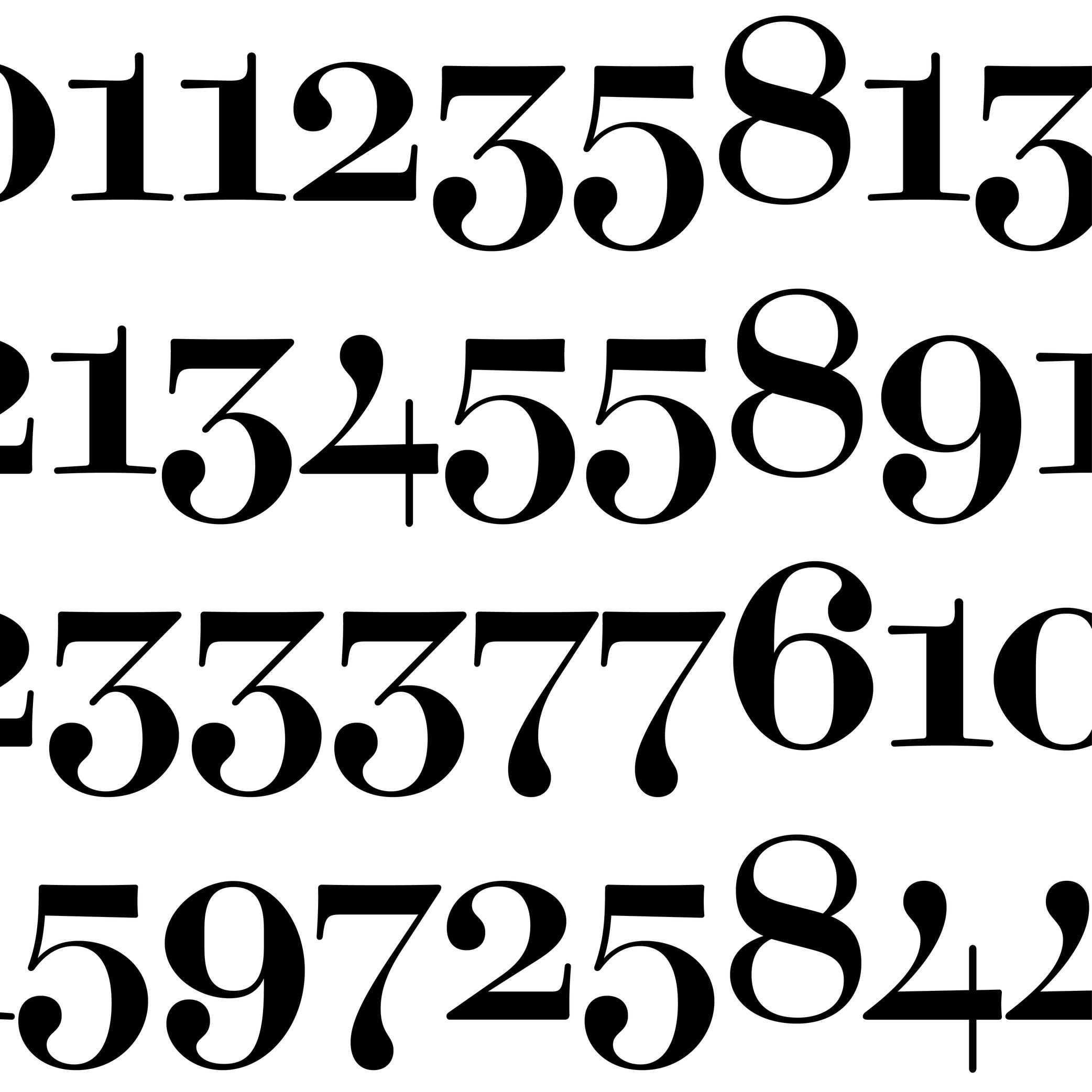
Sponsored by Dinamo . Typeface in use: Daily Scotch , designed by Fabian Harb and Michelangelo Nigra, 2024.
(Read More)DESCRIPTION
Oldstyle figures are designed to fit with the design of lowercase characters. They are more often used in texts as they visually blend in better than the other figure variants.
HISTORY
The proportions of oldstyle figures are closely related to how they were written in calligraphy using similar strokes and movements as those of the (lowercase) letters.
“Oldstyle” used to have a typographic meaning of its own. It was a 19th century/early 20th century term for revivals of Renaissance serif faces after British printers got bored of Bodoni/Didot/Scotch/etc., and particularly referred to revivals of types those from Venice, Paris, and Caslon’s much later roman. Some typefaces had “Old Style” in their name to signify this.
EVOLUTION
Oldstyle figures are also called “traditional” figures in some languages, as more modern styles came later on (hence the name identification) as better adapted forms to specific situations: tabular, lining or proportional figures. In digital typefaces, several style sets of figures are available and can be accessed via the alternate sets.
OpenType Features
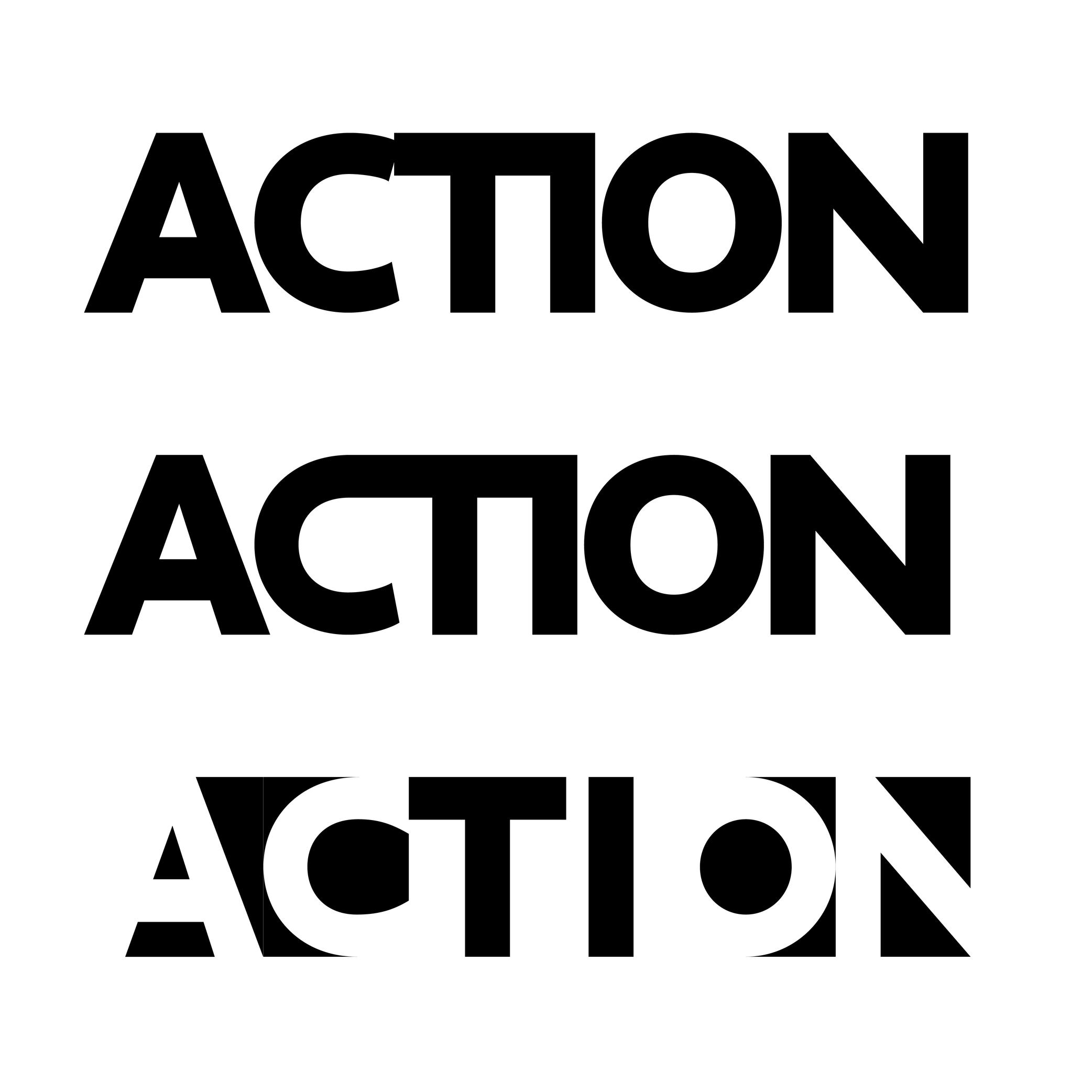
Sponsored by Typotheque . Typeface in use: Irma Display Black , designed by Peter Biľak, 2009-2011.
(Read More)Opentype features are found in digital fonts with an OpenType format.
For the same glyph, there can be multiple variations (or alternates) along with their default form, as options for stylistic alternative or functional improvement. OpenType features can be activated in apps supporting them or with code lines calling them on a website, if they exist in the selected typeface.
Some principal features are: case sensitive, swashes, various figure styles (old style, tabular, proportional, etc.), and small capitals (or Small Caps).
OpenType (format)
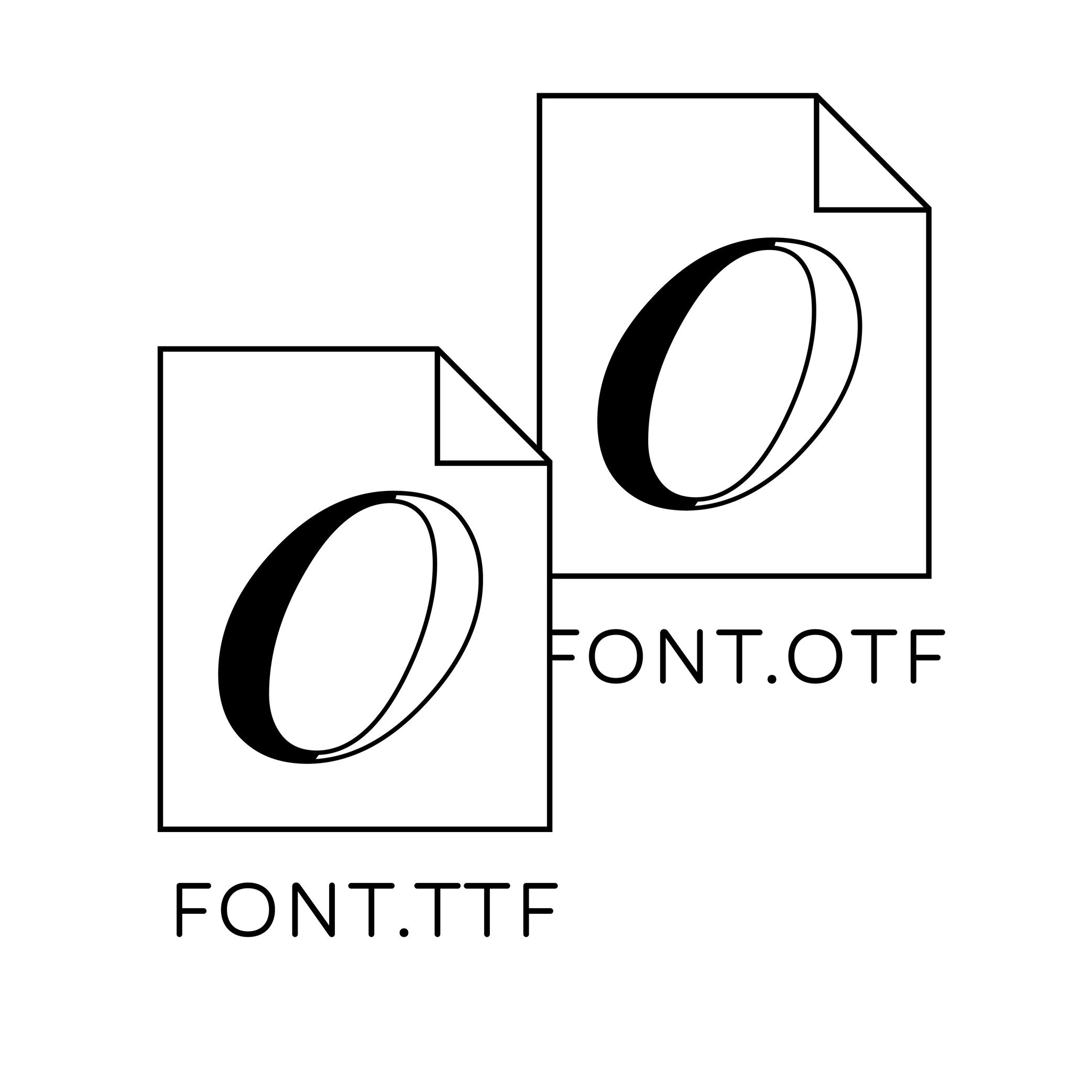
Illustration: Words of Type.
(Read More)OpenType is a digital font file format created by Adobe and Microsoft in 1996. It was mainly developed for fonts to be on printed media and is still in constant evolution.
OpenType font files contain all the data of a typeface style in one single file, from the glyphs’ shapes and metrics, to additional stylistic sets known as OpenType features. It has also a higher glyph capacity than others font formats (up to 65,000 and more!).Optical Corrections
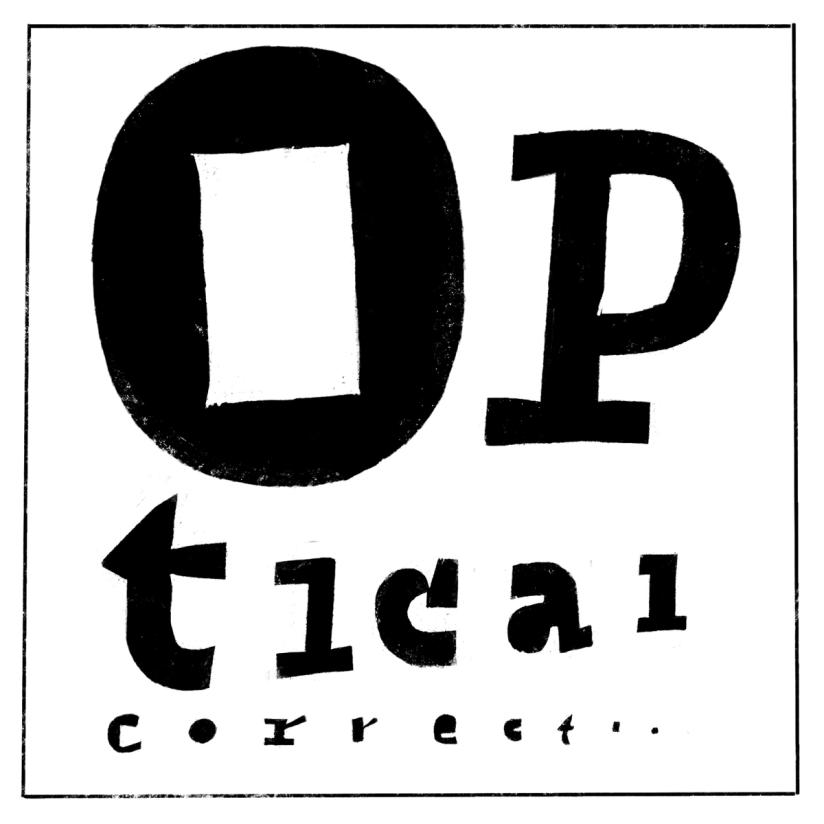
Illustration: Erik van Blokland .
(Read More)The shapes used to form the words and texts we read are seen by our eyes. And our eyes and brain are organs that don’t rely on geometry, rulers, and compasses to “read” the world.
Even if they are geometrically aligned, some shapes may appear uneven and require optical adjustments to appear consistent. In type design, we talk about optical corrections.
Optical Size
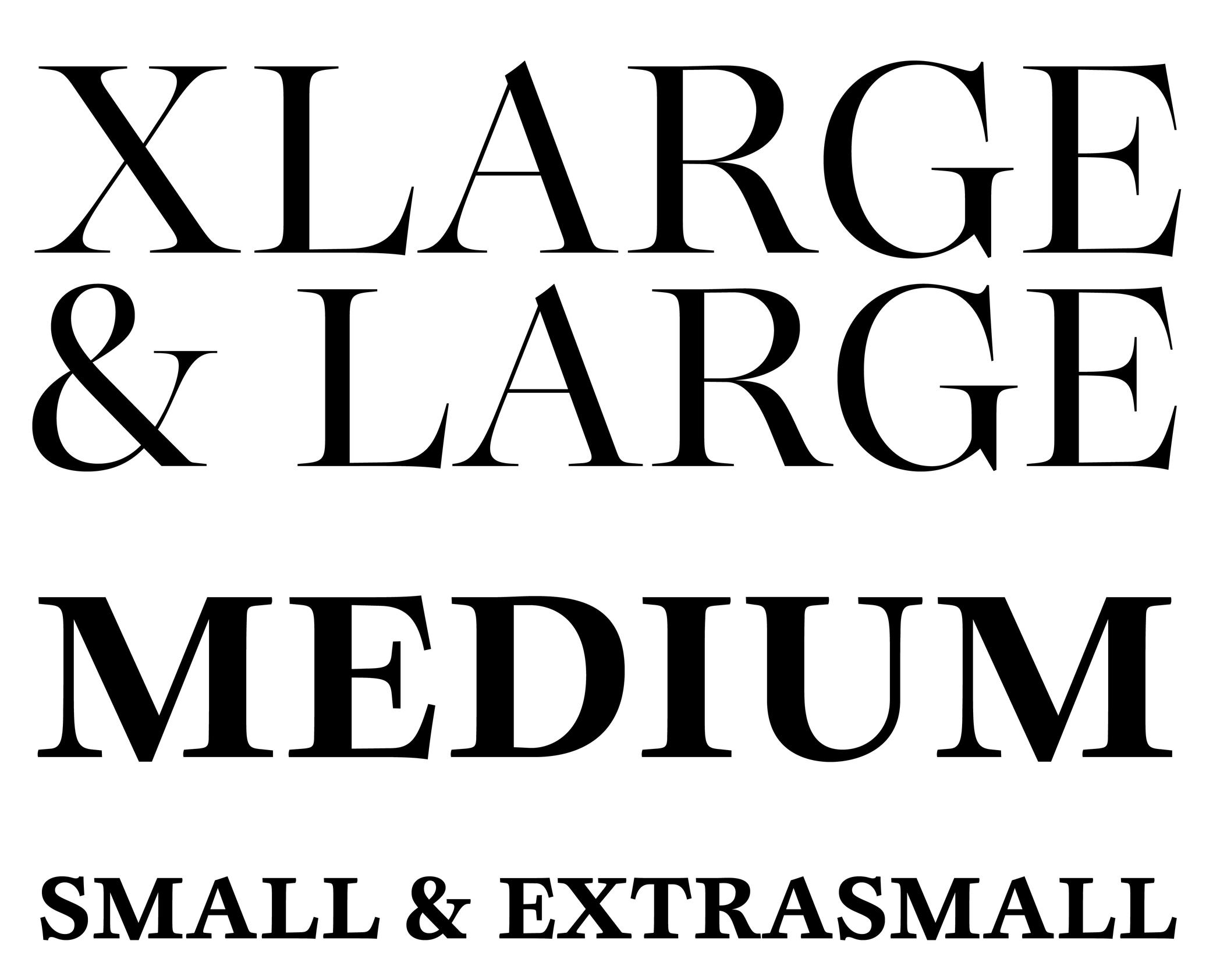
Sponsored by Blaze Type . Typeface in use: Joly , designed by Léon Hugues, 2021.
(Read More)When a typeface is intended to be used at some specific sizes only (large on billboards or small in printed books), some details can be optimized for each situation, resulting in optical size styles such as Text, Caption, Titling, or Display.
For text styles, aspects such as lower contrast and simpler details have been proven more efficient for reading small texts (especially if they are printed on rough surfaces), while display styles can carry elaborate details as they are seen in larger sizes.
Orphan
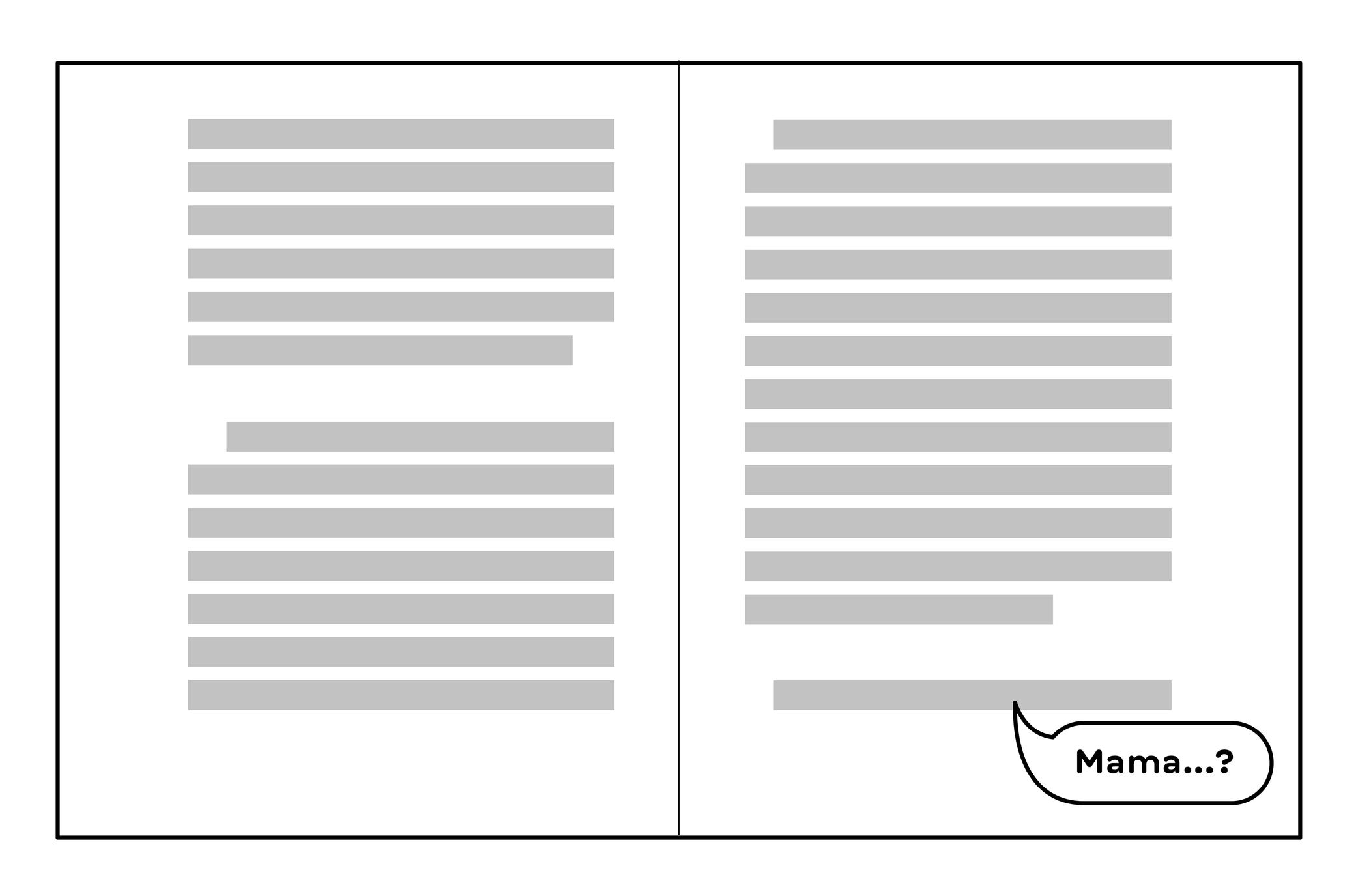
Illustration: Words of Type. Typeface in use: Knowledge, designed by Lisa Huang, 2024.
(Read More)Odd situations can happen when typesetting a text making its overall appearance look sloppy.
When the first line of a paragraph appears alone at the end of a column or a page, it is called an orphan.
Overlap
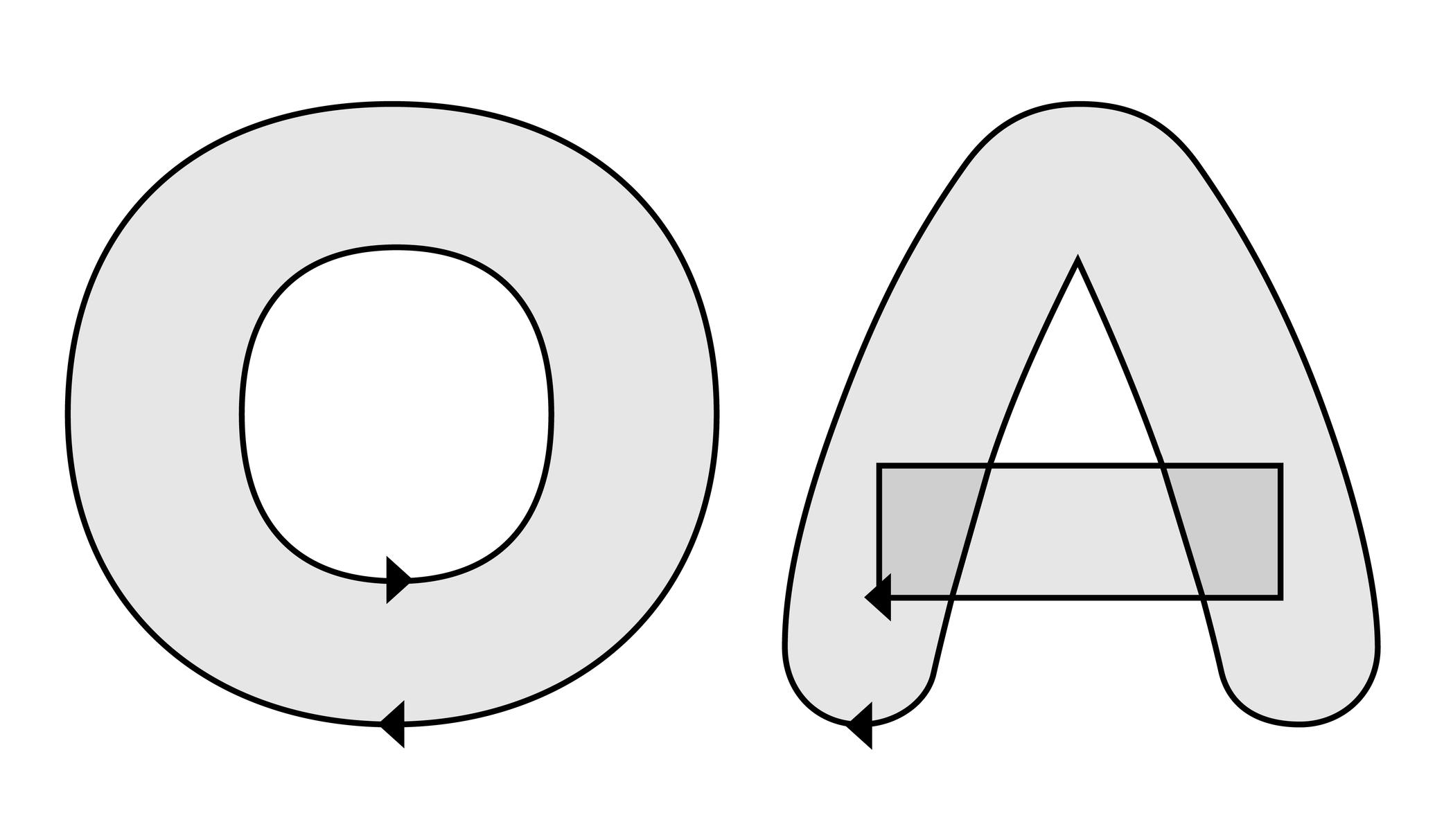
Illustration: Words of Type. Typeface in use: Knowledge Rounded, designed by Lisa Huang, 2024.
(Read More)When designing glyphs in type design applications, the contours of multiple shapes can be overlapped on top of one another to form more complex shapes (the letter E can be split into several segments, for instance) or to create a counter like in letter O, with a larger contour on the outside and a smaller one inside.
These two effects are controlled by changing the contours’ relative direction.
Overshoot
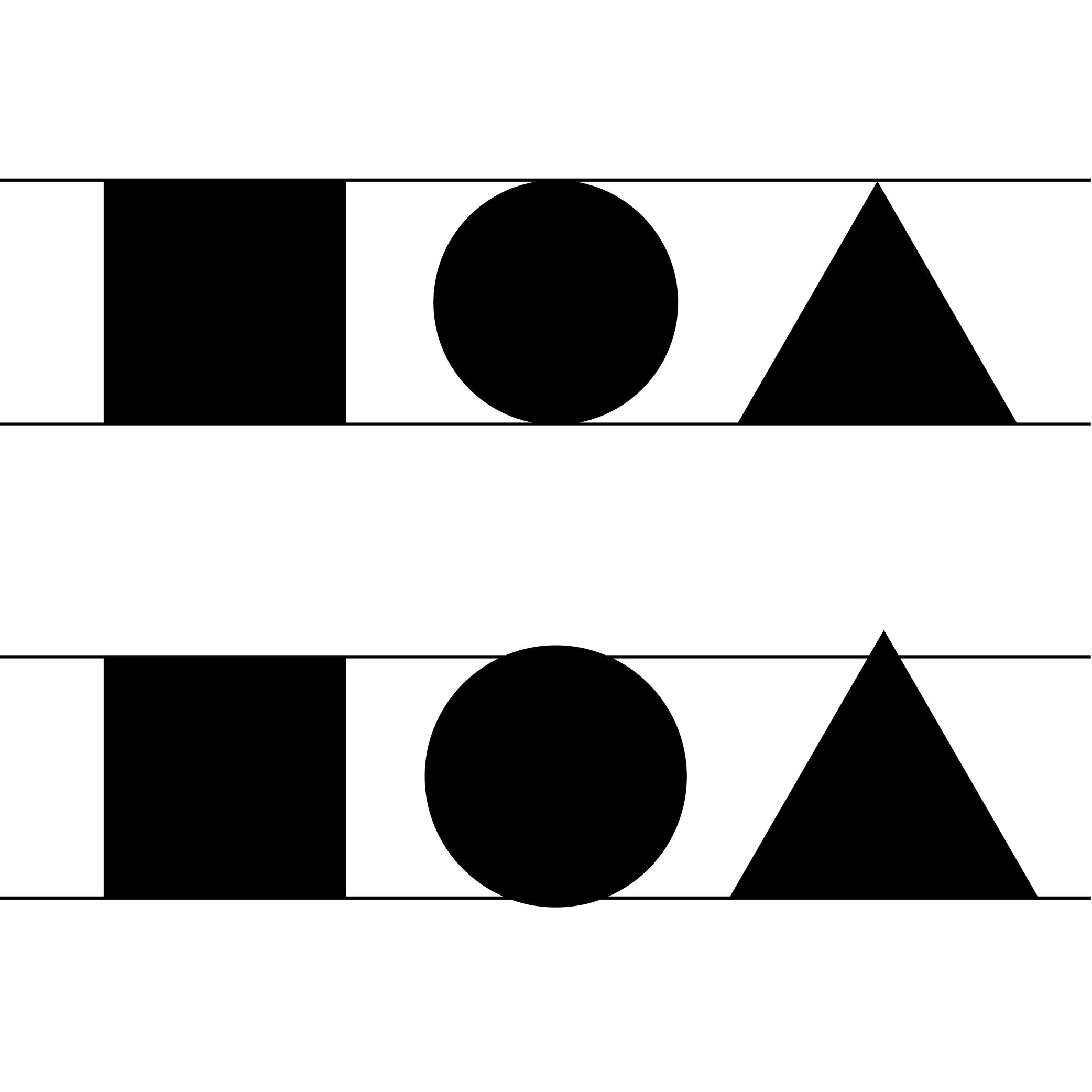
Illustration: Words of Type.
(Read More)The overshoot of a glyph is the part that goes slightly beyond the height of its fellow letters to achieve an optical evenness, such as rounded letters compared to square ones.
See Optical Corrections for more details.
Padding
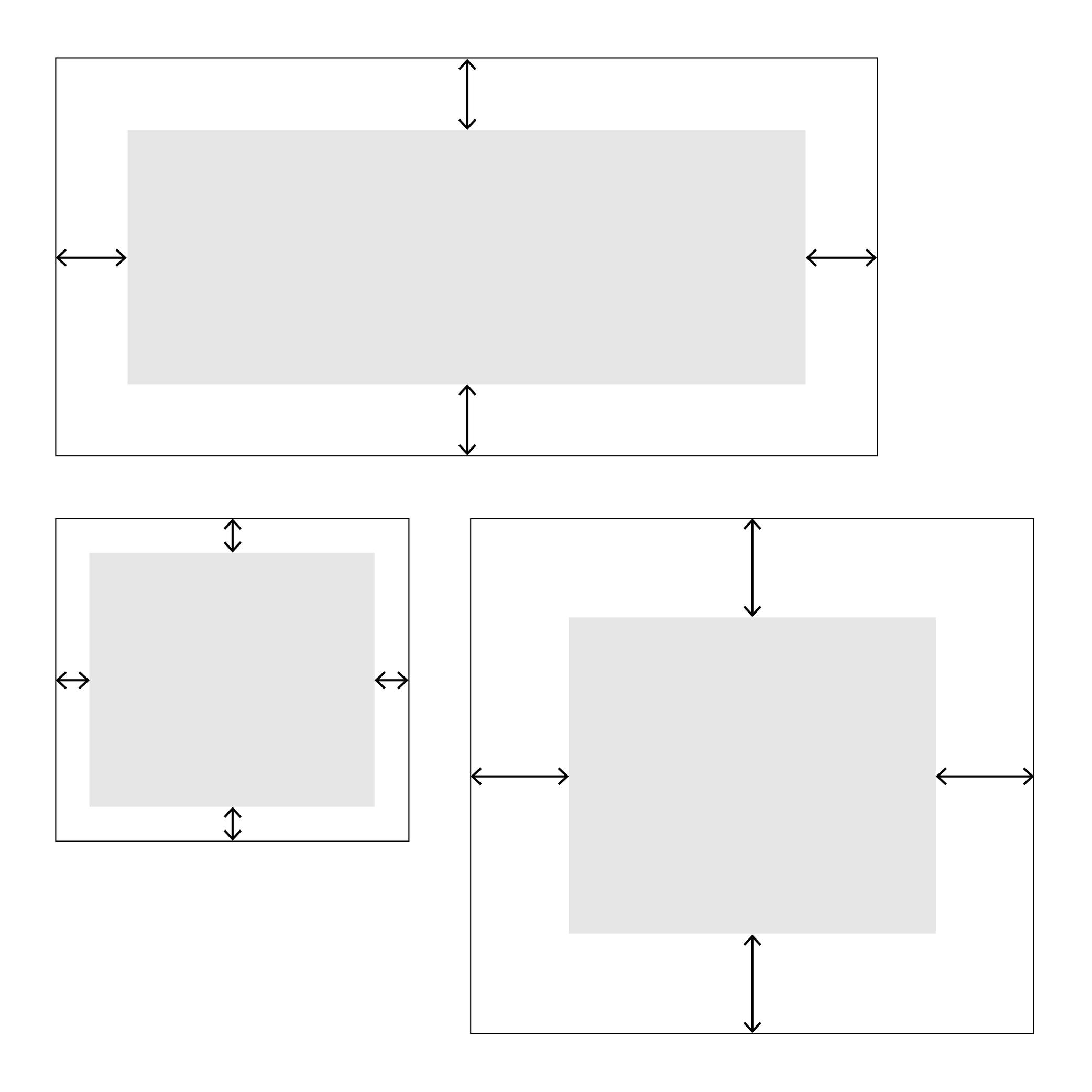
Illustration: Words of Type.
(Read More)In web typography, padding is about setting a specific distance between the sides of an element and its borders, like margins inside it.
Pagination
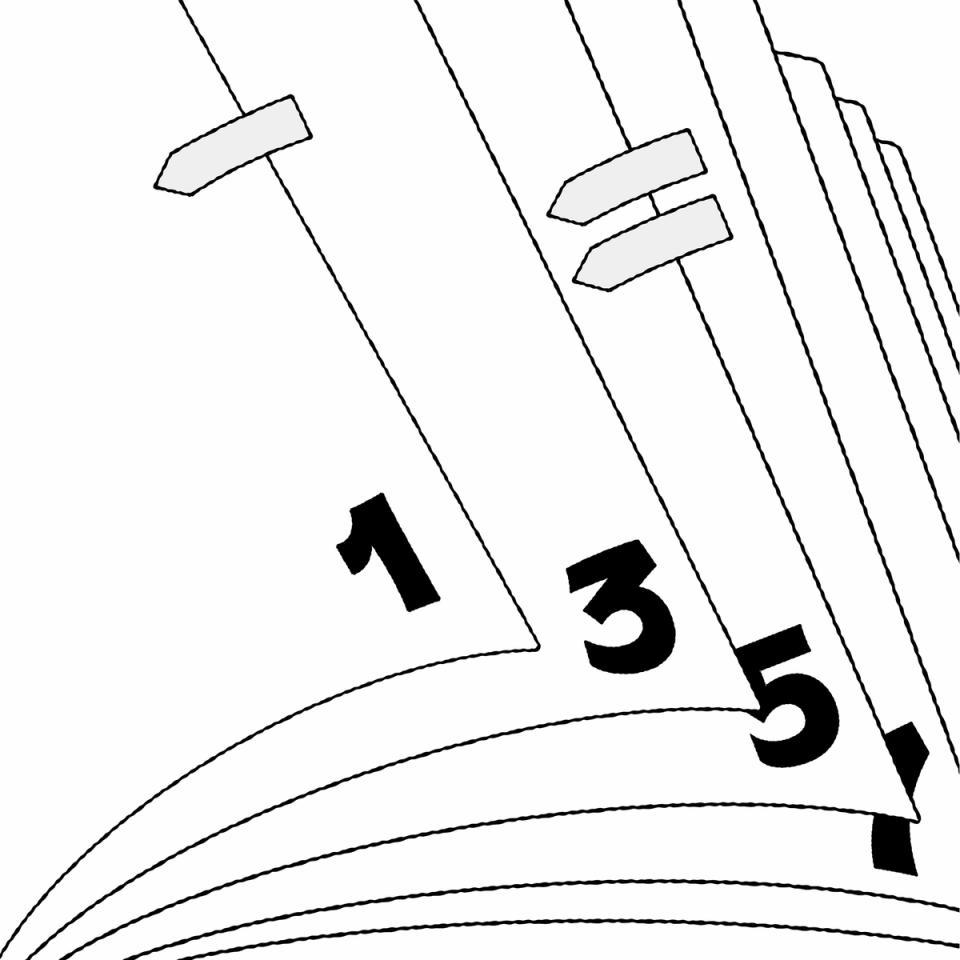
Illustration: Raven Mo .
(Read More)Pagination refers to the page numbering system of a printed document.
Parentheses
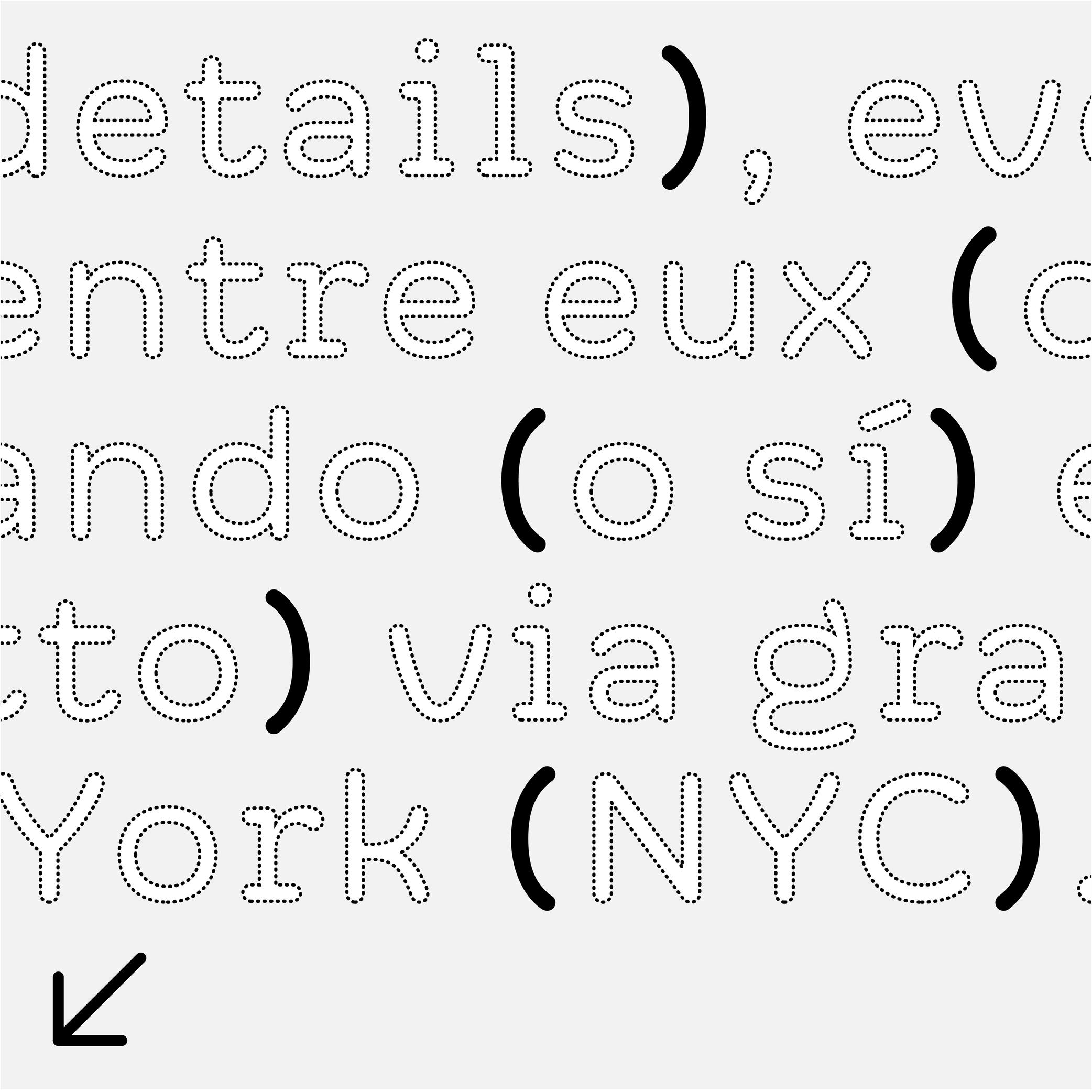
Sponsor Word of Type and feature your typeface in this card with a linked caption. Contact us for more information.
(Read More)FUNCTION
Parentheses indicate additional information in a sentence.
HISTORY
Early forms of parentheses added in text for the same purpose were shaped like chevron quotes (or guillemets). They later on evolved into the curved ones we know today.
These were introduced by French printer Nicholas Jenson in Venice, Italy, around the late 15th century.DESIGN
They have the same height as braces and brackets (or curly brackets and squared brackets).
For typefaces with contrast, parentheses have matching contrast (thick middle part, thin tips) and terminal tips (slanted, vertical or horizontal). S
everal parentheses alternates are necessary in a typeface to better fit with capitalized text, text set in titlecase and lowercase, and text set in small caps (when they exist in a typeface).The most common parentheses are curved (like these ones), but different shapes are used in other scripts.
TYPOGRAPHIC RULES
Parentheses are placed around a section of a sentence, with no space between them and the enclosed text.
Note:
one parenthesis
two parenthesesPath
(Read More)The digital contours of glyphs in a font are shaped by a succession of points. Together, those form a path of points.
When two contours are overlapped on top of each other, the path direction of the last contour (clockwise or counter-clockwise) in relation to the previous one will determine whether it appears as a counter-form or is “invisible.”
Period
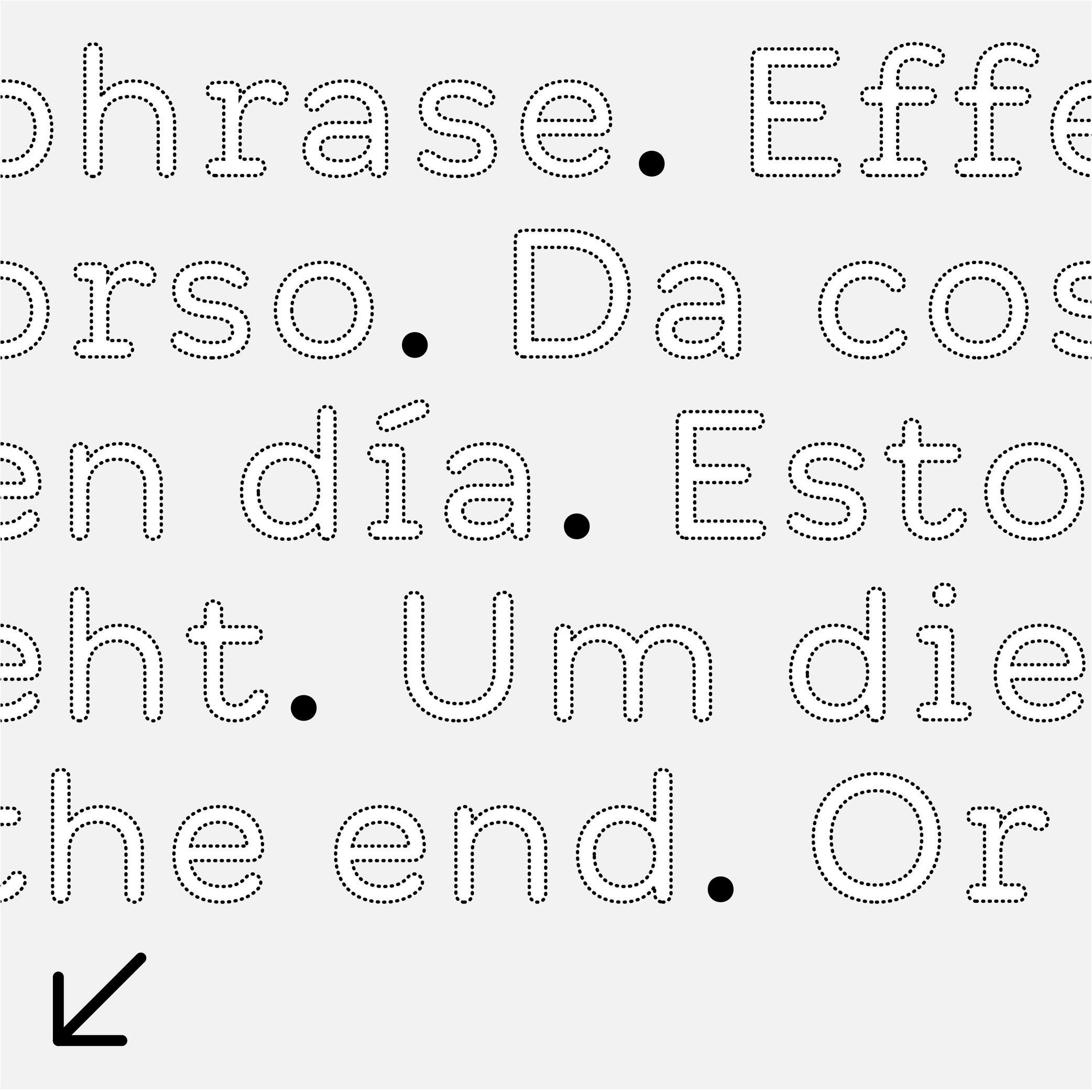
Sponsor Word of Type and feature your typeface in this card with a linked caption. Contact us for more information.
(Read More)Also called full stop.
FUNCTION
The period is a punctuation symbol that marks the end of a sentence. It is also used to replace sections of letters in abbreviations and, in numbers, to indicate either thousands or the decimal. In European languages, the period is used to separate thousands while a comma separates decimals. In English, the period is used the other way around:
(European languages) 15.000,05
(English) 15,000.25In the digital world, the period is often used to separate information from individual categories (domain-name.com).
HISTORY
In Ancient Rome, the period (which looked like a dot placed at the middle height) was used to separate words. Scribes in medieval Europe started using it to separate sentences instead (words were being separated by a space). They also shifted it down to the baseline, which has been kept ever since.
DESIGN
In most scripts, the period is a dot placed on the baseline. In the Latin script, it is about the same size as the dot on the letter i. In many other languages and scripts, sentences end with different symbols. For example, in Chinese and Japanese, the period is a hollow circle (。), placed at the base or centered in relation to the characters.
TYPOGRAPHIC RULES
When used to end a sentence, it has no space before it, and it is followed by a space between it and the eventual next sentence. It has no space before the next letter in an abbreviation. In American English, when used in a quote, it is preferred to place the quotes after the period. While in British English the period goes after the quotes.
Pictogram
(Read More)The word pictogram comes from the Latin pictum (‘painted’) and Greek gramma (‘character’).
It is an abstract drawing with a shape that relates to what it is referring to, unlike ideograms.Placeholder Text
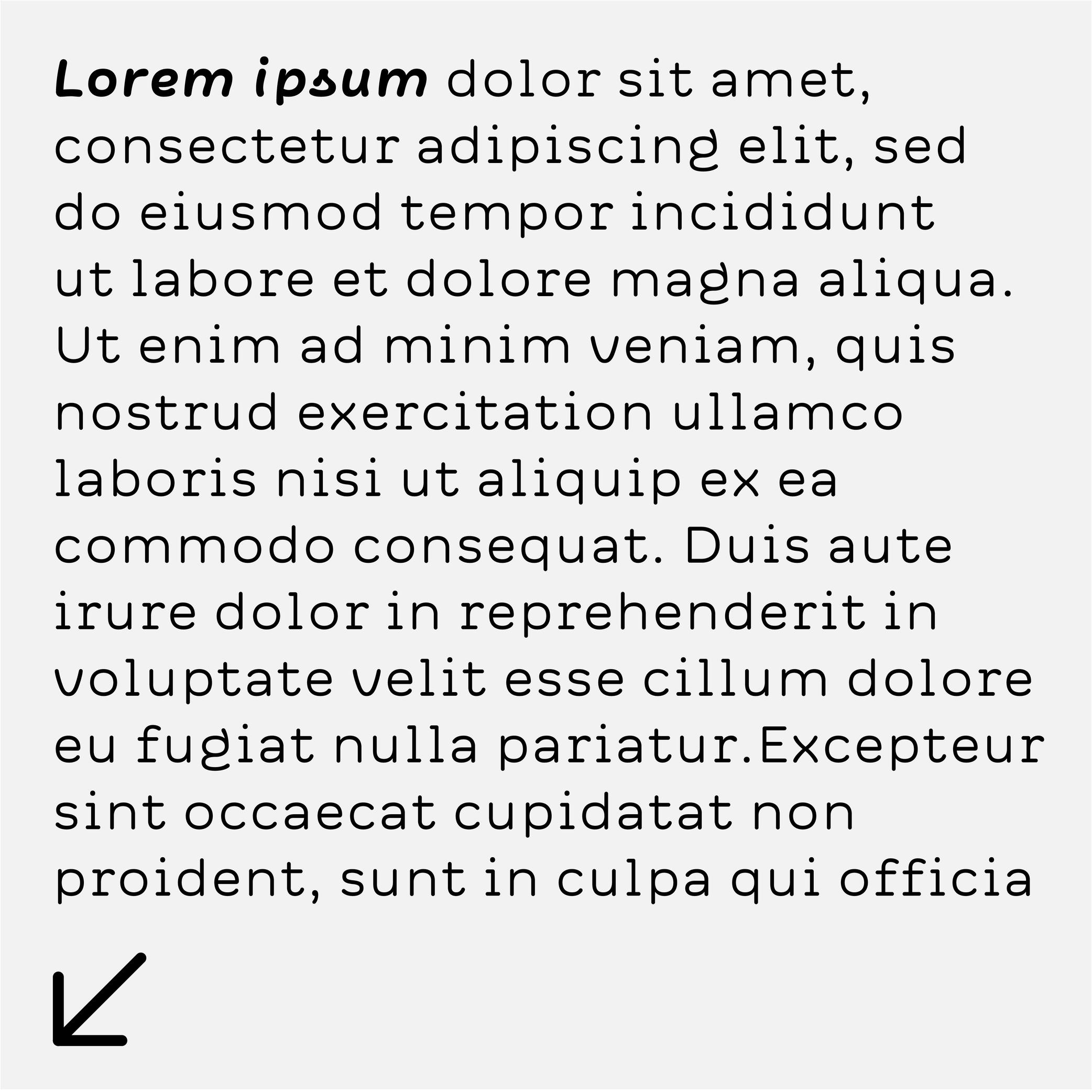
Sponsor Word of Type and feature your typeface in this card with a linked caption. Contact us for more information.
(Read More)Placeholder text (or Lorem Ipsum) is a fake text used to test the aspect of a typeface or a typographic composition.
Point
(Read More)In typography, points are measurement units to describe the size of a typeface (for printed or digital media).
Several point-based series of typographic measurements have been created and used over the centuries and across the globe. In France and Germany, 12 Didot points make one Cicéro, while in Britain and the US, it was a Pica that would be divided into 12 slightly smaller points.
Today, the international typographic unit in software applications is the (DTP) point, which is exactly 1/72 parts of an inch—a cleaner standard than the Pica point previously used in the United States. Digital font sizes are referred to in point sizes and indicated as pts.
Postscript (format)
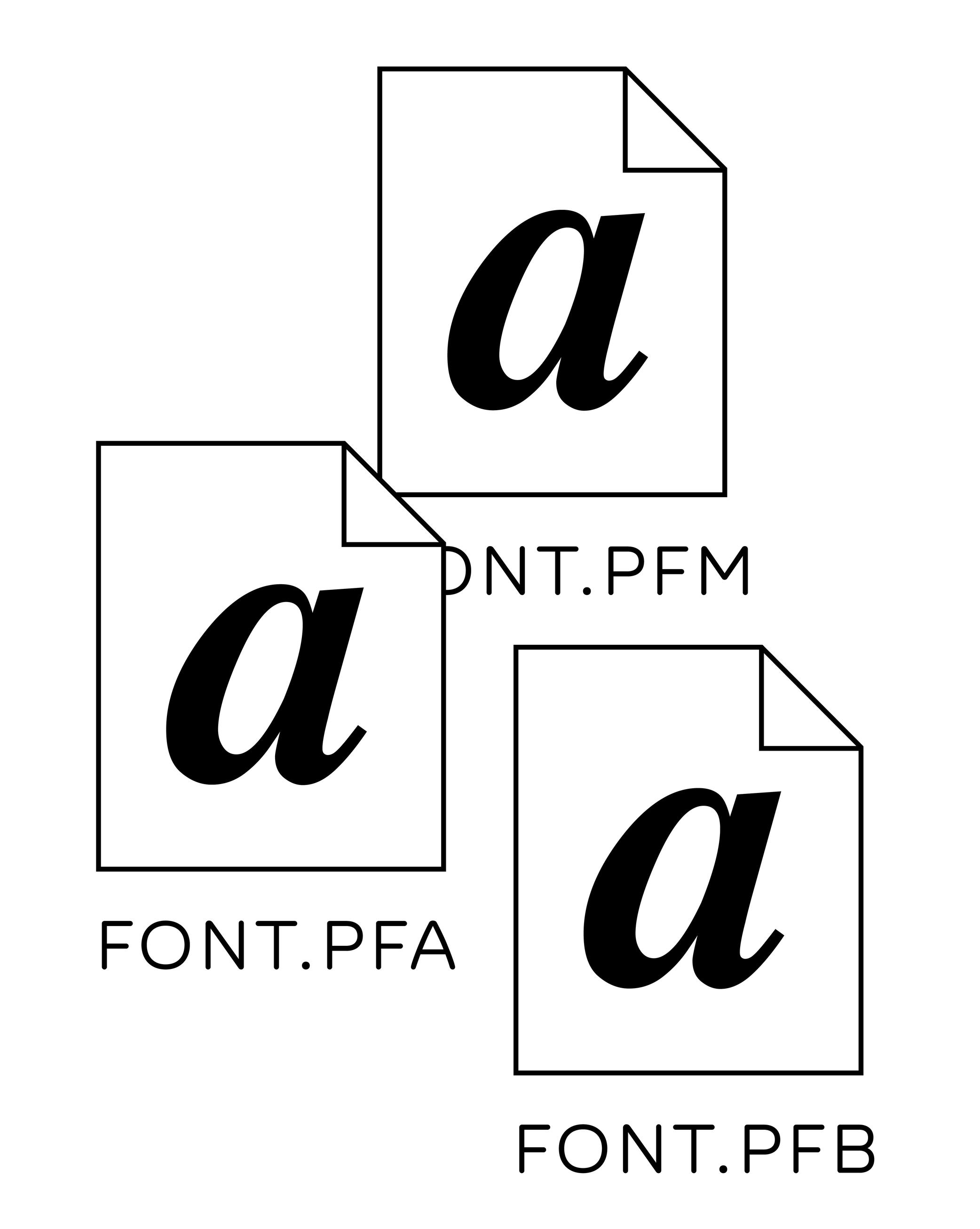
Illustration: Words of Type.
(Read More)Postscript is a computing language created by Adobe in 1982. It allowed the development of digital publishing (or DTP for Desktop Publishing) by printing images and texts on high-resolution laser printers.
Before Postscript fonts were used as Bitmap fonts, made out of pixels, with more or less resemblance to the designs depending on the size of the output (printed, or on high or low-resolution screens). Since Postscripts fonts were introduced (which contained font data as scalable outlines), fonts could be rendered as shapes much closer to the original designs, even at small sizes. Postscript fonts contained several files (glyph shapes and metrics, one to be displayed on screen and one to be read by the printer) for one font, and all needed to be installed to use them.
Proof
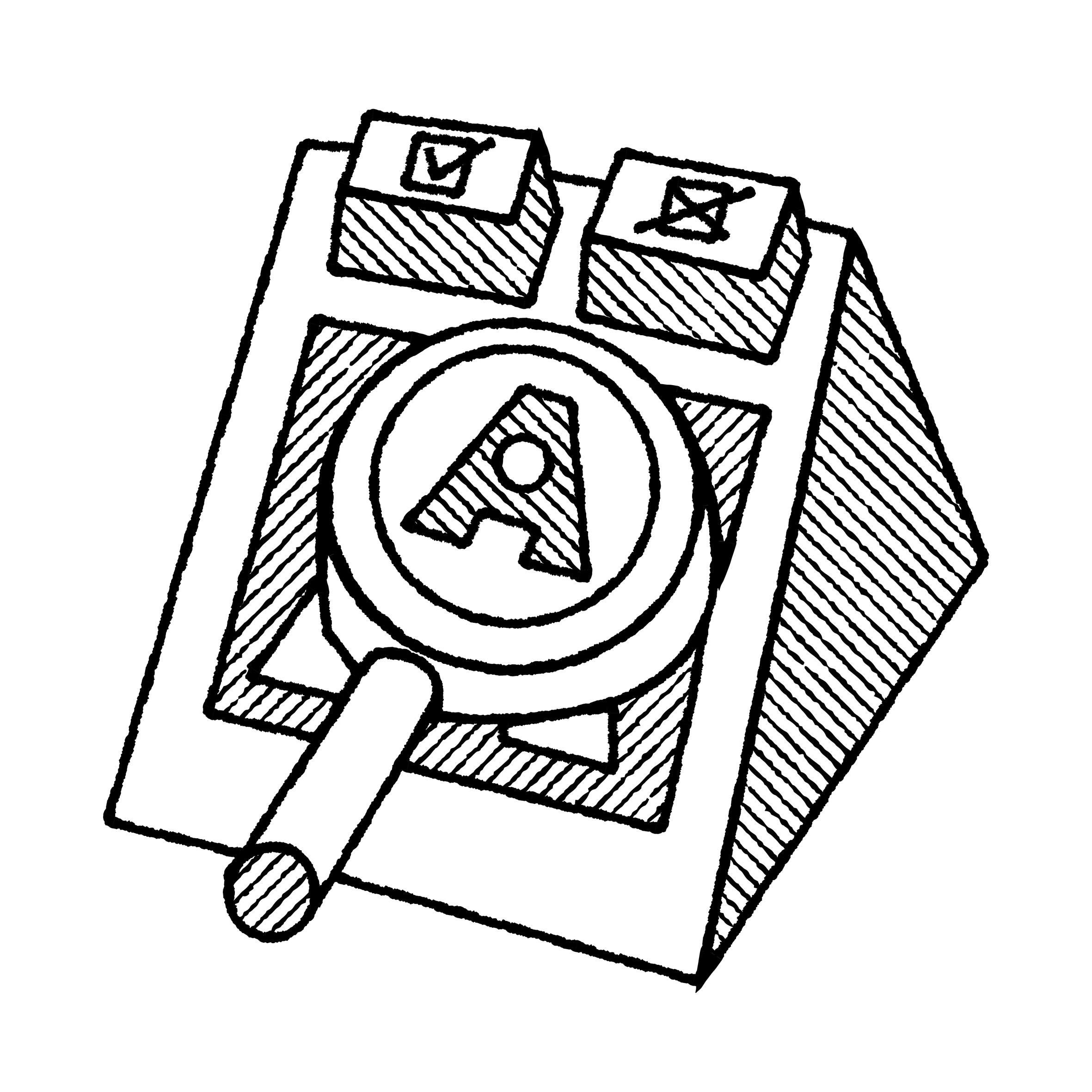
Illustration: Pauline Fourest (Spaghetype ).
(Read More)To test the quality of a typeface, designers use proofs. They are documents that use the typeface’s font files in various situations, such as different sizes, with numerous glyph combinations, in multiple languages, and varied paragraph lengths, among other things. Specimen documents often resemble those from the printing industry. Type designers use them to check out how their fonts are progressing and/or to help make more targeted corrections.
Proportional Figures
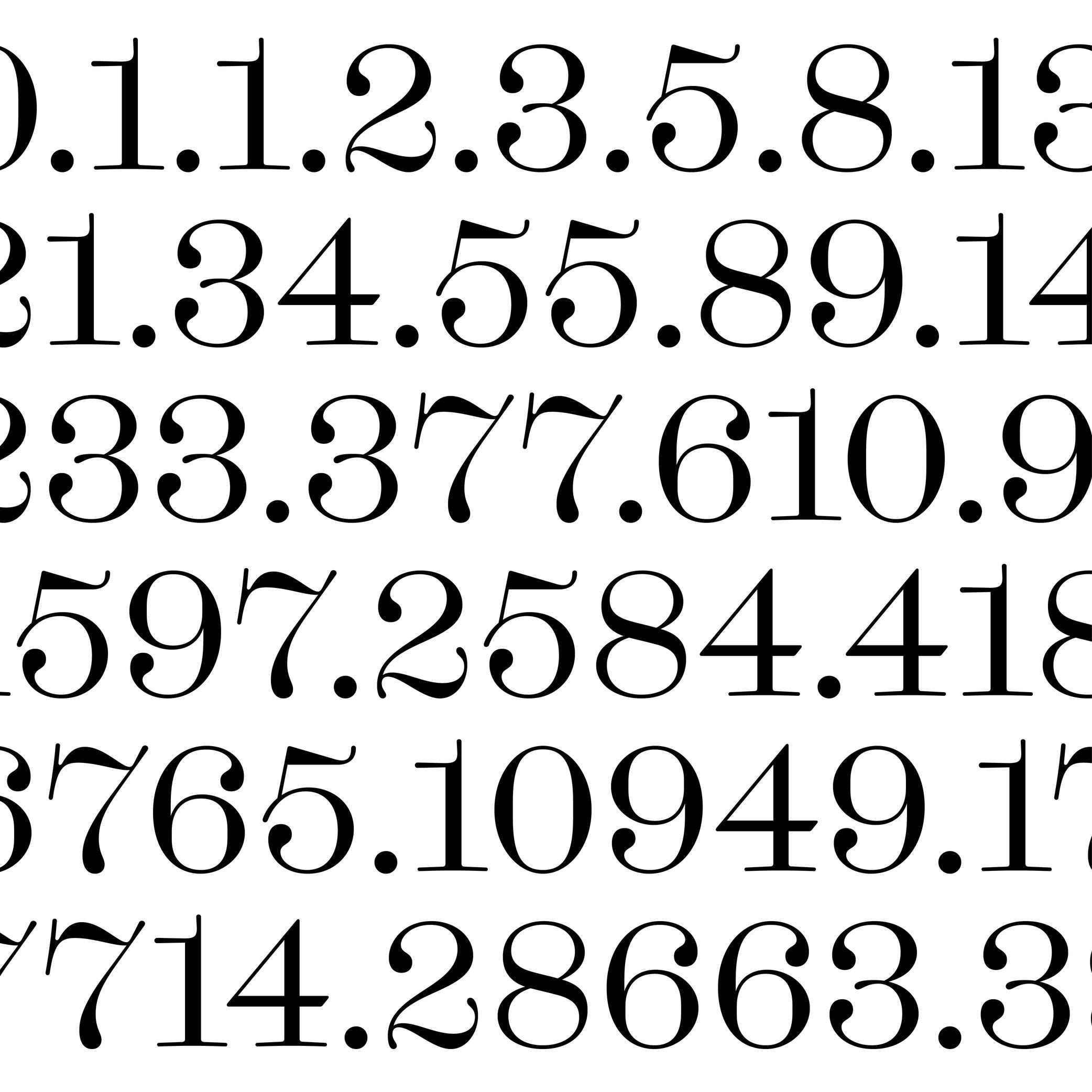
Sponsored by Dinamo . Typeface in use: Daily Scotch , designed by Fabian Harb and Michelangelo Nigra, 2024.
(Read More)Proportional figures in a typeface are designed with different widths, same for oldstyle figures, each one adapted to the forms of the figure in order to have balanced proportions.
For example, 1 would have a narrower width than 3.Punctuation
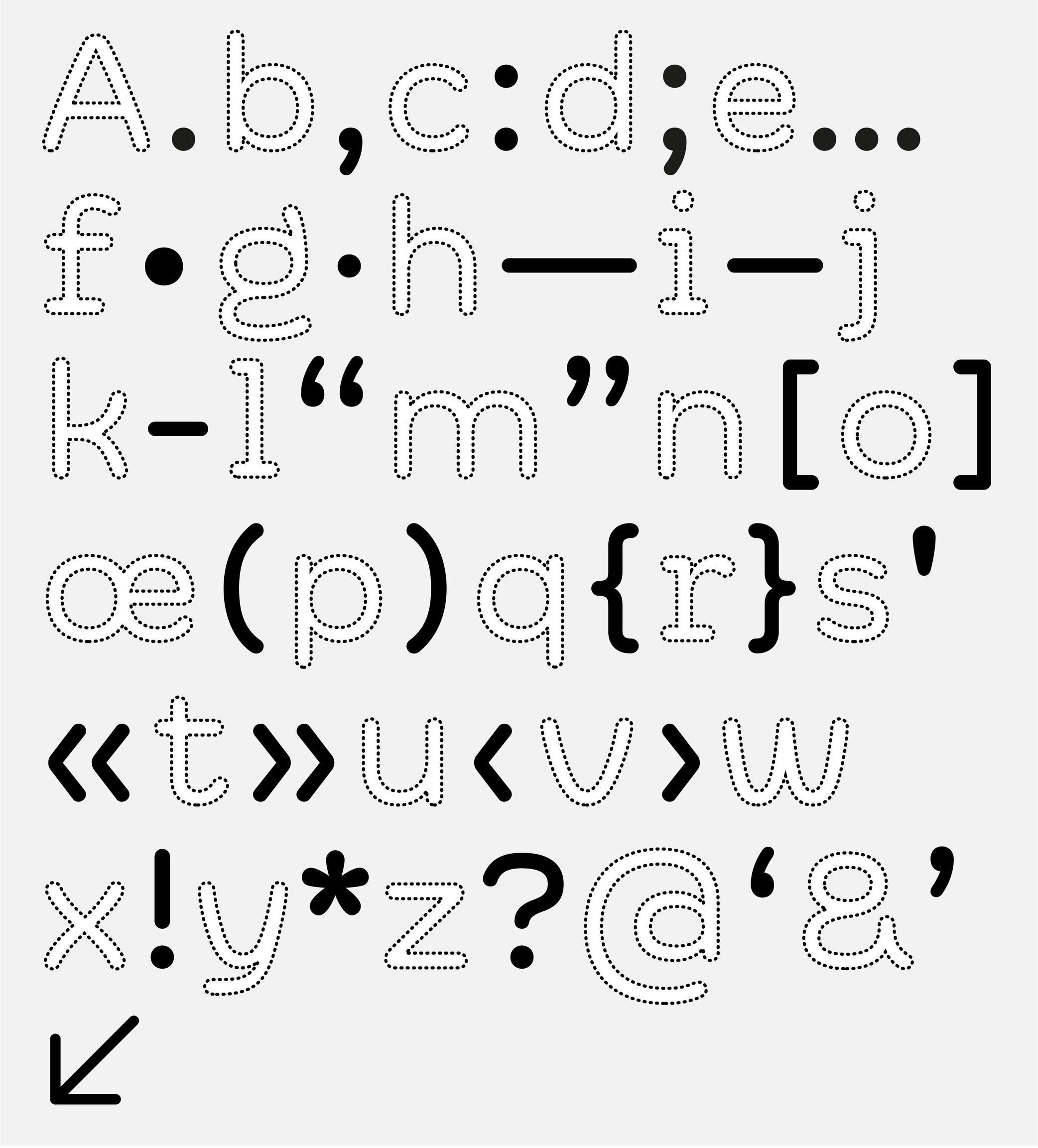
Sponsor Word of Type and feature your typeface in this card with a linked caption. Contact us for more information.
(Read More)Often forgotten when we think about the elements of a writing system, punctuation is just as important as letters, characters and figures. Punctuation symbols play a very important role in text.
When use correctly, punctuation marks a text’s rhythm and transmits the author’s desired voice. When well-designed in a typeface, punctuation helps with readability and facilitates typesetting and typography.
During the evolution of each writing system across the globe, multiple scripts developed different punctuation shapes for the same or similar purpose. Not every script or language uses the same shapes found in the Latin script.
Question Mark
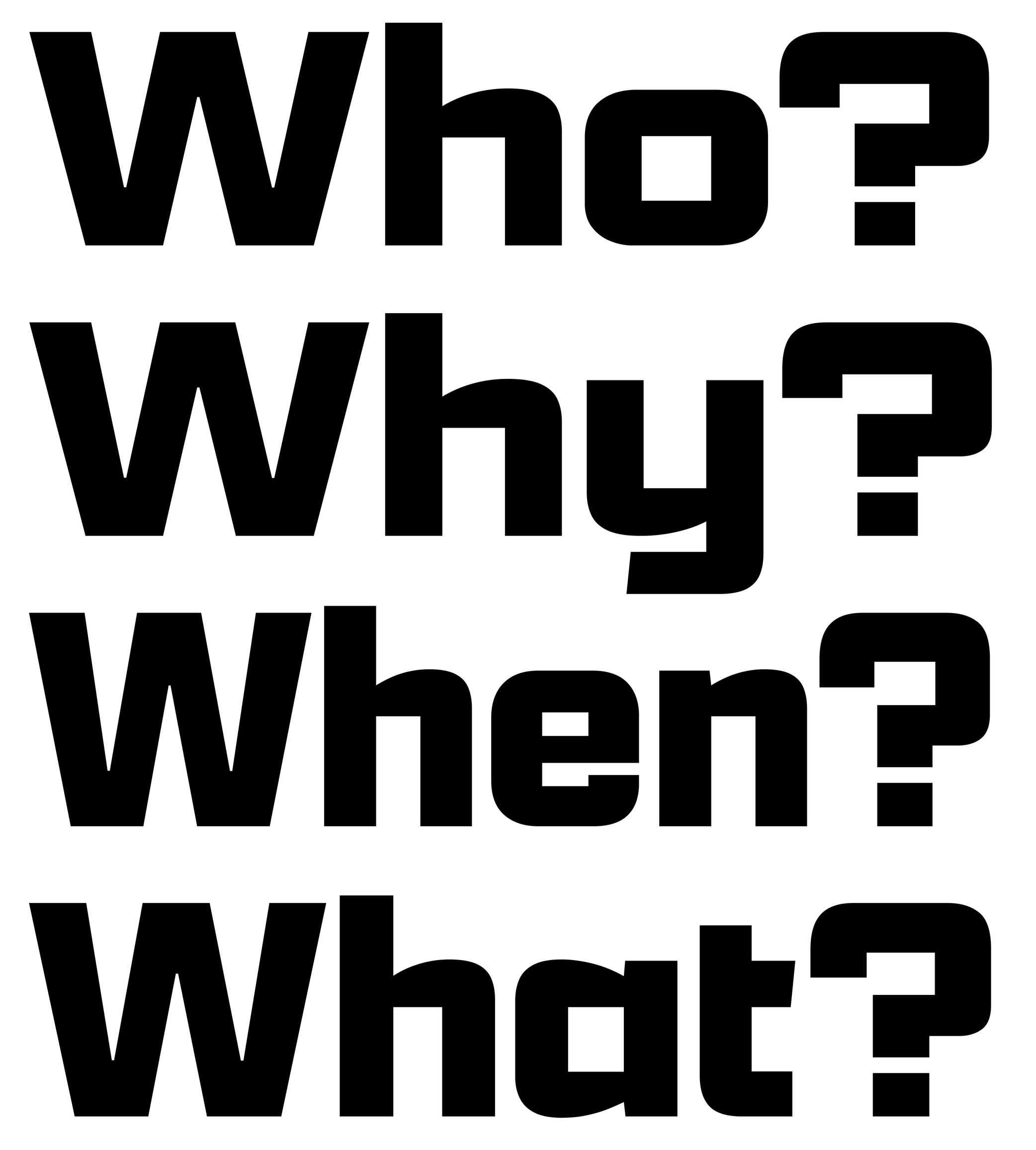
Sponsored by Kerns & Cairns . Typeface in use: Apotek , designed by Dyana Weissman, 2020.
(Read More)FUNCTION
The question mark is placed at the end of a question.
HISTORY
In Latin texts dating back to the 16th century, questions were marked with a letter Q above an o (as an abbreviation of quaestio, ‘question’ in Latin). It has evolved over the centuries into the simplified form that we know today.
DESIGN
The question mark has to have enough presence in a text to be visible fairly quickly. In the Latin script, it has about the same height and width as a capital letter. Its design has to be related with other glyphs of the typeface, where the top terminal relates to the terminal of other glyphs in the typeface (such as 2, f or C) and the dot below is identical to the period.
TYPOGRAPHIC RULES
In English and all other languages based in the Latin script, there is no space before the question mark, French is the only exception where there is a thin non-breaking space before it.
In Spanish, a reversed question mark is placed at the beginning of the question and the upright one at the end, with no spaces in between the characters and the words.Quotation Mark
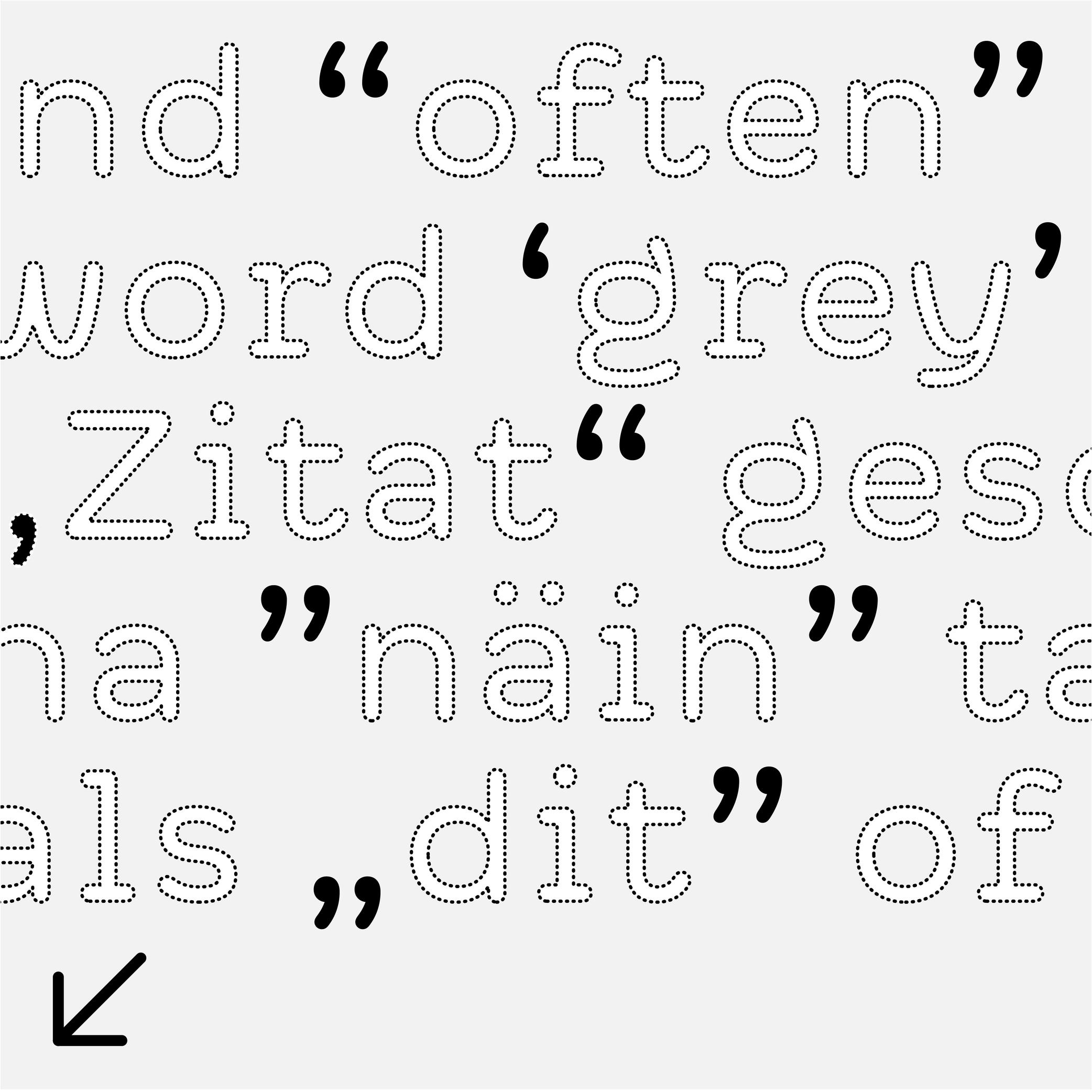
Sponsor Word of Type and feature your typeface in this card with a linked caption. Contact us for more information.
(Read More)FUNCTION
Quotation marks shaped like commas (or called “66” and “99” quotes), double or single, are used in most (but not all) languages to introduce a quote.
HISTORY
When texts were only written by hand, even if there were no standard marks used across Europe to indicate quotes, some slanted and double dashes were used for a similar purpose. During the printing press era, typographers used shifted upwards and/or rotated commas to work as quotation marks, and typewriters adopted the same forms.
DESIGN
Although quotation marks were historically identical to commas, in some typeface styles a slightly shorter and narrower form to create a better text color is more suitable. In sans serif typefaces, quotation marks have an even simpler shape to match with the overall style.
TYPOGRAPHIC RULES
The “66” quote is placed at the beginning of a quote, closed with the “99”, without any space between the quotes and the quoted text.
Some languages use these quotes differently, such as in „German“ or „Polish”, or use quotes of different shapes such as the guillemets in «French», or「Traditional Chinese」.
Single quotes are used as secondary quotes, if they are within double quotes. A common mistake is to use prime and double prime for quotes instead of symbols in mathematics (distance, time, etc.).Readability
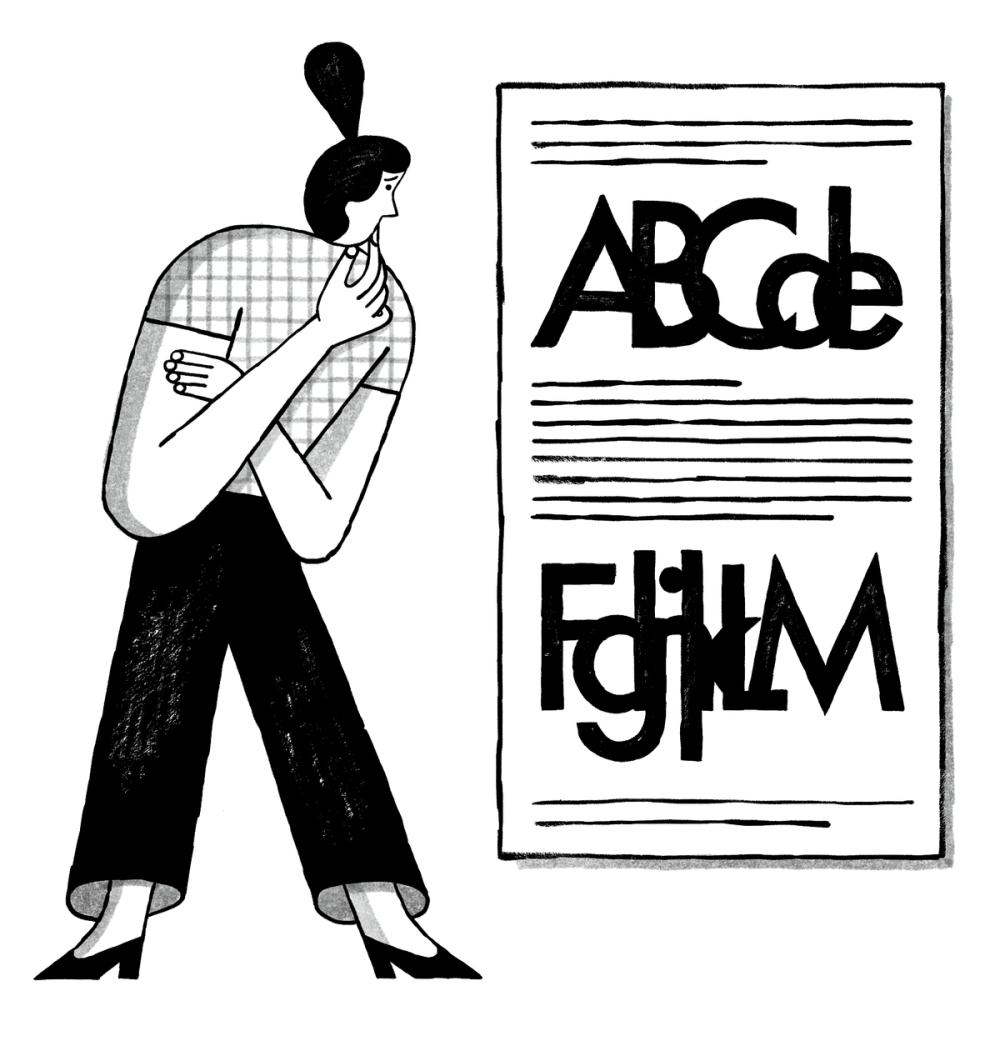
Illustration: Malota .
(Read More)In typography, readability refers to the ease with which a text may be read. The readability of a text is influenced by many aspects (listed in the quote below) other than the text itself. Readability is a concept often confused with legibility.
QUOTE
“The readability of a text is influenced not only by the choice of typeface, type size, correct or incorrect letter and wordspacing, and the length of line, but also by the linespacing or interlinear space, often termed ‘leading’.”
Jost Hochuli (translated by Charles Whitehouse) in Detail in typography.
Regular (weight)
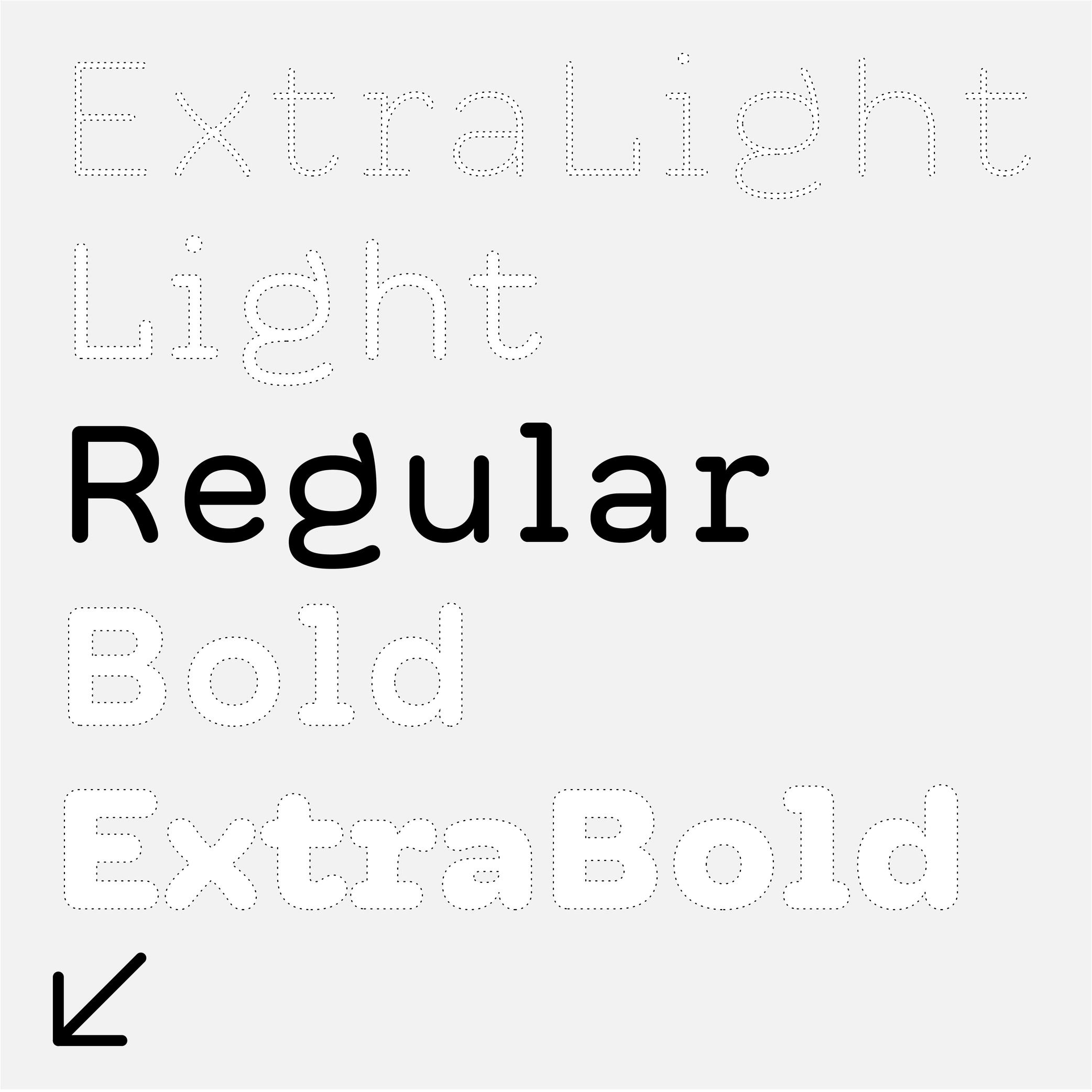
Sponsor Word of Type and feature your typeface in this card with a linked caption. Contact us for more information.
(Read More)Regular weight is the most frequently used style in a typeface family.
With its proportions and features designed to be easily read, it is the best style to be used in running texts.Reversed Contrast
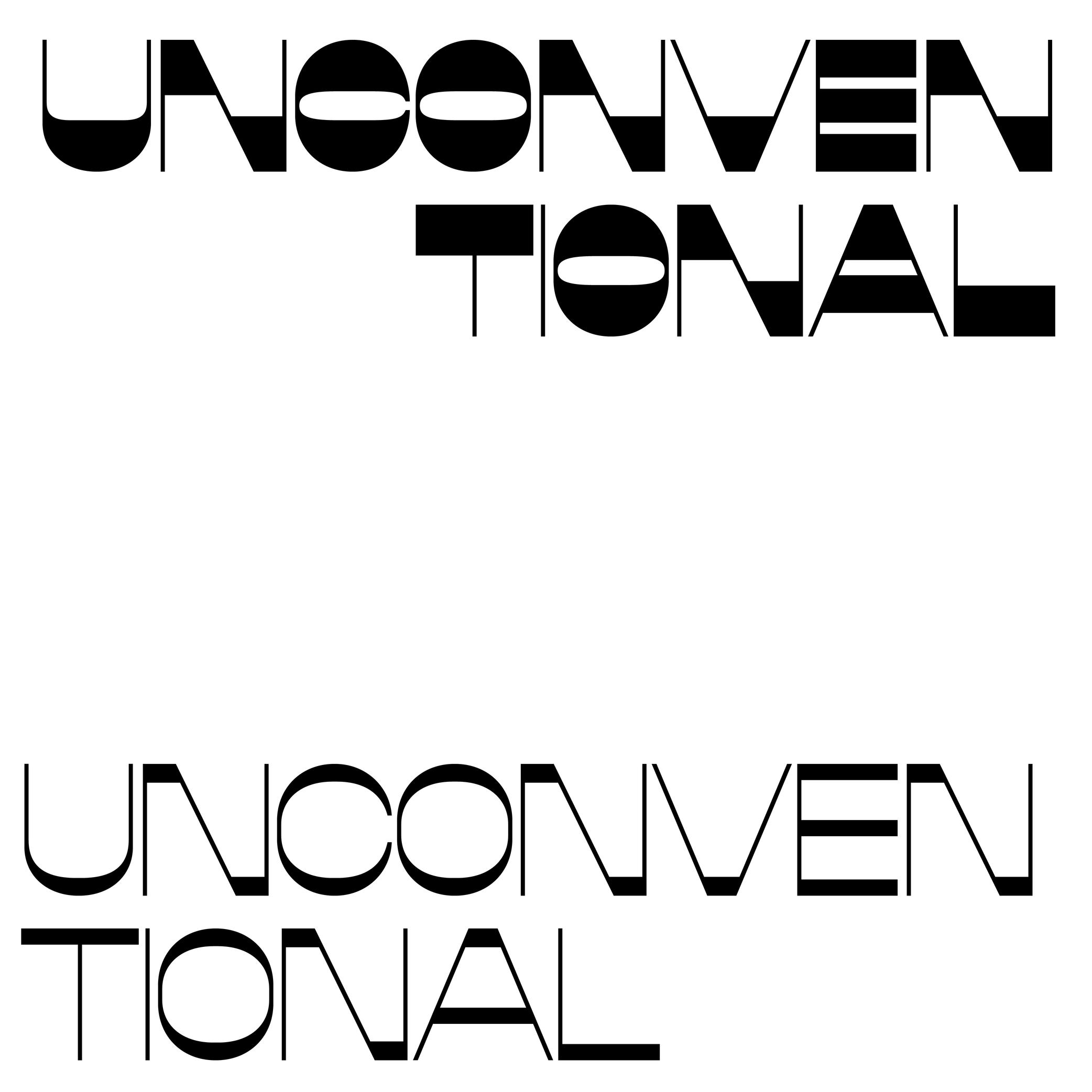 (Read More)
(Read More)The contrast is the relationship between a glyph’s thick and thin parts.
The variation in a stroke’s thickness comes originally from handwriting and results from the writing tool’s reaction to the medium, in combination with how the toll is held and the movements the writer makes.
Nowadays, in type design for the Latin script, we refer to a vertical contrast when the vertical parts are thicker than the horizontal ones, which is its “natural” contrast. And the opposite is known as a reversed or inverted contrast.But these concepts only apply to scripts that evolved using tools and a medium that creates such contrast “naturally,” which is not universal for all. For example, the Hebrew script’s contrast would naturally be distributed the other way around.
Revival
(Read More)A revival refers to a new typeface whose letterforms are based on historic models.
Today, when we speak of revivals, we usually refer to digital typefaces that take their designs from existing ones. Most often, they base their forms on exisiting typefaces cast in metal, engraved into word, or produced for photo-composition.
The oldest revivals were made by 19th century type foundries when they adapted early 18th century typefaces for industrial printing conditions. In the 20th century, more revivals from mechanical and photo-typesetting device manufacturers followed.Inevitably, the design of a revival contains unique details of the designer, from interpretations of the initial design while analyzing printed results on paper to those on screen at various resolutions. Today, we can see multiple typefaces designed as revivals from one and the same typeface, but each have (sometimes very subtle) differences. For example, we can think of the many versions of the Garamond.
A revival from a running text typeface is considered as a good assignment for students starting to learn typeface design, as this allows to get more familiar with styles considered as “conventional” before experimenting further with more creativity.
Royalties
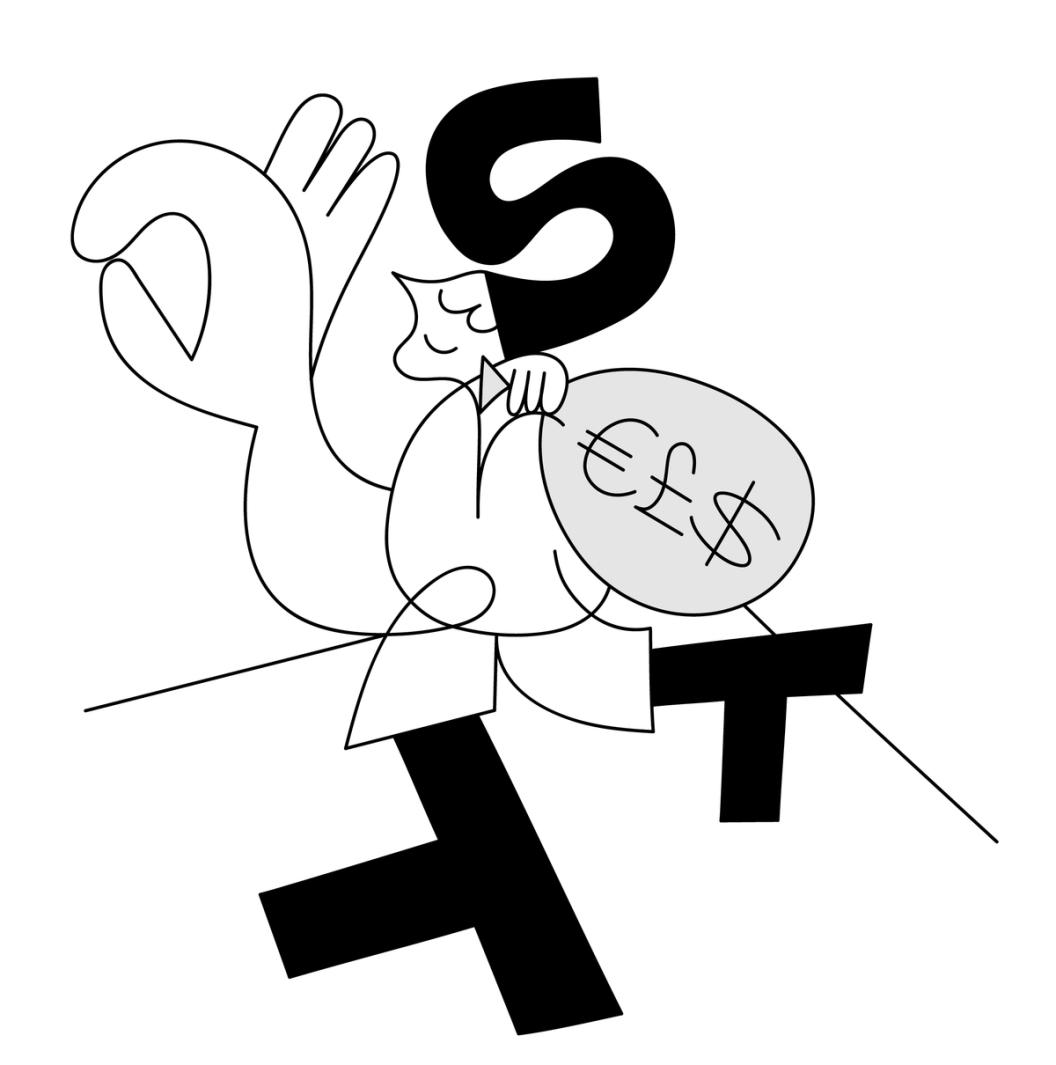
Illustration: Catherine Potvin .
(Read More)Typefaces are designs sold as fonts (copies of the original design) under their corresponding licenses. When such licenses are distributed and managed by an intermediary (publisher, distributor, or type foundry), a percentage of the sales goes to the designer. That part is the royalties, similar to what is applied in other artistic industries (music, illustration, etc.).
Sans Serif
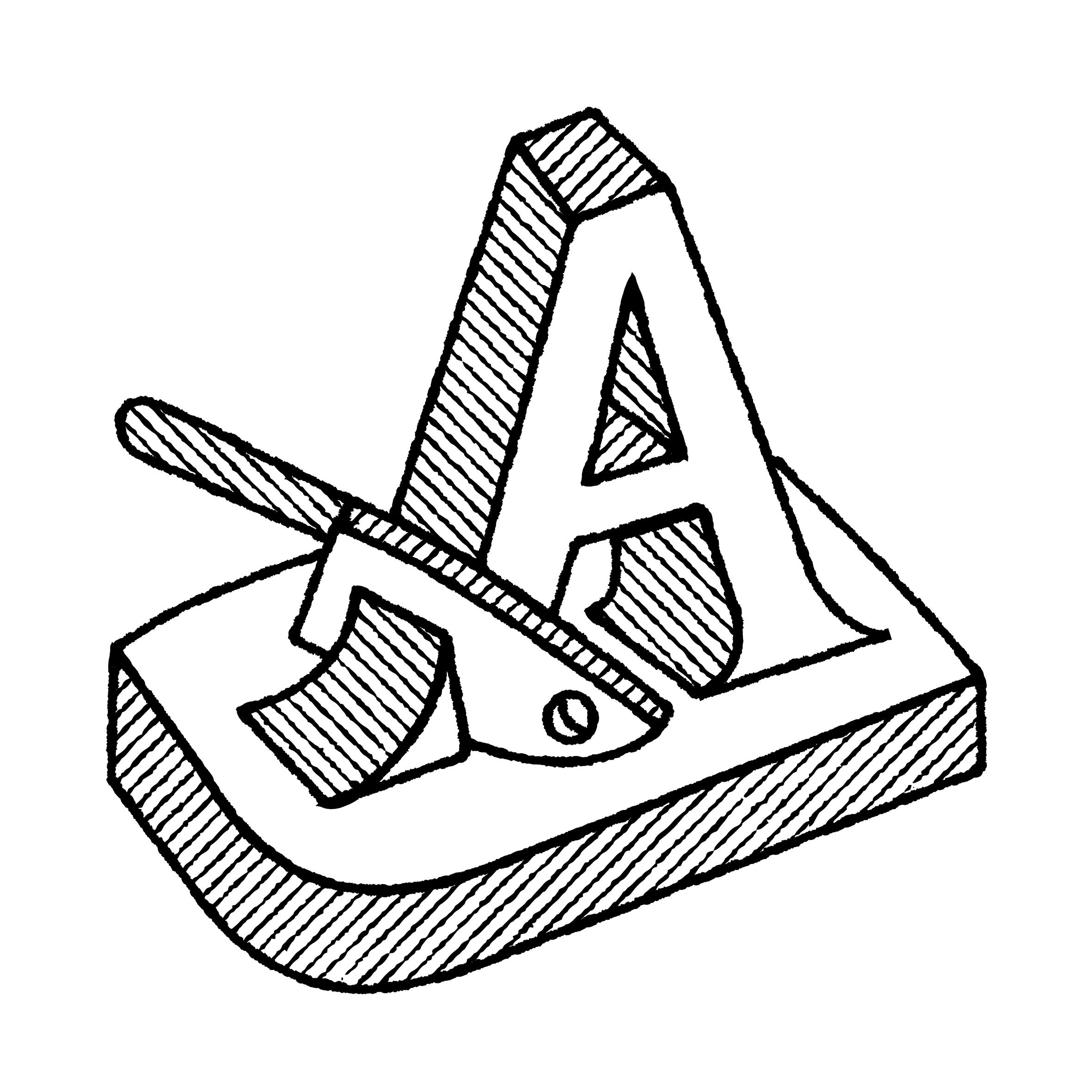
Illustration: Pauline Fourest (Spaghetype ).
(Read More)DESCRIPTION
Sans serif, or Sans (literally meaning without in French), describes a typeface style without serifs.
HISTORY
As far as we know, the first published sans serif typeface, Two-Lines English Egyptian by William Caslon IV, was published in 1816 in London, England.
Many terms have been used to speak of a sans style as we understand it today, with multiple categories names in different typographic classification systems of Europe: ‘grotesque’ (France and United Kingdom), ‘Grotesk’ (Germany), ‘gothic’ (USA), ‘linéale’, ‘bâton’ or ‘antique’ (France).EVOLUTION
In Europe and North America, Sans-serif styles became popular in the early 20th century as part of a modern trend. Typeface designers experimented a lot around the this style, with some becoming references, and later style sub-categories of Sans-serif: humanistic sans, geometric sans, grotesque or gothic, etc.
But these don’t apply to other scripts that evolved on an independent path from the ‘Latin’ world. Chinese Hanzi have a category of style similar to Sans, called Heiti (or Hei), that doesn’t have as many sub-categories.
Script
(Read More)A script, or writing system, is the visual system (letters, characters, symbols, etc.) used to transcribe one or several languages. Some scripts are used by multiple languages (e.g., the Roman alphabet for many Western European languages).
Script (style)
(Read More)DESCRIPTION
Script is a category of typefaces that imitates handwritten forms.
HISTORY
Various categories of typeface styles started to be identified from the various metal typefaces being produced for movable type printing. Metal type technology worked so that each piece of metal representing one character could be assembled and reassembled in every possible combination, meaning that each character was designed as a disconnected form.
As new typeface designs kept being produced (mainly in Europe), more flourished styles for more diverse choices started to appear, especially during the early 20th century. Not only did they give more possibilities for typesetters (for advertisements or novelty), but new typefaces were also a way for type foundries to display their capabilities in technical and design innovation. Beyond italic styles, typefaces that could imitate handwritten forms (with connected and/or irregular forms) were one of the most challenging styles at that time, technologically speaking. As one (early but not the earliest) example of such a challenge, we have the typeface Mistral, designed by French typeface and advertiser designer Roger Excoffon in 1953 for Fonderie Olive.
EVOLUTION
Thanks to the possibilities offered by digital fonts, which have far fewer physical constraints than metal types, the same glyph can have multiple variations and replace one glyph to a more fitting one (see Opentype features or Alternates), to create the impression of handwritten words. Today, there is a wide choice of Script style typefaces, with a high variety of styles (and qualities).
IMPRESSION
Script typefaces are mainly used as display styles, in titles, short texts, or even in brand logos.
They can convey all kinds of impressions from the many possibilities of ‘sub-styles’. Note: script typefaces are not to be confused with lettering!Semicolon
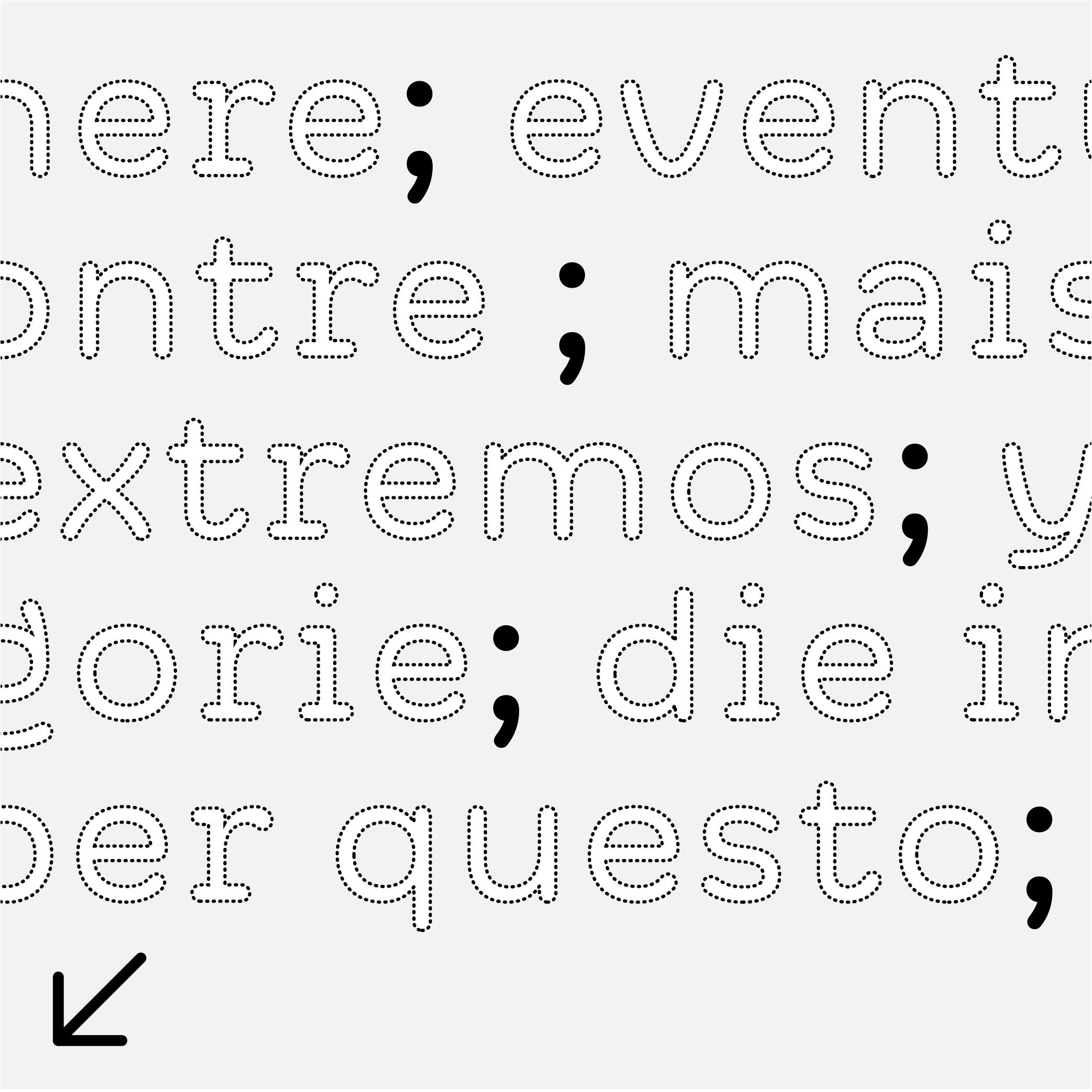
Sponsor Word of Type and feature your typeface in this card with a linked caption. Contact us for more information.
(Read More)FUNCTION
The semicolon is used as a separation symbol in a sentence between two independent sections. It is also used at the end of different points of a list, ended by a period.
DESIGN
The semicolon has a period at the top (aligned below the x-height) and a comma on the bottom (like the comma), the two elements are vertically aligned.
TYPOGRAPHY RULES
There is no space before the semicolon, except in French, where there is a non-breaking thin space.
Serif

Illustration: Raven Mo .
(Read More)DESCRIPTION
Serifs are elements at the tips of strokes in serif style typefaces.
HISTORY
The origin and evolution of serifs differ in different scripts and don’t even exist in others.
For the Latin script, serifs come from the combination of the movements of the brush when writing Roman capital letters (the origins of the Latin alphabet) and stone carving techniques.EVOLUTION
Calligraphy, metal and wood type printing, photo composition, typewriters, digital typefaces, all of these tools and techniques contributed various shapes and presence (or absence) or serifs among the various typeface styles that we see today.
The positioning of serifs in each letter has been defined by the writing ductus combined with the tools use. For example, the general rule is that serifs should be on both sides at the top and bottom of vertical stems for upright letters, and none on the bottom of italic stems.
There are multiple possibilities for the shapes of serifs: thin, thick, long, short, wedged, squared, triangular, etc. Many typeface styles have a particular serif shape as part of their characteristics.
IMPRESSION
In Latin script, different impressions and feelings are associated with specific typeface styles (traditional, luxurious, casual, elegant, etc.), which are mainly due to the circumstances of their creation, usage preferences, and habits.
For example, humanist or transitional serifs are the go-to styles for long reading uses.DESIGN
For styles where serifs are on both sides of the stems, some asymmetrical letters (such as f, r, F or P) have a large opened counter on one side. To compensate for the imbalance created by the “empty space”, the designer can adjust the serif on that side by making it longer.
Side Bearings
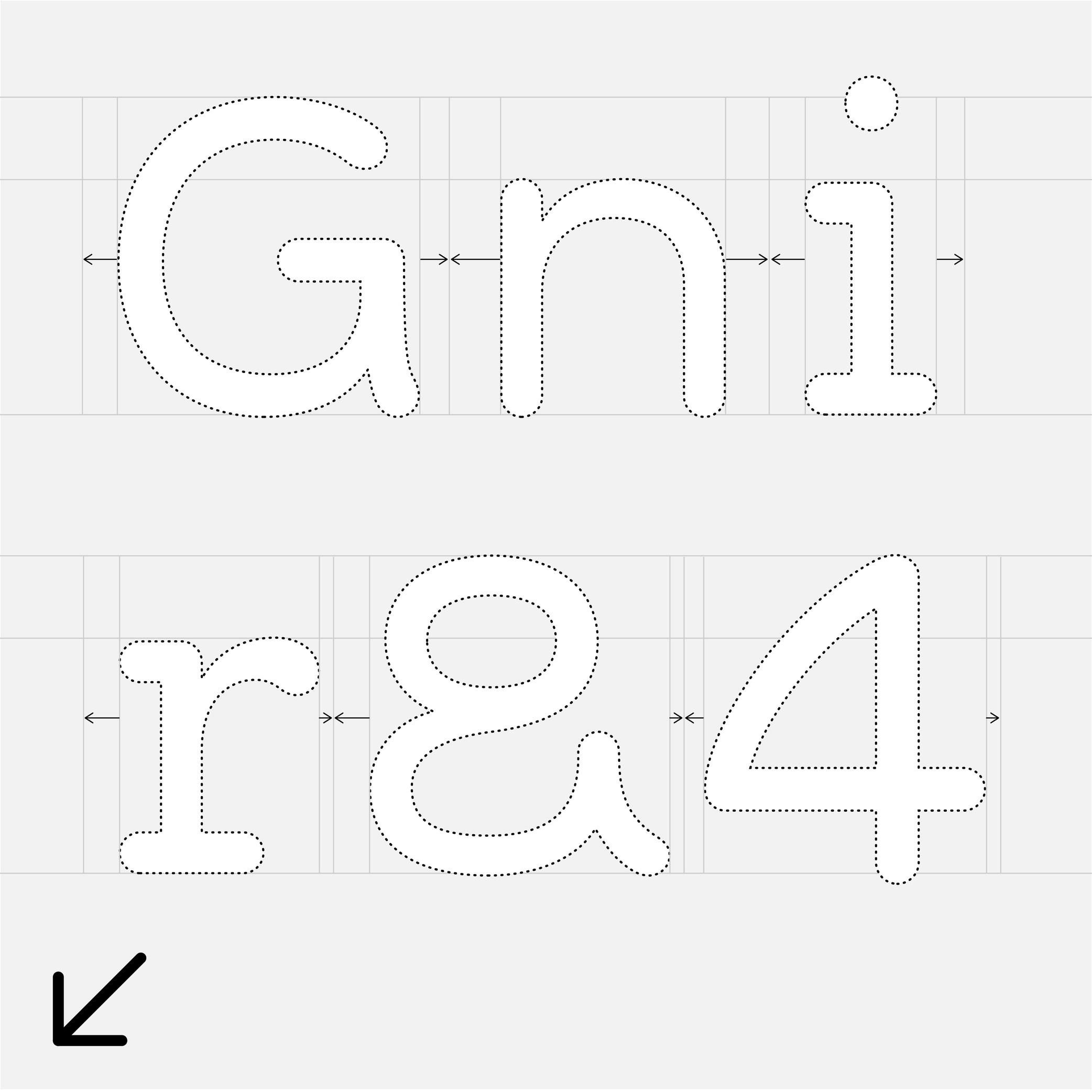
Sponsor Word of Type and feature your typeface in this card with a linked caption. Contact us for more information.
(Read More)A side bearing is the distance between a glyph’s side and its bounding box. In scripts written horizontally, there is always a left side bearing (LSB) and a right side bearing (RSB). Managing the side bearing values is working on the spacing of the typeface.
Single or Double Storey
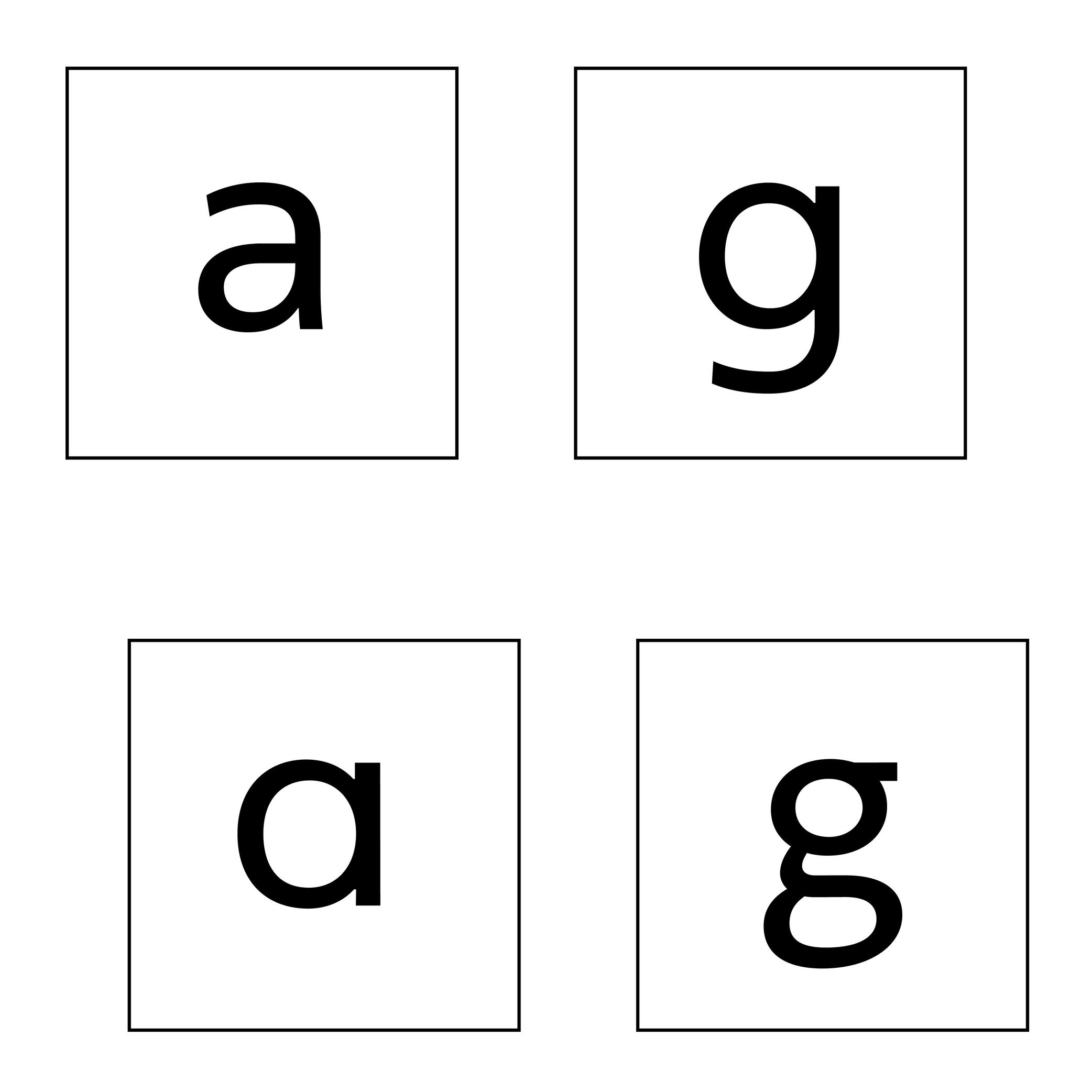
Sponsored by Typotheque . Typeface in use: Zed Text , designed by Peter Biľak, 2024.
(Read More)Latin letters a and g can be represented with two different constructions:
- single storey, for modern and/or geometric styles;
- double storey, for traditional and/or classical styles.
In some typefaces, both constructions are available, as designers feel that some users prefer one over the other.
The letter g can also be designed with a half storey construction, often seen in Scandinavian designs as a legacy from Danish street signs.
Skeleton
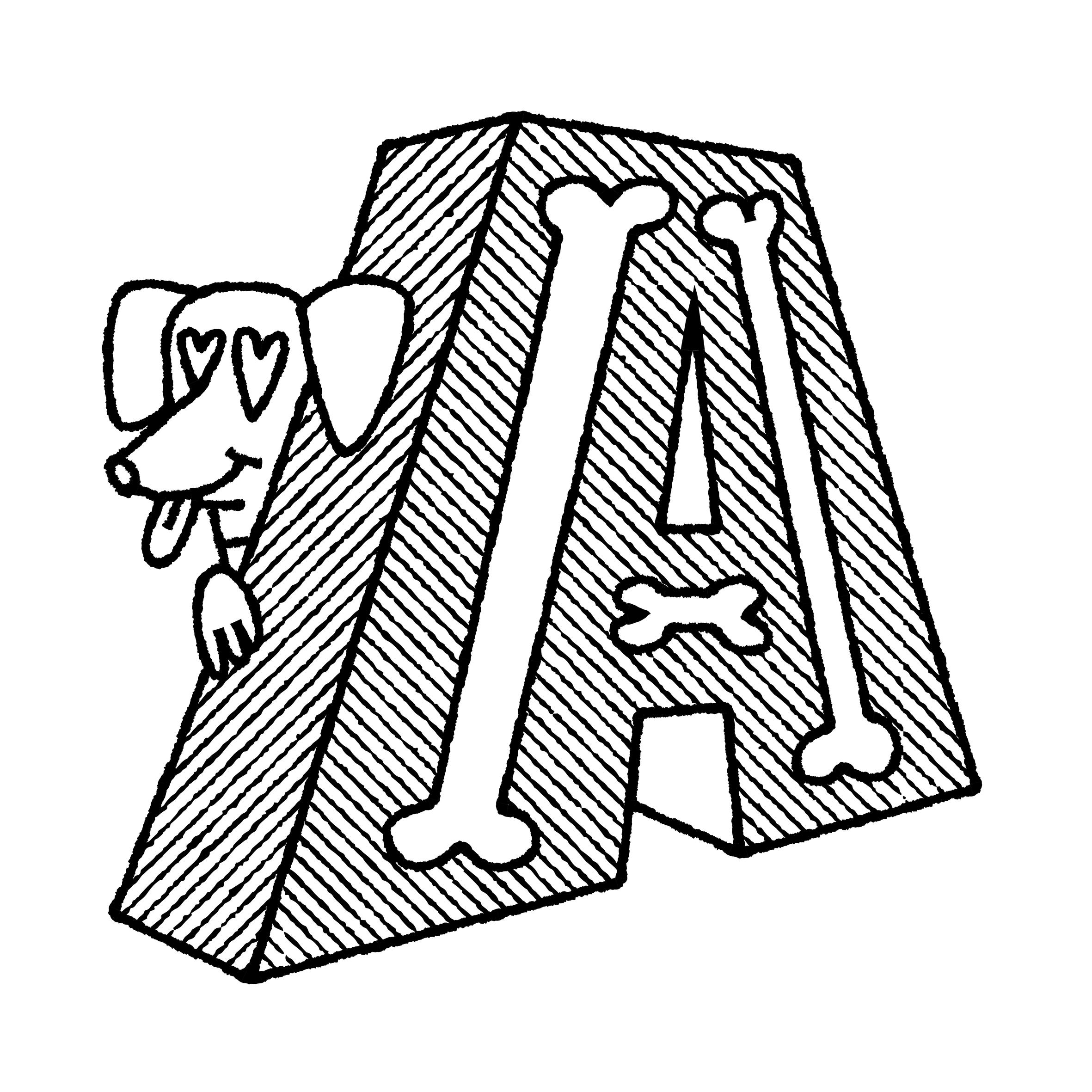
Illustration: Pauline Fourest (Spaghetype ).
(Read More)Many terms are borrowed from architecture or human and animal anatomy to designate and describe parts of letters and other characters. We even speak of type design anatomy.
The skeleton is the center line around which every part of a glyph is built (weight, contrast, curvature, terminals, etc.). Keeping the skeleton the same across multiple styles of one typeface family is, by definition, keeping the same structure, which is one of the principal ways to maintain design consistency.
Slash
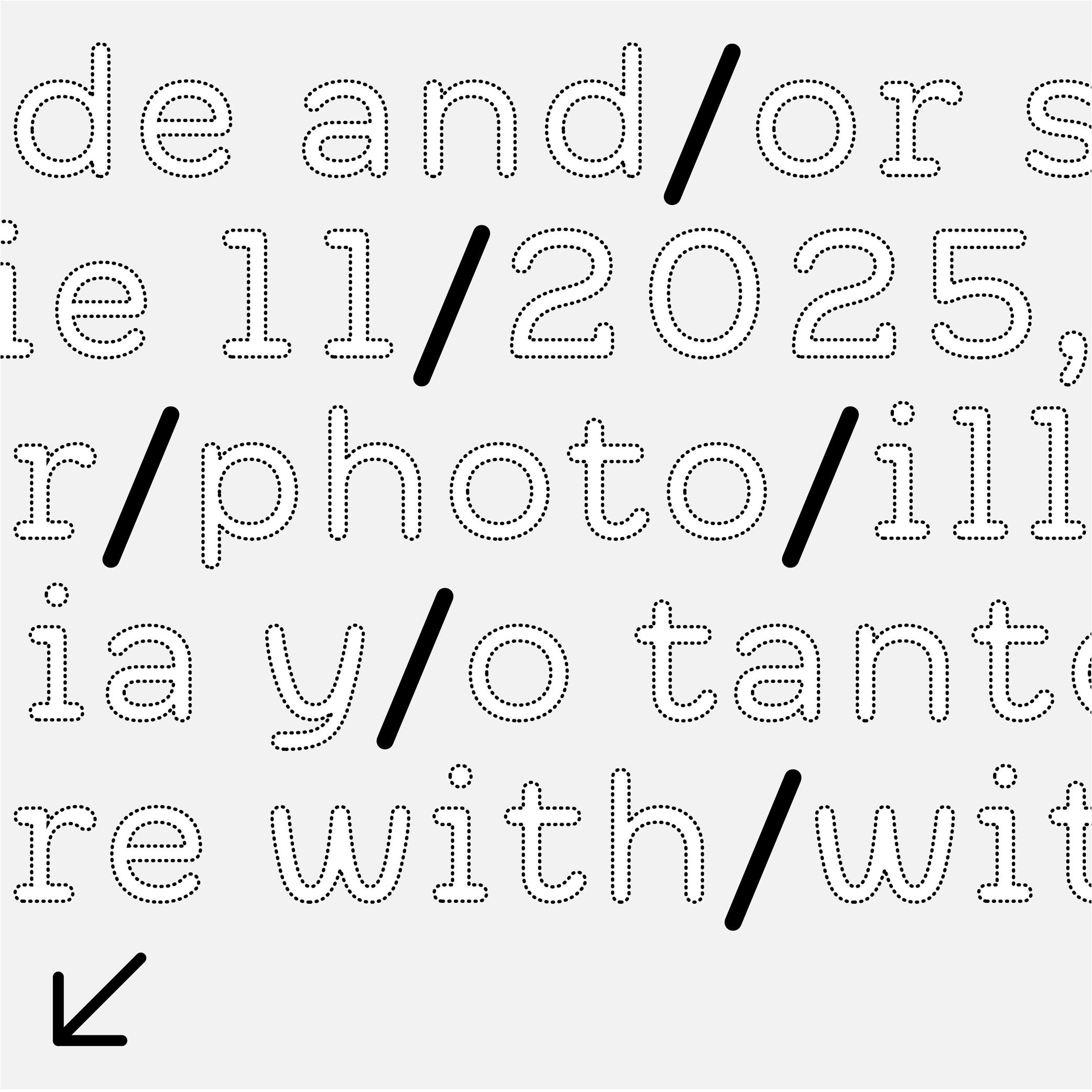
Sponsor Word of Type and feature your typeface in this card with a linked caption. Contact us for more information.
(Read More)FUNCTION
The slash (also called solidus) is used between two alternatives (in/or), as a date separator (2023/24) or, as a more recent use, to list someone’s job titles (designer/photographer/writer/…), generally in short or informative texts. In longer texts, it is better to avoid using a slash and write a complete sentence instead.
DESIGN
The slash is a line with a forward-leaning slope that goes from the capital height (in the Latin script) all the way to the baseline (or below for better visualization).
TYPOGRAPHY RULES
Most languages don’t usually use a space before or after the slash.
Small Caps
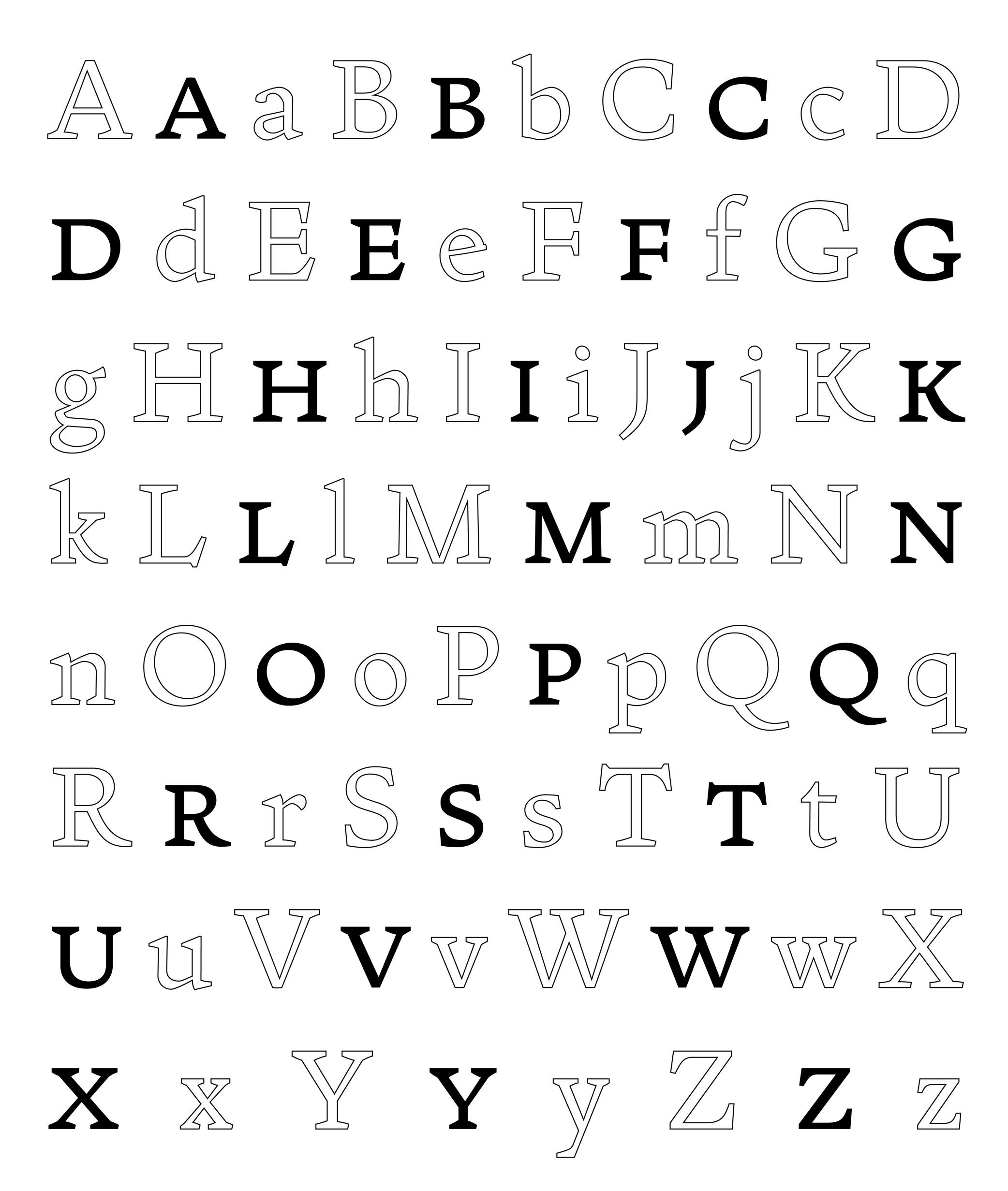 (Read More)
(Read More)FUNCTION
Small Capitals, or commonly just Small Caps, are letters with a capital letter structure but smaller in size (hence the name).
USAGE
They are used in texts when there are many capital letters together (initials, abbreviations, acronyms, Roman figures or all caps words in texts). In traditional typesetting where a new chapter starts with an initial or drop cap, the other letters of the first word or the entire first line can also be set in small caps to ease out the change towards the following text in lowercase.
HISTORY
The use of small caps started to be popular during metal type printing, as they added an additional option to the typographic palette, while keeping the same typeface.
Today, small caps are not present in every digital Latin typeface (they have their own Unicode values and are not in every Latin character set), as using small caps was more common in the ‘Latin’ world and used in traditional typography.
Some text processing or design applications can automatically generate small caps by scaling down capitals letters (just like they can do the same for italic or bold styles), but this is not advised for high quality typography, as the weight relation is much lighter.
DESIGN
Small caps have no precise height proportions compared to the capitals or lowercase, but a good ratio sits between these two heights.
Their weight and contrast should match those of the lowercase, and their height/width proportions are usually slightly wider than simply scaled-down capitals.
Space
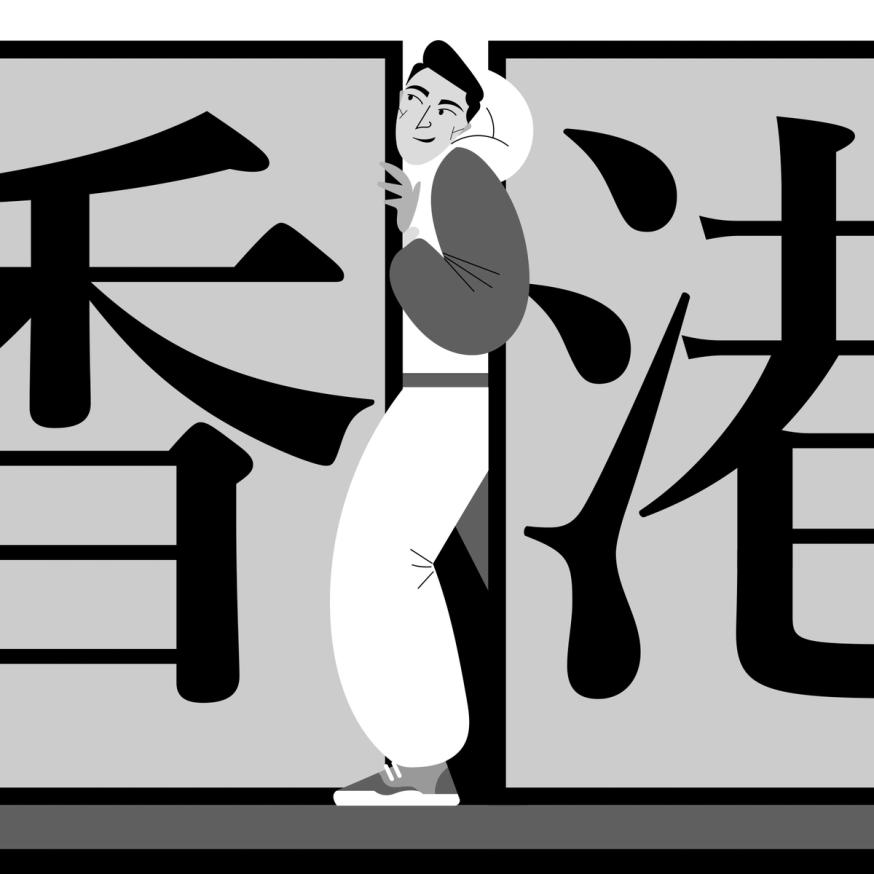
Illustration: Jonny Wan .
(Read More)FUNCTION
For many writing systems (but not all), spaces separate words. Like punctuation symbols, they bring rhythm and clarity to a text and help with the reading experience. In the Latin script, several spaces with different widths are used for various situations (see Typographic Rules below).
HISTORY
In Ancient Latin, Roman capitals had no spaces between words. In some monuments, dots could be placed at middle height to help identify the words. In Europe, with the adoption of the Latin script, they started to appear in calligraphed manuscripts to help the readers identify the different words.
During the metal type printing era, blank pieces of lead were used as spaces between words. There were multiple widths for word spaces to help arrange text lines with precise length (em space, thin space, etc.). They lead to various rules in various languages and typographic traditions.
Nowadays, texts in the digital realm still make use of a variety of spaces for different situations in different languages, and also to offer different typographic options.
DESIGN
Spaces shouldn’t be too wide or too narrow. In Latin script based languages, a common convention is to set the width of the generic space glyph (U+0020) similar to that of the letter I or i.
TYPOGRAPHIC RULES
Many languages—including those commonly using the Latin script—have specific typographic rules.
One example: in French, before a question mark, exclamation mark, semi-colon or colon, there is a non-breaking space, whereas there isn’t any in English or other languages.
In digital typesetting, there are variable word spaces, breaking and non-breaking spaces, which give the text processing application the information on whether the width of the space can be adjusted or if the text line can or can not be broken at a specific place.
Spacing
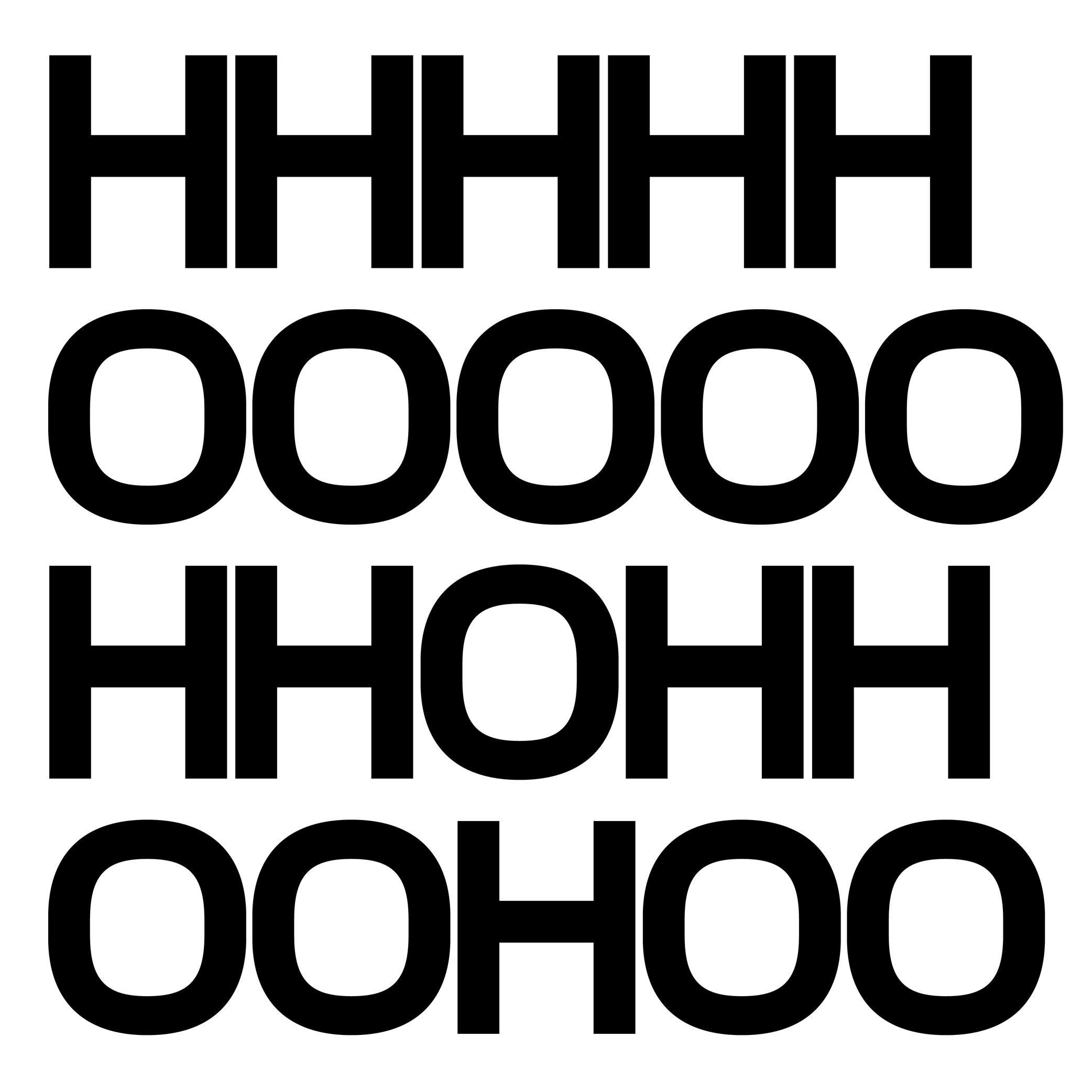
Sponsored by Production Type . Typeface in use: Media Sans , designed by Jean-Baptiste Levée, 2018.
(Read More)Spacing is about managing the values of a glyph’s side bearings (or the distance between its most left and right side edge to the side of the bounding box), which influences the distance between each glyph combination.
Good spacing is just as important as the design of glyphs themselves, as the combination of both influences the quality of a typeface.
Specimen
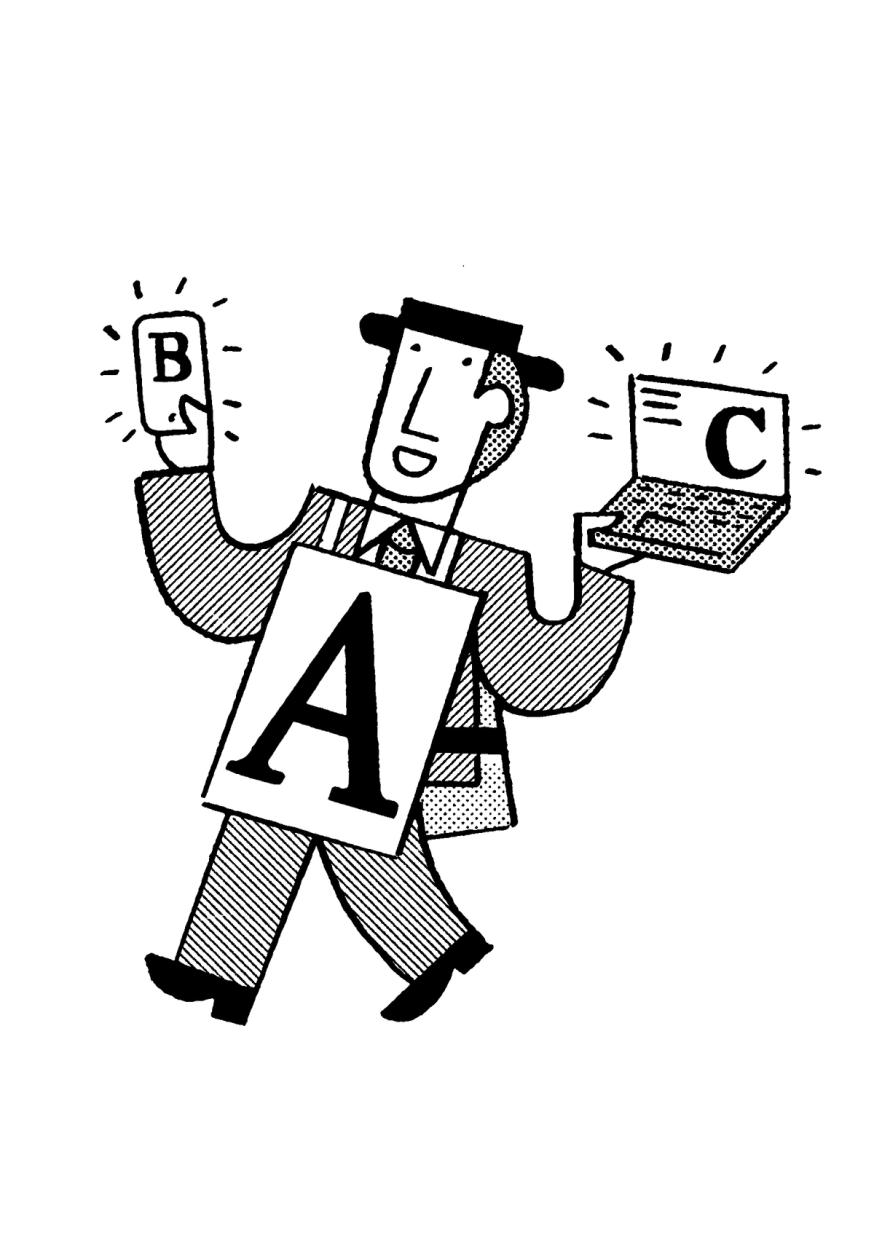
Illustration: Jay Cover .
(Read More)A specimen is a visual sample document published by type foundries that showcases a typeface, its glyph set, text settings in different sizes, Opentype features, etc.
A collection of specimens of different typefaces bound together is called a typeface catalog.Spine (in editorial design)
(Read More)The spine is the side of a printed object (book, brochure, etc.) which is bound.
Spine (in type design)
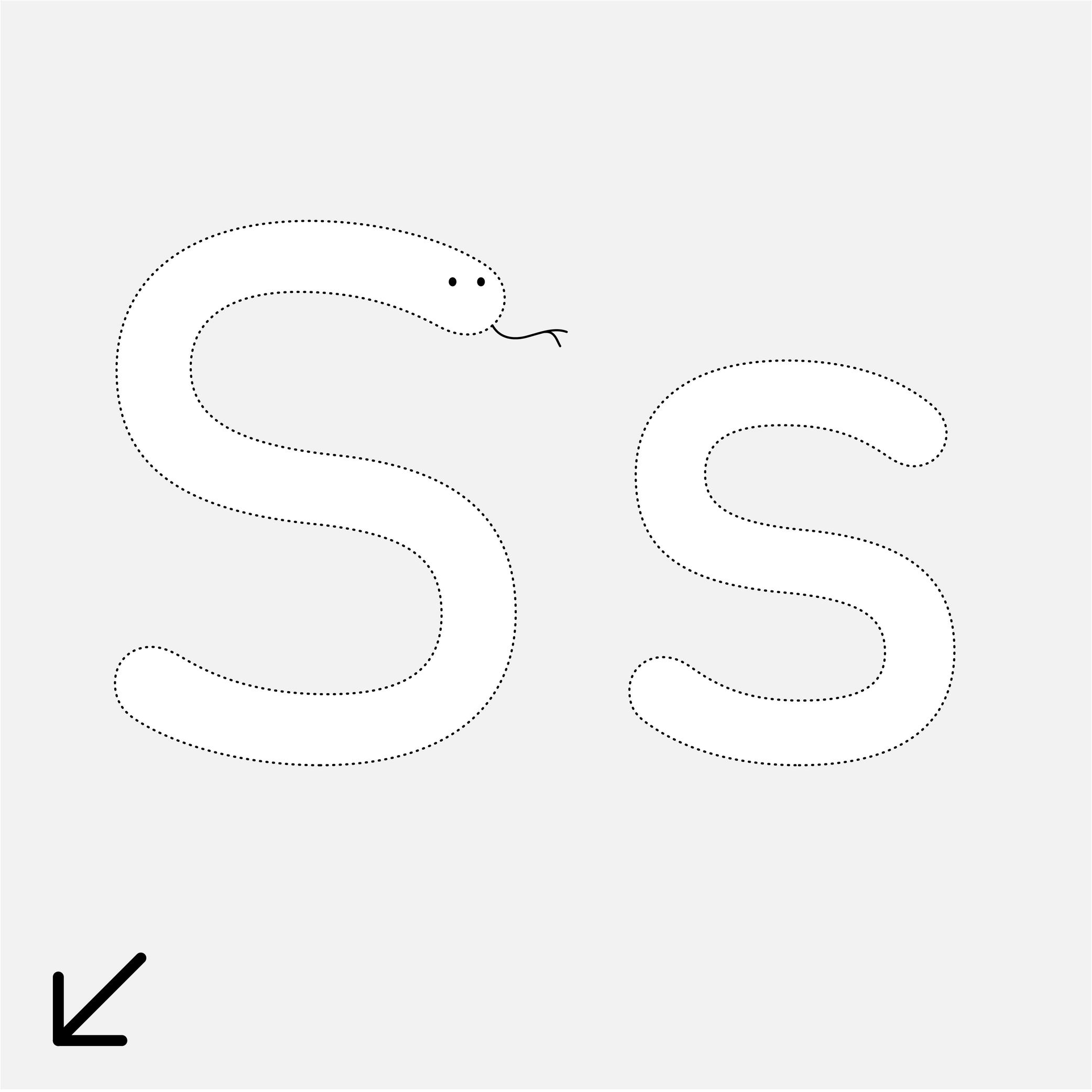
Sponsor Word of Type and feature your typeface in this card with a linked caption. Contact us for more information.
(Read More)Many terms are borrowed from architecture or human and animal anatomy to designate and describe parts of letters and other characters. We even speak of type design anatomy.
In the Latin script, the spine is the middle curve segment of characters like s or S.
Static Font
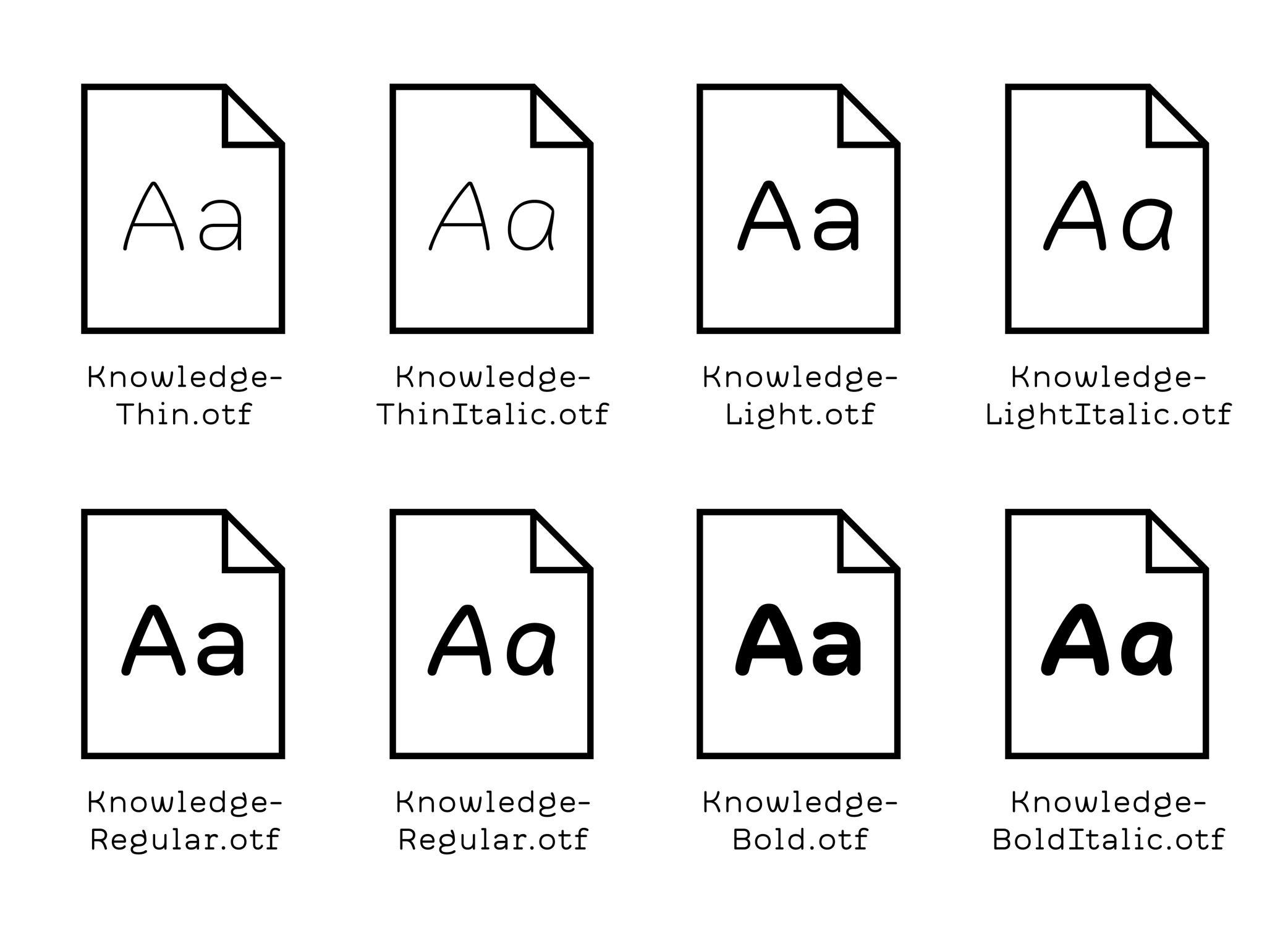
Illustration: Words of Type. Typeface in use: Knowledge Round, designed by Lisa Huang, 2024.
(Read More)Static fonts are independent font files with data of a typeface in a particular and single style, as opposed to Variable Fonts, which contain data of indefinite styles.
Stem
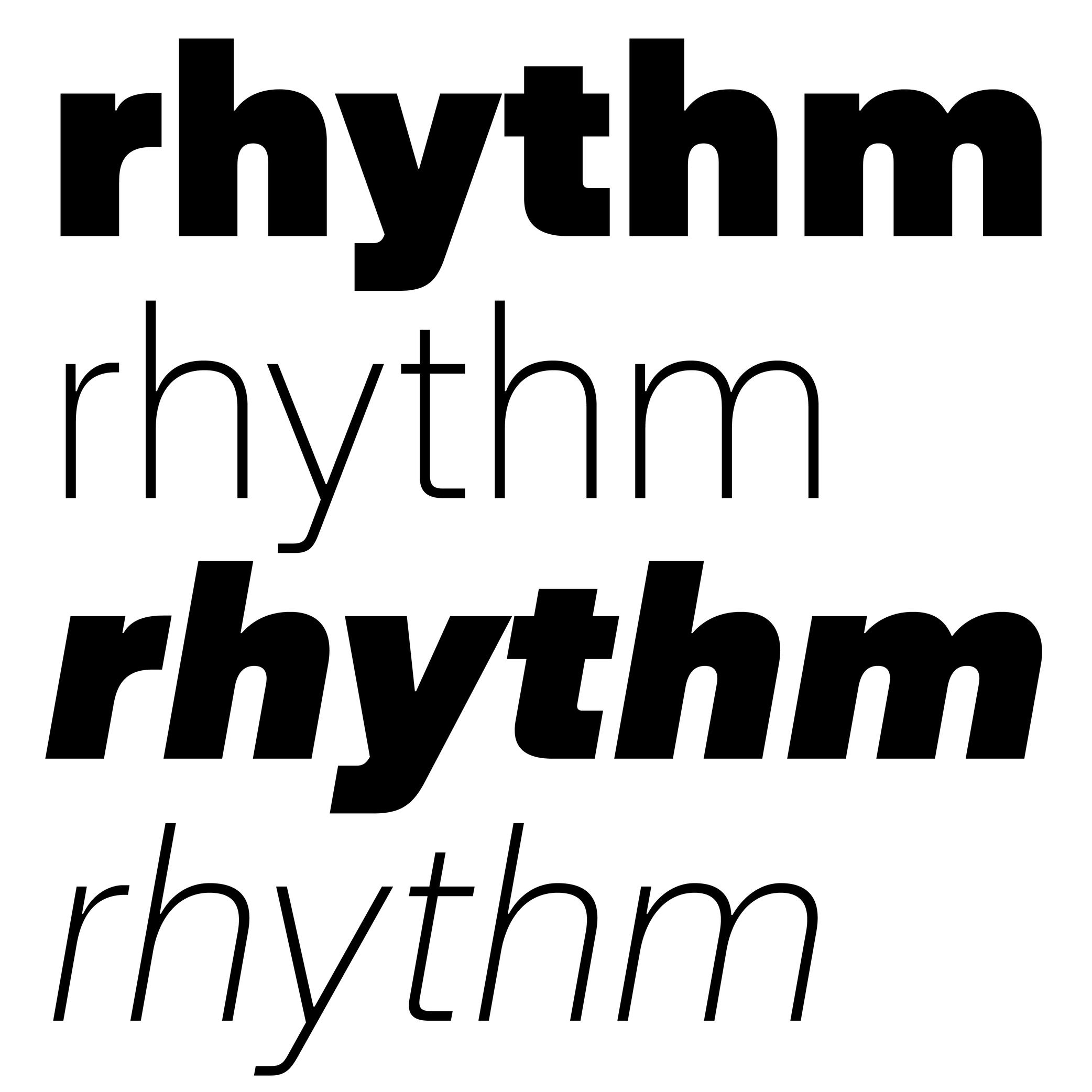
Sponsored by Blaze Type . Typeface in use: Rules , designed by Matthieu Salvaggio, Léon Hugues, Tim Vanhille, and Guido Ferreyra, 2024.
(Read More)Many terms are borrowed from architecture or human and animal anatomy to designate and describe parts of letters and other characters. We even speak of type design anatomy.
In many writing systems, a glyph’s stem refers to its vertical bar(s) or stroke(s).
Stroke
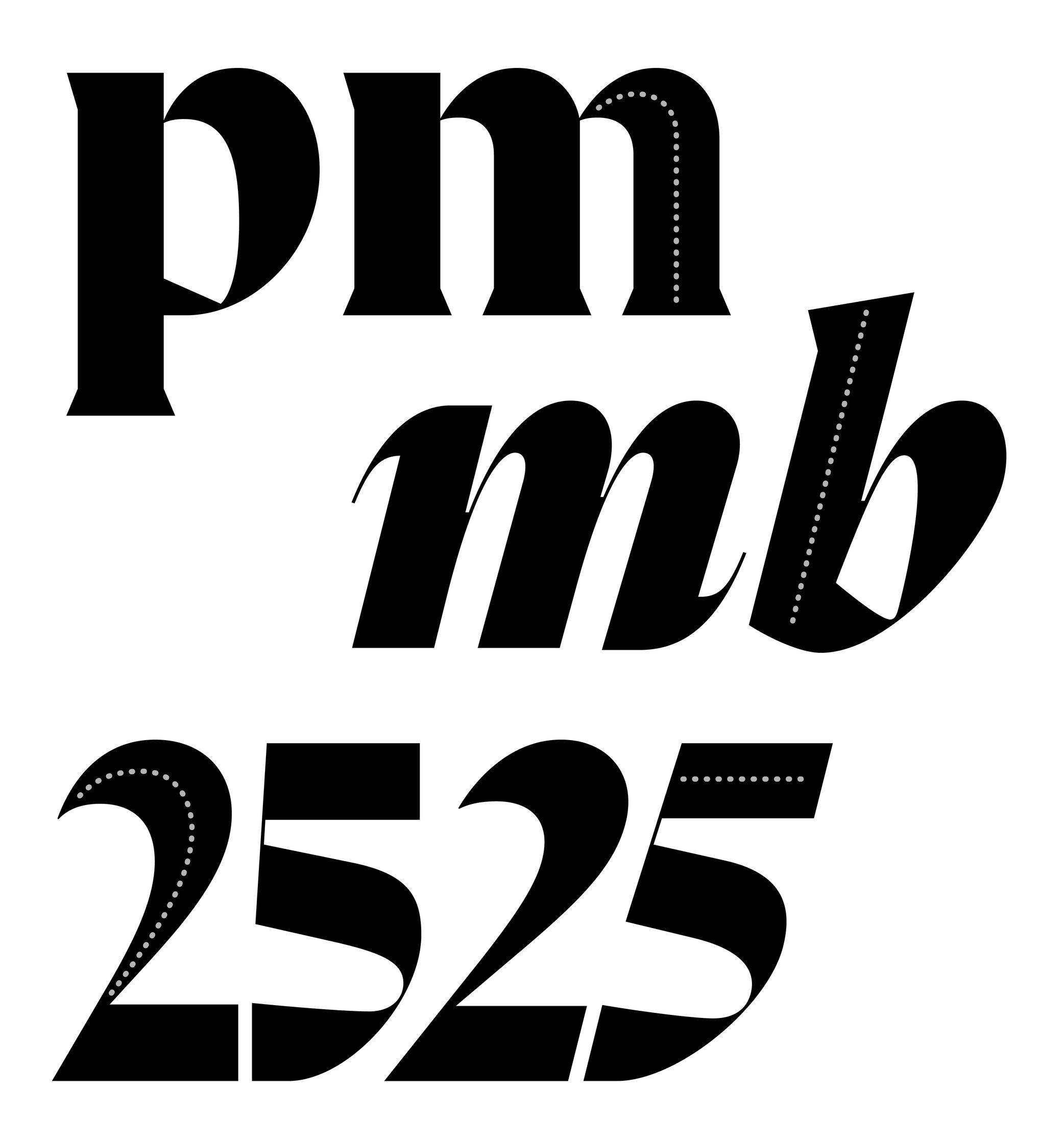
Sponsored by R-Typography . Typeface in use: Flecha , designed by Rui Abreu, 2019.
(Read More)Letters, characters, and other glyphs are written with strokes. Their shapes and writing direction come from how they were traced by hand with the many tools humanity used for writing.
Structure
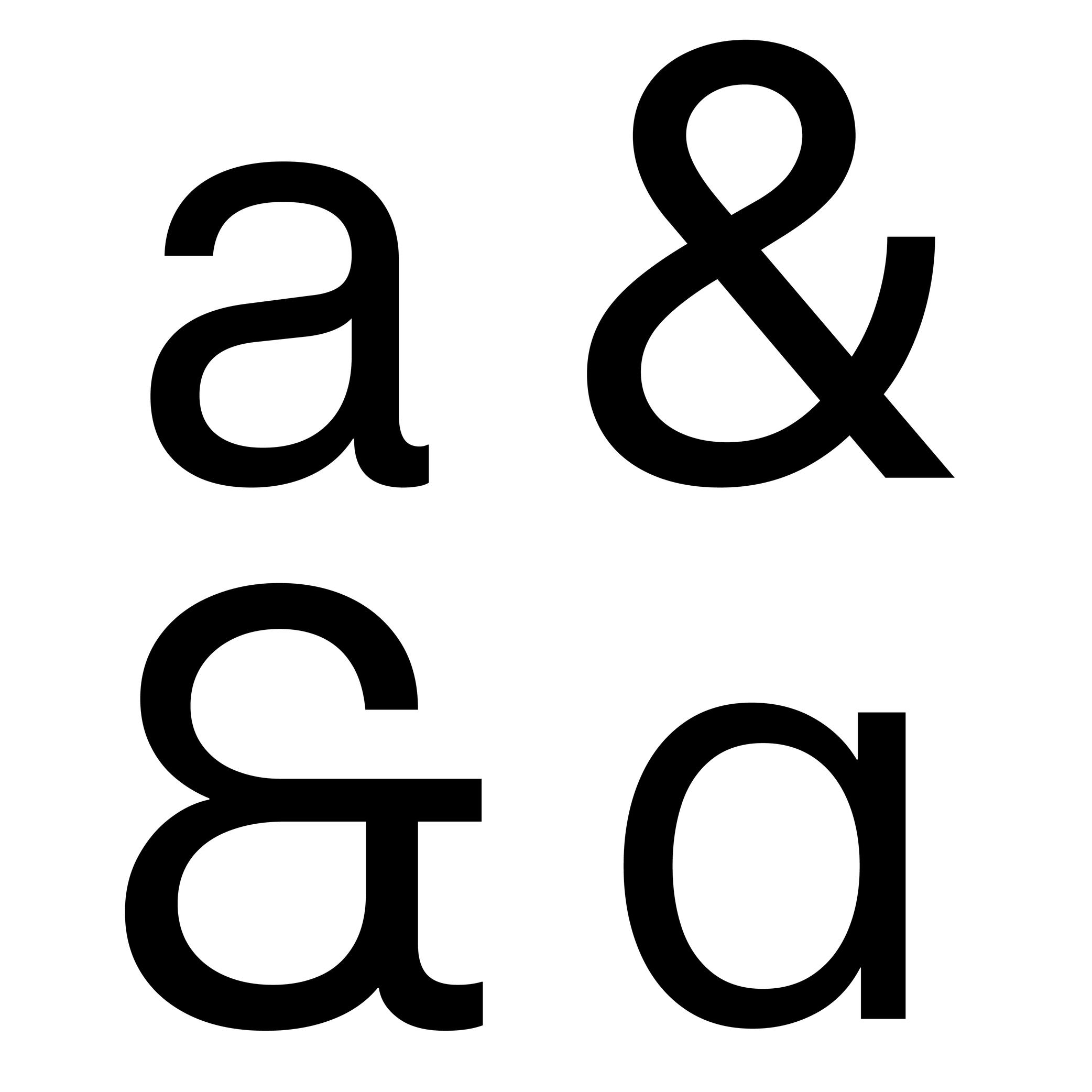
Sponsored by Blaze Type . Typeface in use: Fusion Neue , designed by Matthieu Salvaggio, Tim Vanhille, and Ferdinan Del Fabro, 2024.
(Read More)Every glyph of every writing system follows a specific structure for its parts (positioning of the strokes in relation to each other). People reading words and texts in a given script would recognize the glyphs (letters, characters, symbols, etc.) if their structure follows a convention that is familiar to all of users.
Due to the evolution of each script, the structure can change over time (e.g., Fraktur styles), or have multiple variants (e.g., single and double storey a).
Style
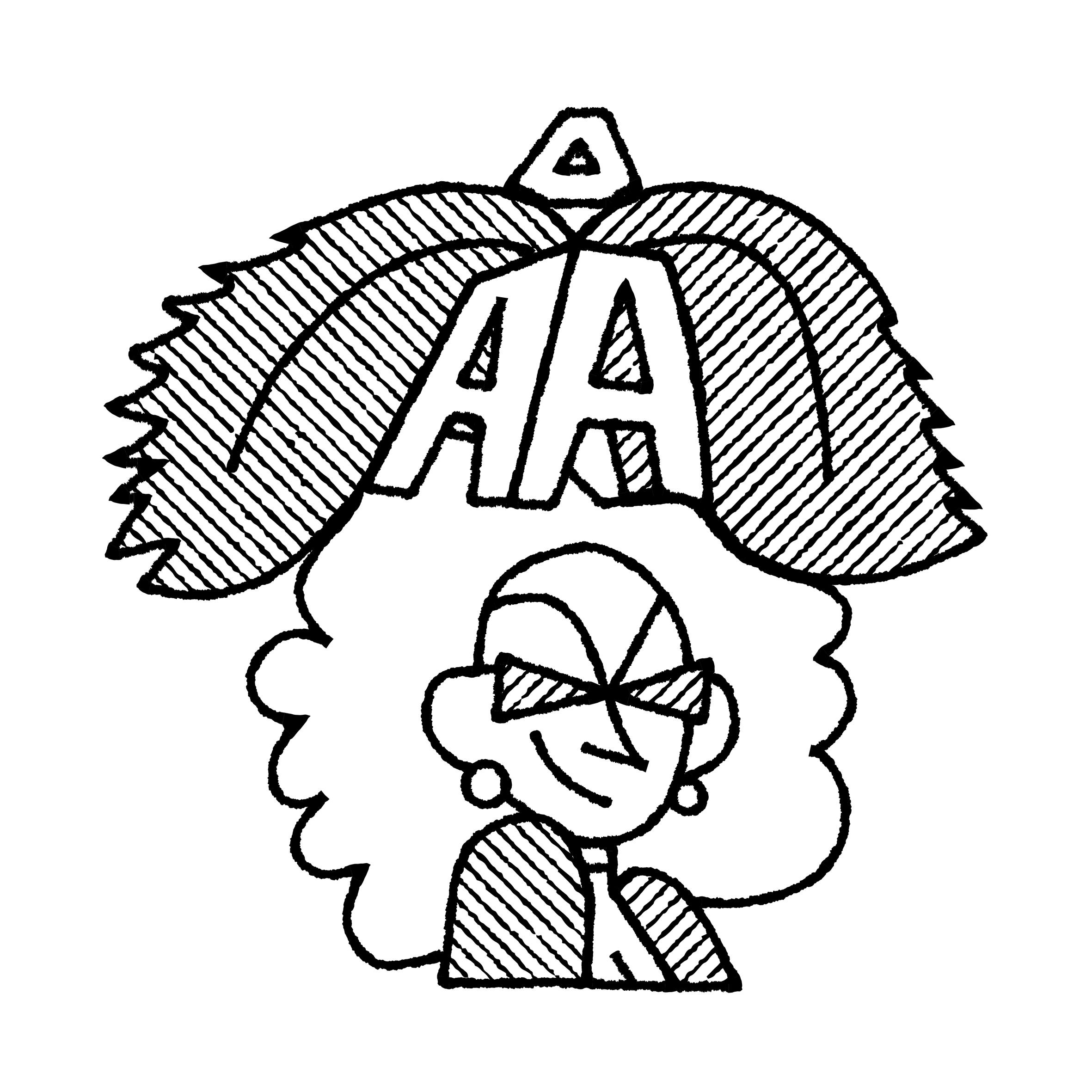
Illustration: Pauline Fourest (Spaghetype ).
(Read More)In any writing system, typefaces exist in an infinite number and variety of styles. They are influenced by many factors, such as technology, tools, necessity, and trends. But some of them are (or can be) grouped into categories for their similarities, into classification systems (sans serif, serif, humanist or geometric, etc.).
In the Latin script, we also identify Roman (or upright) and Italic as two ‘companion’ styles of the same typeface style.
Substitution
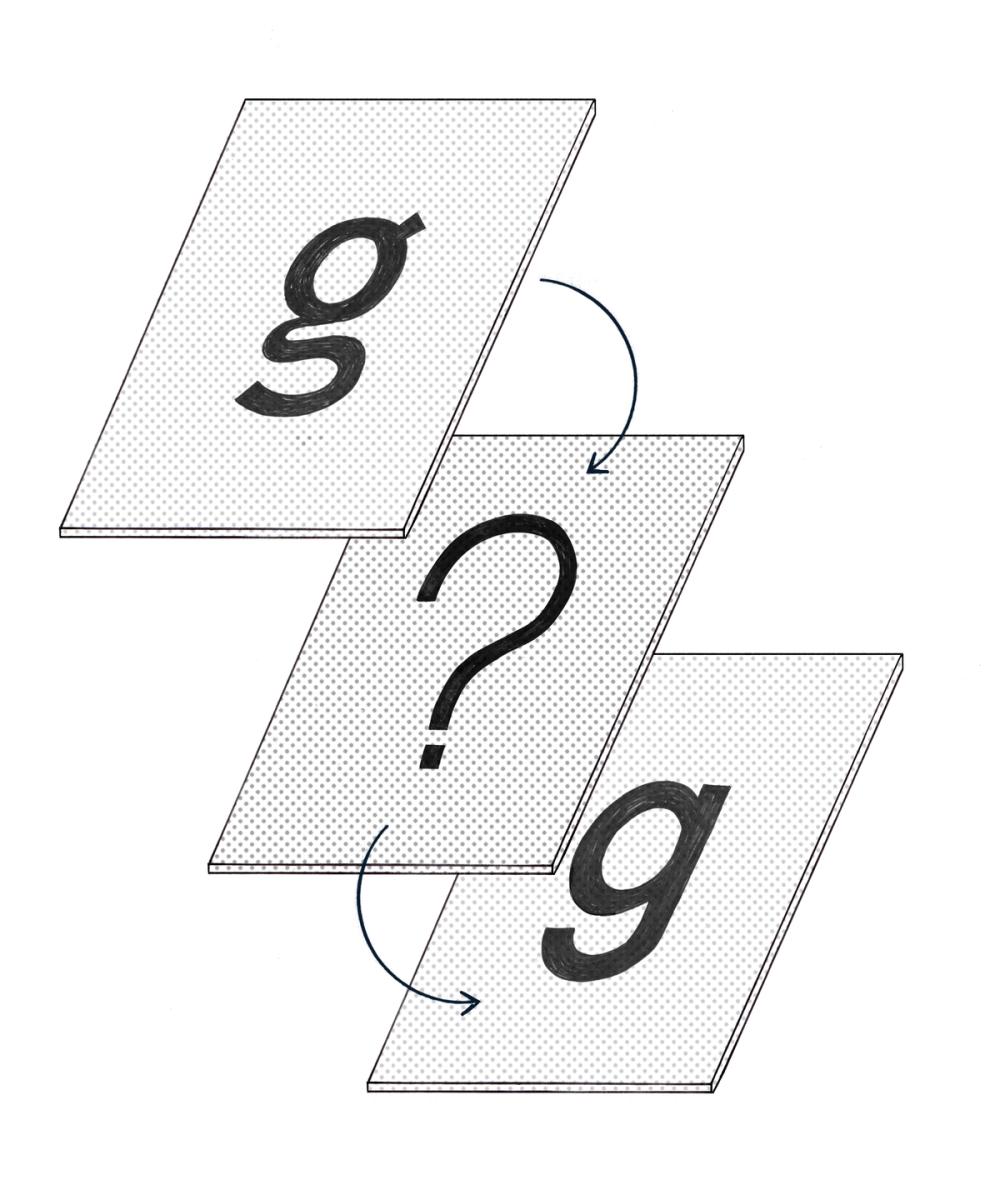
Illustration: Chloe Kendall .
(Read More)Whenever a file contains text using a font that isn’t installed on the user’s device, the system will replace it with another one as a fallback solution. It is a font substitution.
Swash
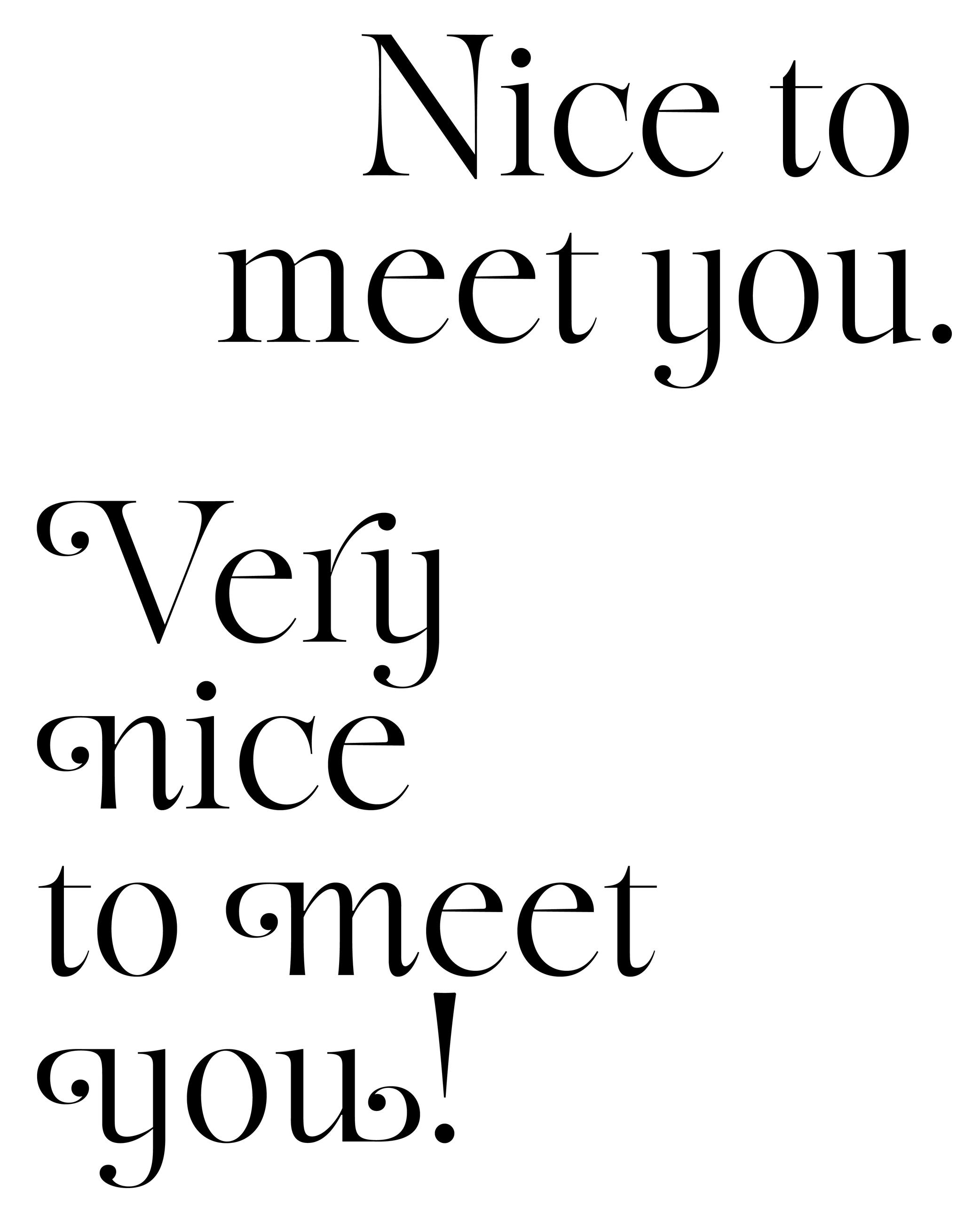
Sponsored by Blaze Type . Typeface in use: Sigurd , designed by Matthieu Salvaggio and Léon Hugues, 2021.
(Read More)Swashes are the elongated extensions of letters, designed with longer strokes than their “usual” construction, most generally as a decorative feature and/or in display style typefaces.
HISTORY
They appeared during the metal type era in the Latin world, when swashed letters served as decorative features to the text. They were also a way to showcase the punch-cutters’ skills, sometimes with incredibly long and elaborate swashes.
Swashes still have the same purpose today in digital typefaces, where “normal” letters are the default ones and swashes can be activated as alternates from the typefaces’ features (if available).Synthetic Font
(Read More)In most text processing tools, it is possible to apply a different style (Bold, Italic, Underlined, or Strike-through).
When those styles don’t exist already in the selected typeface, the system can “automatically” generate a similar effect even if it hasn’t been designed (this is not recommended, but can be handy if needed).
What is created in such a situation is called a synthetic font.
System Font
(Read More)Digital devices need to always have fonts installed in its system, called system fonts, to be able to display textual information on its screen.
Every device manufacturer and/or seller has its own library of system fonts, which support (in the best situations) every script that is eventually used.
Tabular Figures
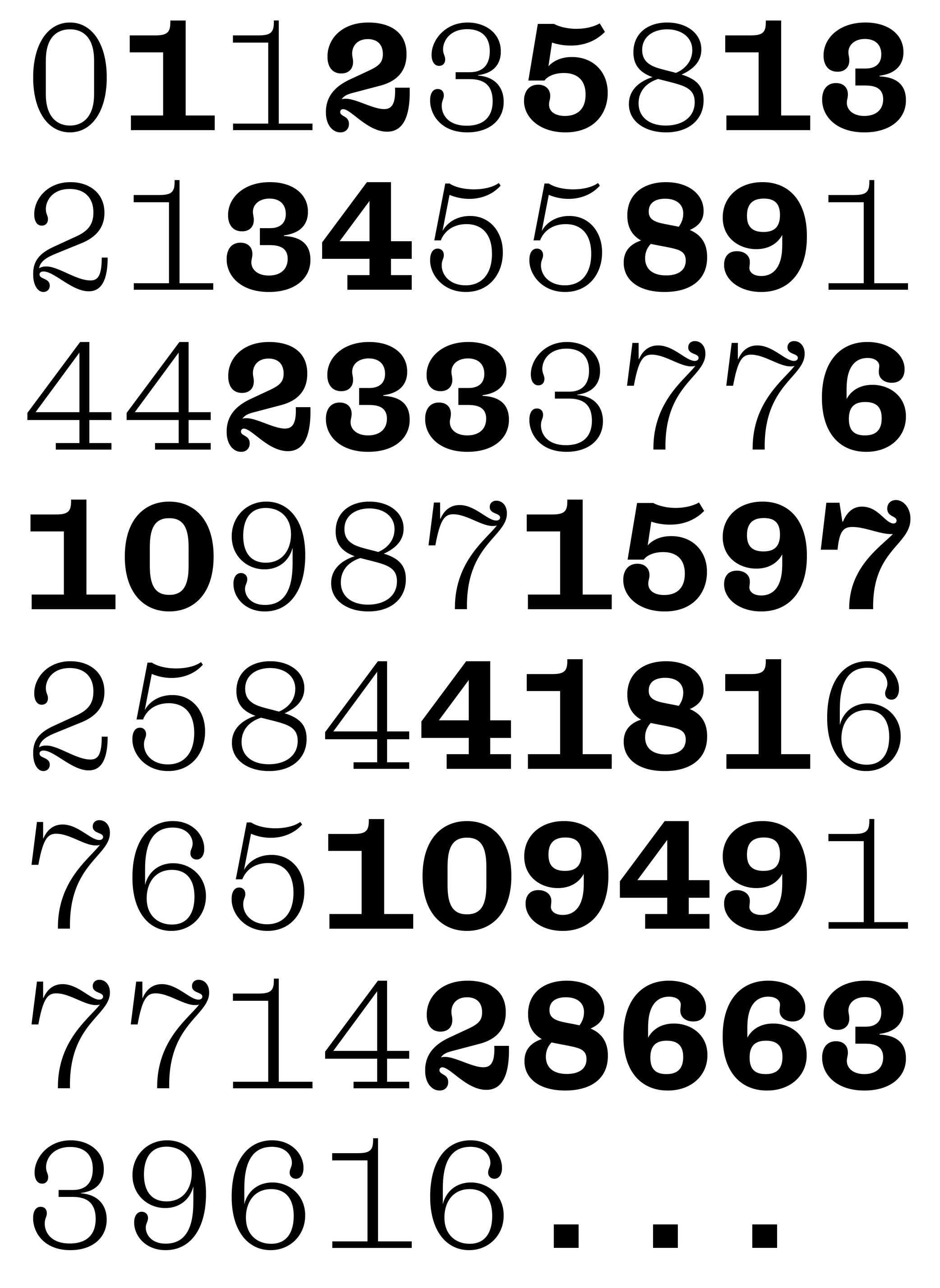
Sponsored by Dinamo . Typeface in use: Daily Slab , designed by Fabian Harb and Michelangelo Nigra, 2024.
(Read More)Tabular figures are designed to fit in the same uniform width frame, making them suitable to be used in tables, and this helps identify the numbers more easily and clearly.
Tail
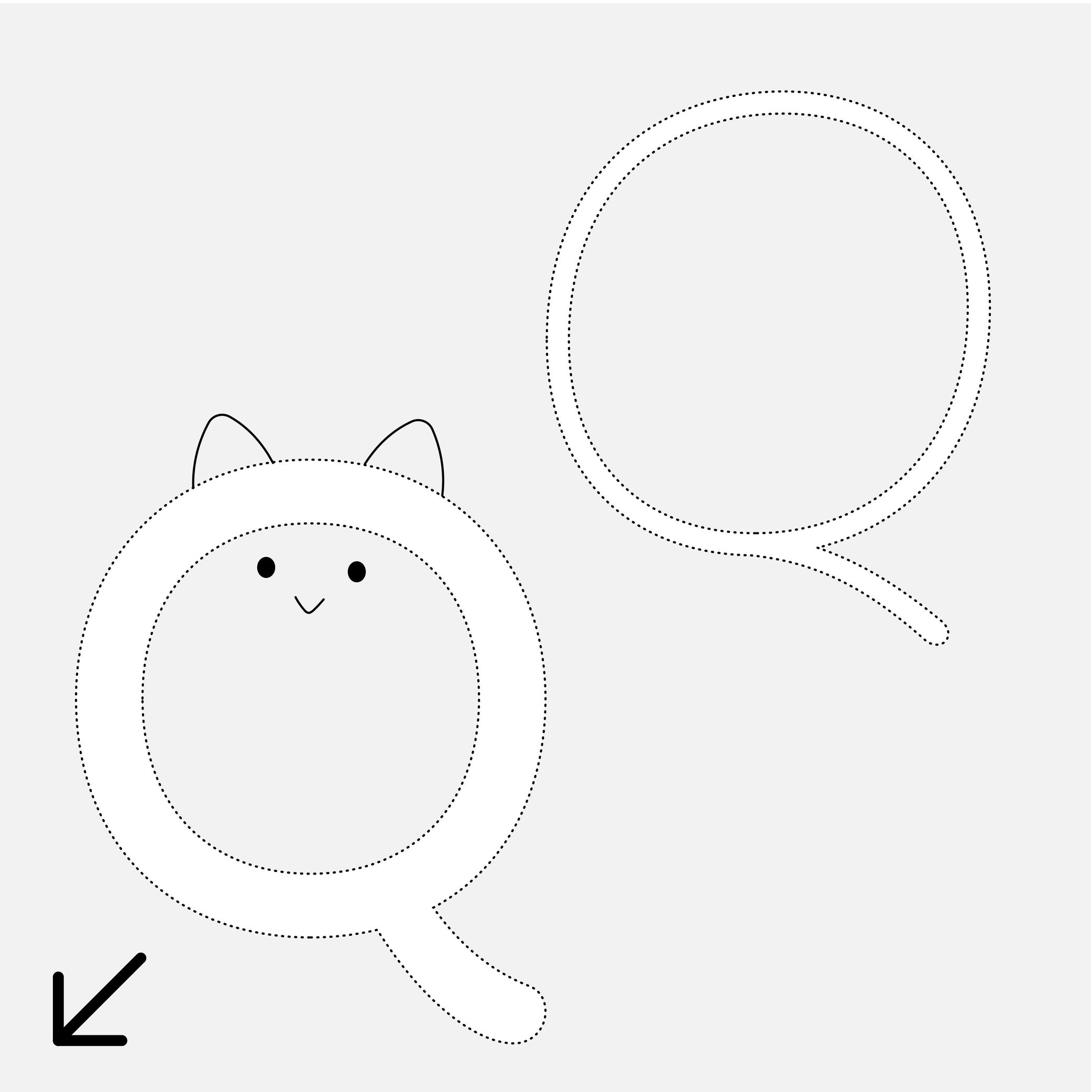
Sponsor Word of Type and feature your typeface in this card with a linked caption. Contact us for more information.
(Read More)Many terms are borrowed from architecture or human and animal anatomy to designate and describe parts of letters and other characters. We even speak of type design anatomy.
In the Latin script, the tail is a terminal part at the bottom of letters like t, y or Q.
Template
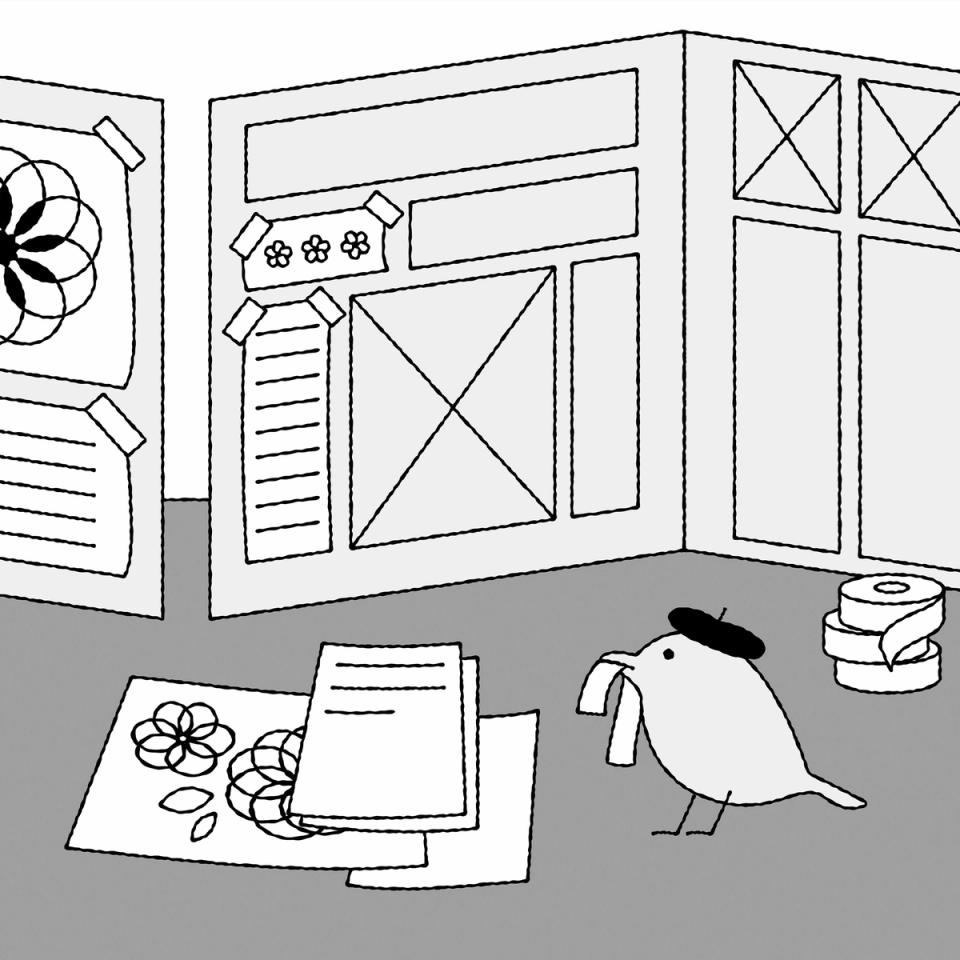
Illustration: Raven Mo .
(Read More)A template serves as a model for typography and typesetting. Like a reference guideline, it helps with the composition of the elements in a page (images, texts, spaces, grids, etc.), printed or on screen, to create a coherent and consistent document with specific design characteristics.
Terminal

Sponsored by DJR . Typeface in use: Job Clarendon , designed by David Jonathan Ross, 2023.
(Read More)Many terms are borrowed from architecture or human and animal anatomy to designate and describe parts of letters and other characters. We even speak of type design anatomy.
The terminal of a character is its very last part, according to its ductus. The shape of the terminal can vary depending on the style of the typeface, with names that ‘feel’ most suited to its shape (drop, ear, serif, etc.).
Thick
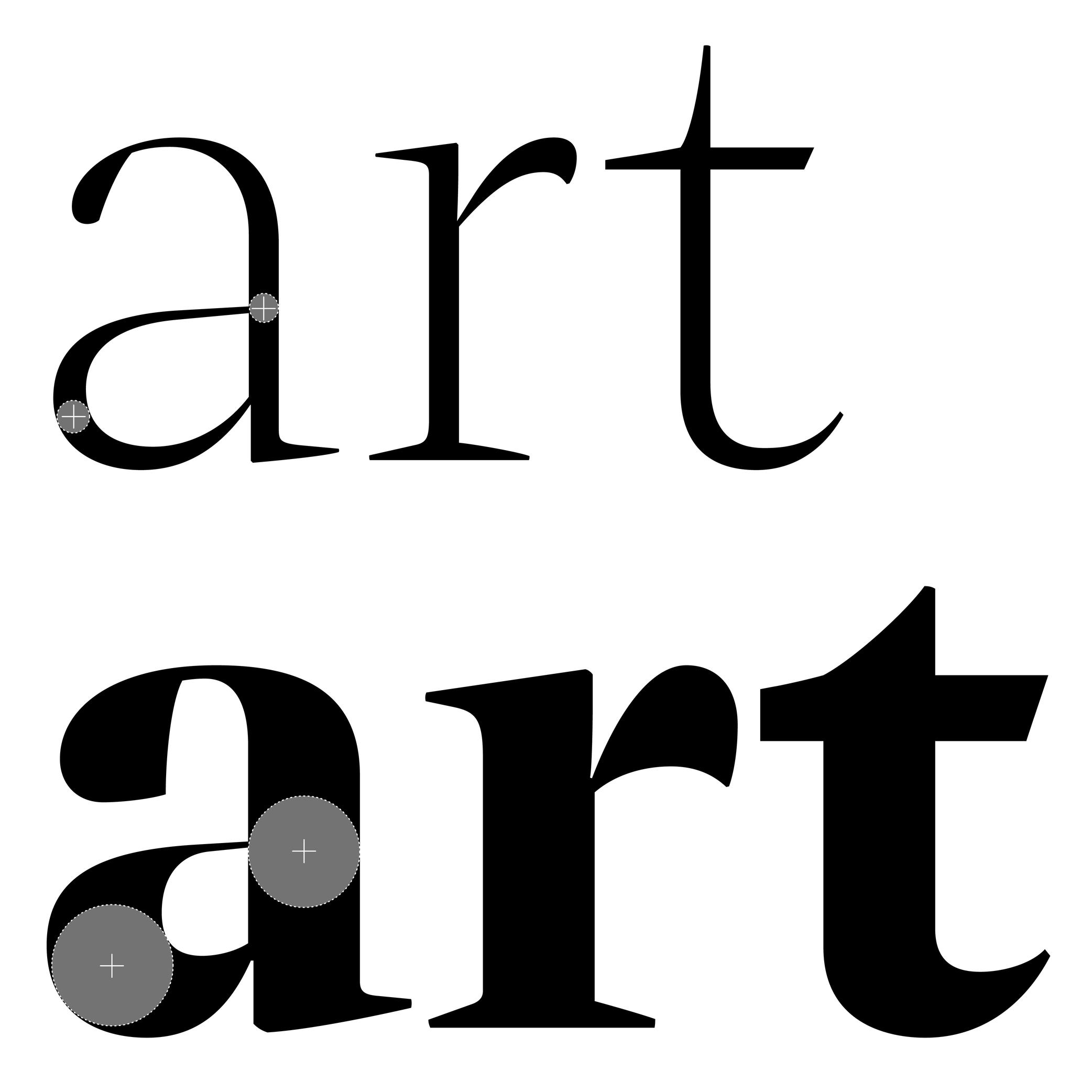 (Read More)
(Read More)The thickest part(s) of a glyph is called the thick. The opposite is the thin, and the relation between thick and thin is called the contrast.
Thin
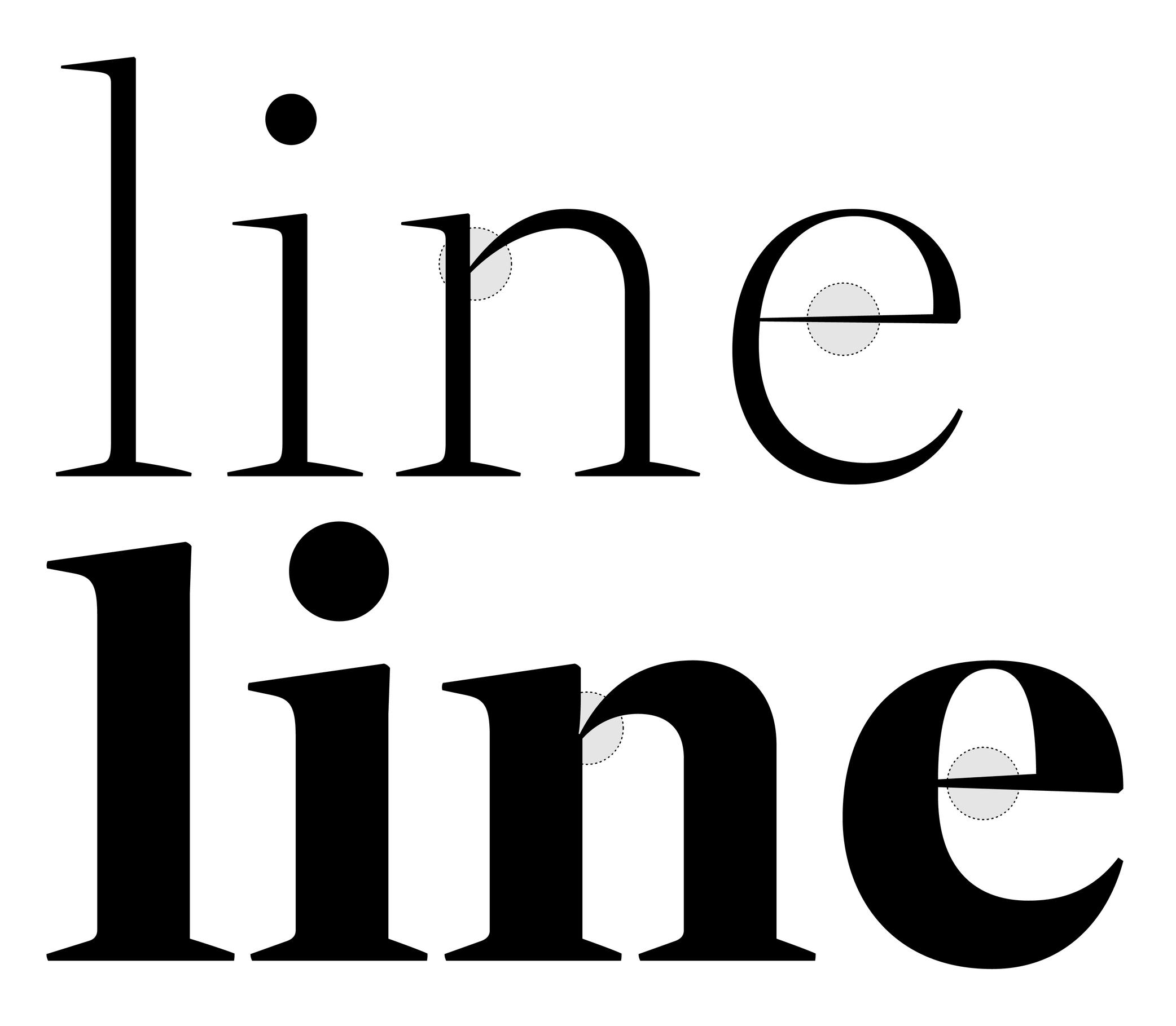 (Read More)
(Read More)The thinnest part(s) of a glyph is called the thin. The opposite is the thick, and the relation between thick and thin is called the contrast.
Tofu
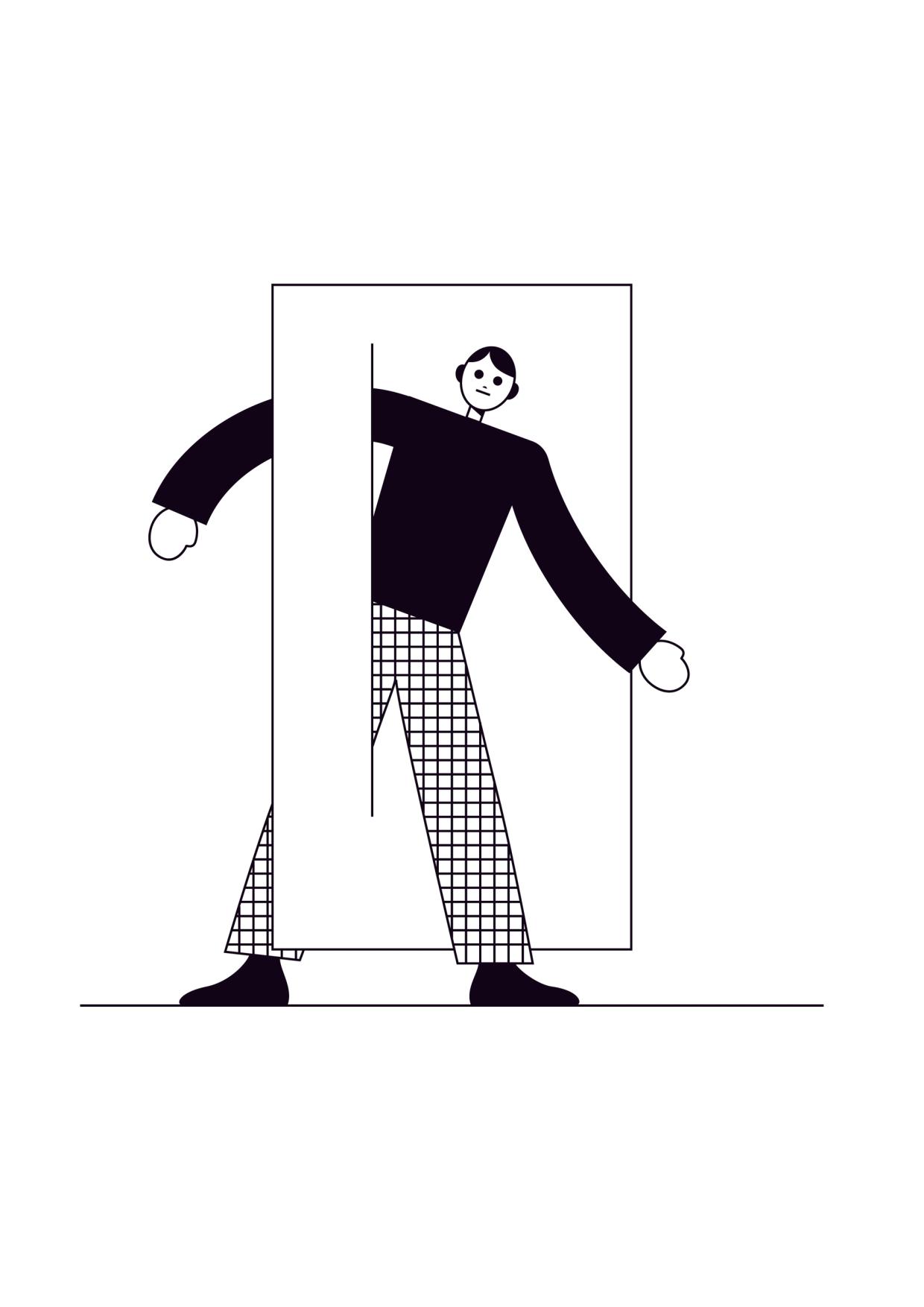
Illustration: James Graham .
(Read More)Suppose a text uses a script that is not supported by any font available in a device’s system or contains one or more glyphs that don’t exist in any fonts that are already installed. In that case, the reader will see the “unrecognized” glyph replaced by a tofu.
They are generally displayed as rectangles filled with a cross.Tracking
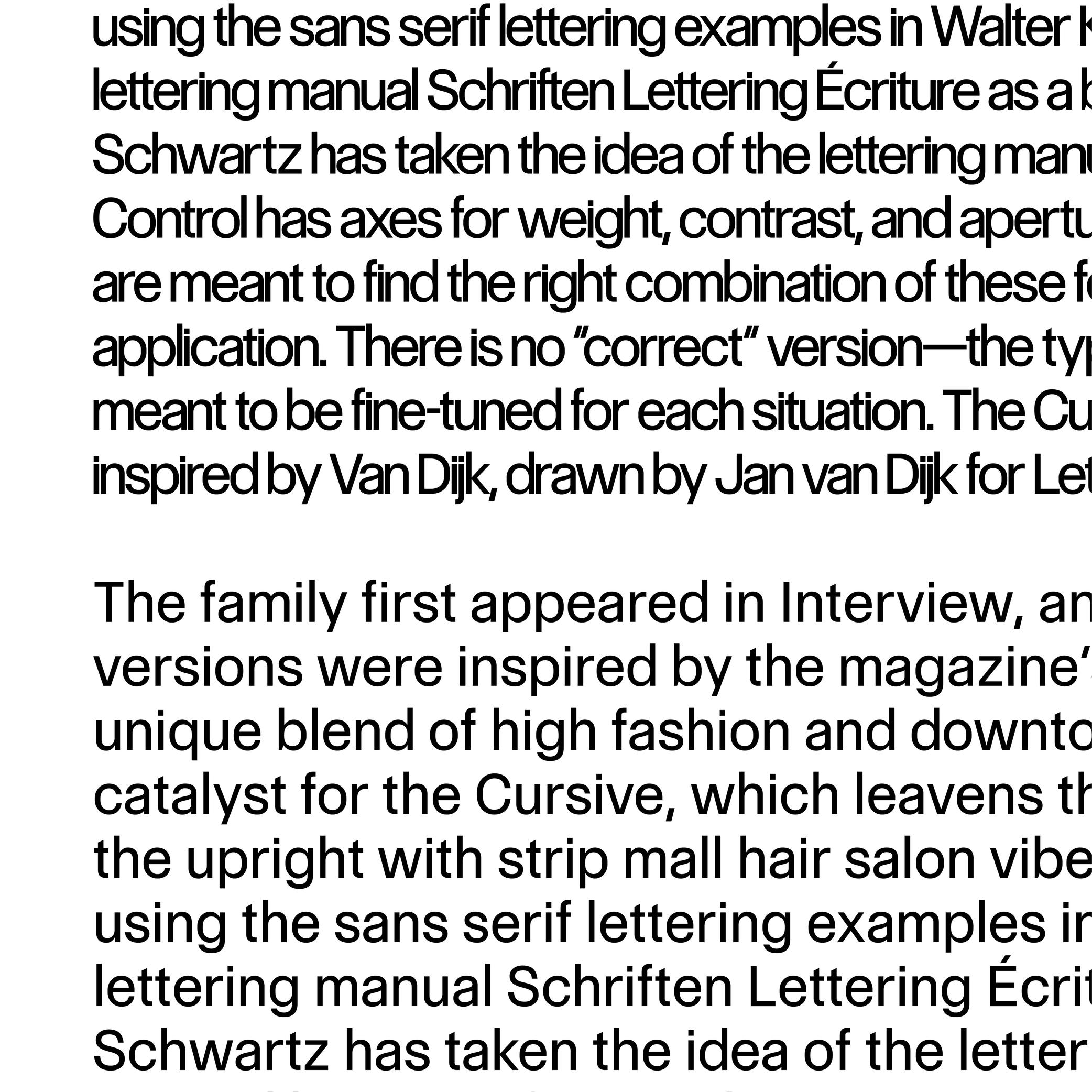
Sponsored by Commercial Type . Typeface in use: Control , designed by Christian Schwartz and Miguel Reyes, with contributions by Hrvoje Živčić, after Walter Käch and Jan Van Dijk, 2024.
(Read More)Fonts have spacing values for all glyphs that are defined by its designer.
If glyphs are too loose or too close to the needs (or taste) of the user, the spacing can be modified in most application tools for texts. It is called “to adjust the tracking.”Trial
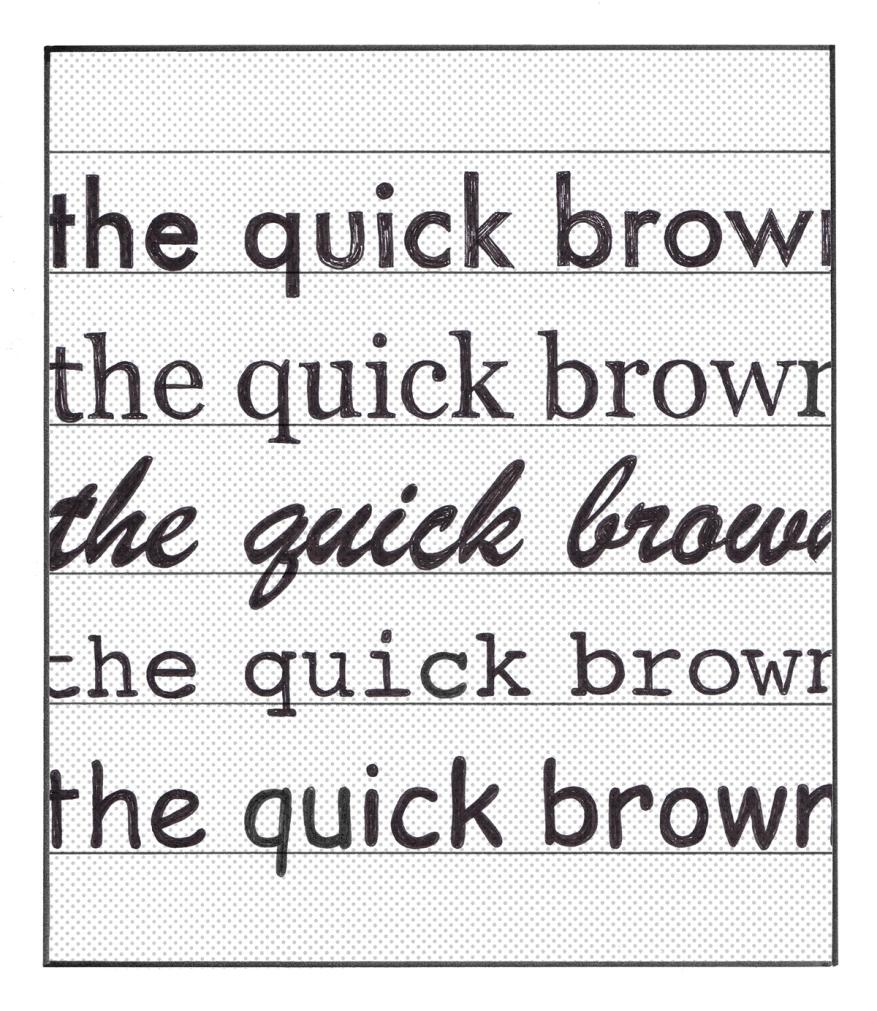
Illustration: Chloe Kendall .
(Read More)Most type foundries and other font distributors offer today the possibility to get a trial of a typeface, which allows the user to try it for free before deciding to buy its license or not. Their conditions of usage are limited to trying the typeface only, listed in a specific trial EULA. In general, foundries share their trials with a limited amount of glyphs and/or features, enough to give an idea of how the typeface looks in a given situation.
TrueType (format)
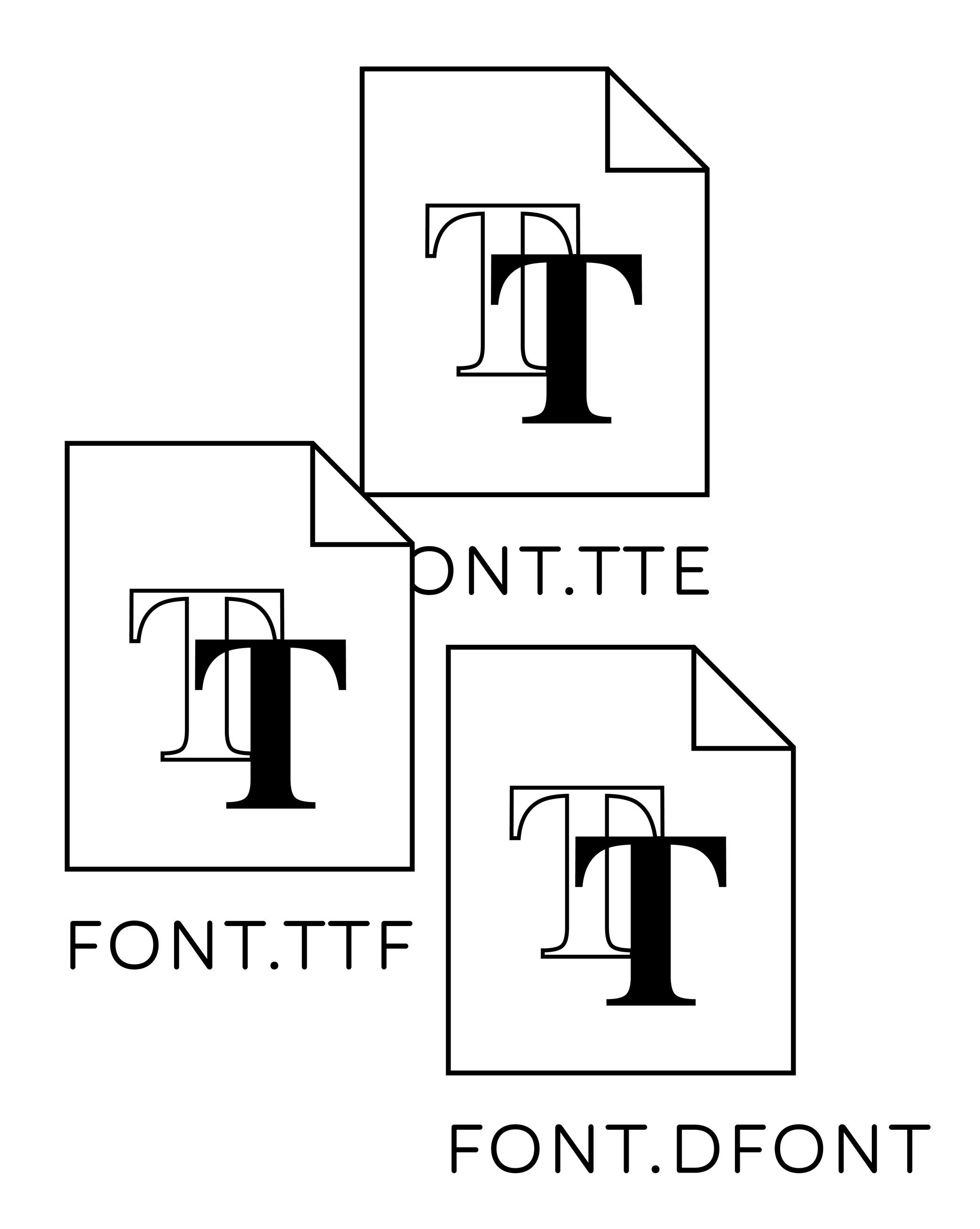
Illustration: Words of Type.
(Read More)TrueType is a digital font file format created by Apple in the 1990s, used for fonts installed on Mac OS and Microsoft Windows systems. It was developed a few years after the Postscript format was introduced by Adobe. TrueType is based on quadratic curves that are processed, calculated and rendered faster than the cubic curves used by Postscript format. Unlike Postscript fonts, which require the installation of every file one font may contain, installing a single TrueType font is enough to be able to use it.
Type Foundry
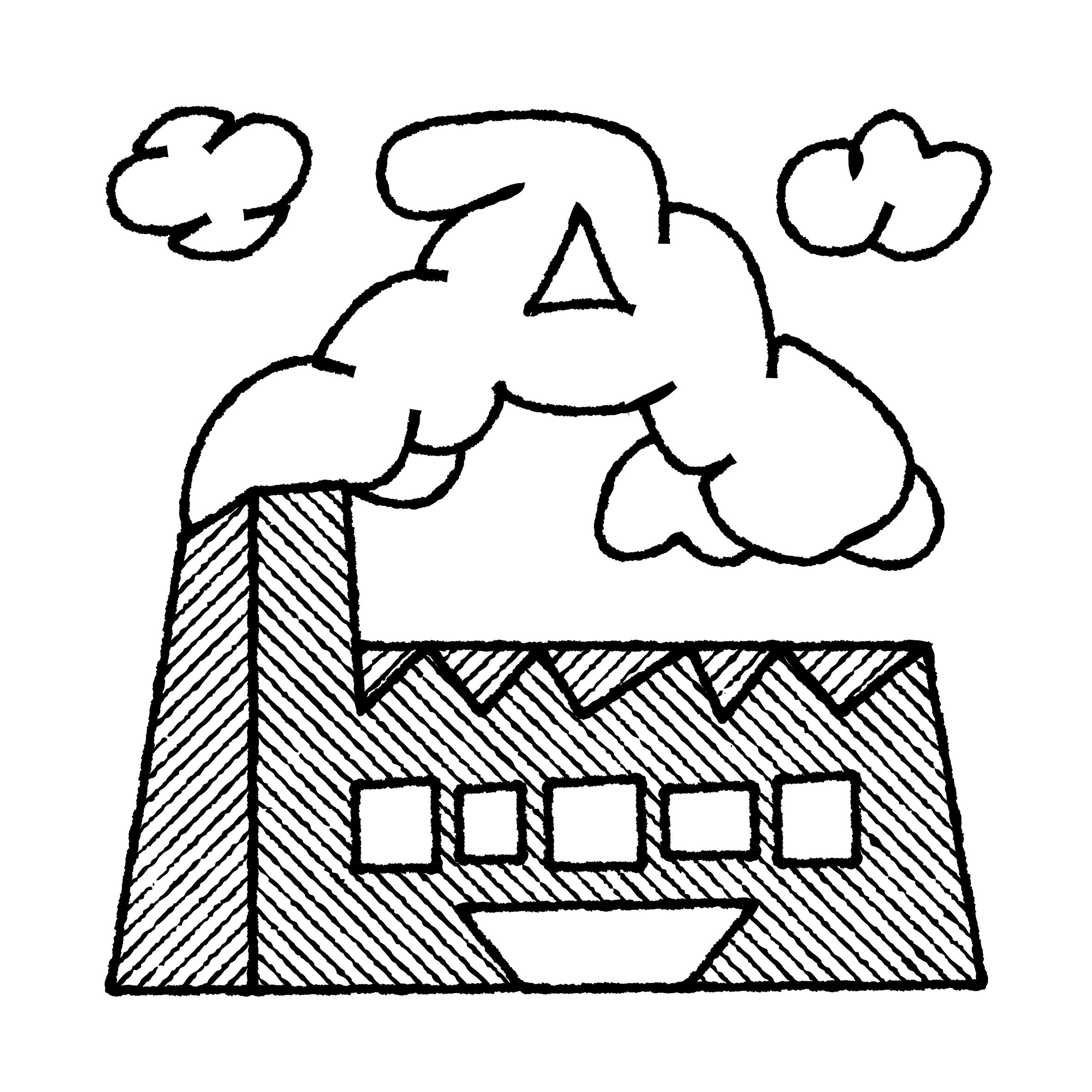
Illustration: Pauline Fourest (Spaghetype ).
(Read More)A type foundry is a design studio that produces and/or publishes retail typefaces, designs custom typefaces or does various activities related to type design (logotype designs, consultancy, etc.).
We inherited the term foundry from companies that produced fonts of metal type for printers. Back then, a font was a set of movable metal pieces of type in one size. Those metal pieces (one per glyph) were produced by melting an alloy of lead and other metals, which would be poured into a mold to produce multiple copies of one letterform or other character. “Fondre” is the French verb for “to melt.”
Typeface
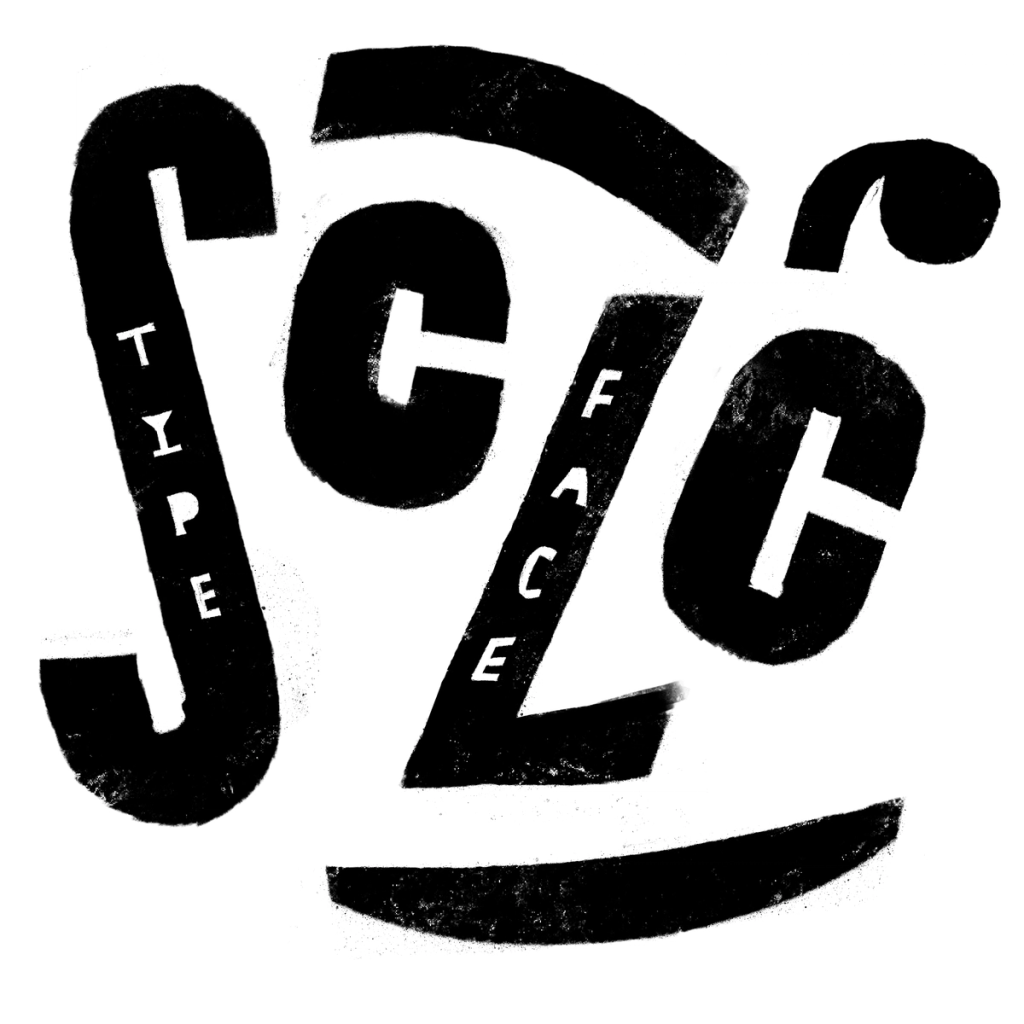
Illustration: Erik van Blokland .
(Read More)A typeface is a set of glyphs designed with a particular intention (and/or style).
A typeface family can gather multiple styles with their individual particularity (weight, width, contrast, etc.) but keep common traits specific to the same group.
Not to confuse with font or typography.
Typeface Design

Illustration: Jay Cover .
(Read More)Typeface Design (or type design for short) is the practice of designing typefaces.
It is about designing every part and aspect of a typeface, from drawing the shapes of the glyphs (letters, characters, figures, symbols, and so on) to setting the specifications such as spacing, kerning, and hinting. The person doing type design is called a type designer.
Not to be confused with typography.
Typography
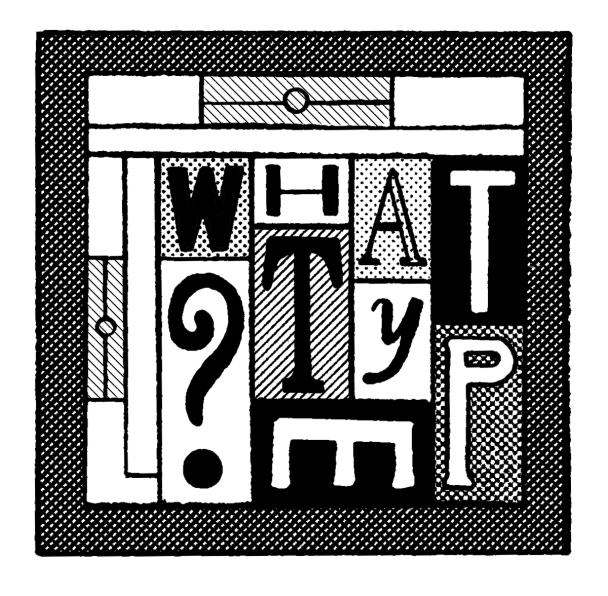
Illustration: Jay Cover .
(Read More)Typography (or typesetting) is the practice of assembling text elements in a design composition by defining multiple aspects such as the ratio between text columns and white spaces, choosing and using typefaces, setting their styles and sizes for all categories of texts, leading, justification style, and hyphenation, etc.
The person practicing typography is called a typographer.
Not to be confused with Typeface Design.
Underscore
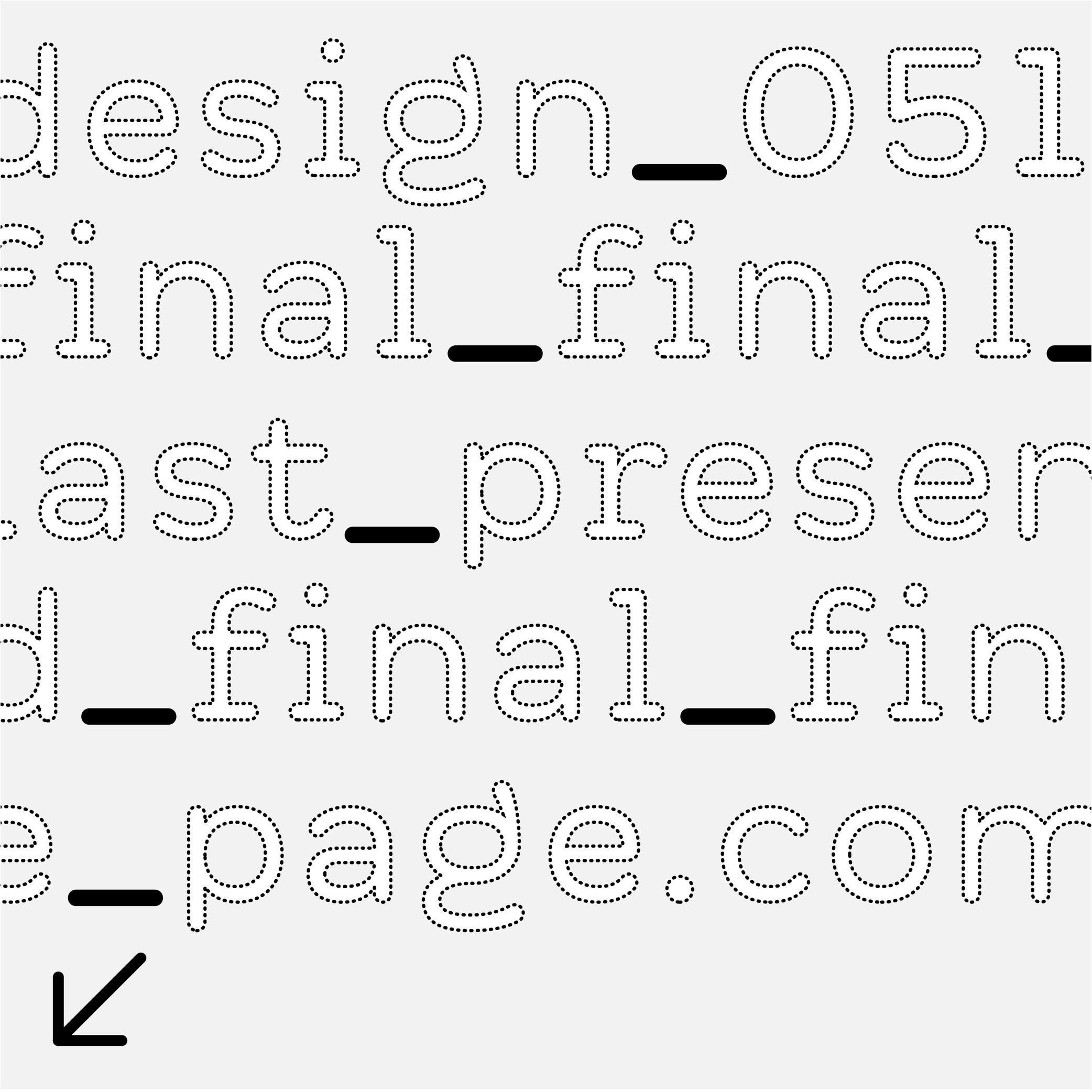
Sponsor Word of Type and feature your typeface in this card with a linked caption. Contact us for more information.
(Read More)FUNCTION
The underscore is essentially used today as a marker to separate words whenever spaces are not valid (URLs or email addresses, file names, etc.).
HISTORY
In European book publishing conventions, to underscore a word or sentence in a manuscript was meant to inform the typographer and/or printer to set it in italic (or in roman) style.
The symbol has been kept on typewriters and our contemporary keyboards for various uses in different languages, as an individual sign instead of being a mark combined with other glyphs.
DESIGN
The underscore is a dash-like glyph placed below the baseline and has (usually) the length of the en dash.
TYPOGRAPHIC RULES
There is no space on both sides of the underscore.
NOT TO BE CONFUSED
Commonly, we call this glyph the underscore. But, its ‘proper’ name should be the low line (as it is called in the Unicode naming with its correct code), because the underscore (U+0332) is a combining diacritic symbol used in multiple African and Native American languages.
Unicode
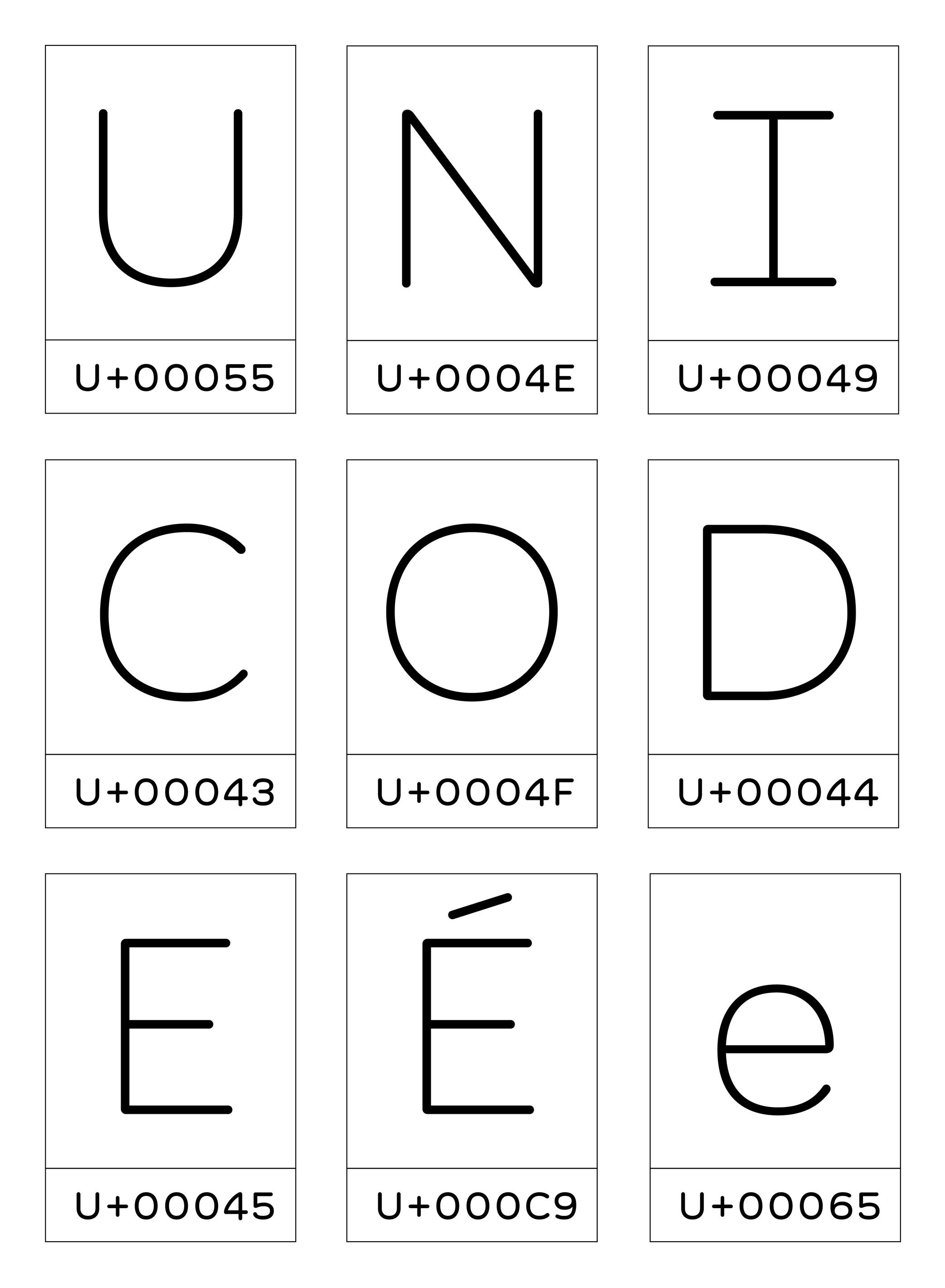
Illustration: Words of Type. Typeface in use: Knowledge Round, designed by Lisa Huang, 2024.
(Read More)Unicode is an international coding norm to identify signs and symbols used in digital devices worldwide.
Created by a non-profit organization called the Unicode Standard Consortium with a team of international members, the Unicode attributes a code to each glyph of any written language. These codes are integrated into the systems of digital devices to ensure a stable information exchange.
Unit
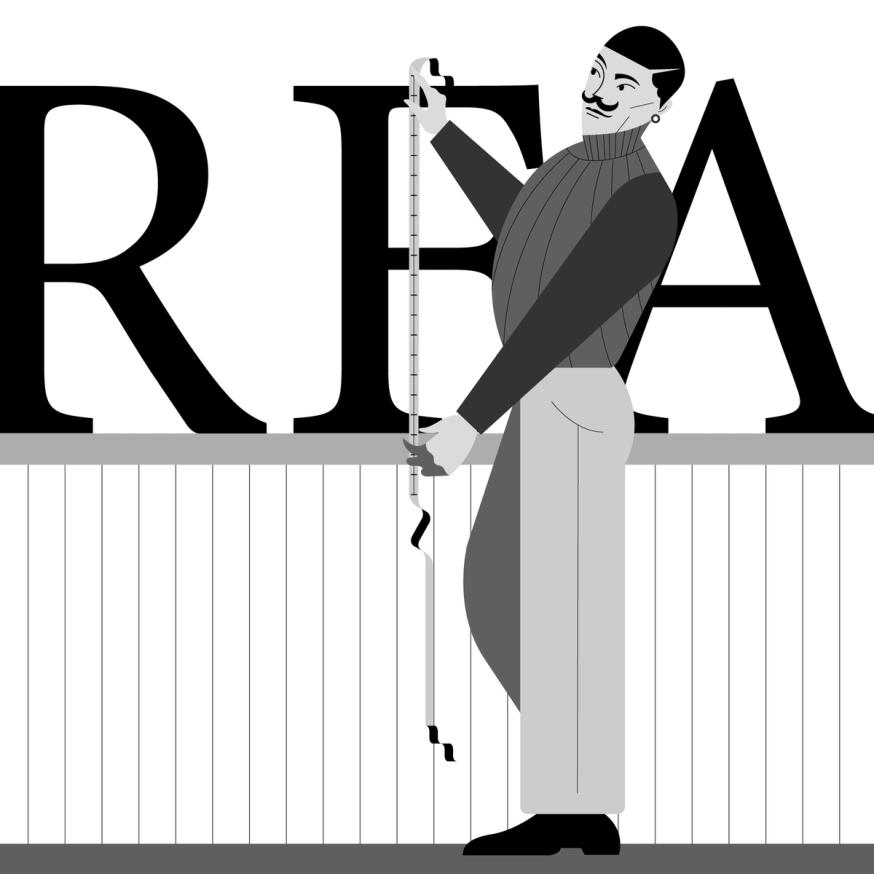
Illustration: Jonny Wan .
(Read More)Measuring the sizes of fonts is made with a specific type of unit called points or pts.
Multiple types of units with various sizes and names have been used over the years and across the globe, from the Didot point to Pica points to inches and DTP points (and these are for Latin script only).
Uniwidth
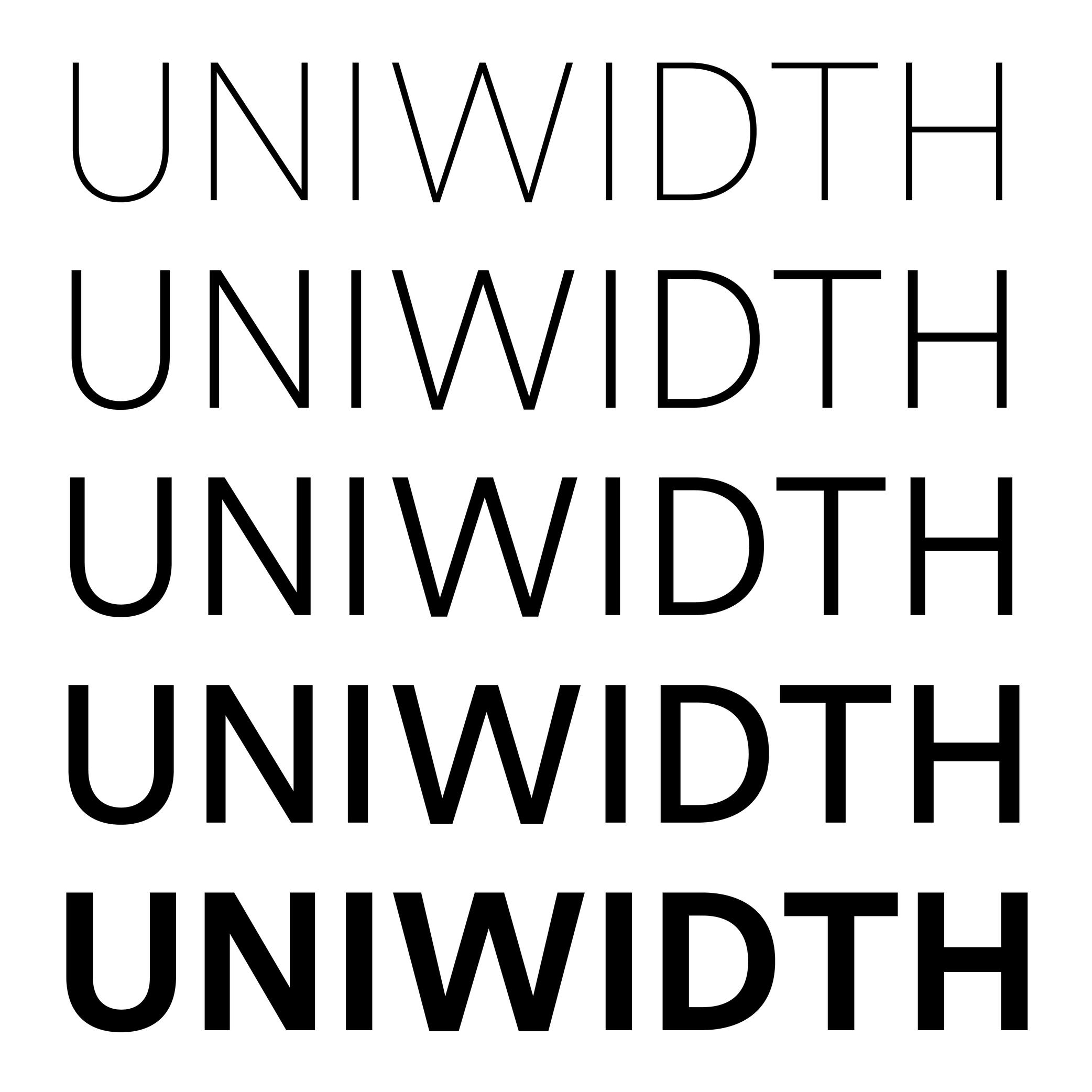
Sponsored by Frere-Jones Type . Typefaces in use: Retina , designed by Tobias Frere-Jones, 2016.
(Read More)Also called Multiplexed or Duplexed.
The term of Uniwidth has been brought up by Armenian type designer and teacher Hrant Papazian.
In type design, the width and/or spacing values of a glyph change depending on the weight of the style to ensure a visual balance. However, some typefaces are designed as uniwidth, which means that the same glyph keeps the same width across all weights and styles of the family.
This feature facilitates digital typesetting, especially when there is an interaction between the user/viewer and the text on a digital screen. For example, words or parts of text can switch to a different style without modifying the typesetting of the block while hovering or clicking.
Uppercase
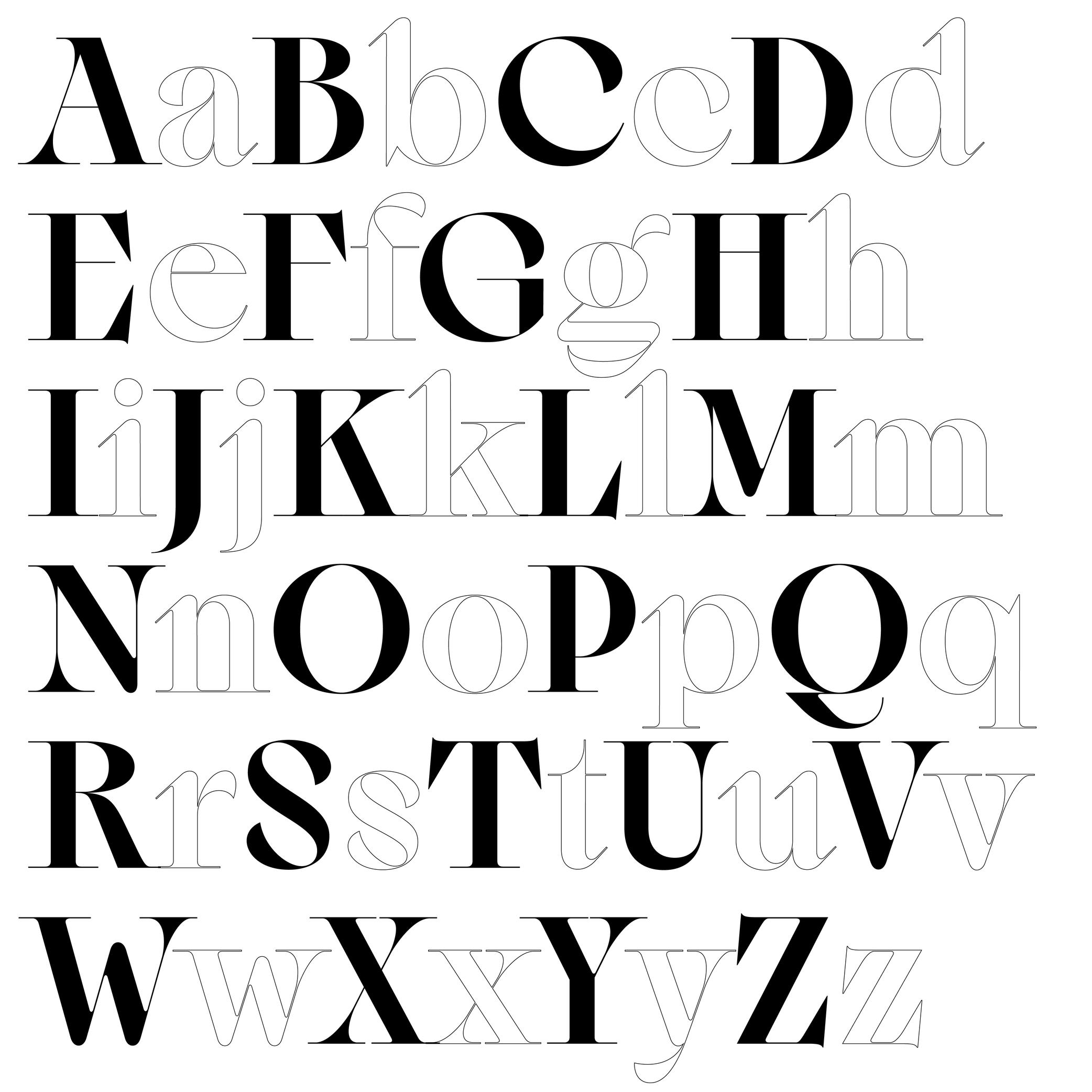
Sponsored by Blaze Type . Typeface in use: Sagittaire , designed by Valerio Monopoli, 2023.
(Read More)Uppercase (or capital letters) are the taller and larger variants of alphabetical letters, as opposed to lowercase letters (or minuscule).
Linguistically speaking, a capital is not to be confused with a majuscule, which is a capital letter with the specific function of being used at the beginning of a sentence or a word.
HISTORY
Capital letterforms derive from Phoenician and Greek alphabets when the Roman Empire started its influence over Europe around the 1st century.
During the Roman Empire, they were painted and/or carved in stone at large sizes for inscriptions on monuments, buildings, and tombstones (called Capitalis Monumentalis).
Through time, with the need to write faster, some shapes evolved, resulting in minuscule (lowercase) letters. But that didn’t make capital letters disappear. On the contrary, they kept coexisting with minuscules. Each has its own specific functions and looks very different, so using both allows a more comfortable reading experience.
The word ending with -case is a legacy from metal type printing when letters (or types) were sorted by categories into cases (one per glyph), themselves into drawers (one per font). Capitals were placed in the cases of the upper section of the drawers, minuscules were on the lower part.
Not to be confused with a majuscule letter.
Variable Font

Sponsored by Letterror . Typeface in use: (“Style”) Very Bauble , (“Weight”) Limited Grotesque , (“Width”) Principia . Designed by Erik van Blokland.
(Read More)DESCRIPTION
A Variable Font file contains data of an entire typeface family and allows an unlimited amount of style variations defined by the designer.
HISTORY
Variable Fonts started with a technology created by Apple (TrueType GX for QuickDraw GX), from which Adobe, Google, and Microsoft joined in to develop it into OpenType Variable Fonts, announced in 2016. Today, Variable fonts are the go-to font format (for typefaces available in such format) for digital media, especially when there are animated texts.
BENEFITS
Unlike static fonts (in which one font file contains the data of a single style), one Variable Font file contains as many variations as possible between two or more master files of a typeface. Rather than searching for the right file for the right style within a typeface family, the user can install one Variable Font file of a typeface, adjust the style to what is desired and have the design application automatically generate the result or have an optimized variation to the environment whenever it changes (responsive to the screen format).
Variation Axis
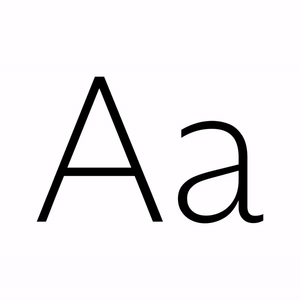 (Read More)
(Read More)Variable Fonts technology allows users to navigate between two or more specific styles (called masters or sources) with high precision and much smaller font file sizes than several static fonts.
They do so on what is called a variation axis, which allows a continuous interpolation of outlines between compatible sources. It is a trajectory between different states of a given shape.
For example, the weight axis would shift points to adjust the stem thickness, allowing a transition from Thin to Bold.FONT ENGINEERING ADVICE
The OpenType Specification defines 5 standard axes: weight, width, optical size, italic, and slant — italic being a link between two styles rather than an actual variation axis. These guidelines serve as reference for how these axes should be implemented.
The variations axes are defined in several font tables: the avar, the fvar and the STAT tables.
Vector
(Read More)Vectors are digital contours drawn using vector graphics based on Bézier curve technology.
Type design applications rely on the same technology to create the shapes of glyphs.
Waist
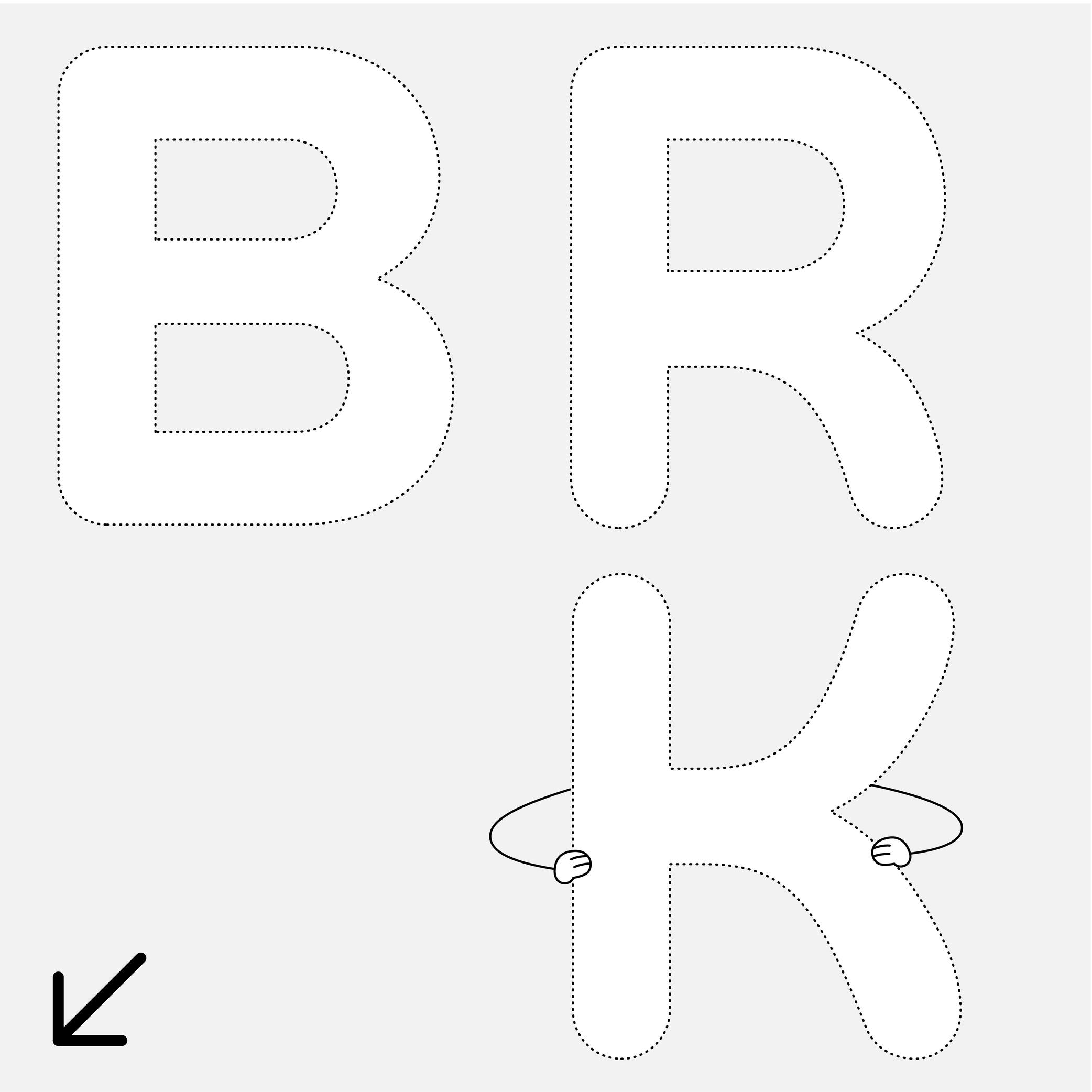
Sponsor Word of Type and feature your typeface in this card with a linked caption. Contact us for more information.
(Read More)Many terms are borrowed from architecture or human and animal anatomy to designate and describe parts of letters and other characters. We even speak of type design anatomy.
In the Latin script, the waist is the middle part of letters like B or R, where the stroke’s connection shapes a narrower part.
Web Font
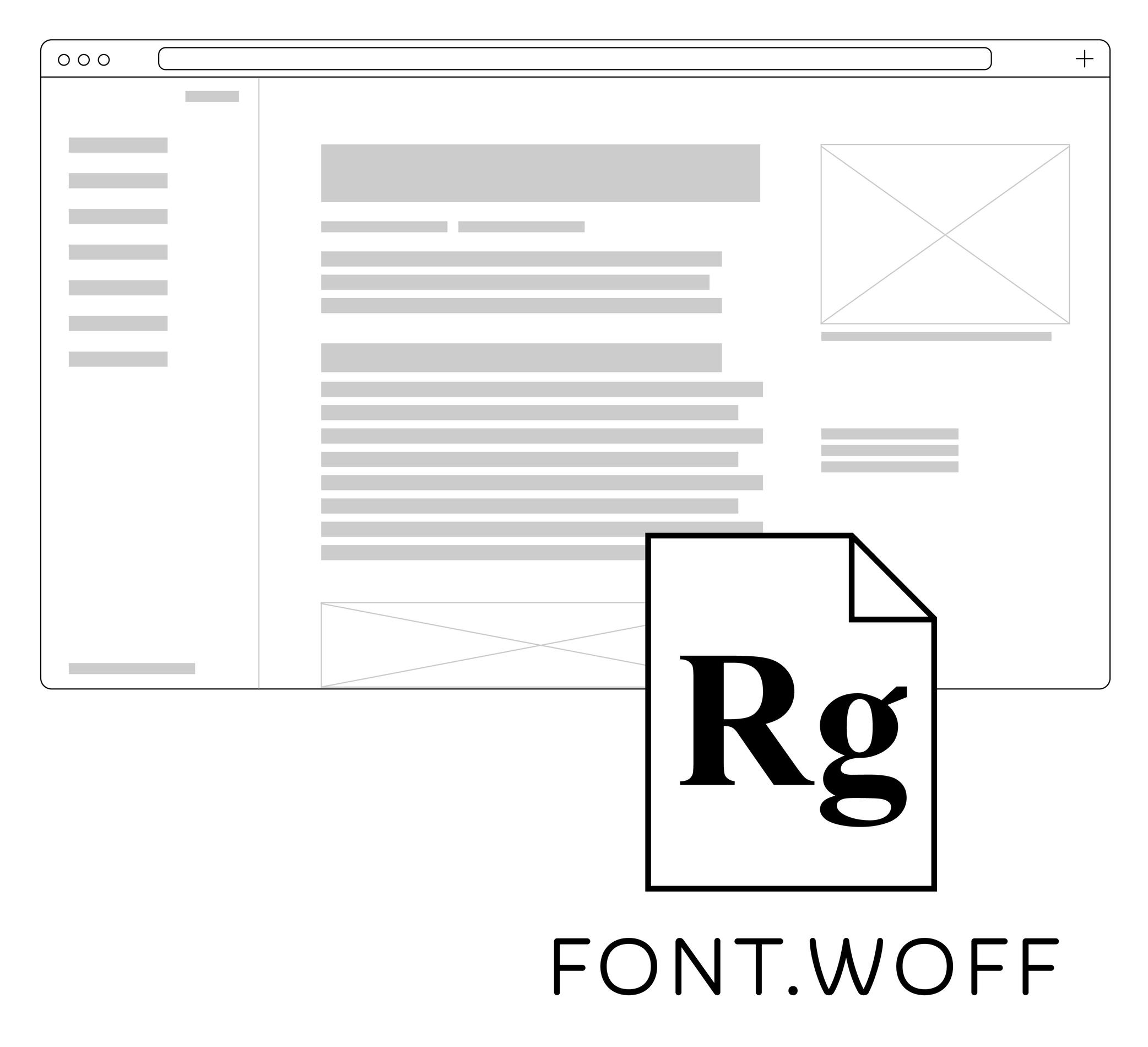
Illustration: Words of Type. Typeface in use: Knowledge Round, designed by Lisa Huang, 2024.
(Read More)Web fonts are font files used in websites. There are specific formats supported by web browsers, in which the web fonts are loaded as part of the website’s content.
Today, the most common web font formats are WOFF (for Web Open Font Format, extension: .woff) and WOFF2 (.woff2).
Weight
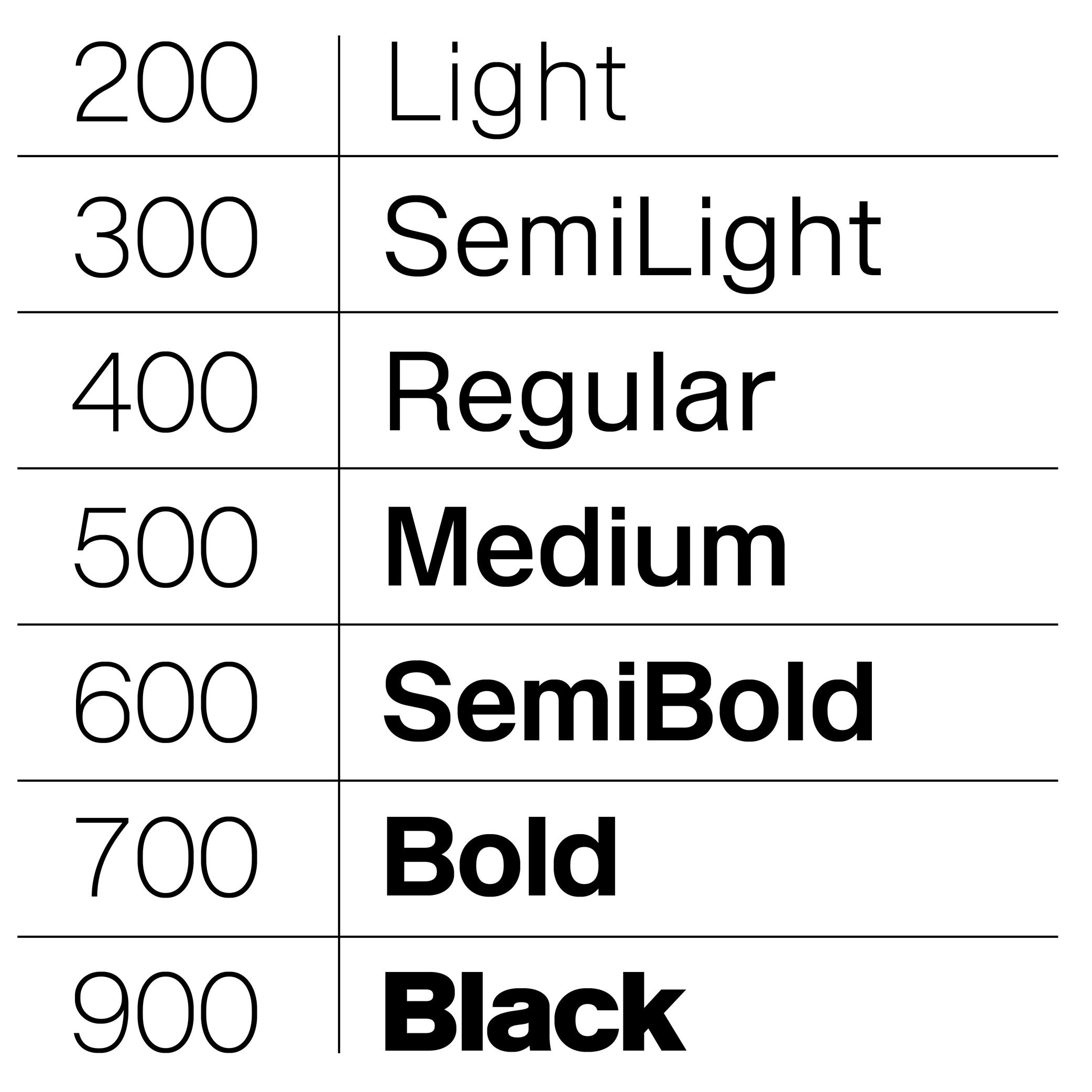
Sponsored by Production Type . Typeface in use: Enduro , designed by Emmanuel Besse, 2020.
(Read More)A typeface can have various degrees of stroke thickness which has to be consistent across the glyphs of the same font style. It is the font’s weight.
The few centuries of typeface development, mainly in the Latin world, brought us a standardized naming for weight values. They serve more as a way to identify each style within a typeface family rather than being a standard to follow, as styles descriptions are different from one culture to another.
In web design, each weight has a specific CSS code.
White Space
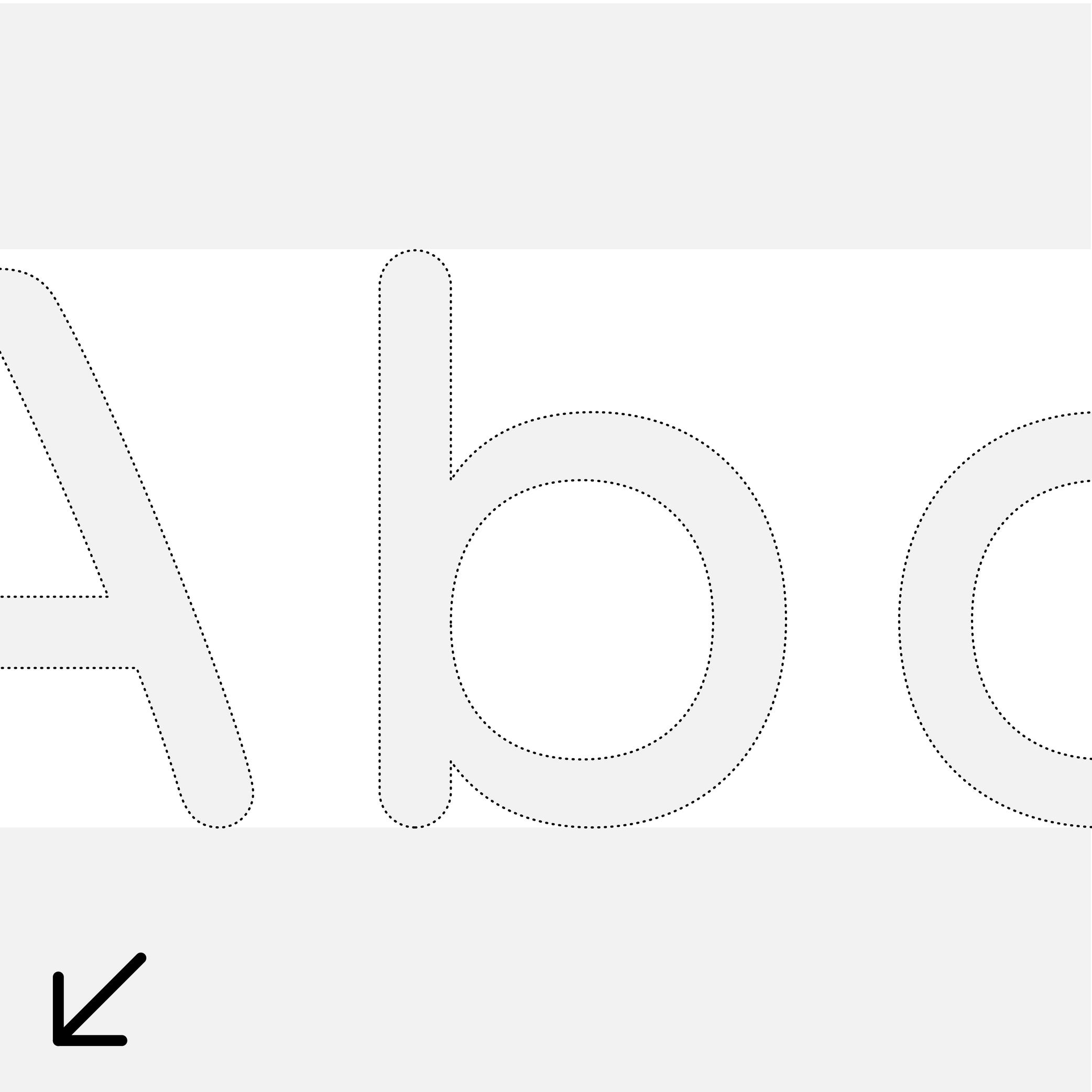
Sponsor Word of Type and feature your typeface in this card with a linked caption. Contact us for more information.
(Read More)A white space is any part of a glyph that is not of the glyph itself. They can be counters (inside), spaces, or negative space (outside).
Widow
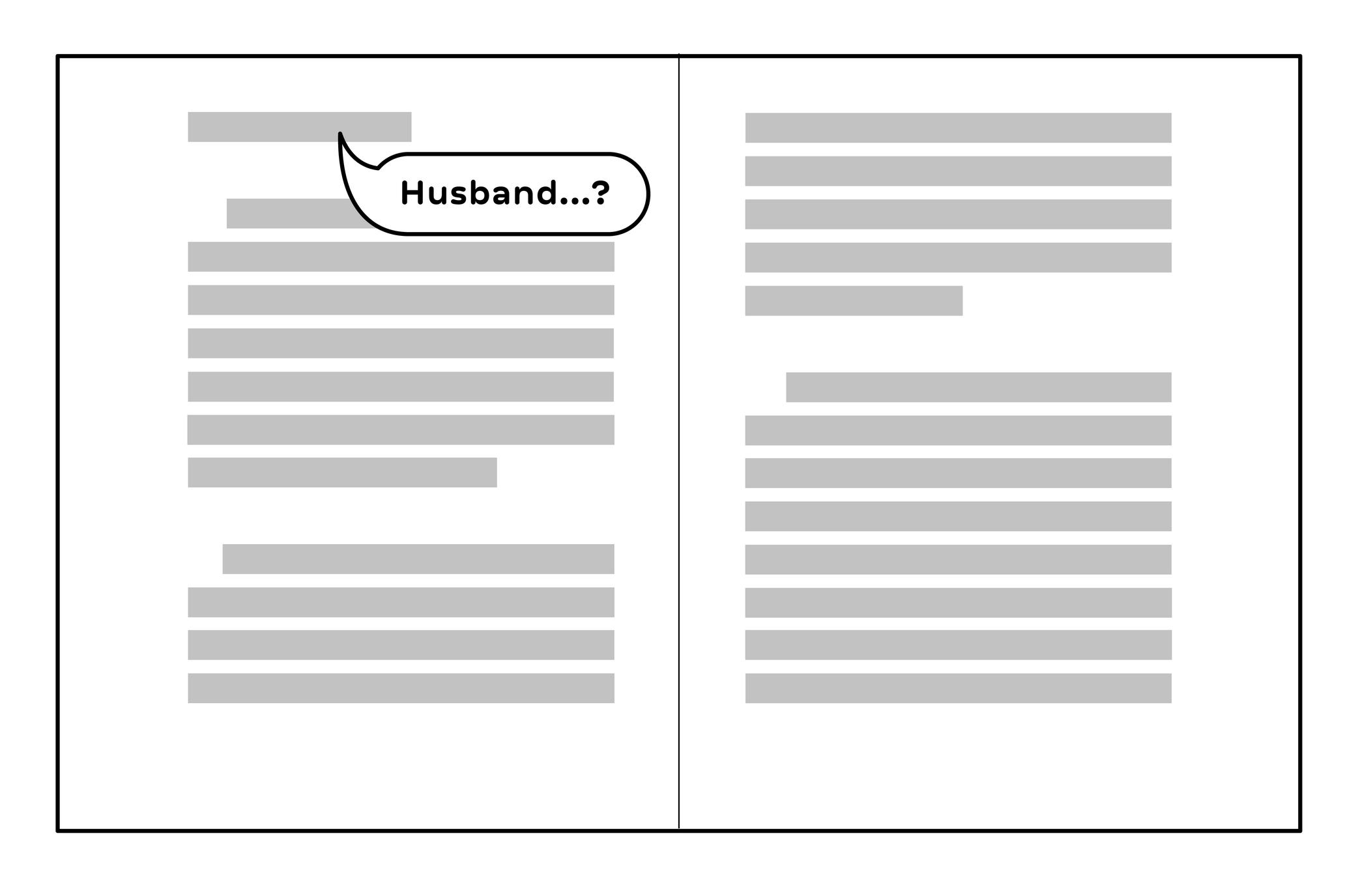
Illustration: Words of Type. Typeface in use: Knowledge Round, designed by Lisa Huang, 2024.
(Read More)Odd situations can happen when typesetting a text, making its overall appearance look sloppy.
When the last word or the last line of a paragraph appears alone at the beginning of a column or a page, it is called a widow.
Width
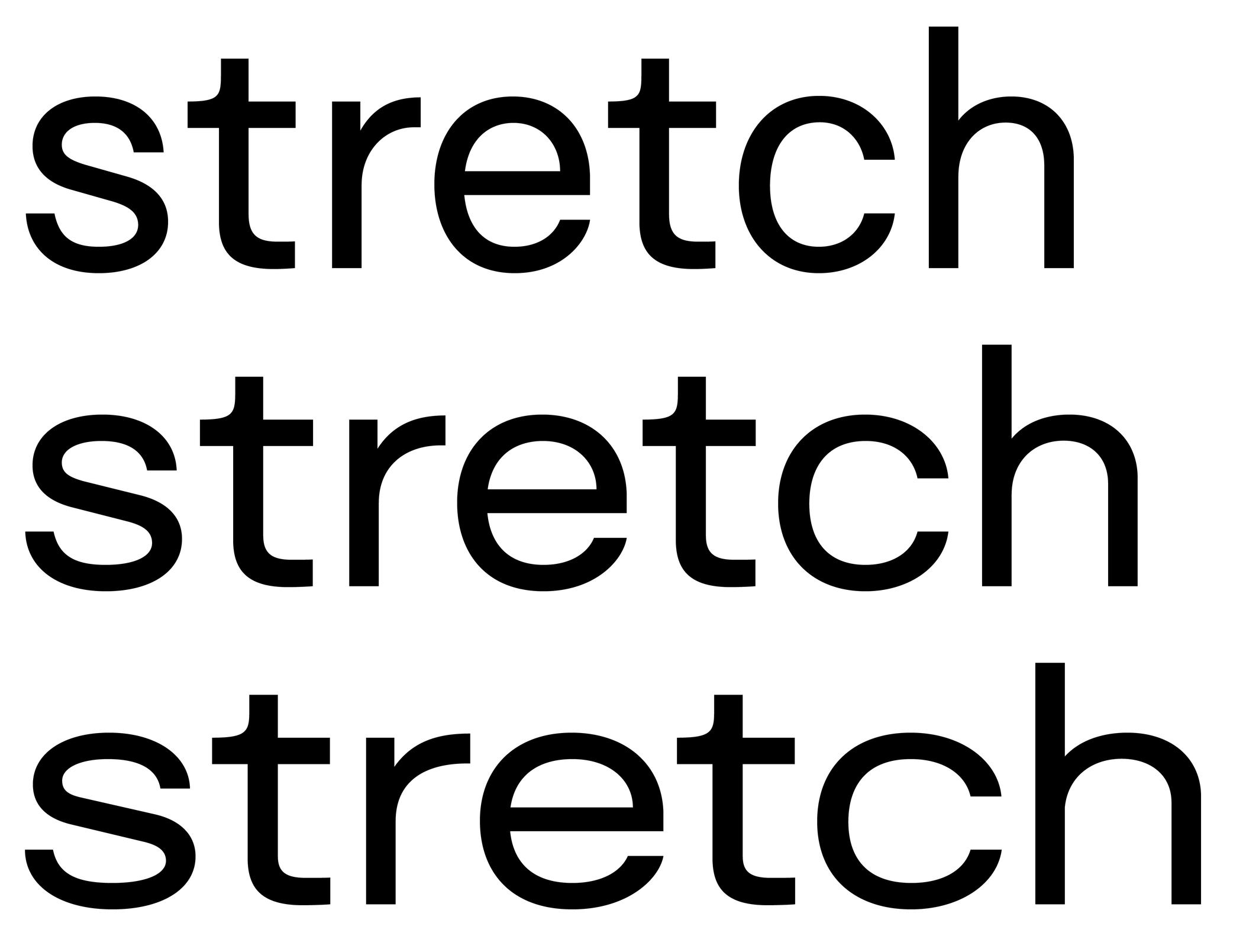
Sponsored by Blaze Type . Typeface in use: Surt , designed by Matthieu Salvaggio, 2020.
(Read More)Other than the width of individual glyphs and characters (the letter M is usually wider than I), there are also various widths for typeface styles that participate in its personality or help make a content set in a specific width to fit specific conditions.
Some common width styles are: Narrow, Condensed, Regular, Extended and Wide. They serve more as a way to identify each style within a typeface family, rather than standards to follow for all scripts, as they can be different from one script to another.
WOFF and WOFF2
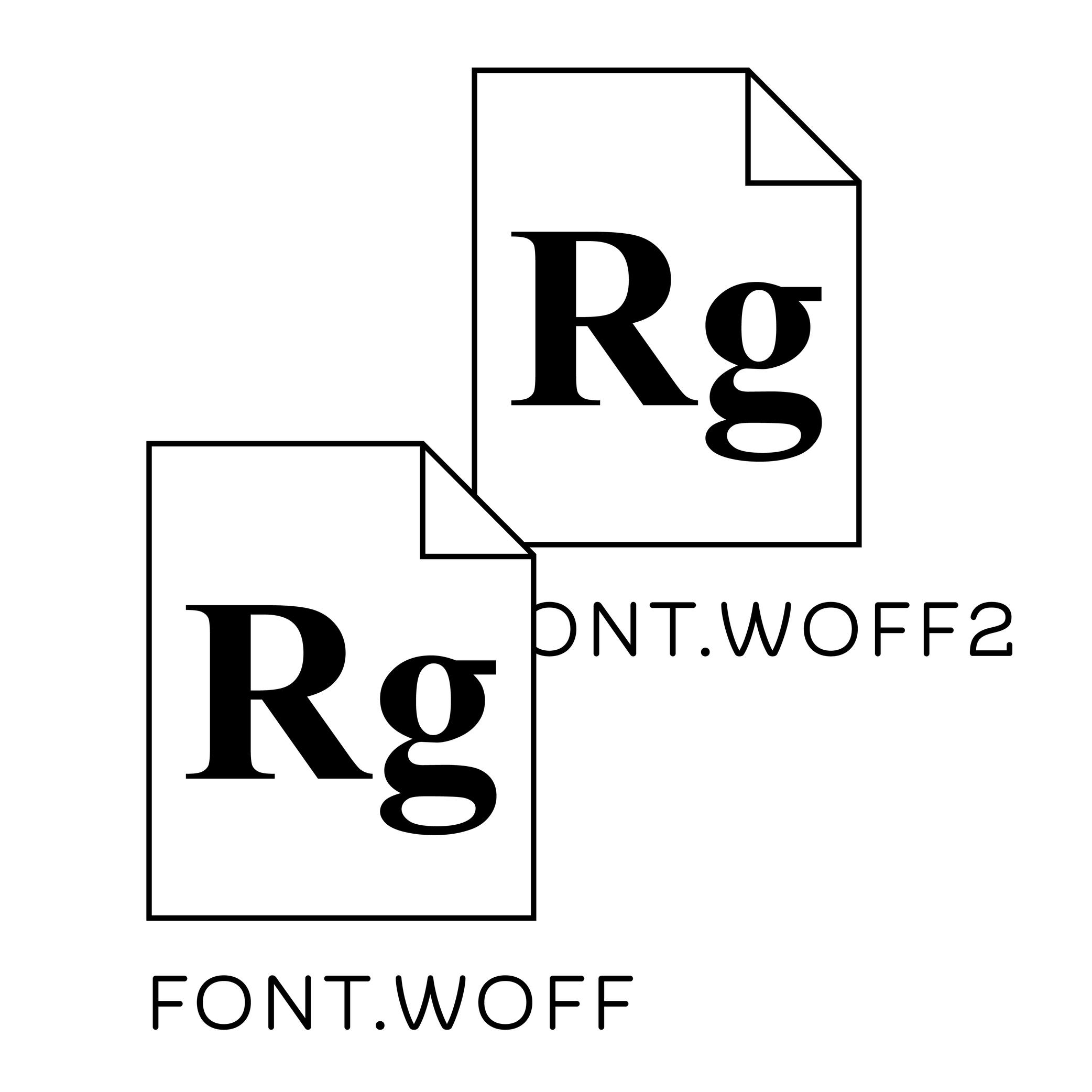
Illustration: Words of Type. Typeface in use: Knowledge Round, designed by Lisa Huang, 2024.
(Read More)WOFF and WOFF2 are two font formats that are compressed and specifically created for the web. In terms of size, they are much smaller than TrueType or OpenType font files, allowing a much faster loading speed. WOFF has been used since 2009, and is supported by most web browsers such as Mozilla’s Firefox.
WOFF2 (or WOFF 2.0) was created in 2022, supported by more browsers like Google’s Chrome.
x-Height
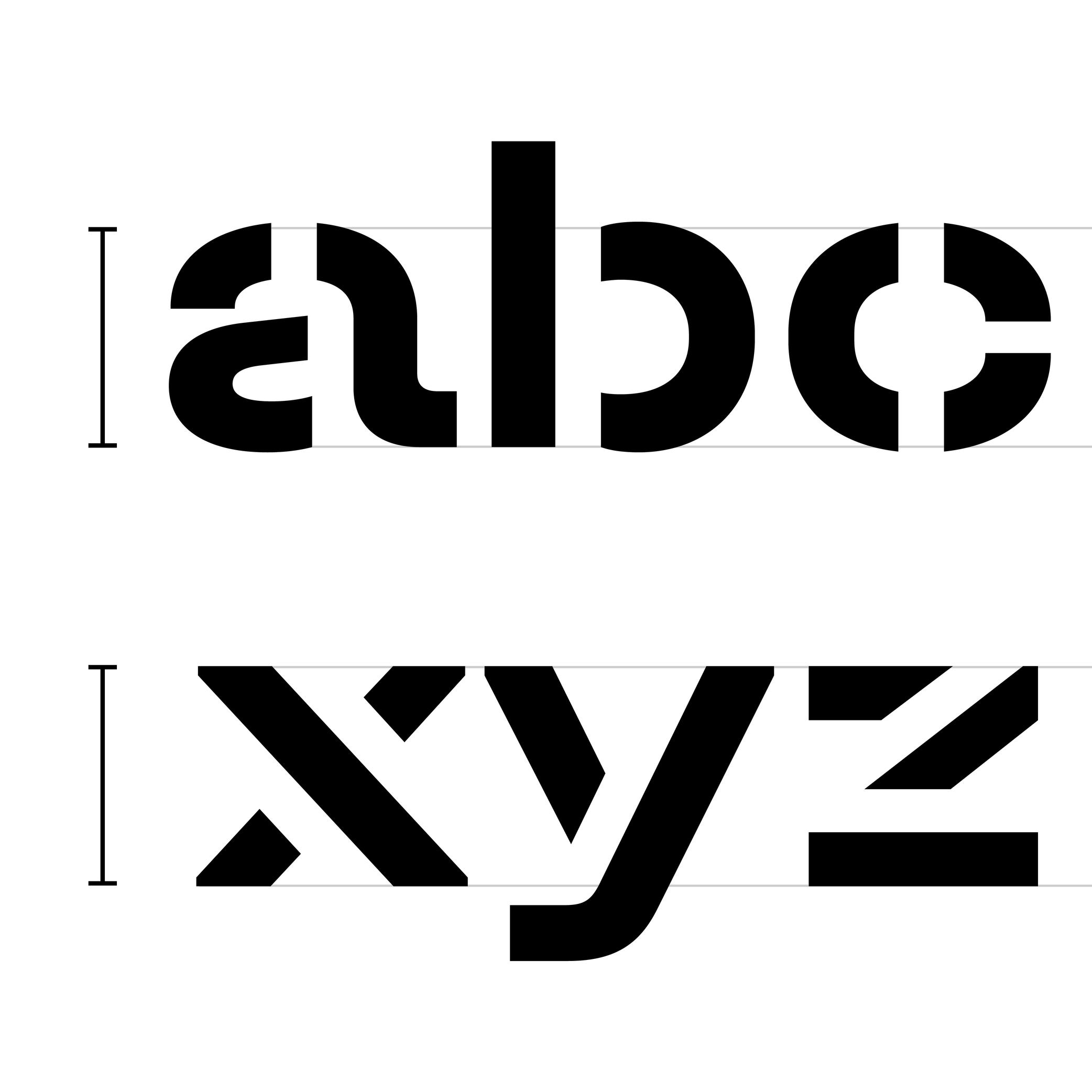
Sponsored by TypeMates . Typeface in use: Halvar Stencil Breitschrift , designed by Paul Eslage, Jakob Runge, Lisa Fischbach and Nils Thomsen-Haberman, 2019.
(Read More)The x-height is the guideline placed at the top of the Latin letter x.
It helps to align the other lowercase letters and to set the proportions with uppercase letters and the ascenders.
Because the letter x is the only lowercase letter without ascenders and horizontal tips at its top and bottom (it has no overshoots), it is the reference letter for lowercase height.